Seongsu, Seoul
One of Seoul’s most trendy neighborhoods, nicknamed the “Brooklyn of Seoul”.
Seongsu is a trendy part of Seoul that attracts the young and hip
Formerly an industrial area, it’s now becoming a hub for cafes and fashion
It’s called the “Brooklyn of Seoul”
With roughly 9.5 million people, almost 1/5 of the country’s population, Seoul is the primary destination in South Korea.
Like any large city, there are multiple areas that have a strong appeal to them, and one of Seoul’s is Seongsu due to its “newtro” (new + retro) vibe.
If doing a little bit of shopping and exploring the amazing local cafe culture sounds like it’s your thing, you’ll want to visit this area. I’ve been fortunate to visit Seoul a few times now, and Seongsu has become one of my favorite places in the city.
How to get there
The main station is Seongsu Station, and it’s accessible on Seoul Subway Line 2. The line also hits other popular stations such as Gangnam, Euljiro 3(sam)-ga, Euljiro 4(sa)-ga, Dongdaemun History & Culture Park and others.
Seongsu
One of the things that’s immediately noticeable when arriving at Seongsu is that it doesn’t feel like a place that was meant to become a popular destination.
The main station is on the smaller side, there aren’t many tall, modern buildings, and the streets themselves are far from being the most well-maintained in the city.
Seongsu is traditionally an industrial area known for making shoes and other goods. On the surface, this is how most of the area looks even now, but open the doors to a few of these buildings and you may be surprised.
On the other side of many of these industrial facades are restaurants and cafes. I’ve been to a couple of great ones (introduced near the bottom of this page), and they’re absolutely worth visiting. The interiors have been gutted and machinery and workers have been replaced with artistic interiors, delicious smells and people socializing.
Shopping is also a popular thing to do here as there are a few shopping complexes and boutiques.
I visited Seongsu in 2019 and then again in 2023, and its rise in popularity could be felt.
Here are a few places I’ve visted:
Seongsu Yeonbang
Once a chemical plant, the building was renovated and repurposed to become a shopping and dining complex. Most of the stores surround a courtyard which acts as the main entrance.
One of the notable stores is Thingool Market, a lifestyle shop on the first floor that carries everything from fashion accessories to home interior items and dishes. It’s a good one-stop shop if you’re looking to bring back something for yourself or a friend from your trip to Seoul.
LCDC
What is now a modern commercial complex was once an auto repair shop and shoe manufacturing company. It’s pretty difficult to see any traces of them, and what was probably a place full of blue collar workers seemed to be a gathering place for the hip and modern.
A cafe with outdoor seating in the courtyard is on the first floor with some trendy fashion and lifestyle shops upstairs. There’s also a open hangout area at the top, which is also directly accessible from a stairway that goes down to the street corner. This provided a decent spot to do some people watching down below.
Boutiques
Just going for a stroll around Seongsu will lead you to come across interesting boutiques and people.
Being that it’s a trendy neighborhood, you will find a lot of locals dressed up in the latest fashion and a bunch of shops to browse. Here are a few sights from Seongsu:
Cafe Onion
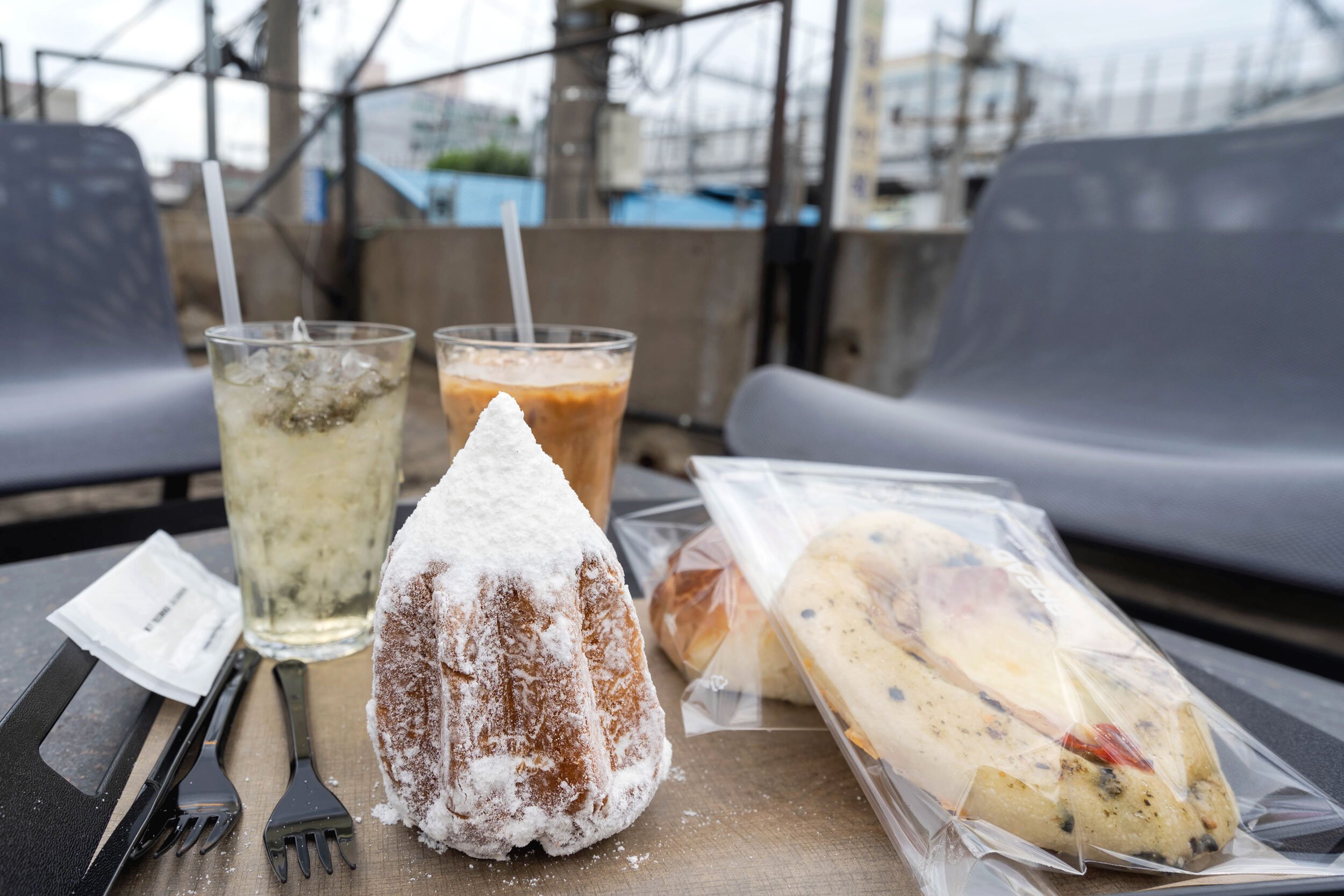
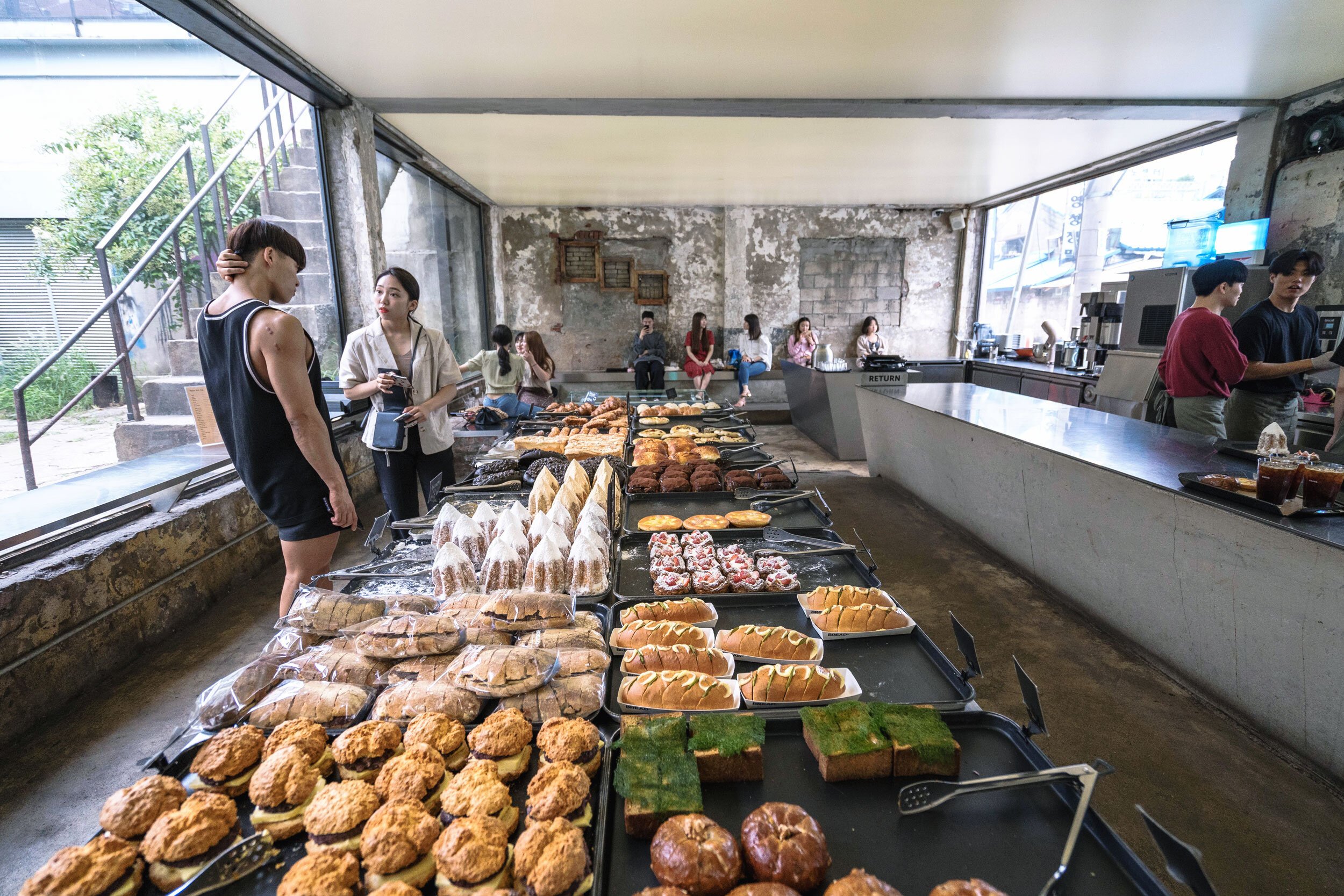
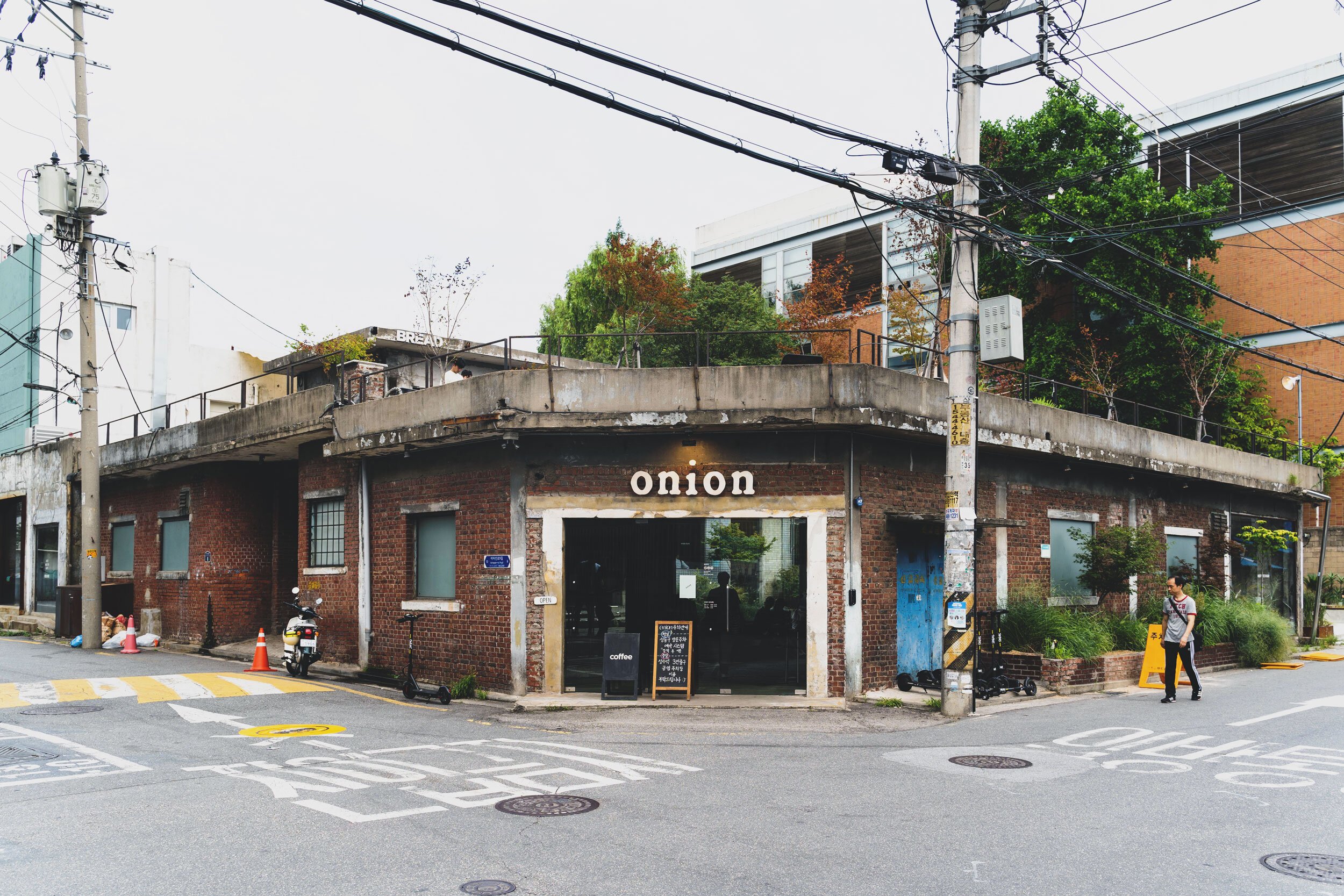

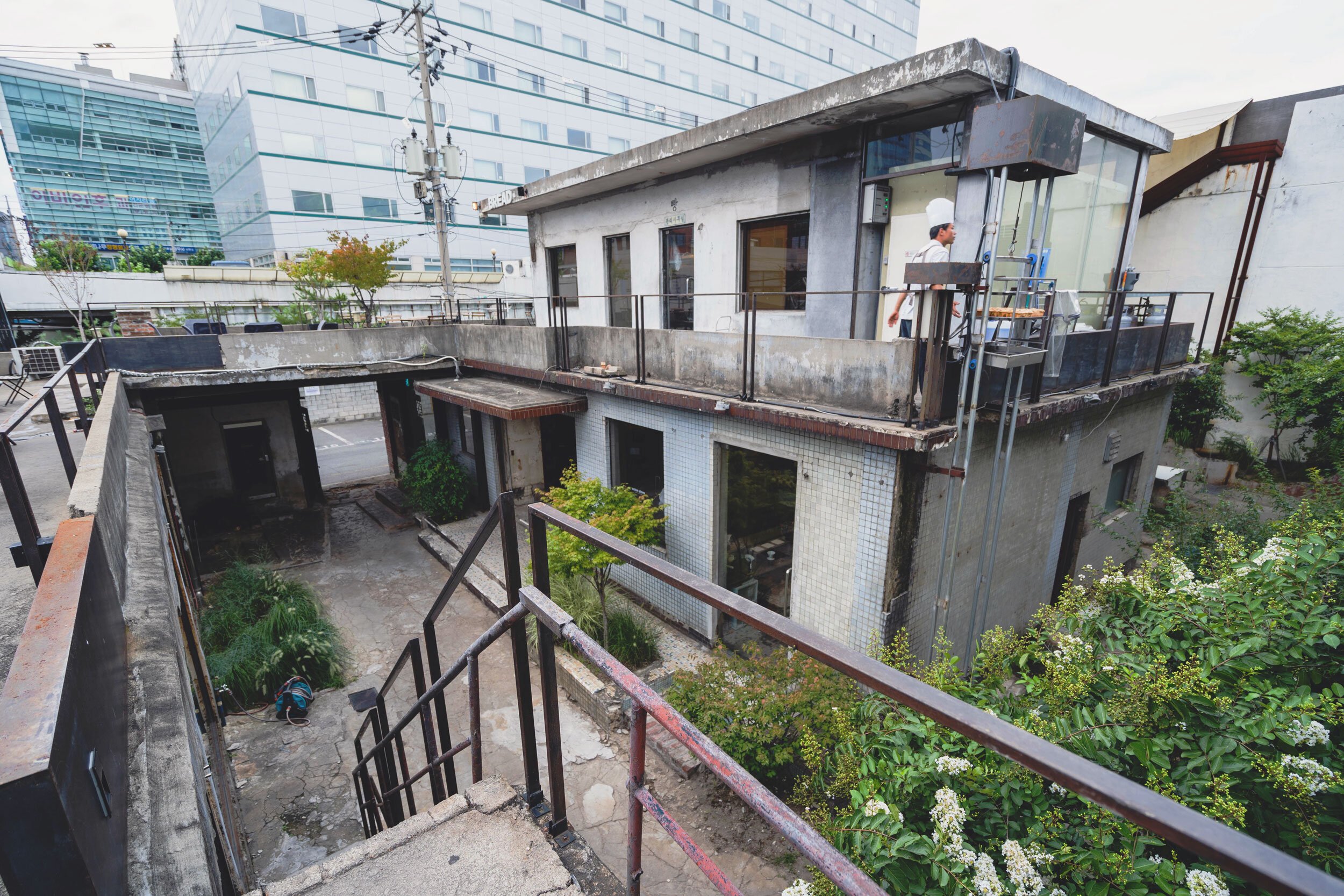
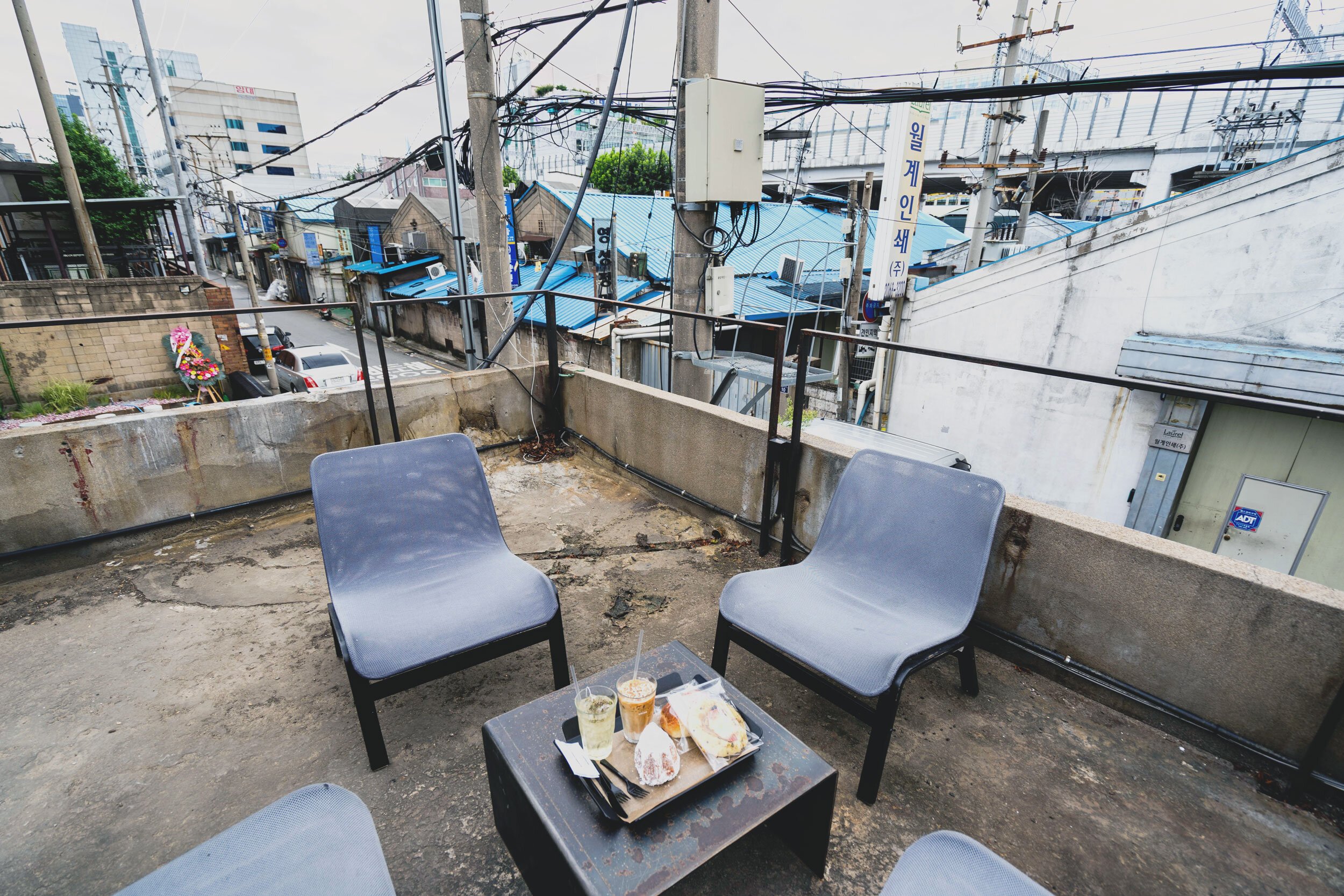
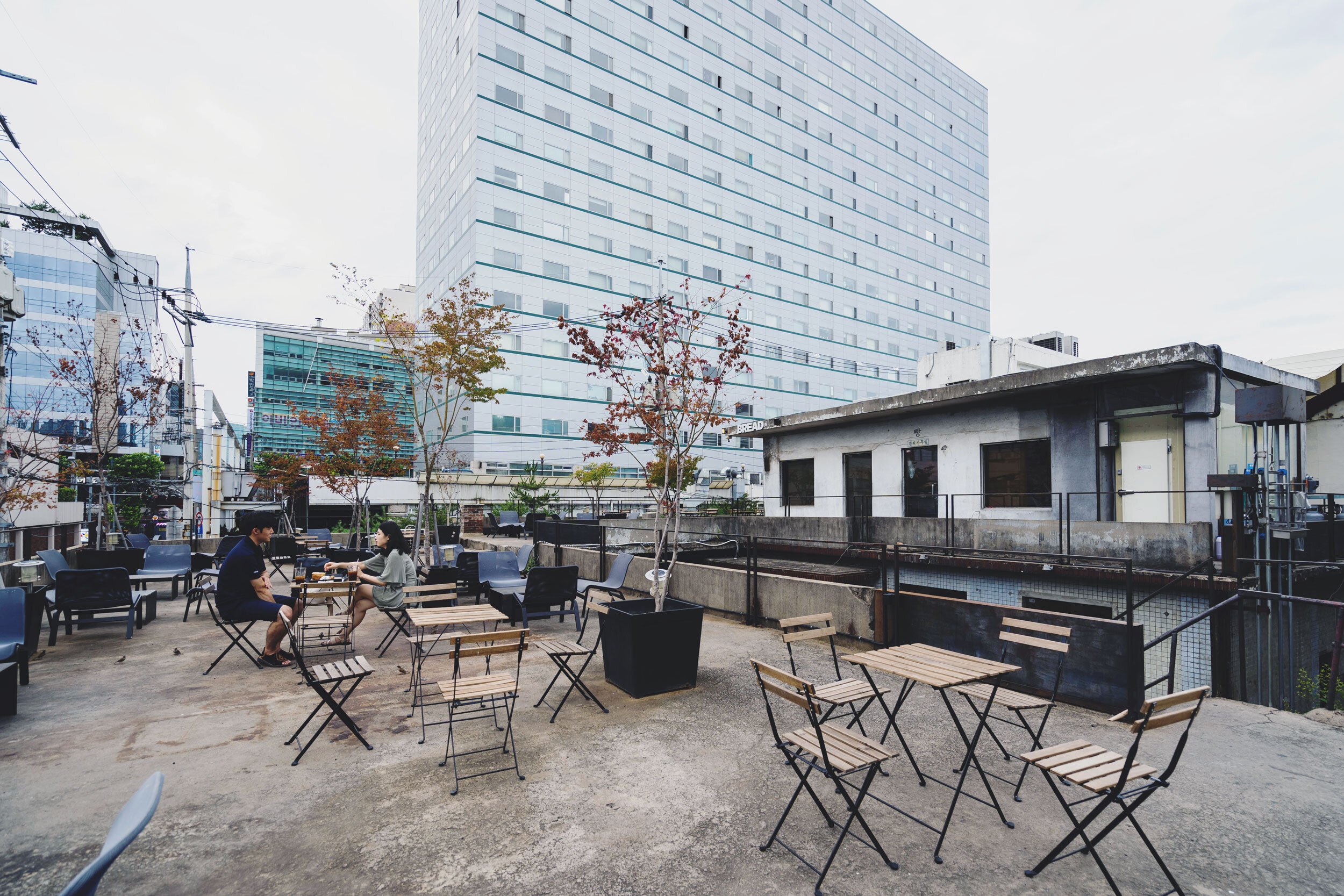
Possibly the hippest cafe chain in the city with locations that are converted old buildings. Their spot in Seongsu is in a gutted 1970s building that served as a former factory.
Cafe Onion Seongsu manages to balance old and new perfectly, and in doing this, makes for an extremely photogenic hang out. There are multiple seating areas, nooks and a rooftop as well. Their coffees and artisanal, homemade pastries and baked goods are tasty.
Great place to stop by when exploring the area and to take pictures.
Grandpa Factory
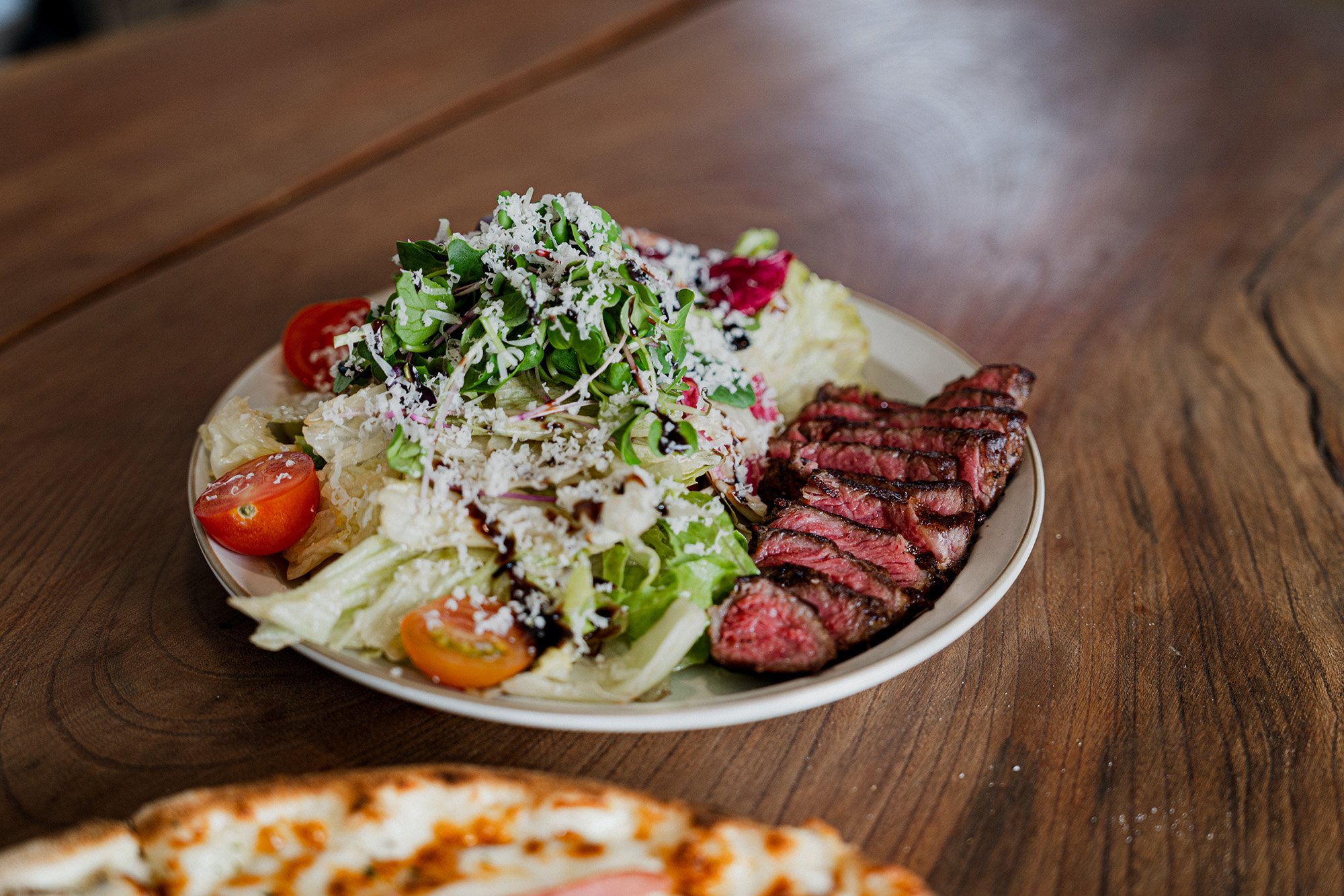
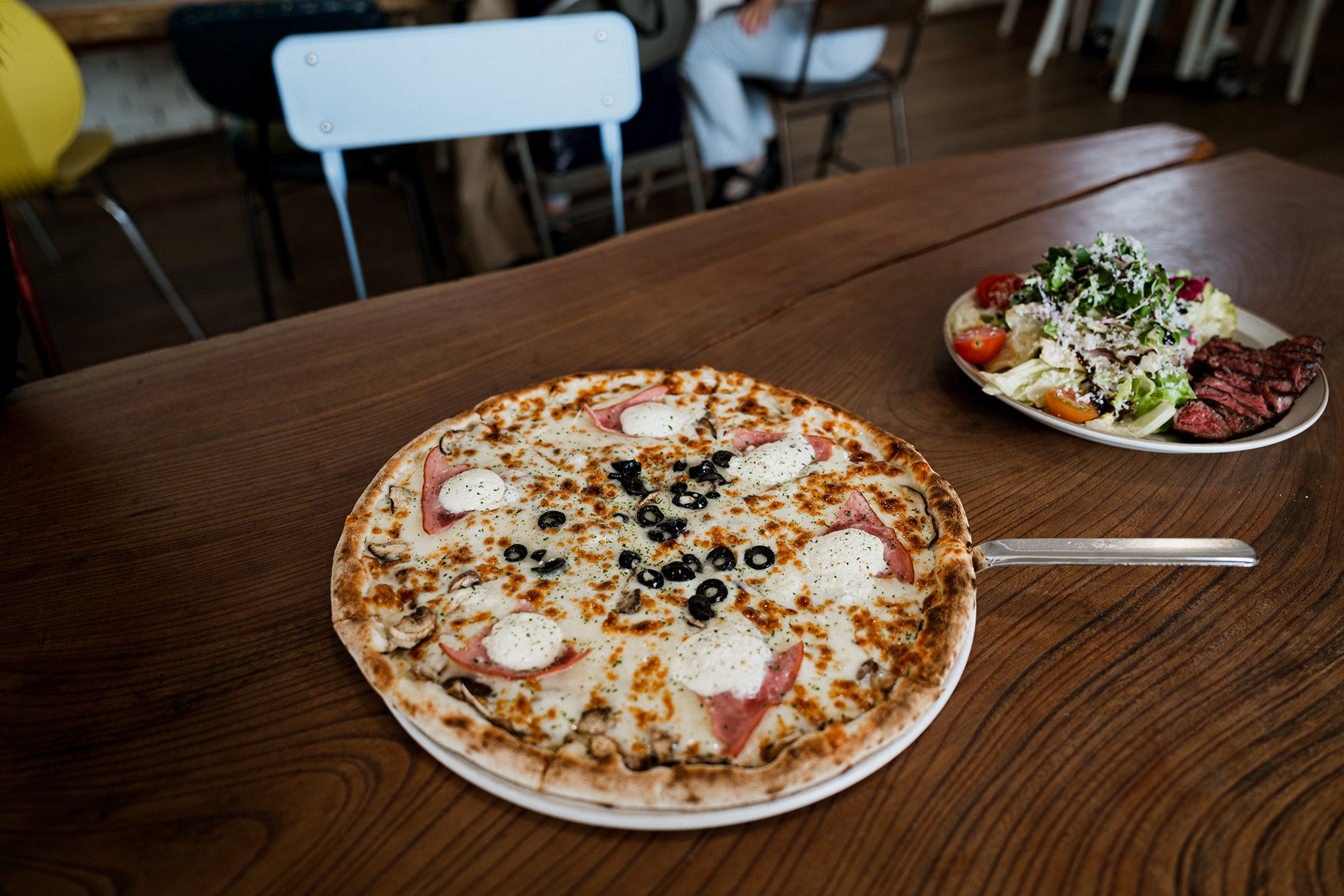
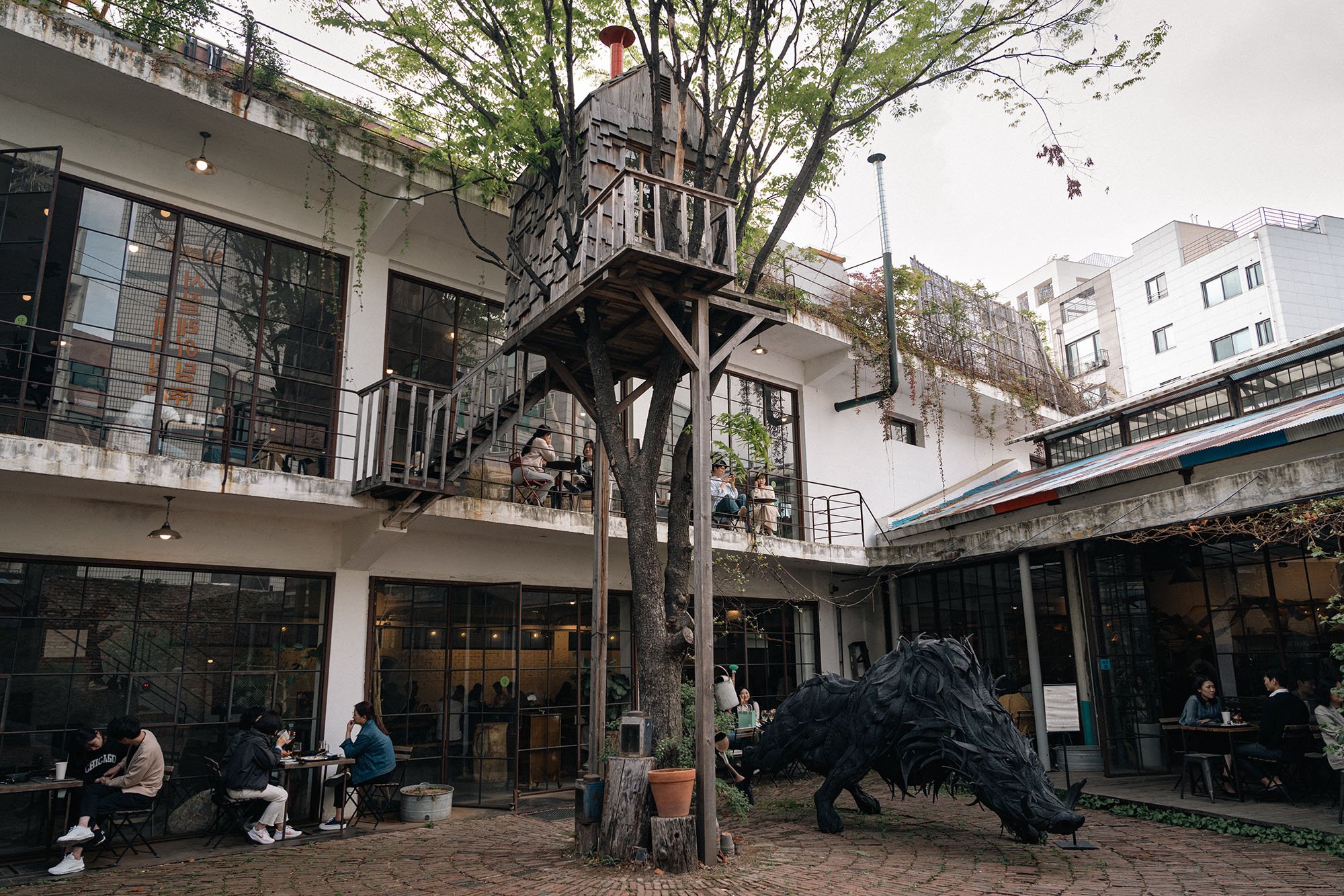

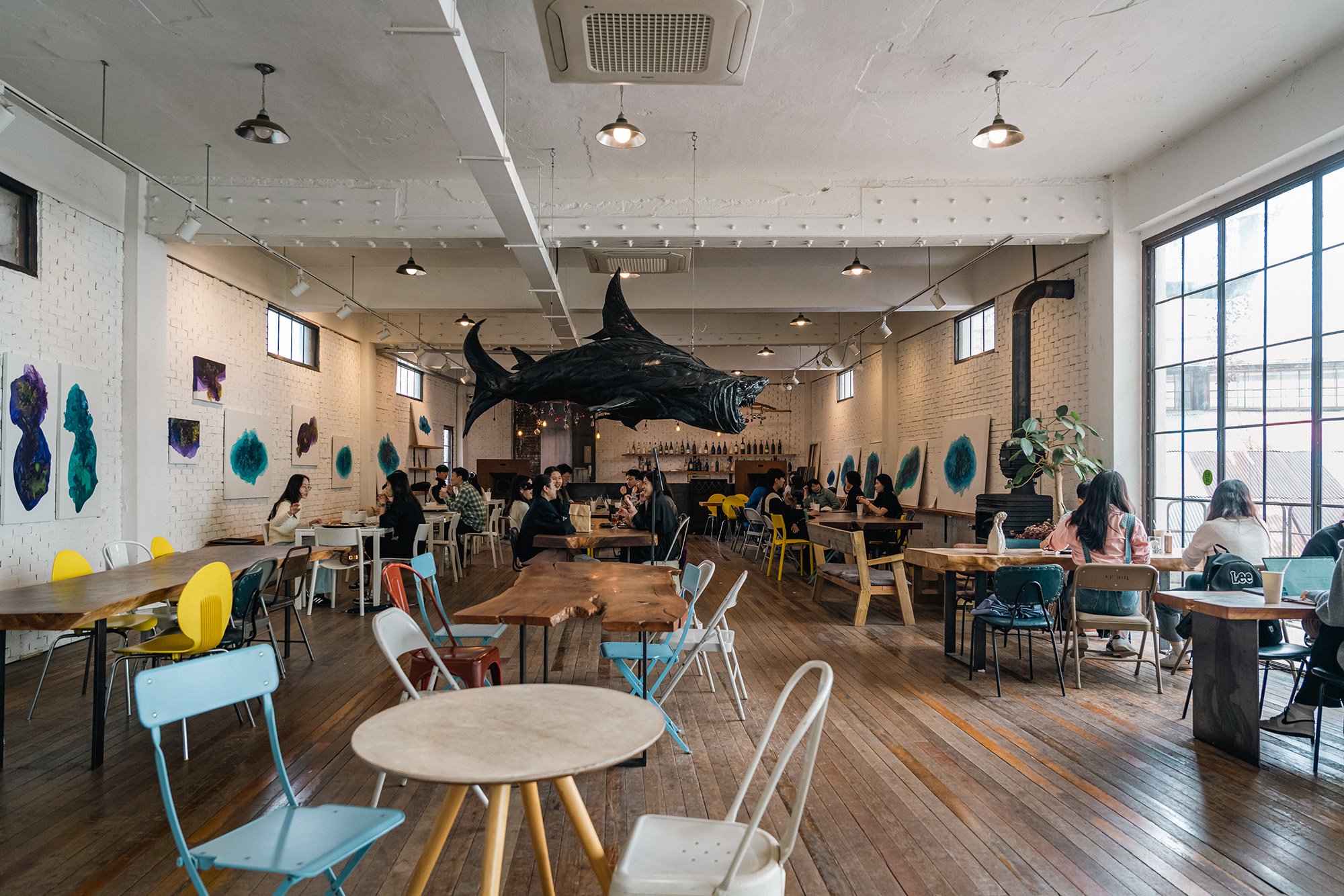
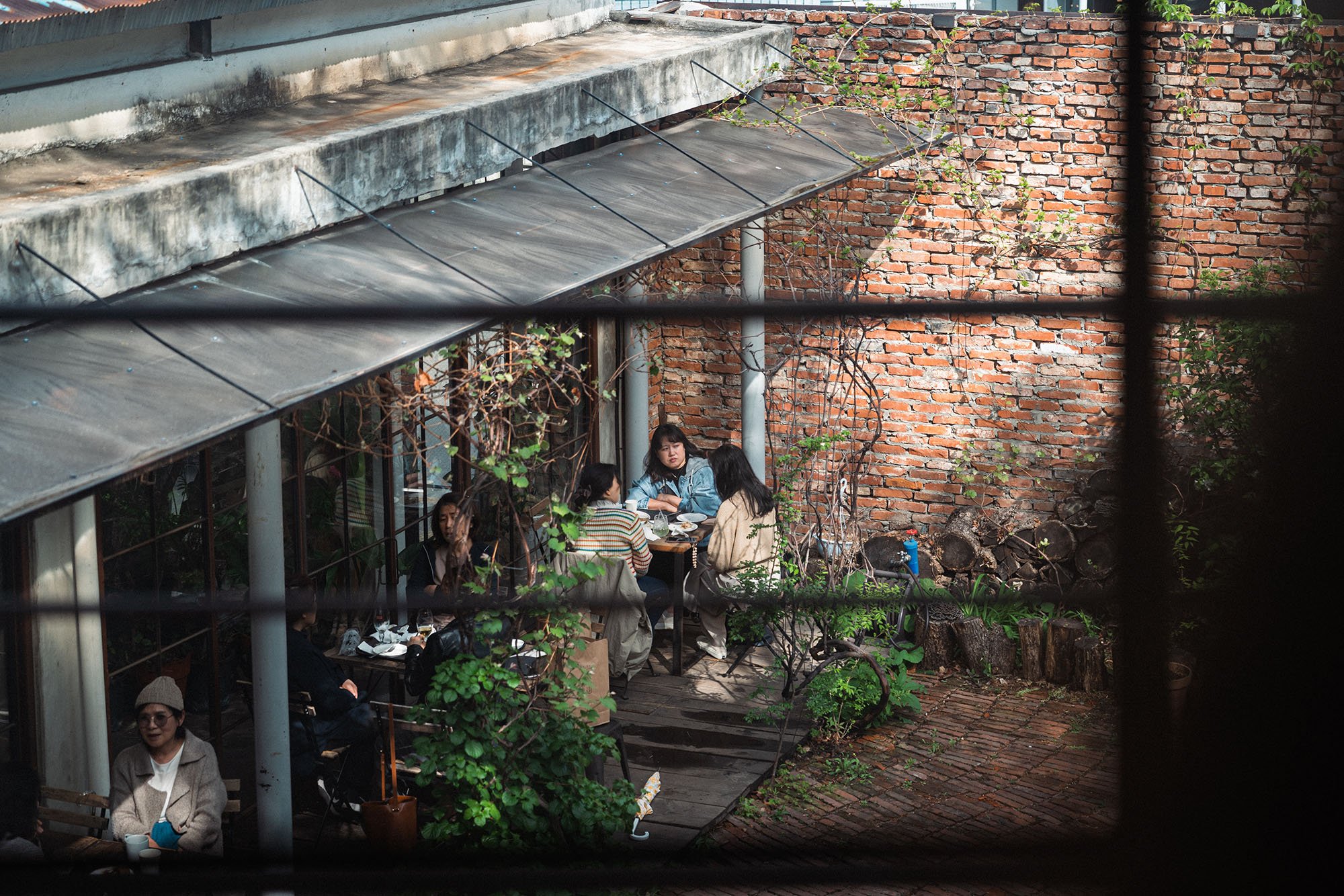
Built in an old factory, Grandpa Factory has three floors and outdoor seating so you can enjoy a meal, coffee or alcohol.
This cafe is known for its appearance in popular drama, “Vincenzo”, but its vibe and overall atmosphere does itself justice.
With ample seating inside and outside, including a literal treehouse space, Grandpa Factory not only has good food and drinks but it also showcases how old buildings can be successfully repurposed and utilized.
This was a great place that you’re sure to like.
KEEP IN TOUCH:
OTHER TRAVELS:
Izu: Tofuya Resort & Spa
Tofuya Resort & Spa Izu is a Japanese style ryokan with a history of 400 years. Spanning 29 acres, it’s an immersive, high end getaway that guests can escape to.
Alongside the Yoshina River in Izu, Shizuoka, is Tofuya, a Japanese style resort with a history that dates back 400 years. It’s often considered one of the top modern luxury ryokans in the Izu and Atami areas.
The resort now spans a vast area of about 29 acres, or 120,000 square meters. Because of this, it never feels crowded even if it’s fully booked. Despite covering such a big space, each part of the resort is clean and well maintained.
How to get there
The best way to get to the Izu Yoshina Onsen area, where the resort is located, is by car. Resort staff will greet you at the driveway and valet park your car for you.
If you’re traveling by train, the closest station is Shuzenji Station. From there, a taxi would be best.
The experience at Tofuya Resort & Spa Izu is almost like being immersed in an Edo Period Japanese town. The buildings are mixed but tend to be on the more “traditional” side, and there are many open spaces to walk in.
At check-in, the staff will let you choose a yukata of your choice. Unlike some other ryokans, there are multiple designs that range from simple to colorfully designed ones.
Lounge
The lounge, located on the Taishokan-Hosen building’s first floor, spreads across a few rooms.
In the center near the entrance is a counter of snacks, soft drinks, beer and wine that’s included in your stay. Guests can take what they want, head over to a seat and relax.
Rooms
The room we stayed in was a villa suite type that was near the Yoshina River. Located inside of a kurashiki style Japanese warehouse building, the room was 2 floors and featured 3 beds (1 in the main living area, 2 upstairs). It totaled about 72㎡ and is meant for 2-4 people.
There are outdoor spaces both on the first floor as well as a private onsen bath tub and balcony on the second floor.
For this room, prices will depend on the season but is like to start at around 40,000 JPY per person, including meals.
Toiletries such as toothbrushes, combs, razor etc. are provided, as well as free soft drinks, tea and capsule coffee.
The Hot Springs
There are multiple pubic onsen hot spring baths at Tofuya Resort & Spa. The two that I used were set alongside the Yoshina River.
One was fully outdoors, including the washing area, and had a more natural feel to it. The bath itself was big, providing a lot of personal space.
The other had a Japanese style to it and was open to the outdoors but enclosed with a roof.
These baths alternate between men and women each day, so guests can try out both of them during your stay.
Dining
Like most ryokan stays, Japanese kaiseki meals were included. Tofuya Resort & Spa’s meals are served in both a dining hall as well as the second floor of the Taishokan-Hosen building, depending on which meal type you choose. For breakfast and dinner, there are Japanese and Western meal options.
The Japanese-style dinner was amazing. We opted to get the upgraded version, and it included dishes such as a sushi and sashimi platter, kinmedai (a type of red snapper), Wagyu yakiniku and a lot more. It was incredibly filling and delicious.
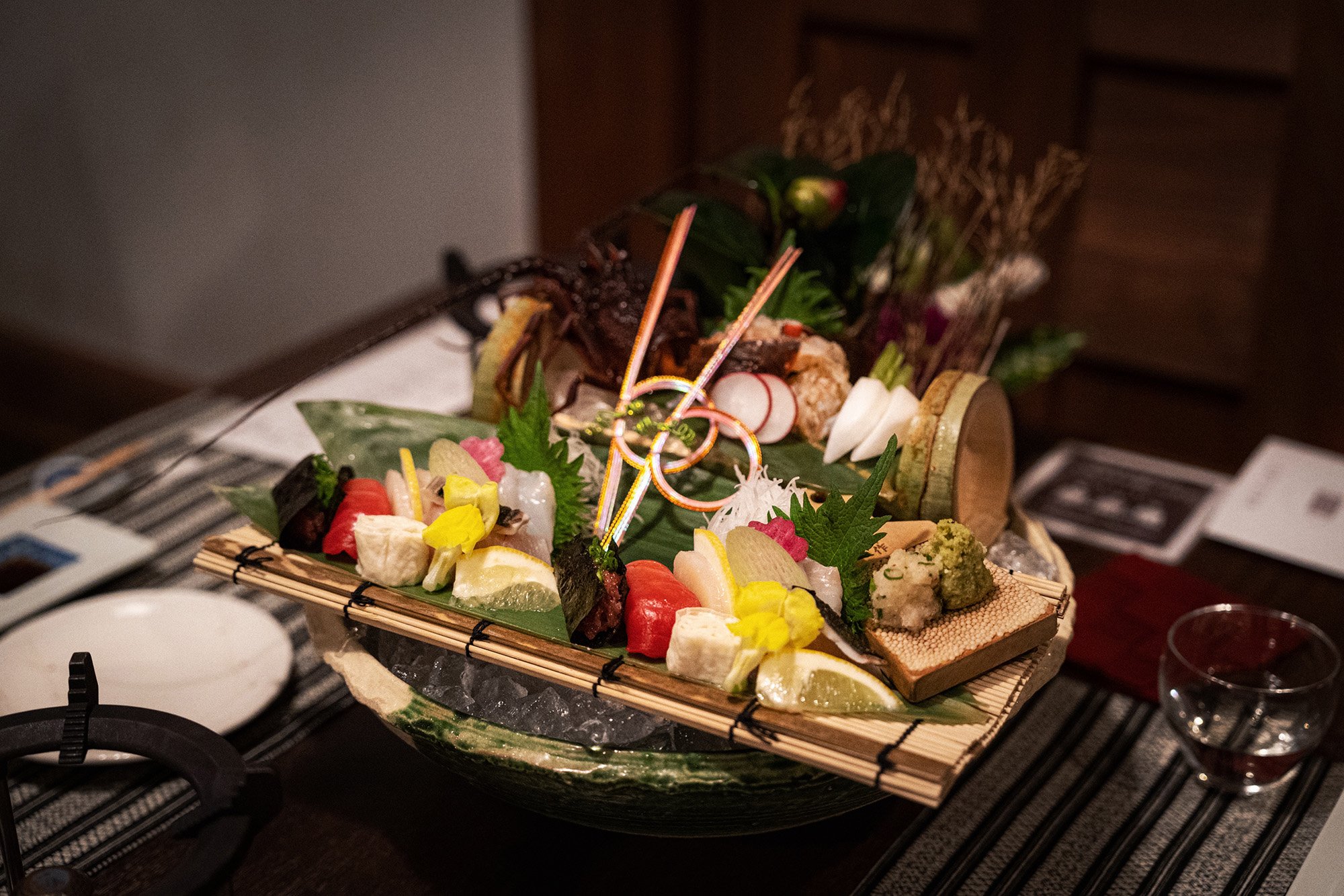


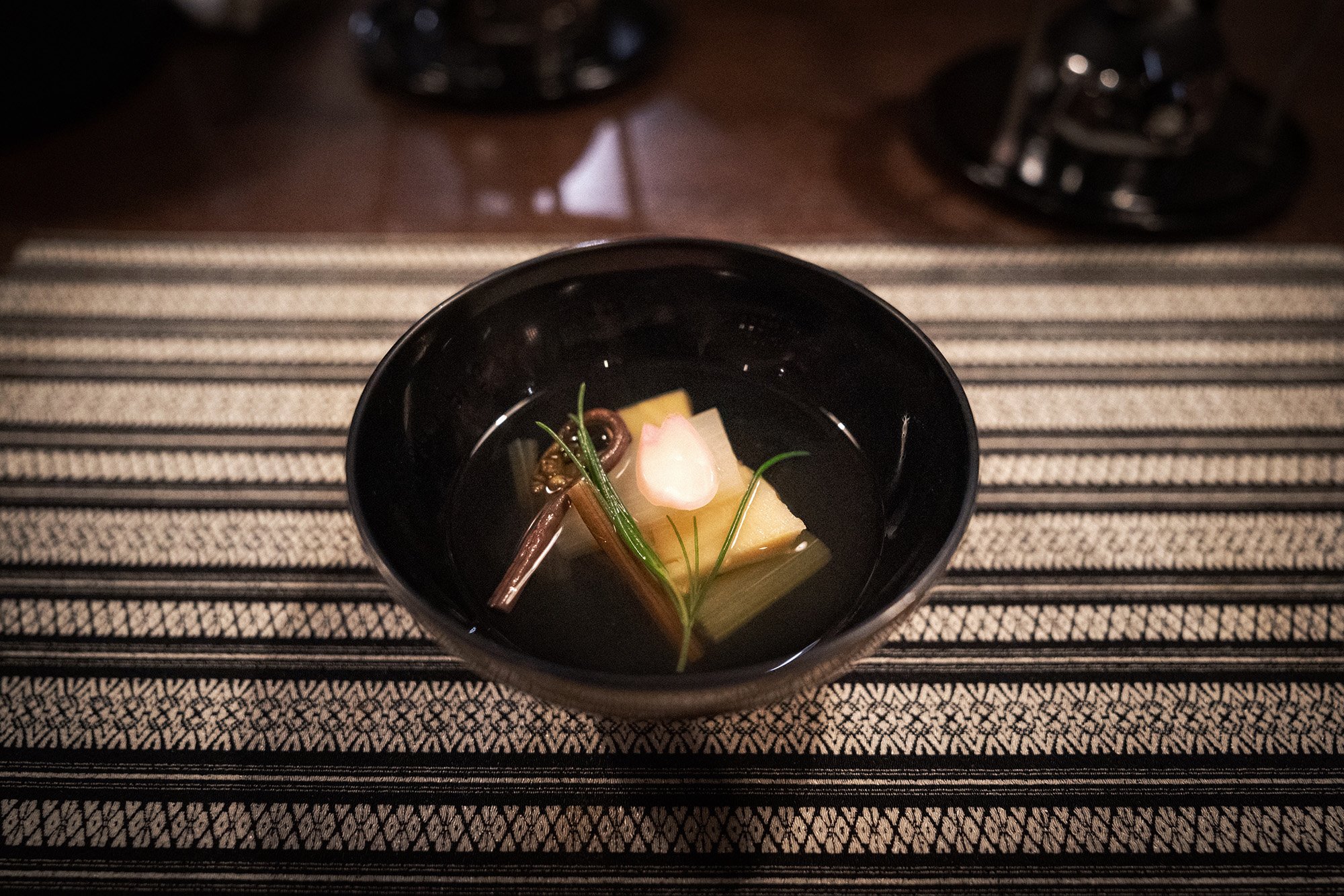
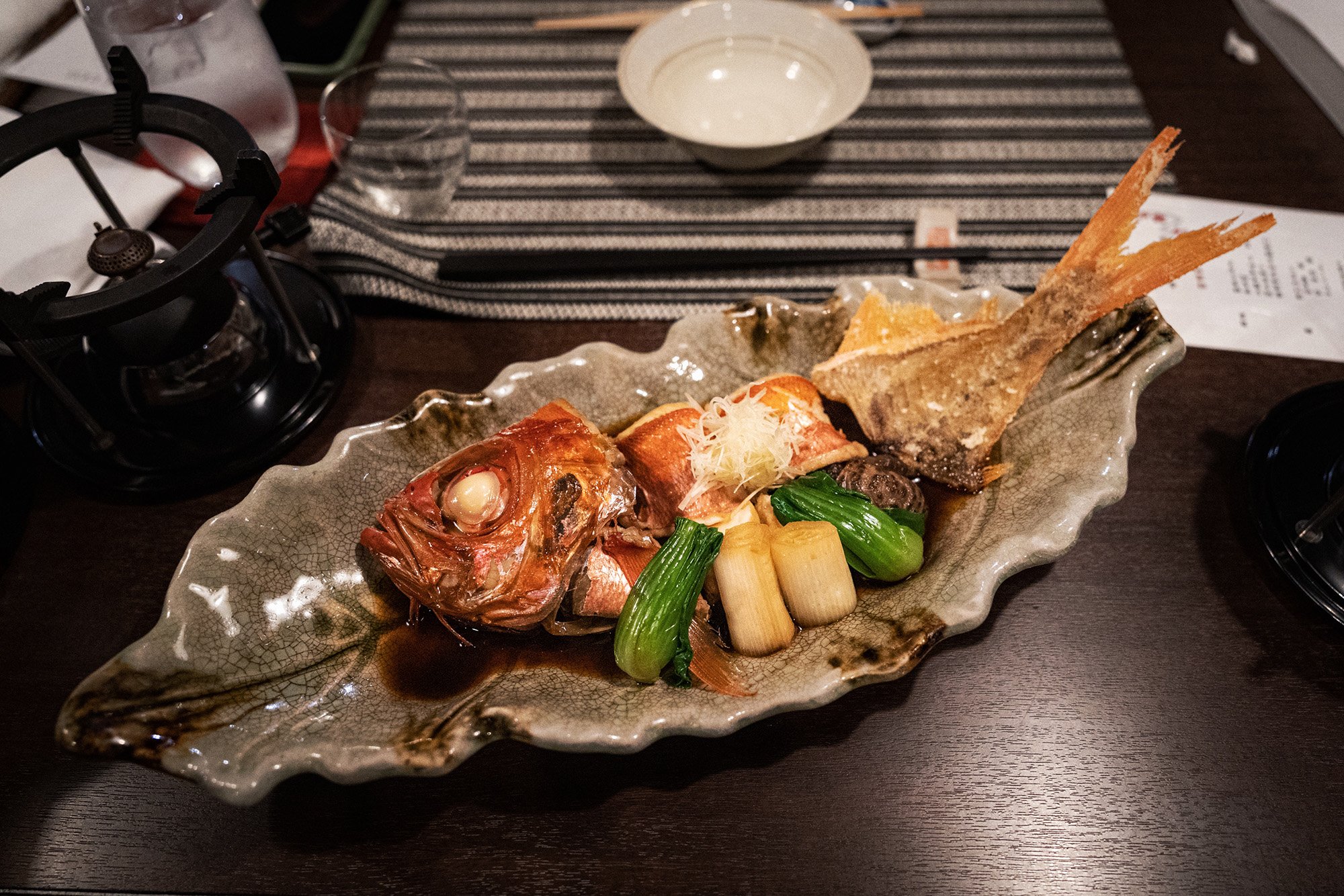
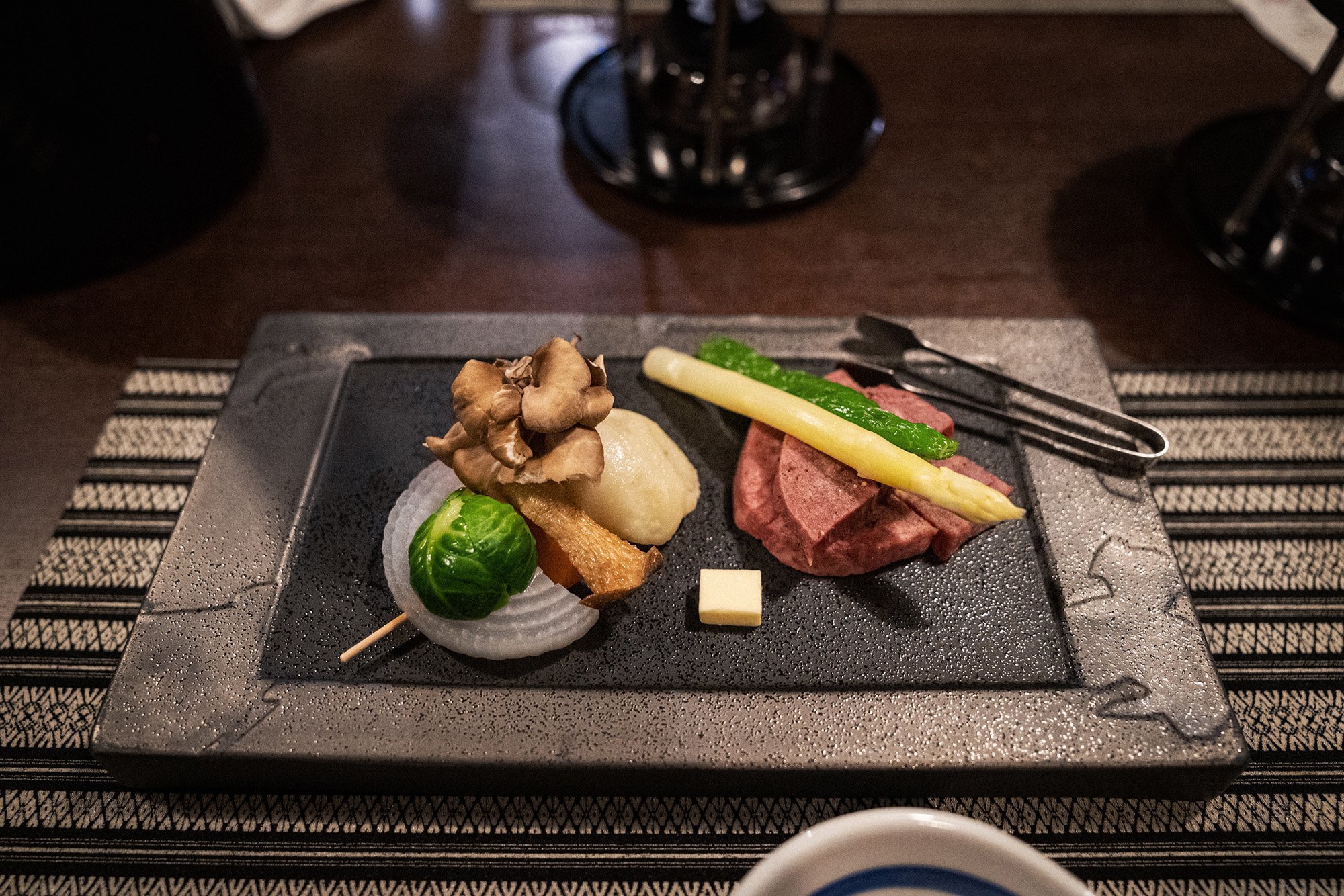
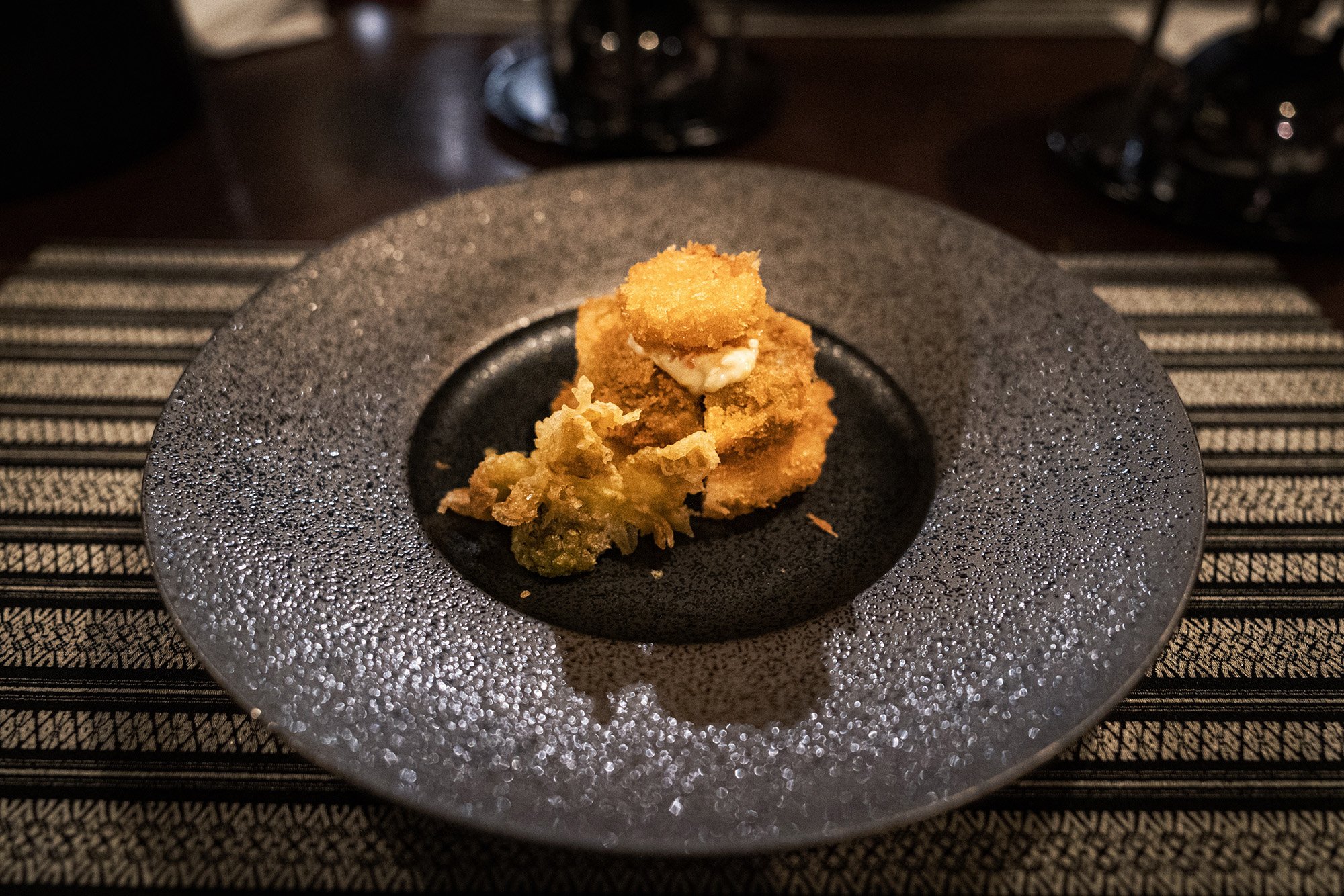
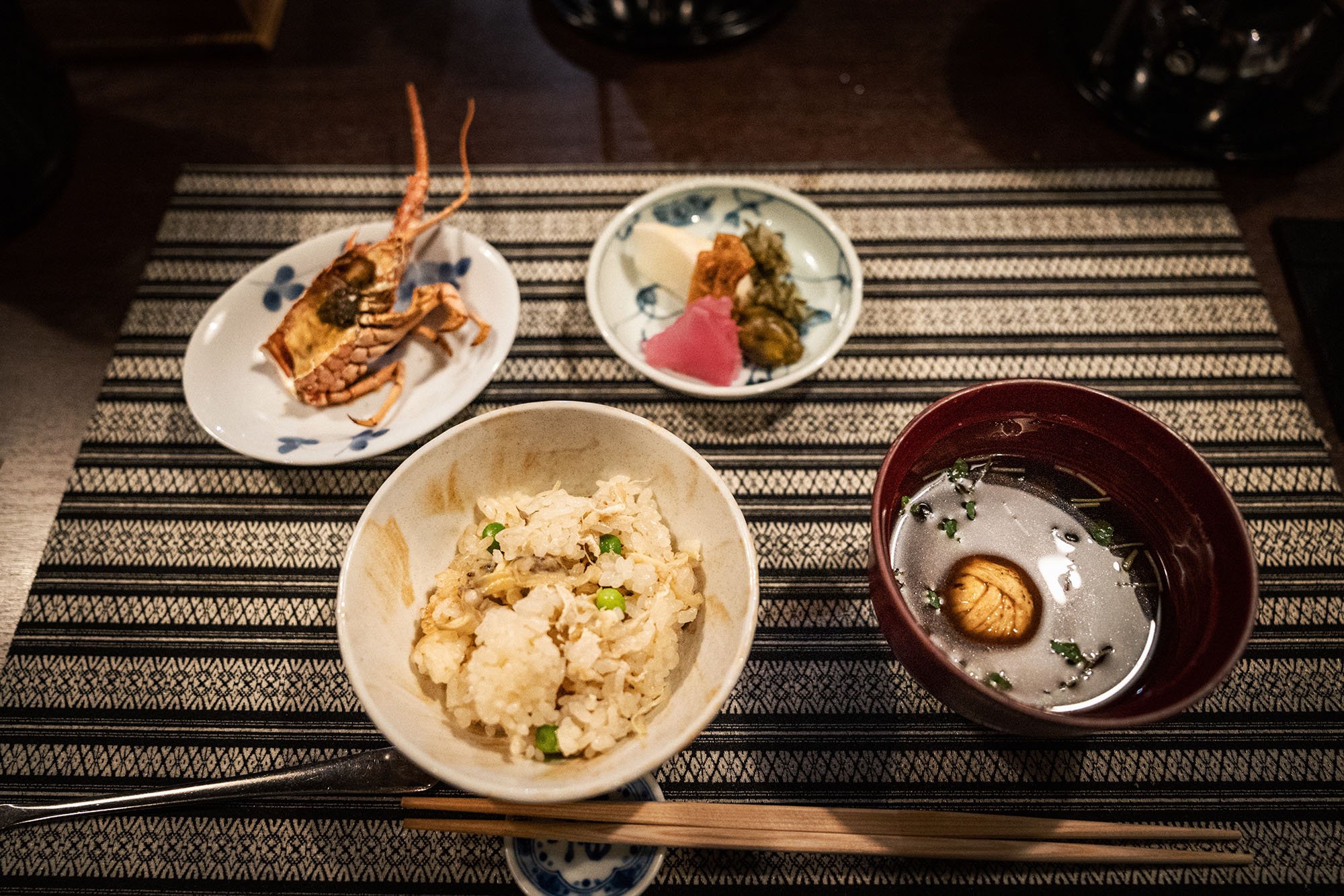

We chose to go for the Western breakfast to experience eating in the Taishokan-Hosen building. While I don’t have experience eating the Japanese breakfast here, I think that’d be the better option for most.
The main attraction of the Western breakfast is that it features bread from their popular bakery, however we didn’t feel that it was that good.
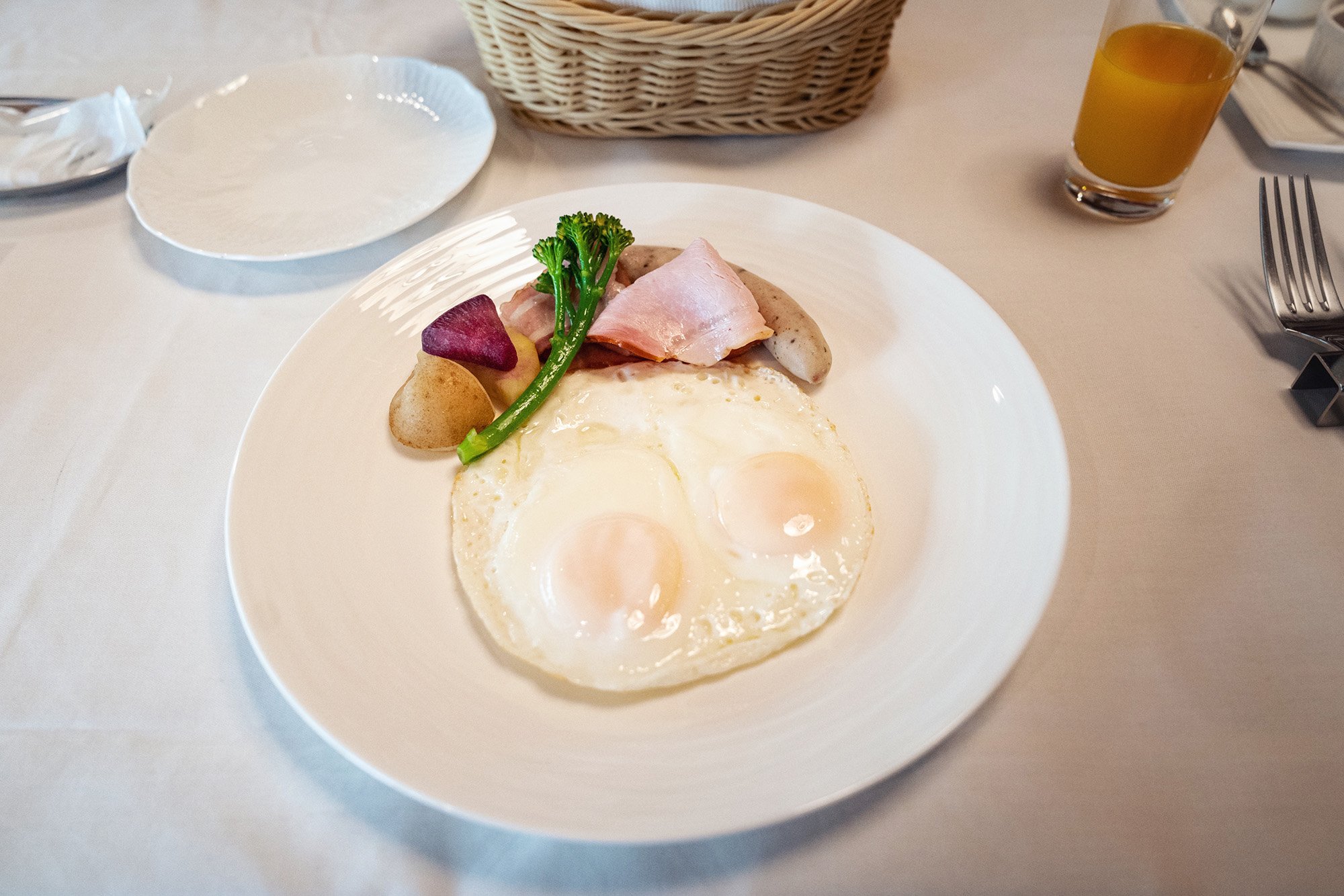
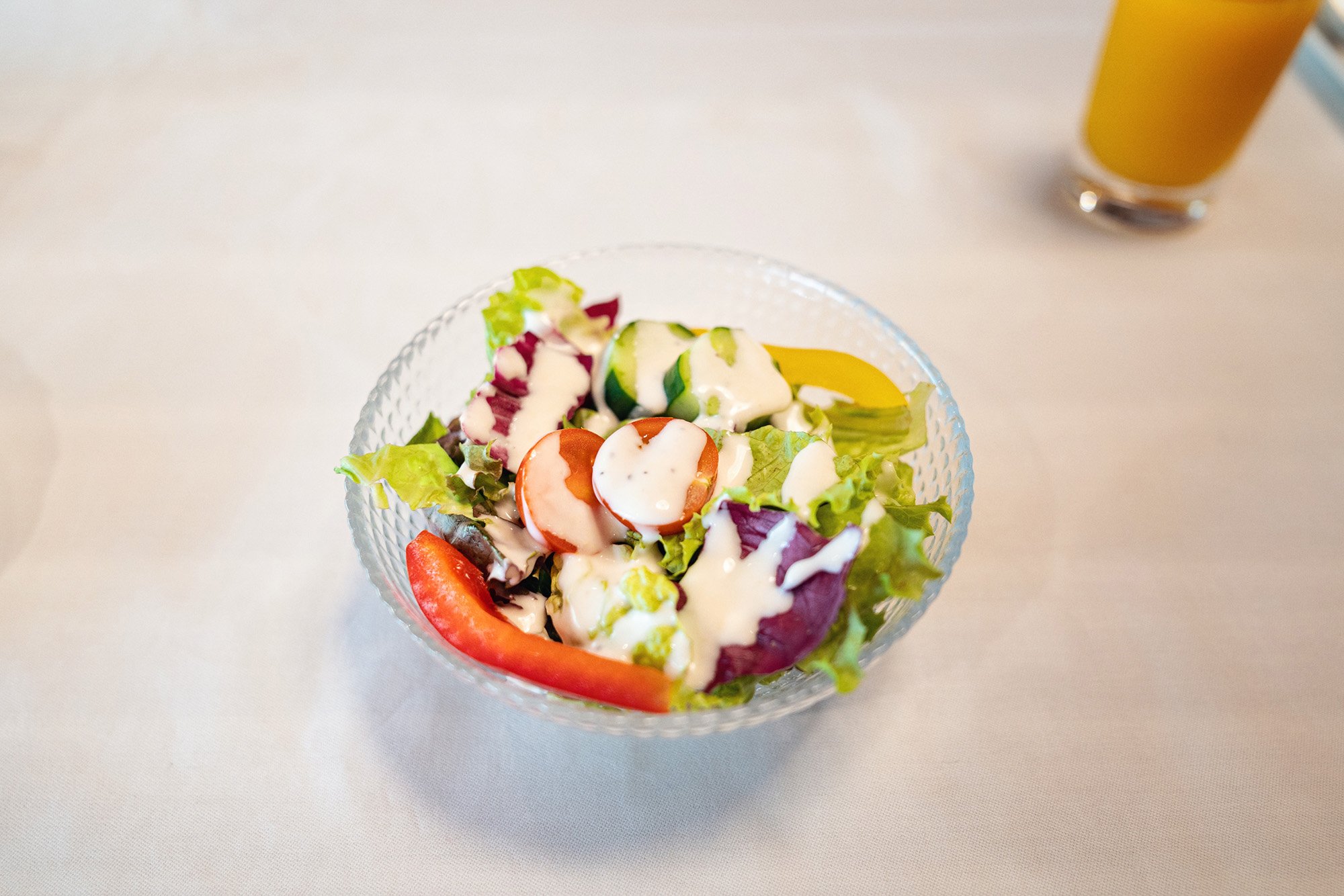
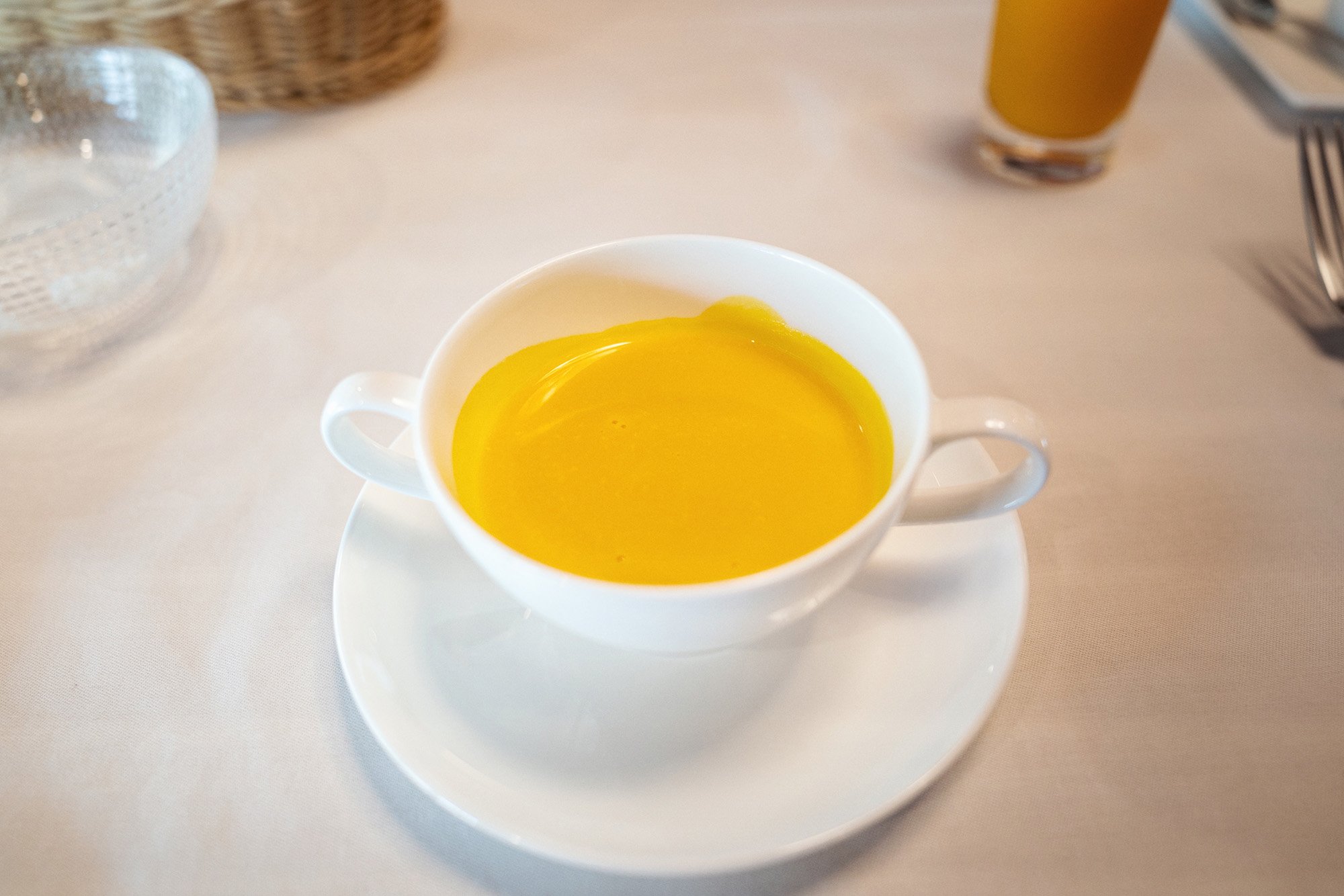

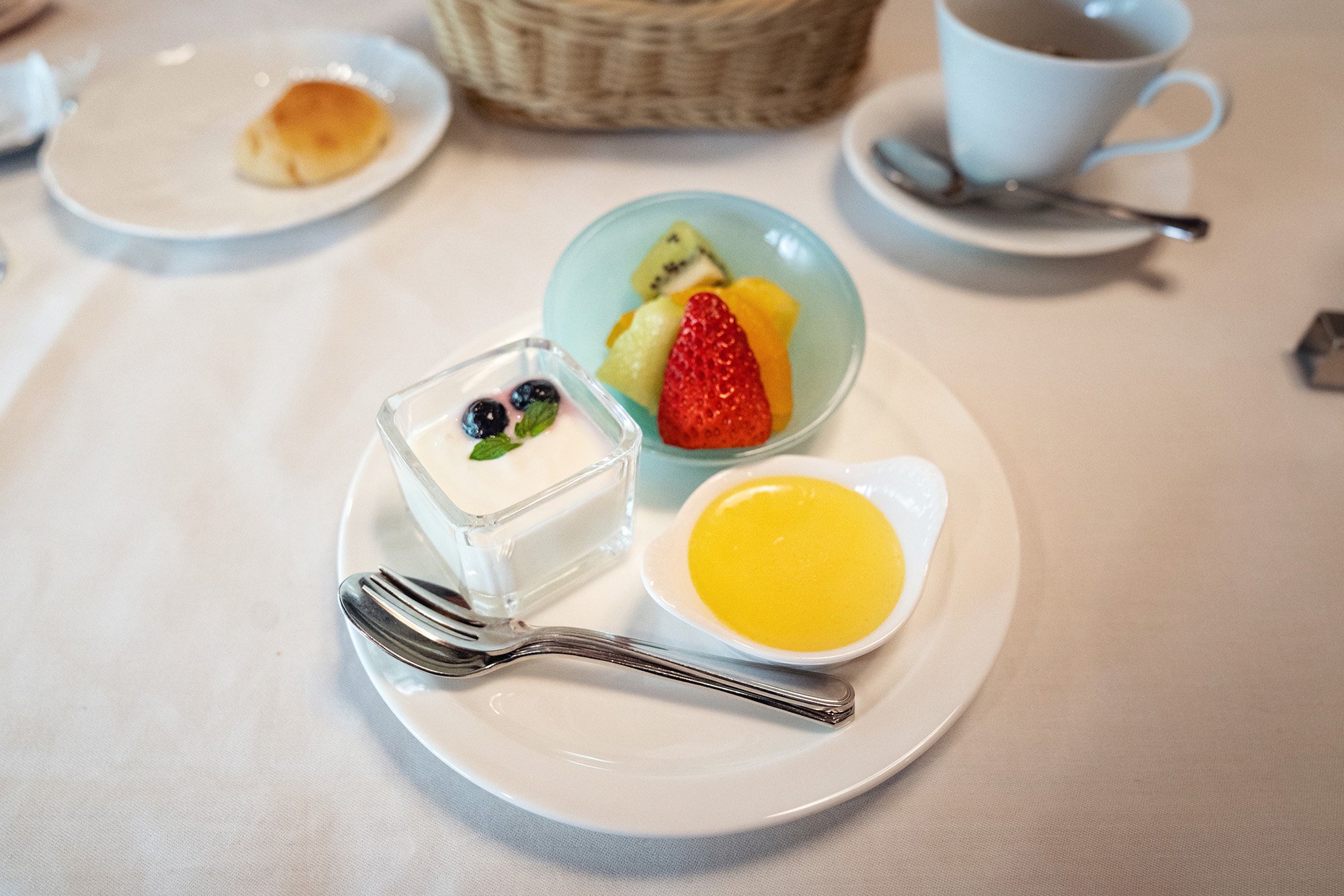
Overall, our stay at Tofuya Resort & Spa Izu was great. It’s a real gem on the Izu peninsula and a resort that I’d recommend to anybody looking to getaway and relax in a luxurious Japanese environment.
Keep in touch:
More Travels:
Tokyo: Travel Tips
A few tips about traveling to Tokyo that I’ve learned during my time living there for 8 years.
I’ve traveled to and from Tokyo quite a bit having lived there for 8 years. During that time, I’ve learned a few things about traveling to Tokyo, so I’ve decided to share them with you.
How to pack
Tokyo, and Japan as a whole, is not a backpacking place, so plan on using a suitcase.
You’ll want to pack as small as possible because things tend to be tight like some European cities but way way busier.
Elevators, stairways, and the overall street and walking spaces in the city are smaller than many may be used to, so bringing multiple suitcases will be challenging to manage. You’ll also be in the way of traffic, particularly in train stations as there’s often a heavy flow of people.
What to pack
You’re best off planning on layering. In spring, the weather can fluctuate quite a bit each day. For example in April, the high can be 70°F/21℃ on one day and 59°F/15℃ the next. In winter, it may be cold but inside the trains may be quite hot and stuffy.
It’s also best to check temperatures in each city you plan to visit as they may differ.
Overall, you’ll want to bring presentable clothes that aren’t raggedy or overly revealing. As mentioned before, Japan isn’t a backpacking country, and it’s one that places a high priority on looking presentable. Just think about how their food looks.
Socks are important as you may take off your shoes at some places, so make sure they look clean and are without holes.
Also worth noting is that many are repulsed by strong smells such as colognes and perfumes. If you go to higher end sushi restaurants, for example, you may likely not be allowed to have strong scents as it affects the sushi eating experience.
CompleteVisit Japan Web before arriving
Visit Japan Web is your registration for Japan entry. It includes your personal info, customs declaration and vaccine info.
You’ll need to create an account on the website and fill out your information for each time you enter Japan. For example, if you fly into Tokyo, visit Seoul, then fly back to Tokyo, that’s two entries.
This will likely save you a lot of analog paperwork and hassles once you land in Japan, especially now that everyone seems to be visiting the country again and it is pretty crowded.
What airlines to fly
The top 2 airlines I recommend when flying to Tokyo are:
JAL - Ranked 6th in the world by SKYTRAX in 2022
ANA - Ranked 4th in the world by SKYTRAX in 2022
They’re both Japanese airlines and are highly related globally. They’ll provide you with a Japanese experience from the time you board.
Furthermore, both JAL and ANA are used to catering to Japanese customers, a group that demands high quality service because they’re used to it.
If both aren’t options, other airlines I’ve flown and would be most fine with flying again are:
Korean Airlines - Ranked 9th in the world by SKYTRAX in 2022
Asiana Airlines
Singapore Airlines - Ranked 2nd in the world by SKYTRAX in 2022
Hawaiian Airlines
Which Tokyo airport to fly to
There are 2 Tokyo international airports: Narita (NRT) and Haneda (HND).
I recommend flying into Haneda if you have an option. This is because it’s actually in Tokyo whereas Narita is further away in the neighboring prefecture of Chiba.
Haneda will save you time on traveling to and from the airport and will cost less.
How to get from the airport to the city
I recommend catching the Airport Limousine bus, especially if you’re flying into Haneda.
For most people, this is a better option than catching the monorail. With the monorail, you’ll still have to transfer with your luggage at Hamamatsucho Station to the JR Yamanote Line to get to city centers like Shinjuku or Shibuya, for example.
The bus, however, will take you there while handling your luggage for you and giving you a guaranteed seat.
Getting a train card
Traveling around Tokyo means a lot of trains and transfers amongst crowds of people. Most ticket gates don’t accept paper tickets anymore, so these IC cards are the best idea.
There are 2 main train cards that are interchangeable:
Suica
Pasmo
You can get them at the automated ticket kiosks. Once you’ve registered a card to yourself, you may put them into your Wallet and use Apple or Google Pay when you go through the gates if you choose to.
While many travelers get the JR Rail Pass, the trains and subways in Tokyo are actually operated by numerous companies such as Tokyo Metro, TOEI, Seibu, Keio, Odakyu, and more. The JR Rail Pass does not work for those, so you’d have to think about which trains are JR and which aren’t, which is a hassle. Furthermore, you need to show your ticket to the gate staff each time, and that is also an avoidable burden.
Get a train card as soon as you can.
Shipping luggage with takkyubin
Takkyubin is a shipping service from Kuroneko Yamato, a delivery company, and they will ship your luggage around the country for you.
It’s especially useful if you have short trips to other cities or are staying at multiple hotels and don’t want to lug around your big suitcases. For example, if you are staying at “Hotel A”, go on a short trip to Kyoto, then come back to Tokyo and stay at “Hotel B”, you can ship your big suitcase between the hotels so that you can just bring your carry-on with you on your domestic trip.
Kuroneko Yamato has counters in arrival/departure areas at the airports and hotels will also help with shipping as well.
These are just some tips that I have and my family and I use after living and traveling in Japan for several years.
Check out some of the Japan travel guides that I have on my site. Otherwise, I hope you’ll enjoy your next trip to Tokyo!
Keep in touch:
More travels:
Furano
Visiting the Furano area of Hokkaido in the summer, a popular tourist destination for Japanese
· Furano is in the mid to midwest region of Hokkaido
· It’s a famous tourist destination for Japanese people
· It appeals to travelers both in the summer and winter seasons
In the middle of Hokkaido is Furano, a landlocked area surrounded by vast green mountains. For Japanese tourists, this area is a popular tourist destination, especially in the winter and summer.
I was able to visit the area once in the summer in 2022. It was my third time to Hokkaido, and while I had visited Sapporo and Niseko in the winter, this was the first time visiting in the summer.
How to get there
Like most of Hokkaido, Furano is accessed best by car.
About Furano
The greater Furano area is quite vast, and has a population of just over 22,000. It’s popular in the winter because of its ski areas, and in the summer because of sightseeing destinations like its lavender fields as well as its overall cooler climate versus the majority of Japan.
Where we stayed
Hoshino Resorts Risonare Tomamu
Our first stay was at the Hoshino Resorts Risonare Tomamu, a large resort located at the base of a ski area.
It’s a different line from the KAI resorts that I have often stayed at, but under the same company. This resort is very different as rooms are located in 4 main towers, and is quite spread out.
We stayed in the towers towards the top. They’re a bit dated and the shower took a while to get hot, but it was very spacious. There was a bathroom in the master room and another with a sauna and jacuzzi facing the windows in it.
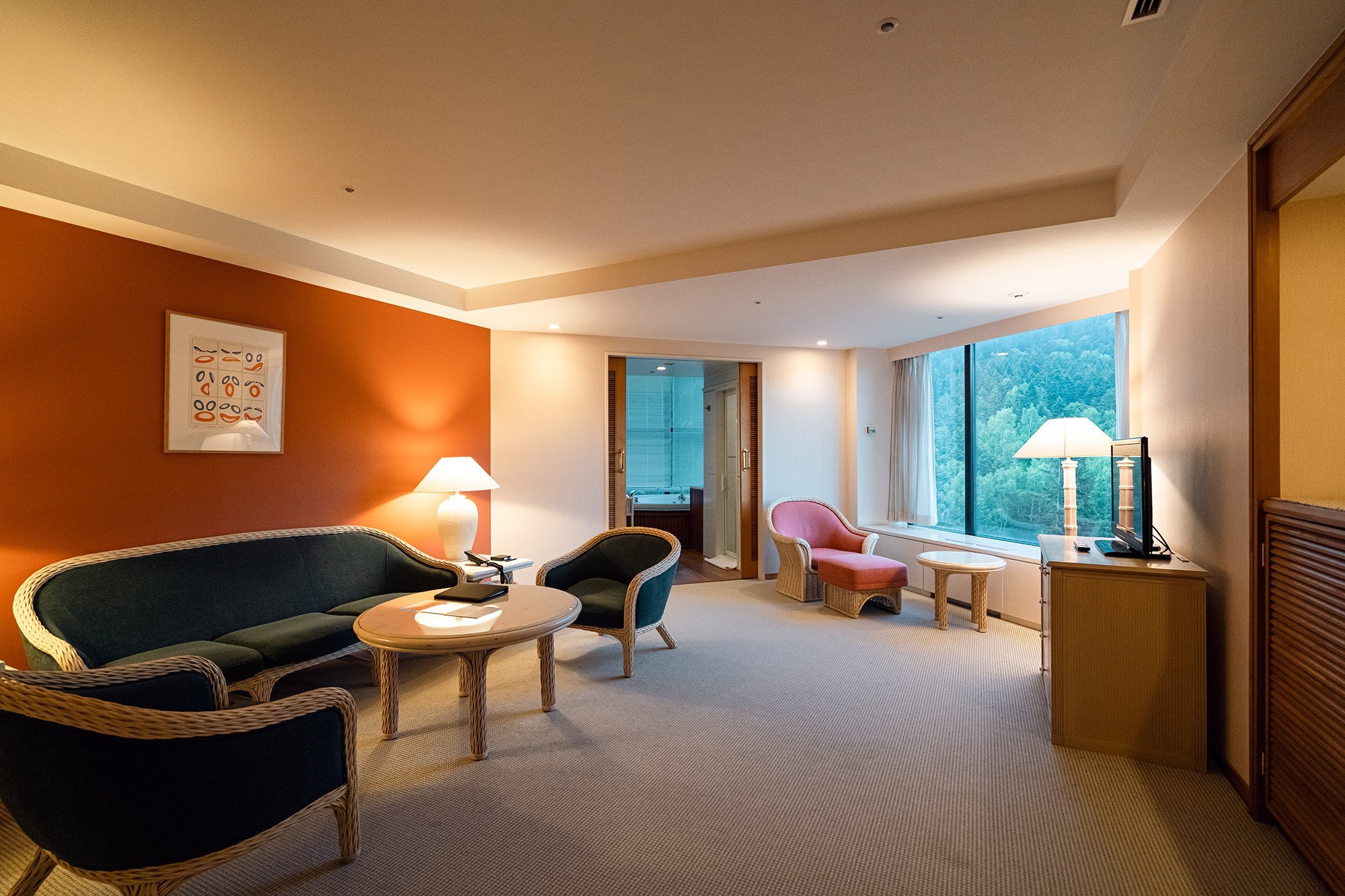
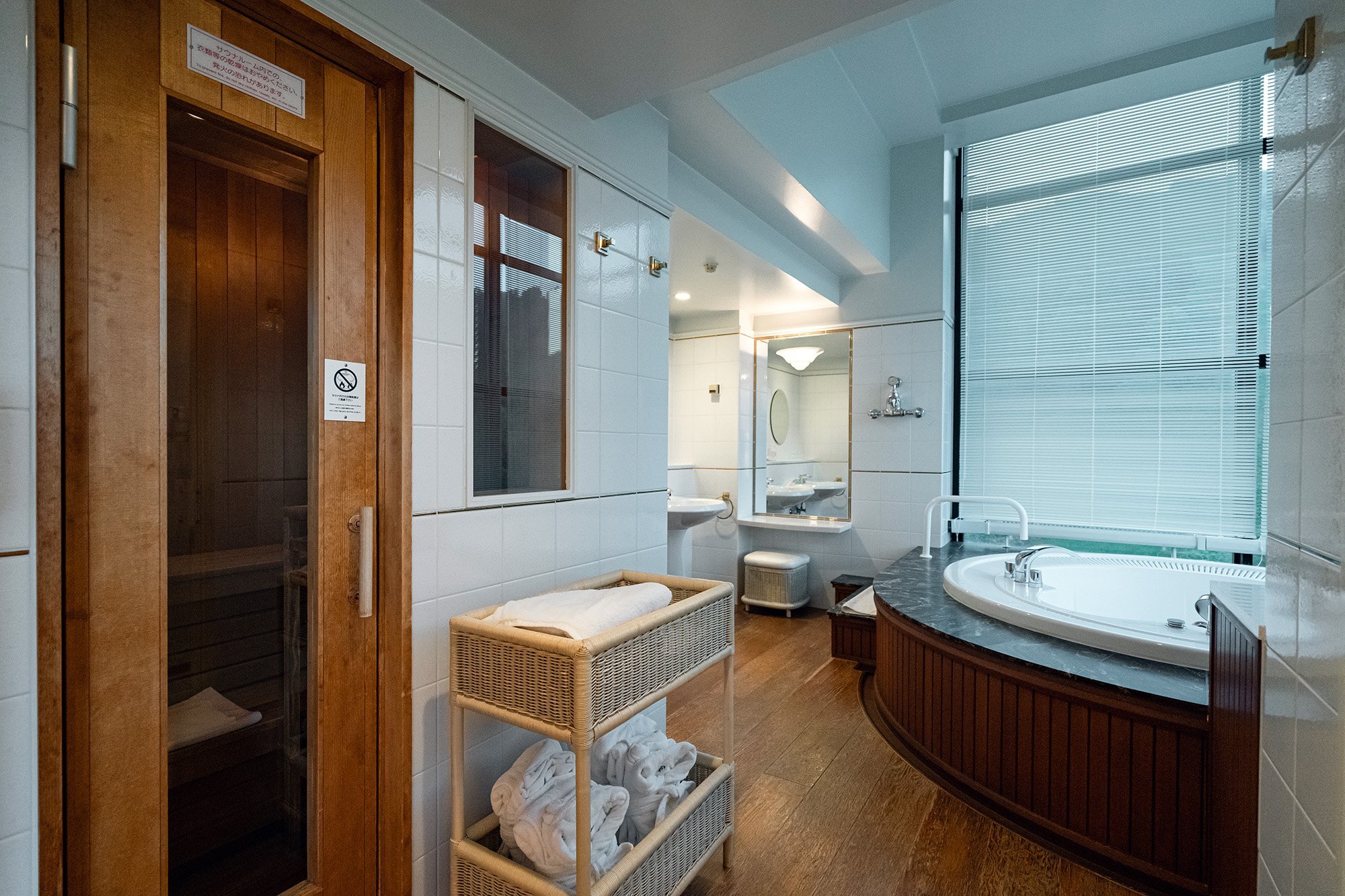
There are various restaurants and cafes, a couple of all-you-can-eat buffets, a lot of different activities that you can partake in, and areas to relax and have a picnic at.
One of the main commercial areas is Hotaru Street, which is in between the two pairs of towers.
We came across wild deer and rabbits roaming the vast grounds, but there are also areas that have sheep, goat, cows, even ponies.
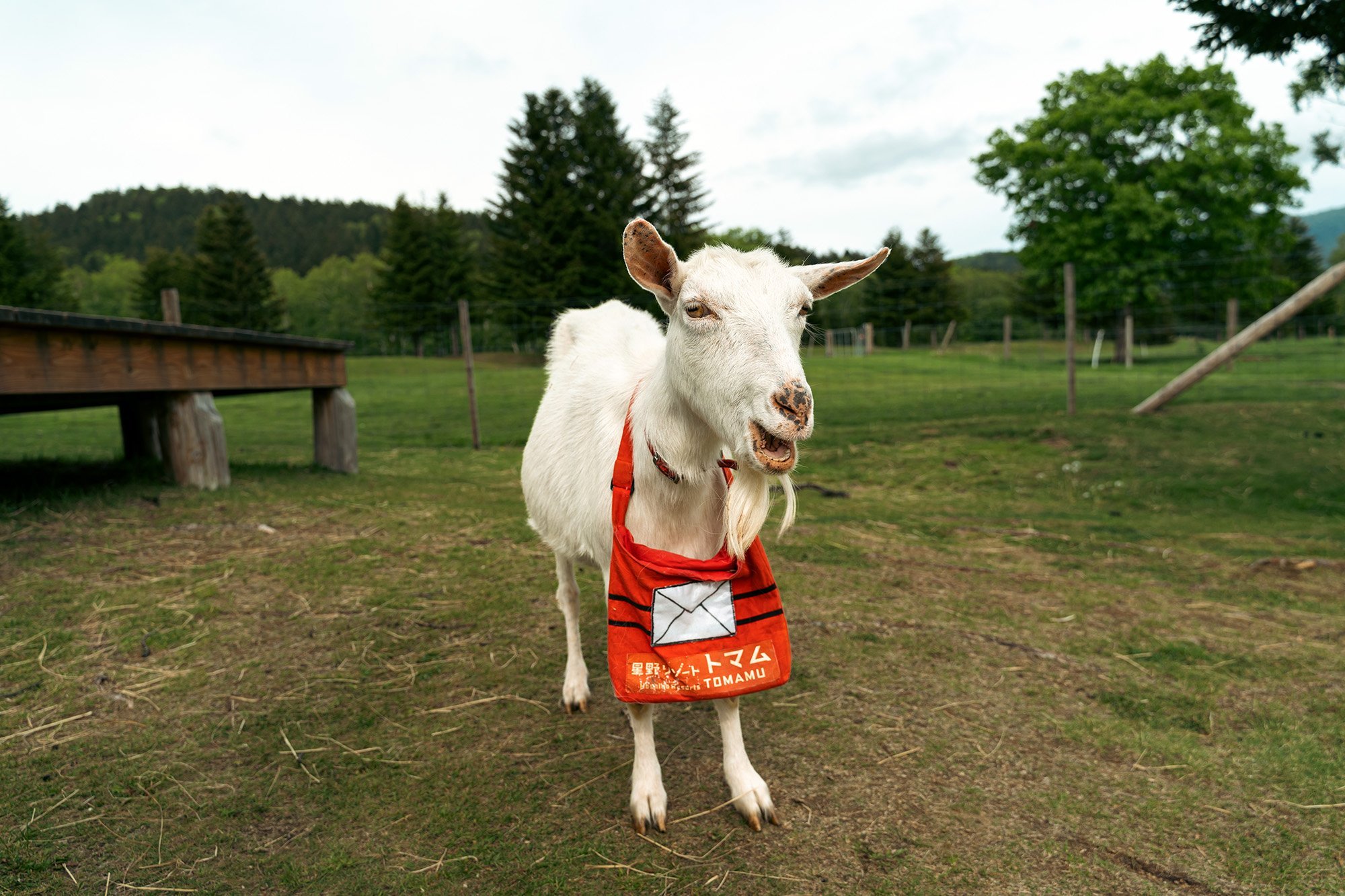
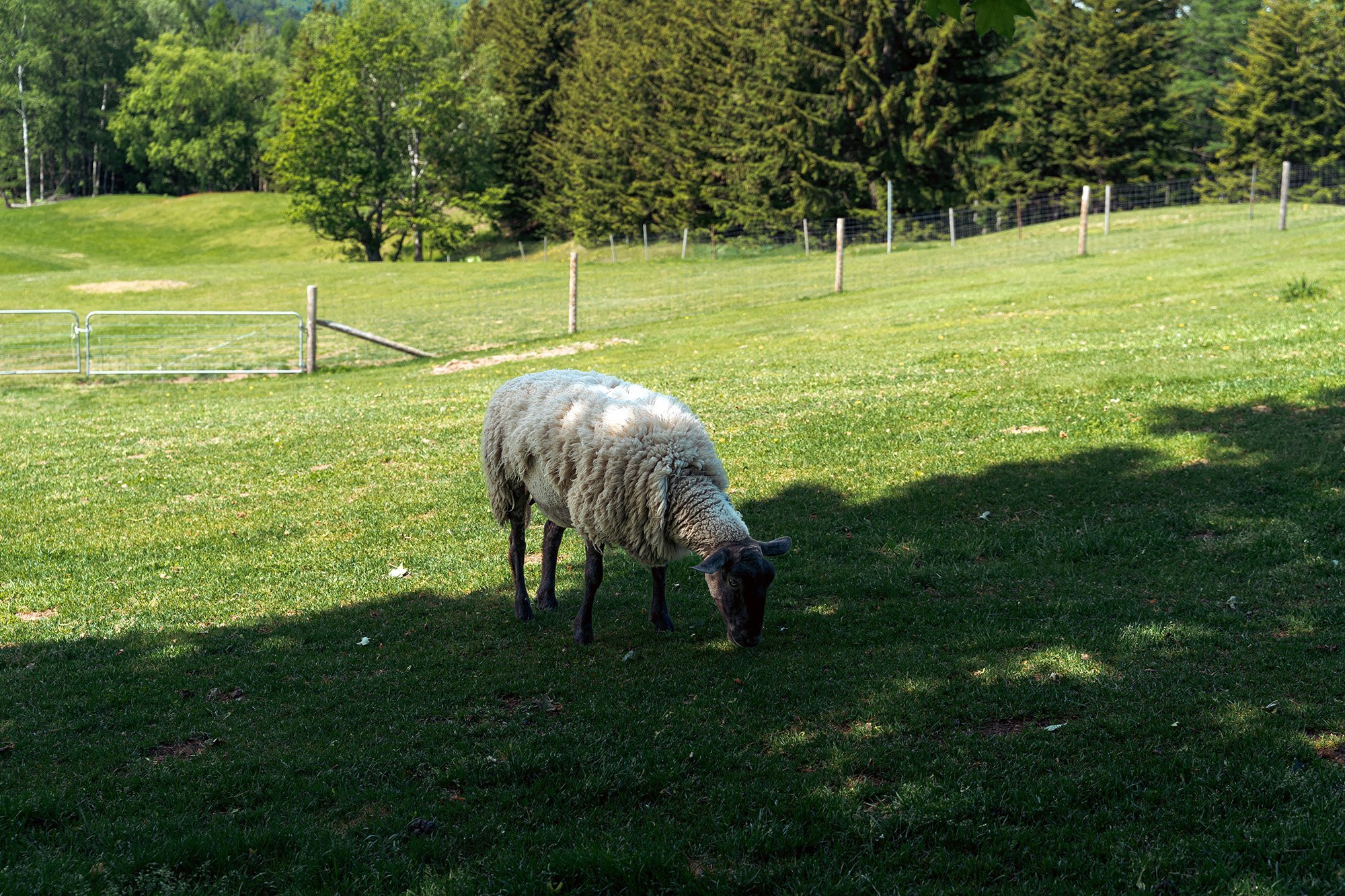
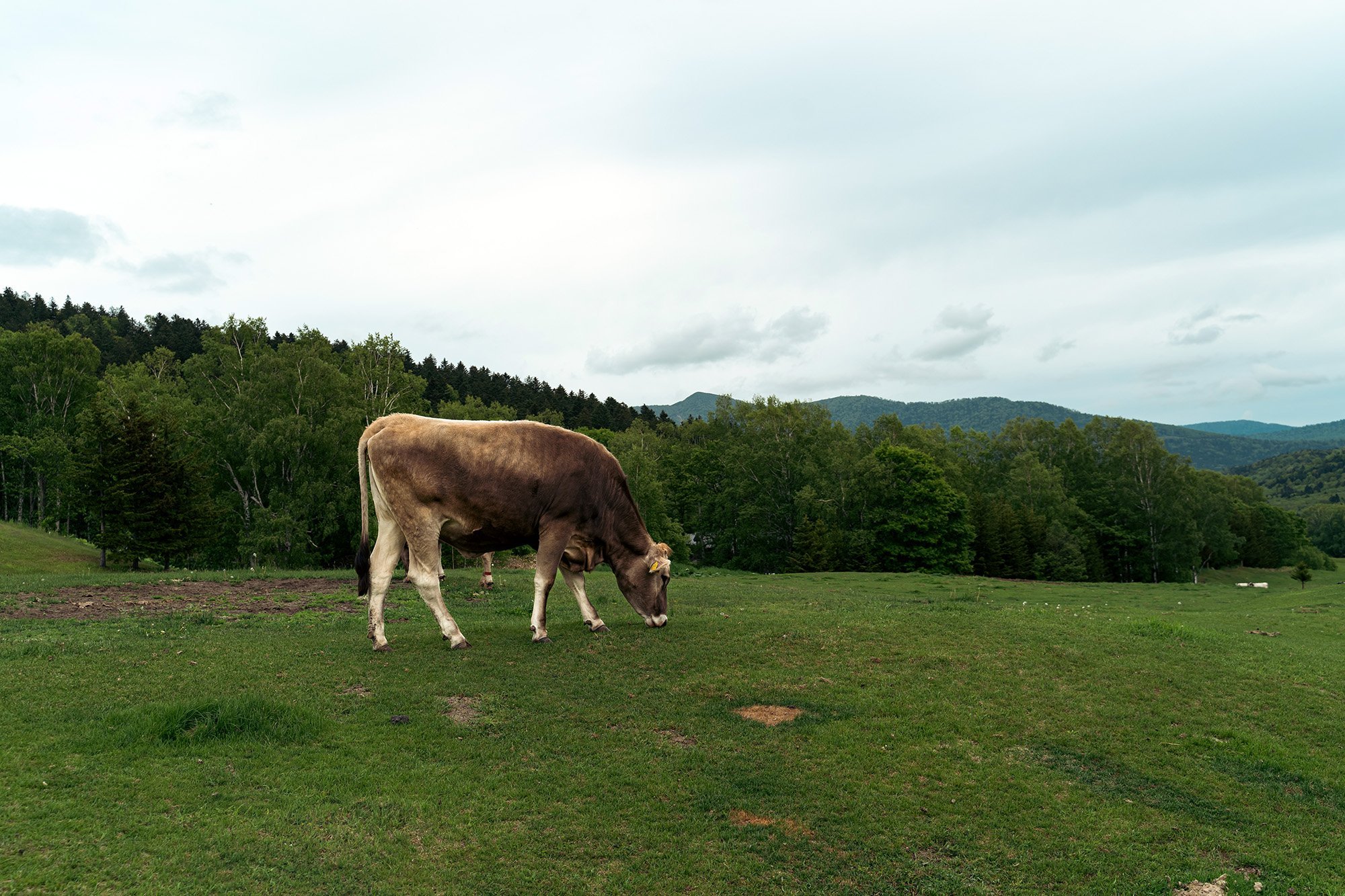
The highlight of the stay is the trip up above the “Sea of Clouds” to Unkai Terrace. This happens in the summer.
A shuttle will pick everyone up before the sun’s out, and take them to a ski lift. The lift will bring you above the clouds up top where there are cafes and various different viewpoints and photogenic spots.
It’s absolutely gorgeous up there with views as far as the eye can see. I shared a little more in the video I made about this trip.
Fenix Furano
The second place we stayed at was at the Fenix Furano, a luxury apartment-style hotel geared towards visitors planning to hit the ski slopes right across at Kitanomine.
Rooms here are fully equipped and range from hotel-style rooms to 3-bedroom apartments and penthouses. Its modern design is beautiful and it was a pleasure to stay the night.
Where we went
Aoi Pond
Yes, it’s actually that color.
Aoi Pond is actually a recent discovery in 1997 after being an unintentional creation while work was being done to control erosion.
There’s a parking lot and you can walk about half the perimeter of the pond. It’s beautiful, especially with the trees.
Chateau Furano
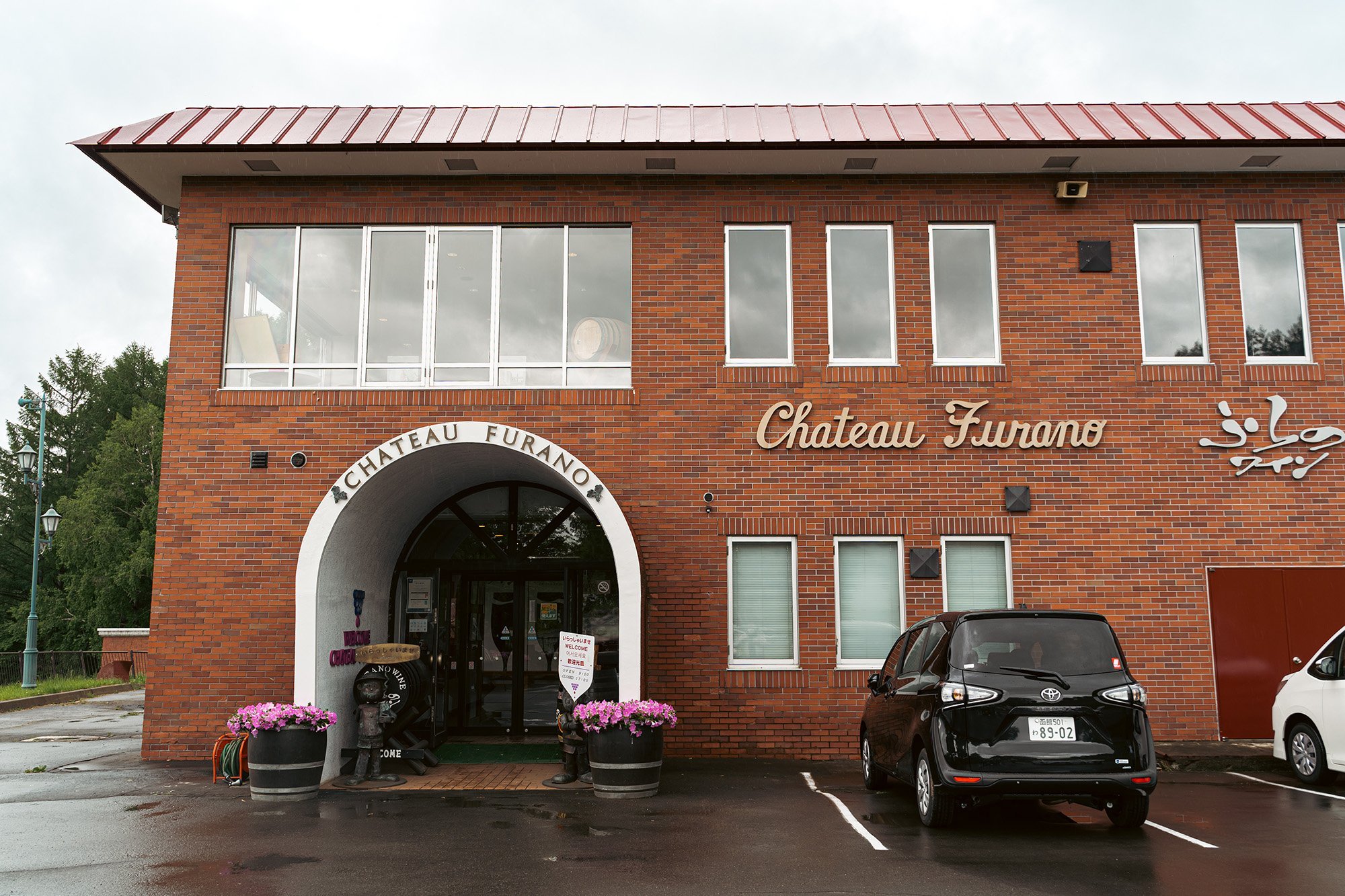


The Furano Winery, or Chateau Furano, dates back to 1972. At this little winery, you can check out the cellar with a collection of old bottles, see some of the production process, and do some wine tasting.
They make both red and white wines, however I have yet to taste a good red made here or anywhere else in Japan. If you like clean, crisp white wines, Japan makes some decent ones.
If you’d like to watch a video of traveling to all these places, check mine out here.
Tomita Melon House

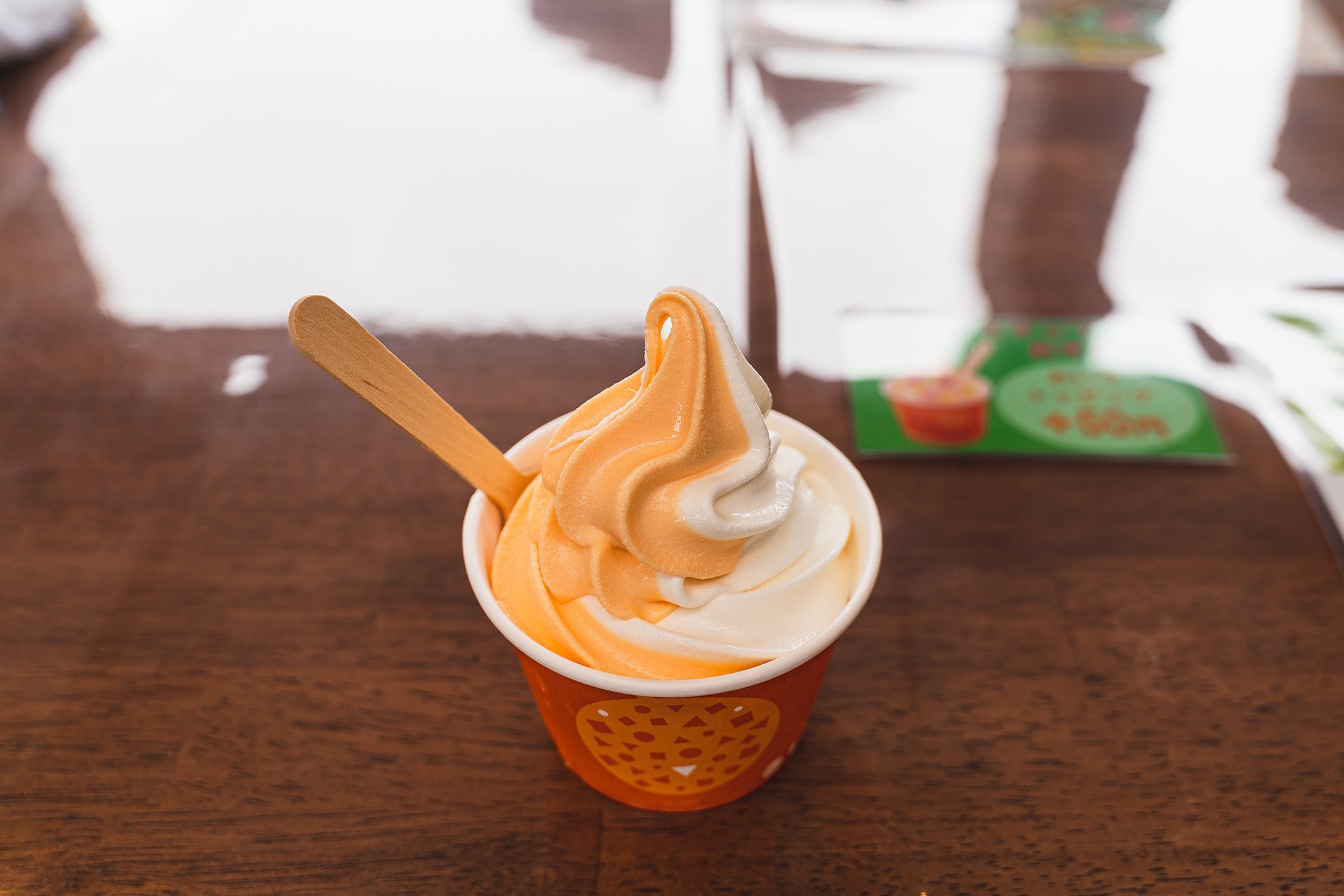
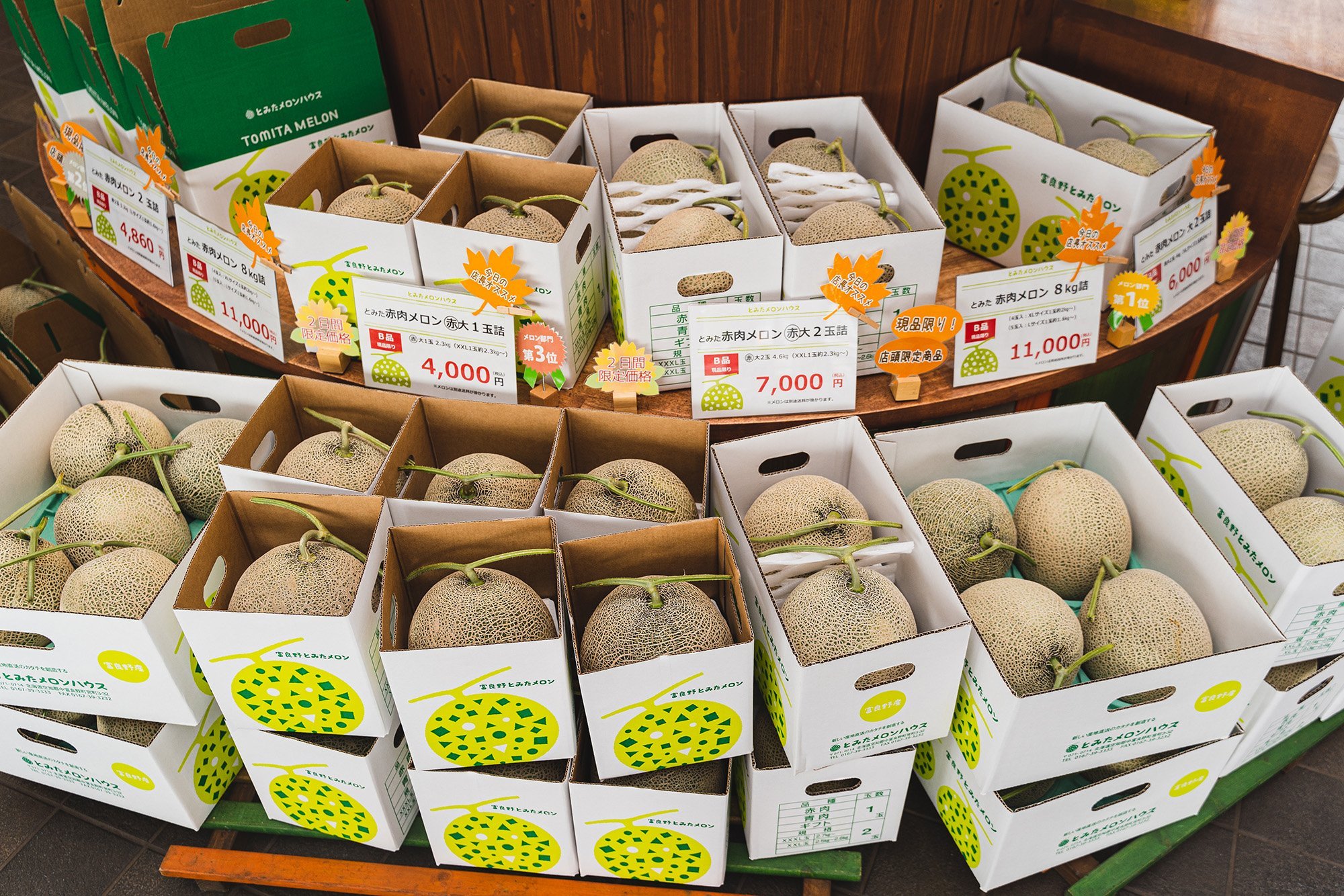
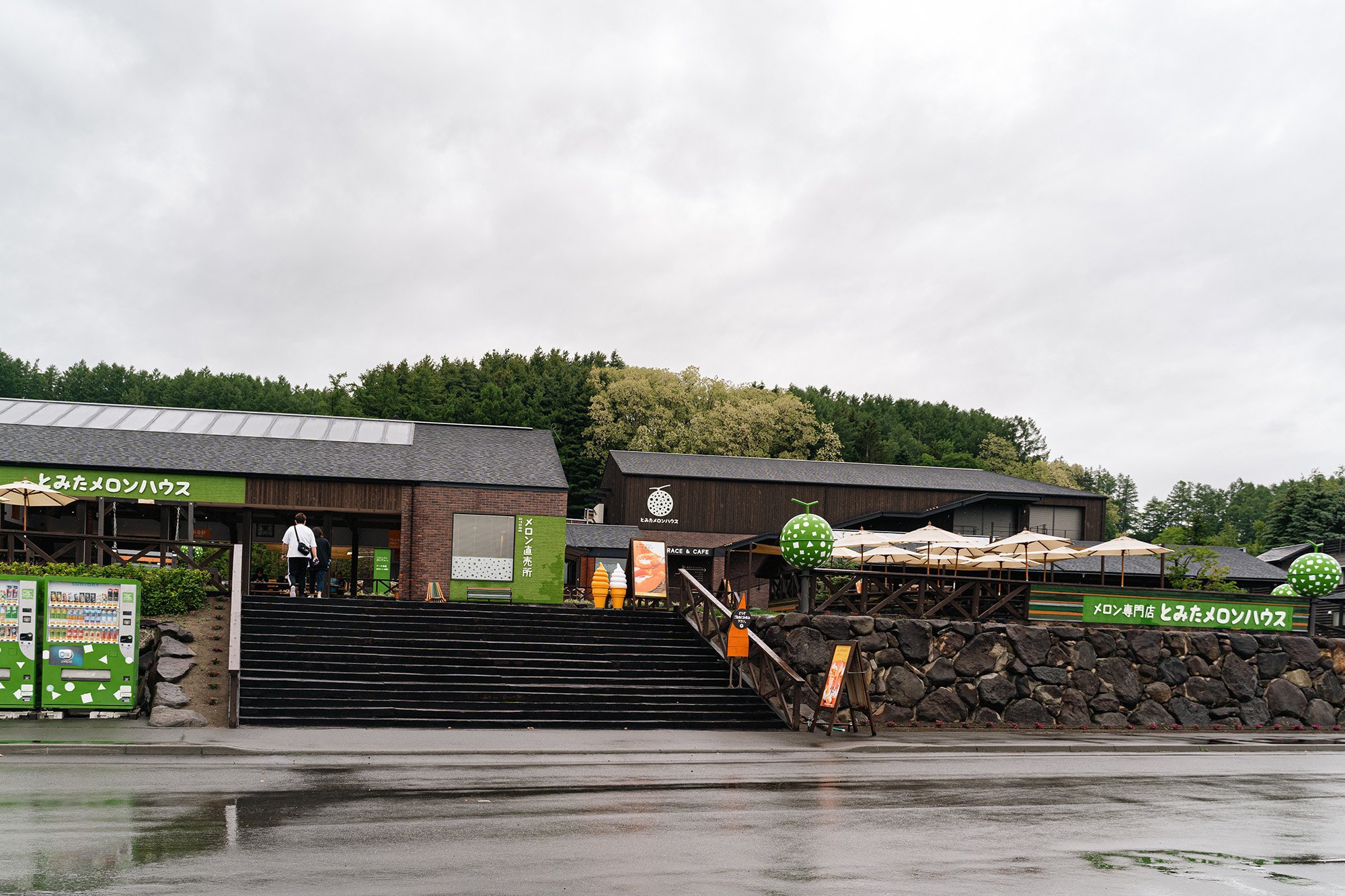
Hokkaido and Furano, specifically, are known for melons. While we were a bit too early to see Farm Tomita’s lavender fields, we were able to go to their neighboring melon outpost, Tomita Melon House.
They have some of the juiciest melons I’ve ever had in my life here to eat, to buy and to ship domestically. They also have desserts centered around their melons.
A good place to stop if you want some of the most high quality melons around.
Genghis Khan King

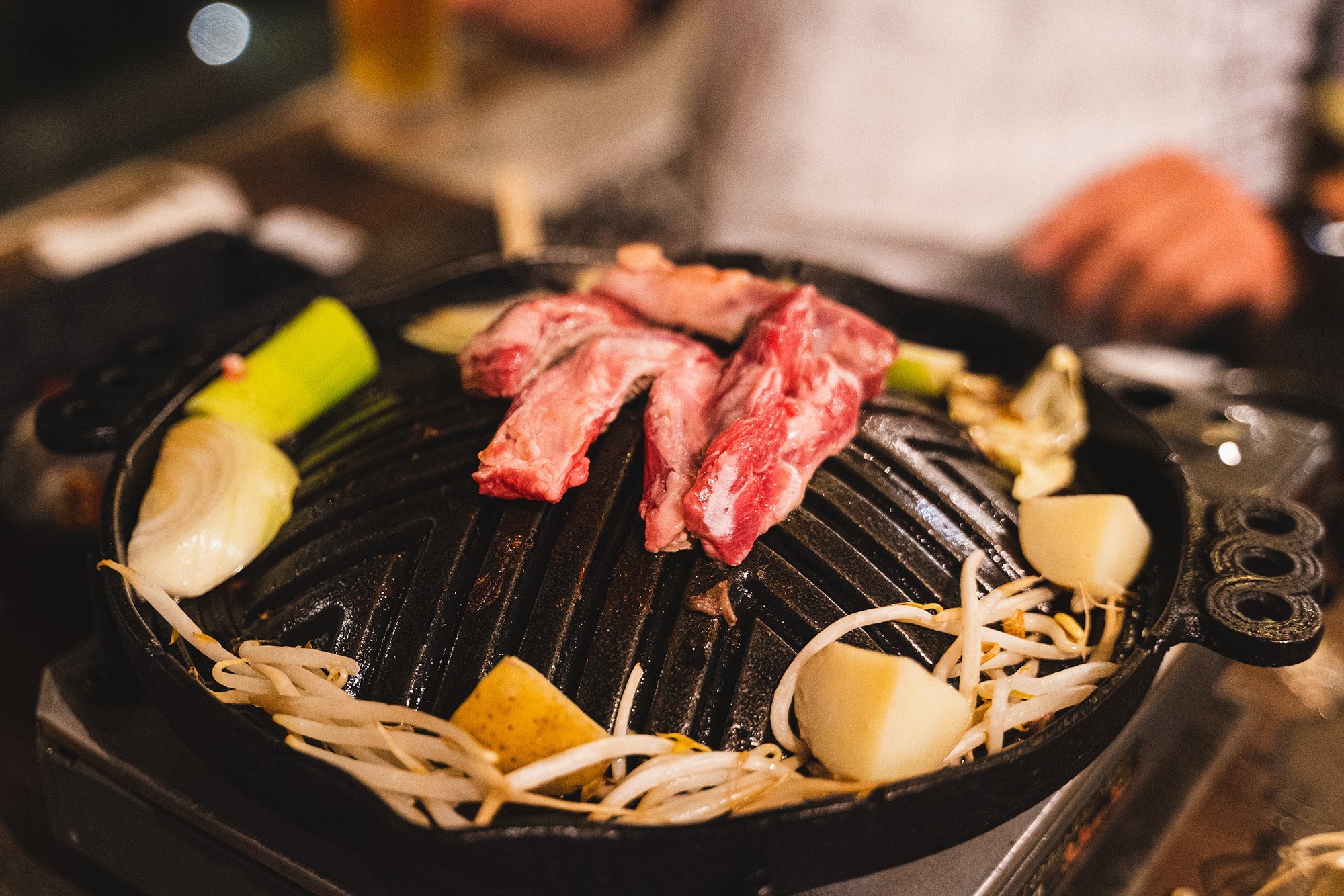
Hokkaido is known for Genghis Khan (pronounced Jingisukan), a local style of barbecue that is focused around mutton and vegetables. For this, we went to Genghis Khan King on the grounds of Hoshino Resorts Risonare Tomamu.
The food is grilled on a special grill that is raised in the middle, causing the juices from the meat to drip down around the rim where the vegetables are. To my surprise, the meat here was not gamey at all, and instead was rather tasty.
Easy to eat, fun and delicious. Dig in.
Keep in touch:
More Travels:
Nagato Yumoto Onsen: Hoshino Resorts KAI Nagato
Deep in the mountains of Yamaguchi Prefecture, Hoshino Resorts KAI Nagato is a luxury onsen resort based on accommodations for 17th century feudal lords.
Deep in the mountains of Yamaguchi Prefecture is the Nagato Yumoto Onsen area. With a river running through the middle, the Hoshino Resorts KAI Nagato, a luxury onsen resort, sits right alongside it.
Hoshino Resorts is one of the most well known and sought after luxury hot spring and resort ryokan chains in Japan.
If you’ve looked around at my Japan travels on my blog or watched some of my videos on YouTube, you may know that I’m a fan of their KAI brand. I’ve been fortunate to have stayed at some of their resorts such as:
While on a trip around Fukuoka in late spring of 2022, we decided to cross into Yamaguchi and head into the mountains for a stay at their KAI Nagato location.
How to get there
The best way to get to the Nagato Yumoto Onsen area is by car.
That being said, we took the bus/train. Our route wasn’t a typical one, but there’s a train from Asa Station, which is also a stop for some Shinkansen, to Nagato-Yumoto Station.
Nagato Yumoto Onsen is a hot spring town that dates back several hundred years, and was a destination for daimyo.
Becoming a bit dated, the area went through a rebranding and made some changes in the spring of 2020. Amongst those changes was the brand new opening of Hoshino Resort KAI Nagato.
Like other KAI locations, KAI Nagato focuses on the local area and its culture. The concept for this location is draws upon the old tea houses and accommodations that hosted feudal lords in the 17th century.
Activities
The main activity that many guests take part in is ink making and calligraphy.
It is said that for over 800 years, artisans in the region have been crafting inkstones out of a local stone called Akamaga, which produces high quality ink.
Rooms
We stayed in the Japanese-style Room TA3, a room that measures 48㎡ big with 2 beds in the main space and a bathroom with shower (you probably won’t need it because of the onsen).
The window had sliding doors that opened to a view of the river.
The Hot Spring
The onsen hot spring baths at Hoshino Resorts KAI Nagato are both indoors and outdoors.
The water that flows through Japanese onsen hot springs vary and depend on where the water is coming from. Each has a slightly different combination of minerals carrying different benefits to the skin and body.
Hoshino Resorts KAI Nagato’s onsen water is from the Nagato Yumoto hot spring and is alkaline and pretty clear in color. It’s said that the benefits include helping with nerve pain, muscle soreness, joint/arthritis pain, and general fatigue.
The water is really silky and smooth, and it made my skin feel really nice after. The indoor bath was not as hot, more lukewarm, but the silkiness feeling was the highest.
Dining
Like most ryokan stays, Japanese kaiseki meals are included. Hoshino Resorts KAI Nagato’s meals are served in a dining hall that has separated rooms.
Like every other Hoshino Resorts KAI resort, this location had great meals.
Yamaguchi prefecture is known for foods like yuzukichi citrus and fugu (blowfish) and both were part of the meal.
We opted to go for the Special Dinner: Spring-Summer option, which focused on kawarayaki, Wagyu beef cooked in a way that resembles kawarasoba, a Yamaguchi style of cooking soba on a heated roof tile.
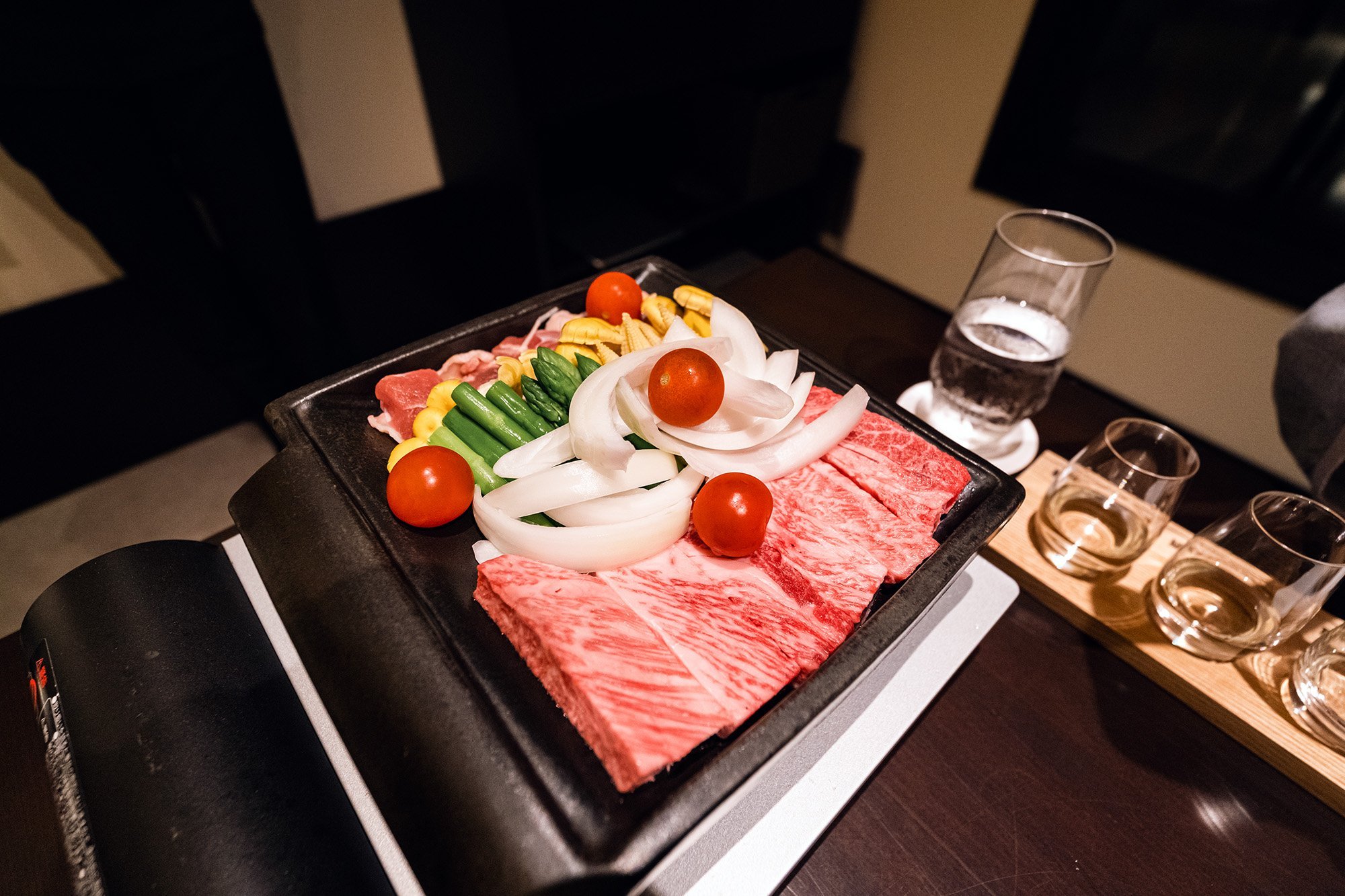
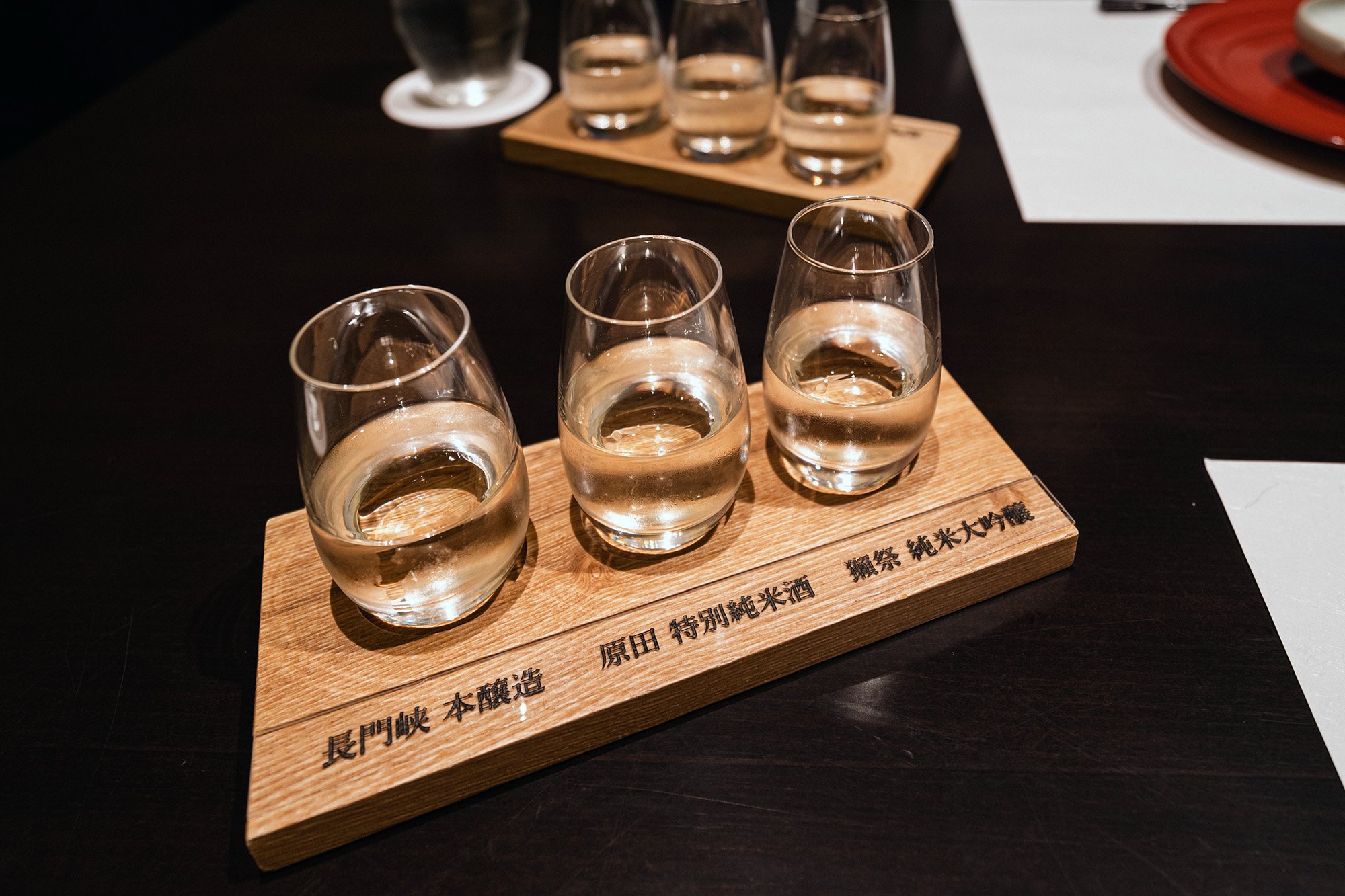
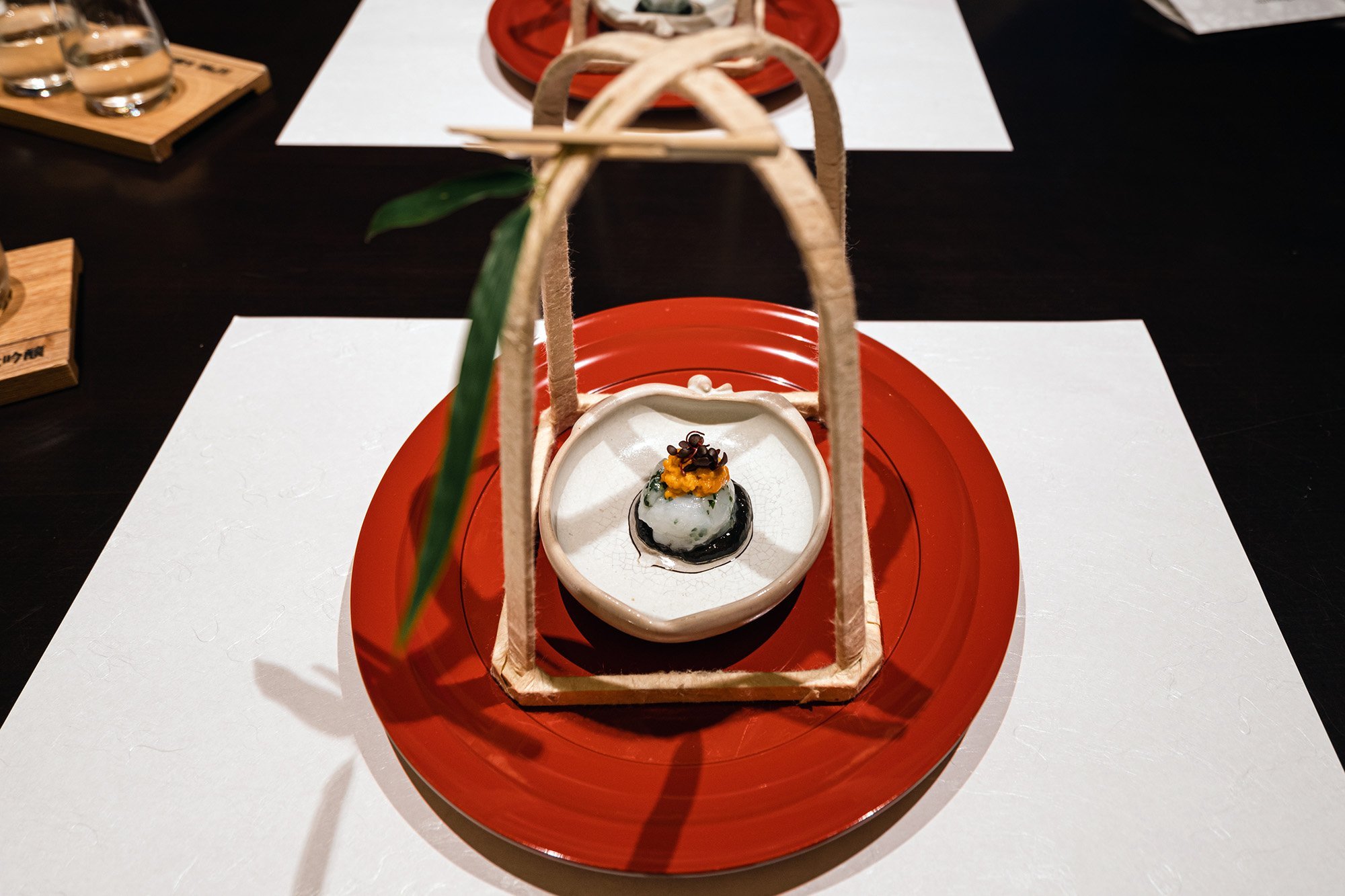
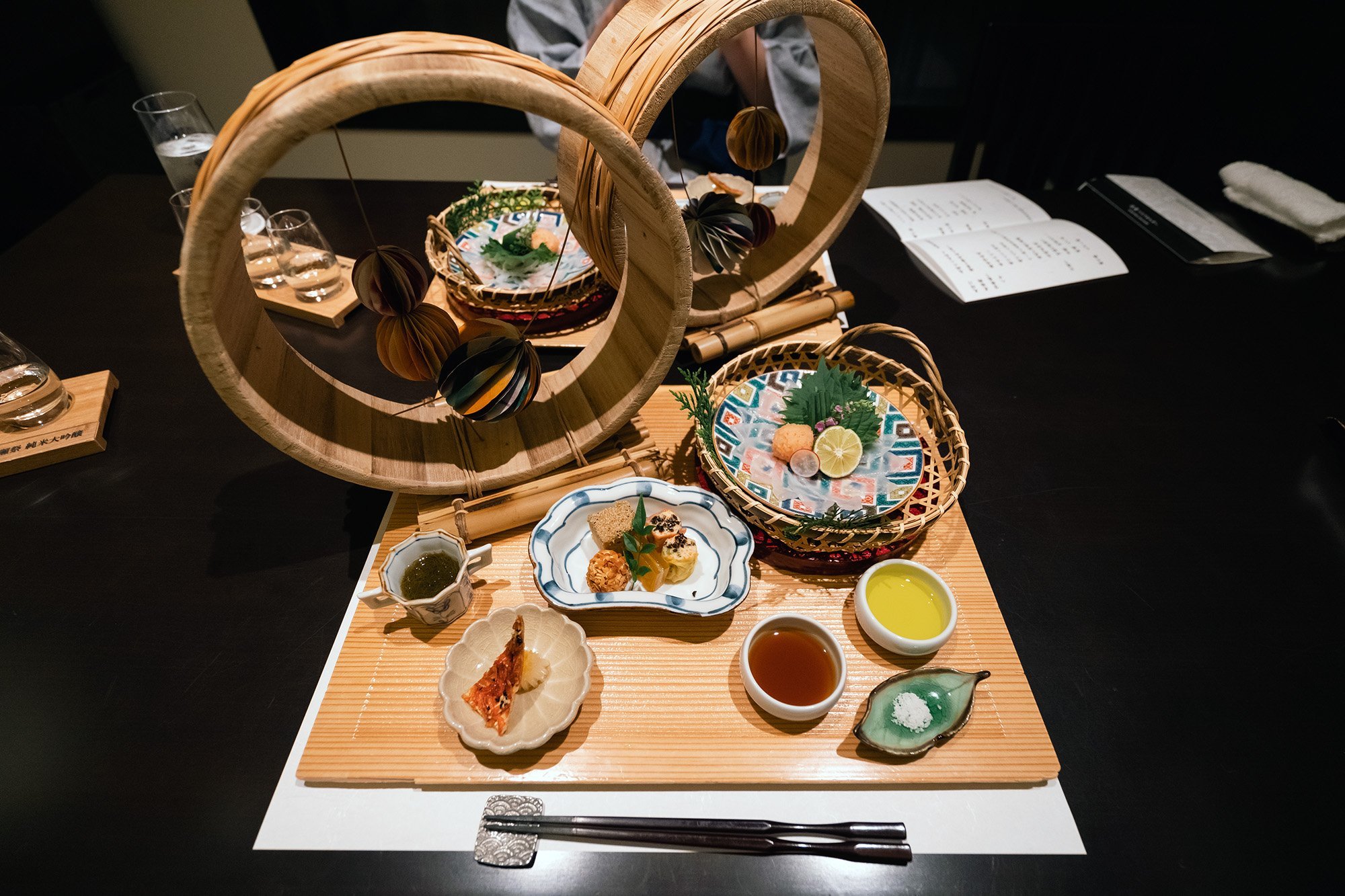
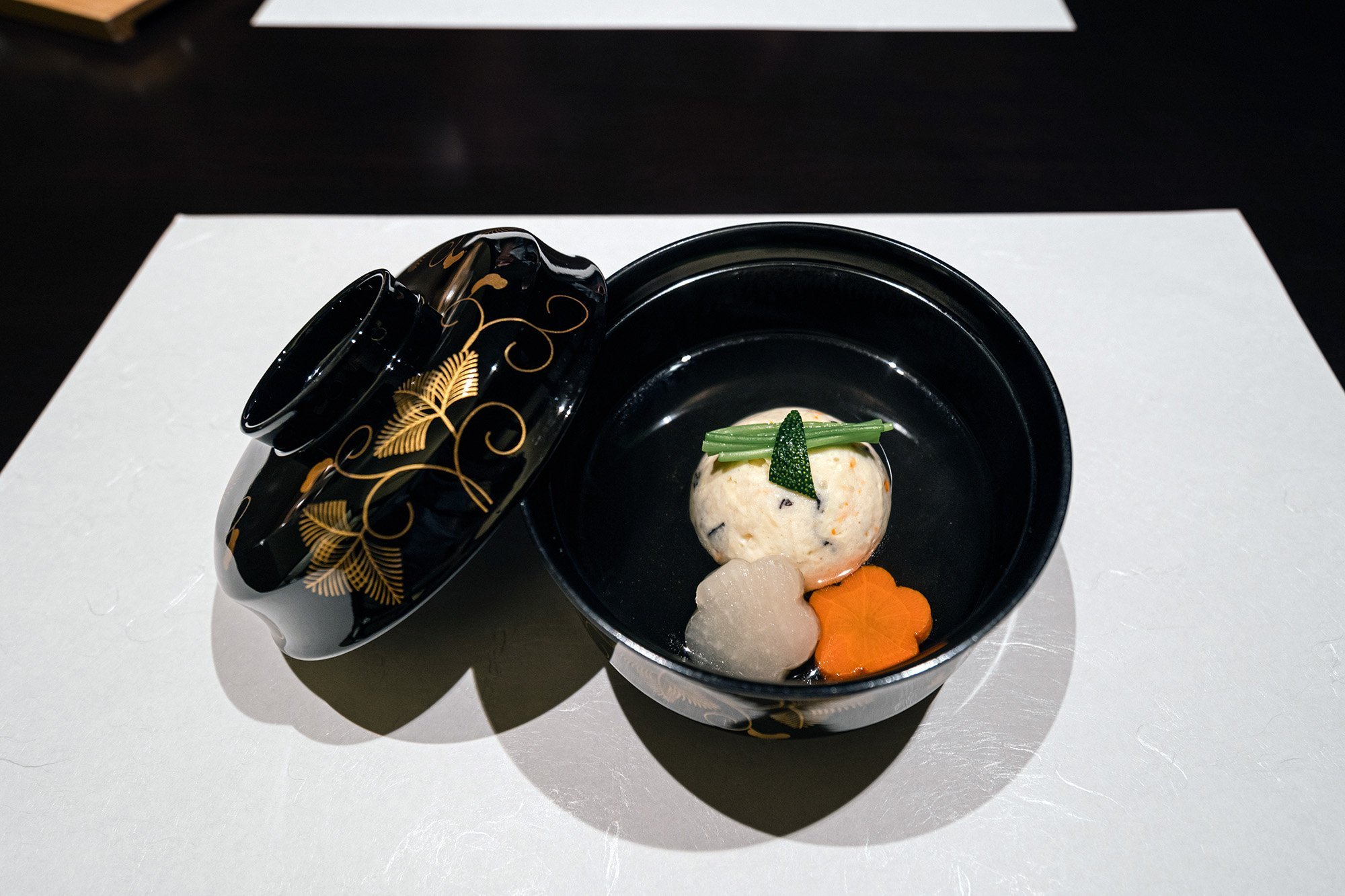
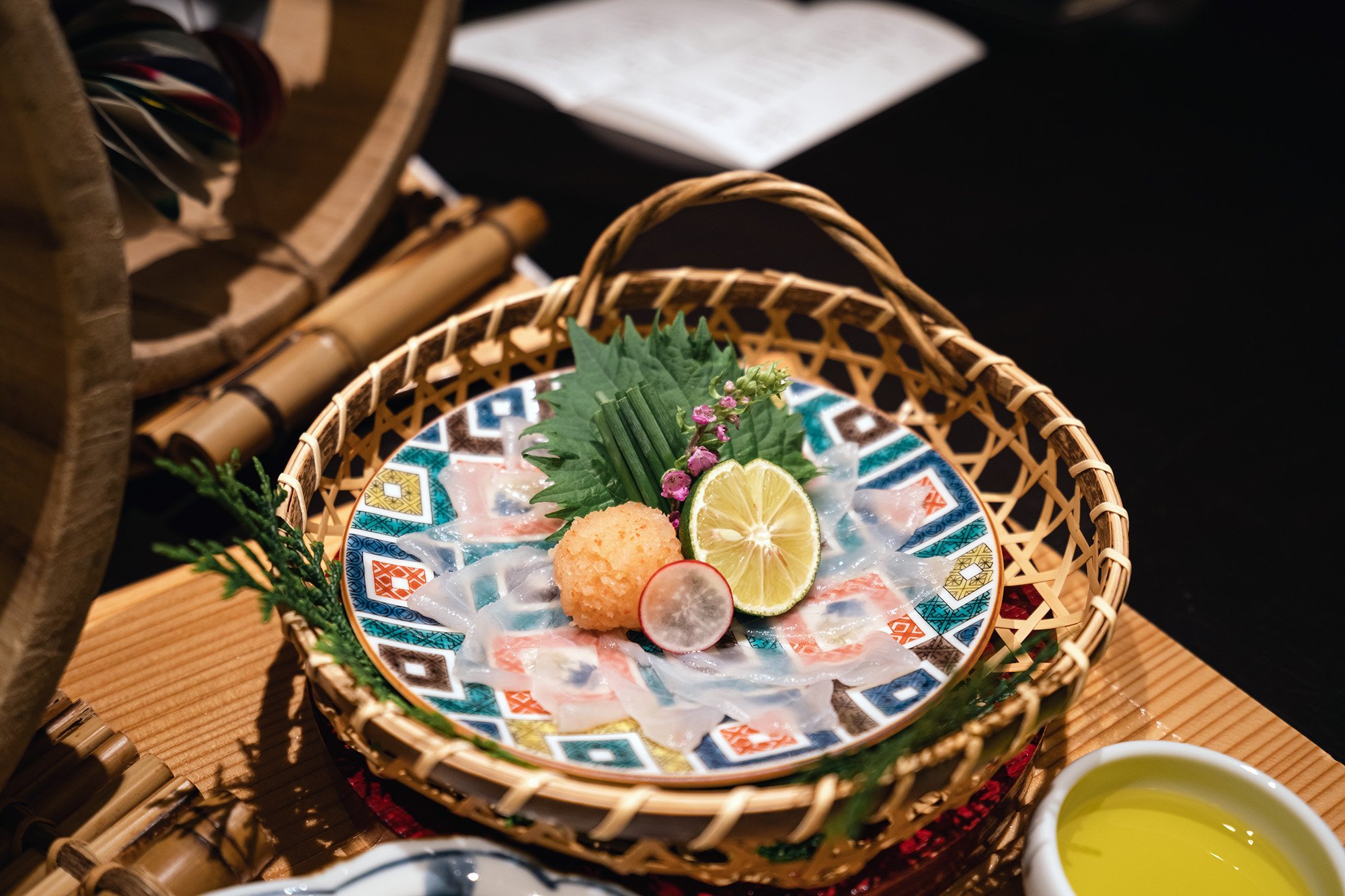
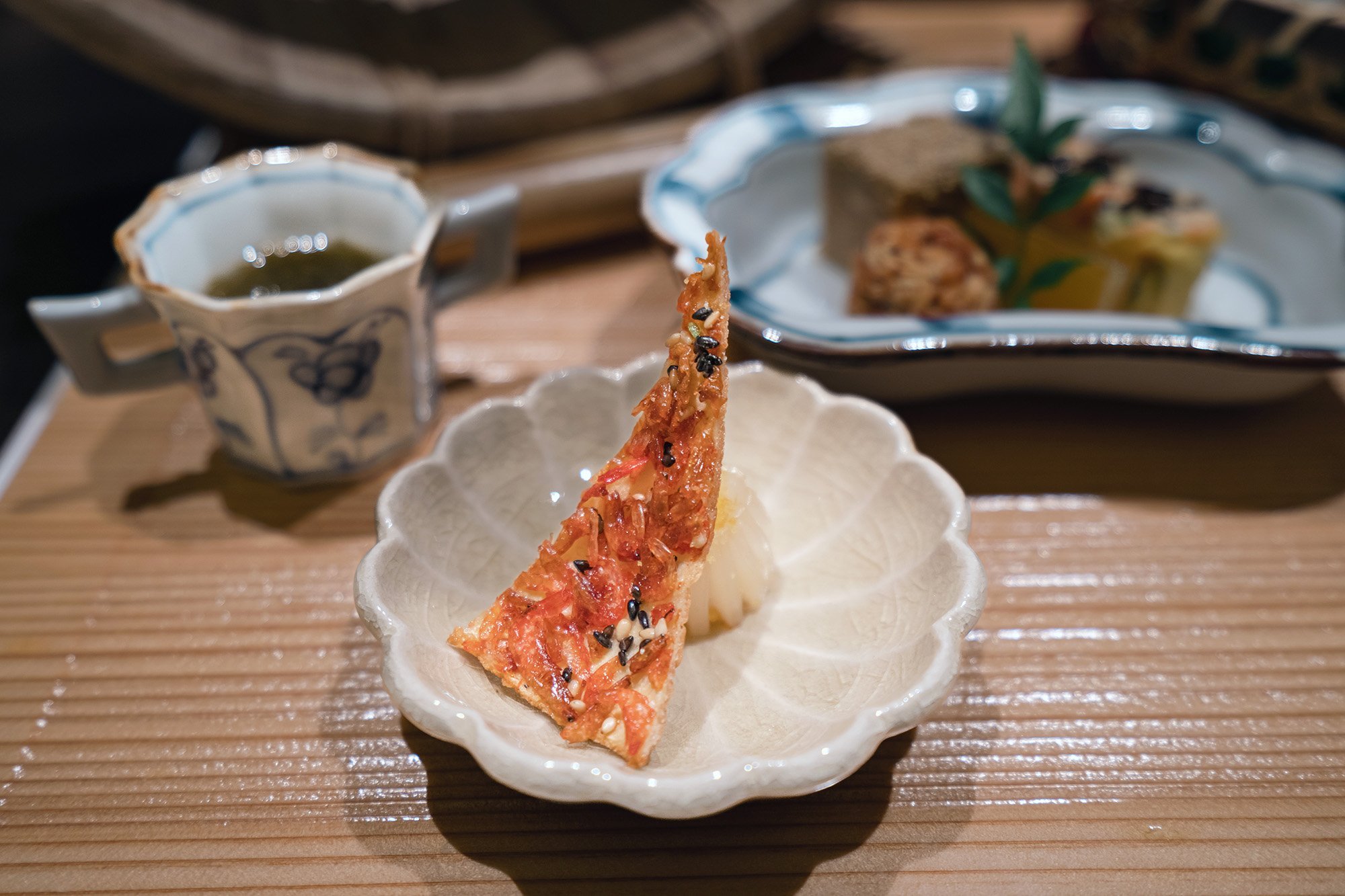
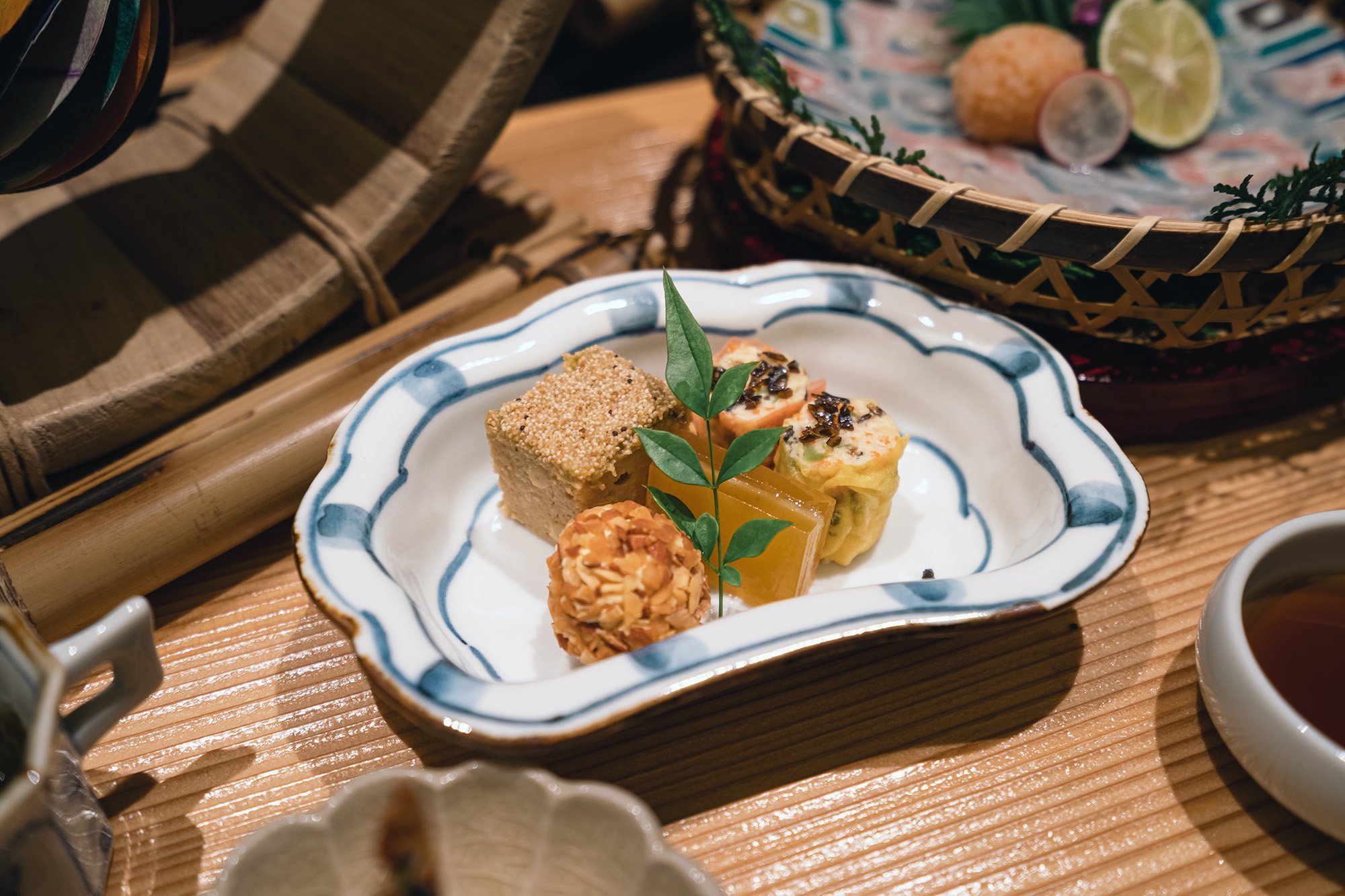
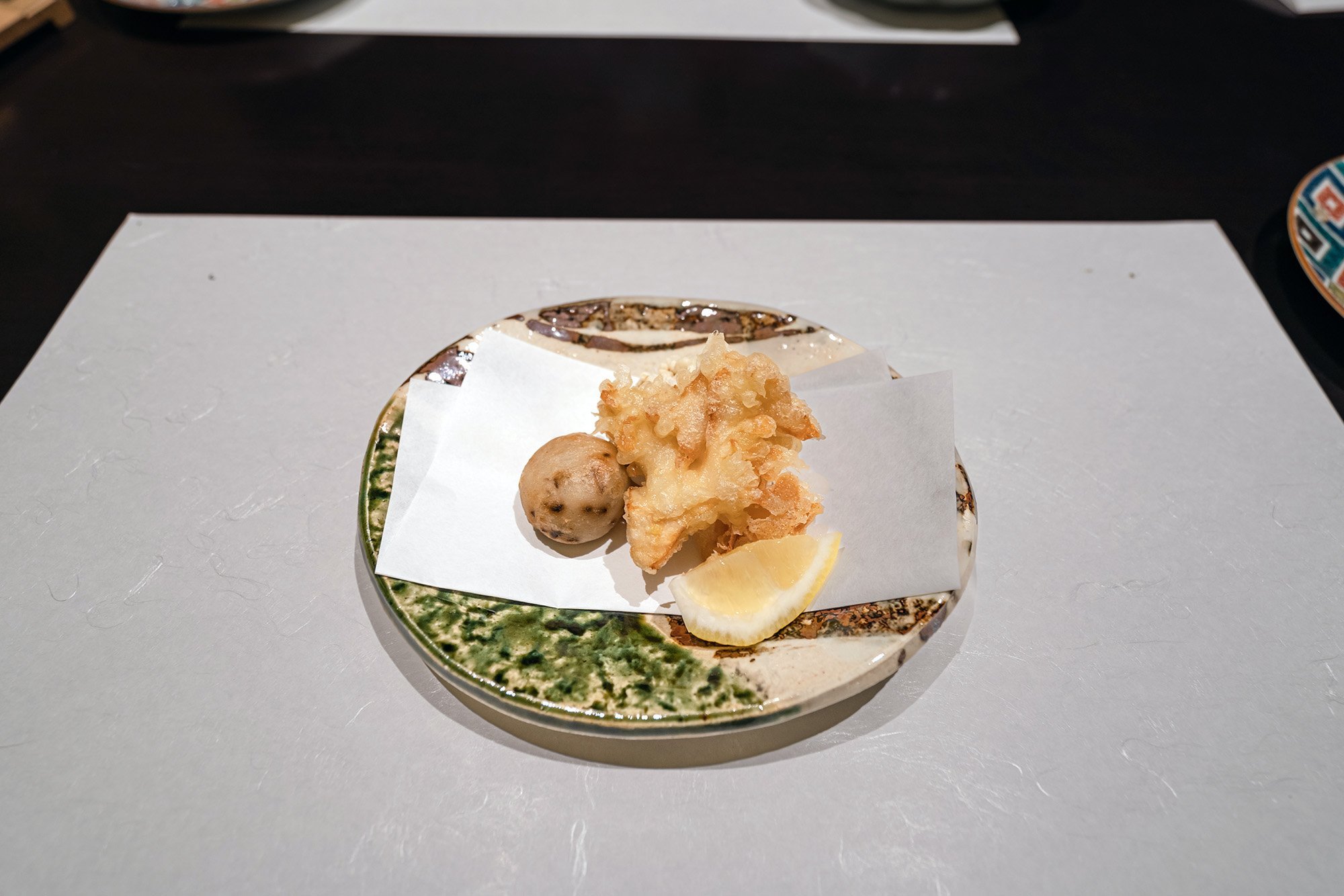
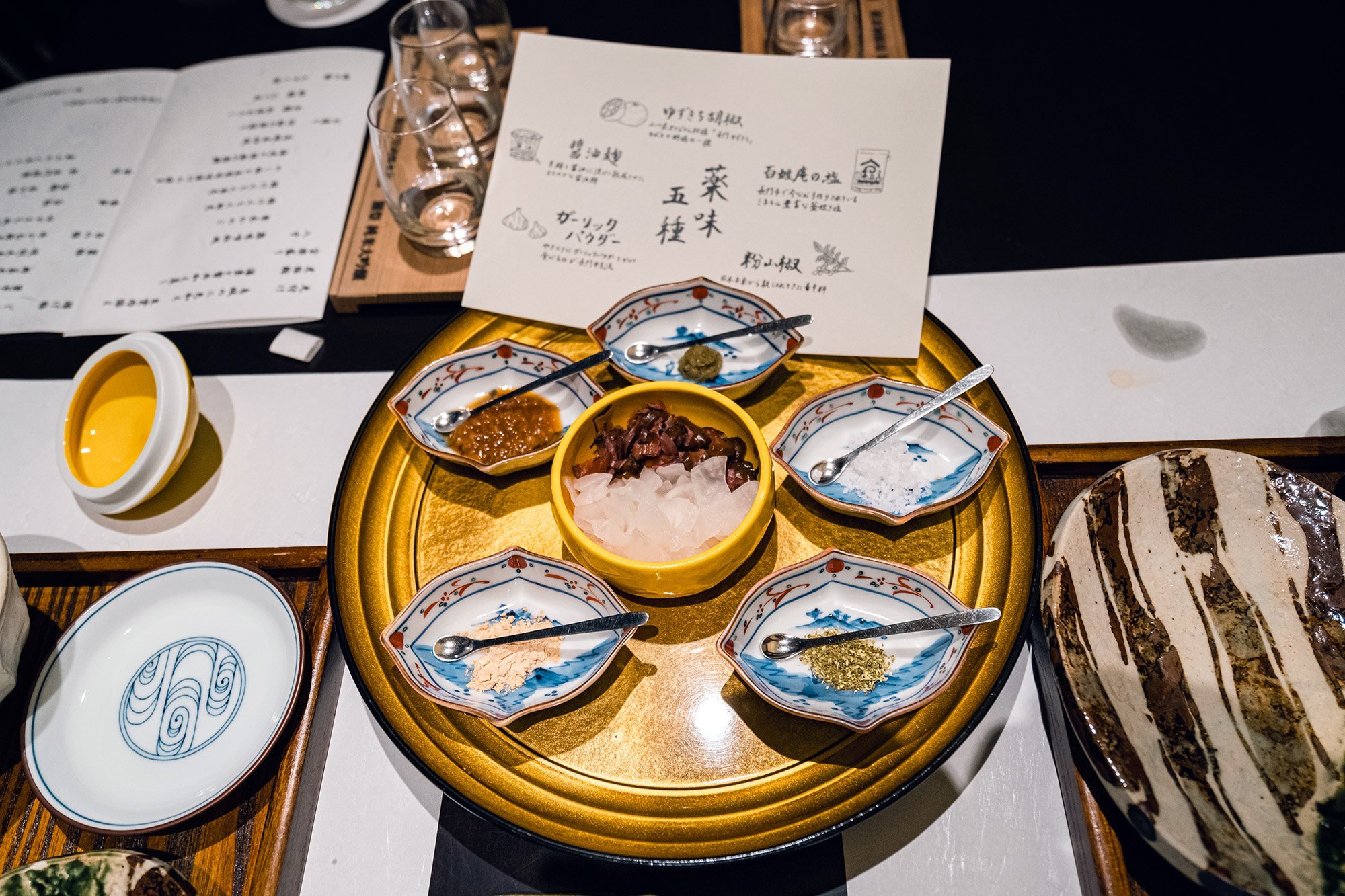
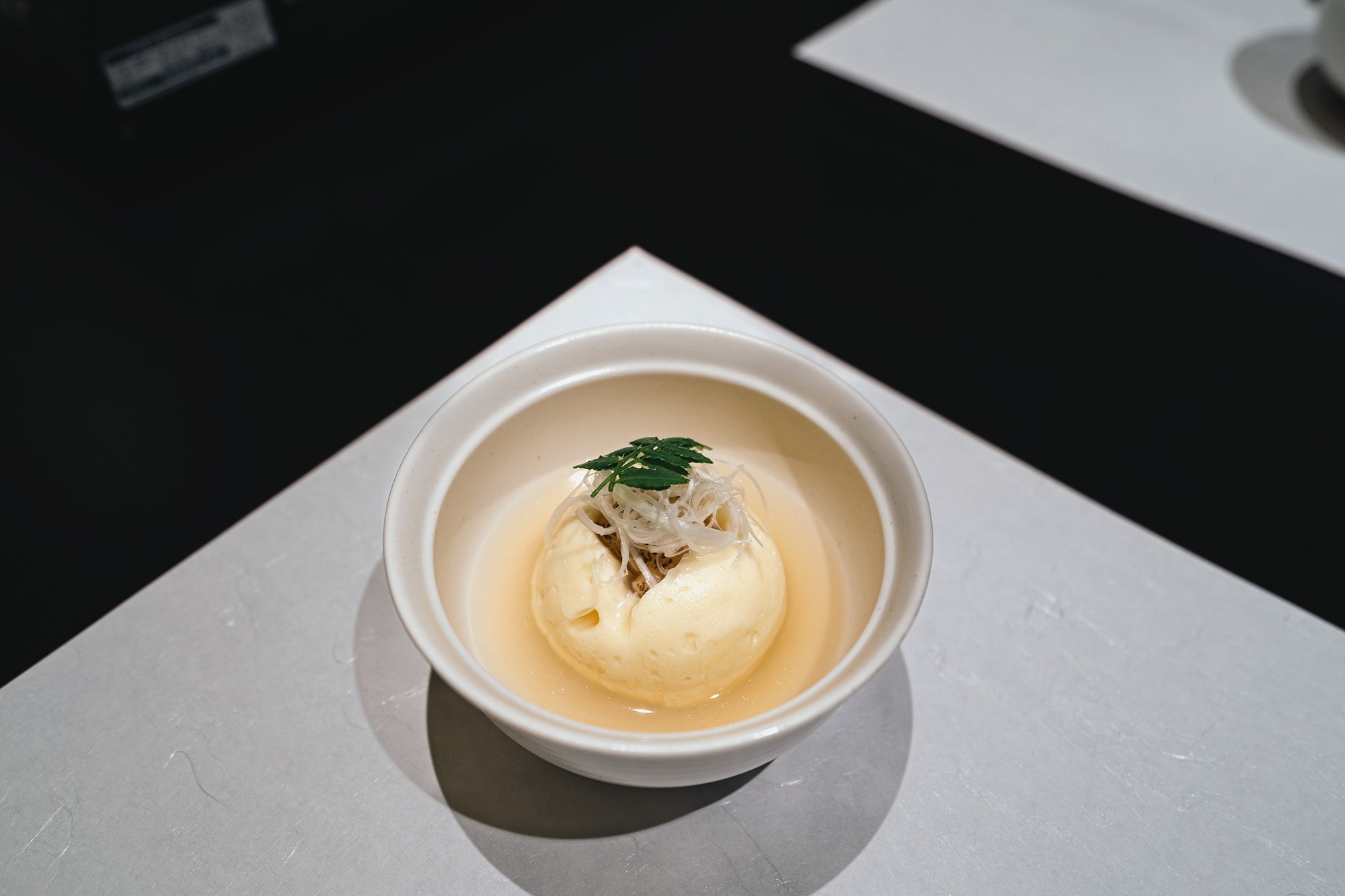
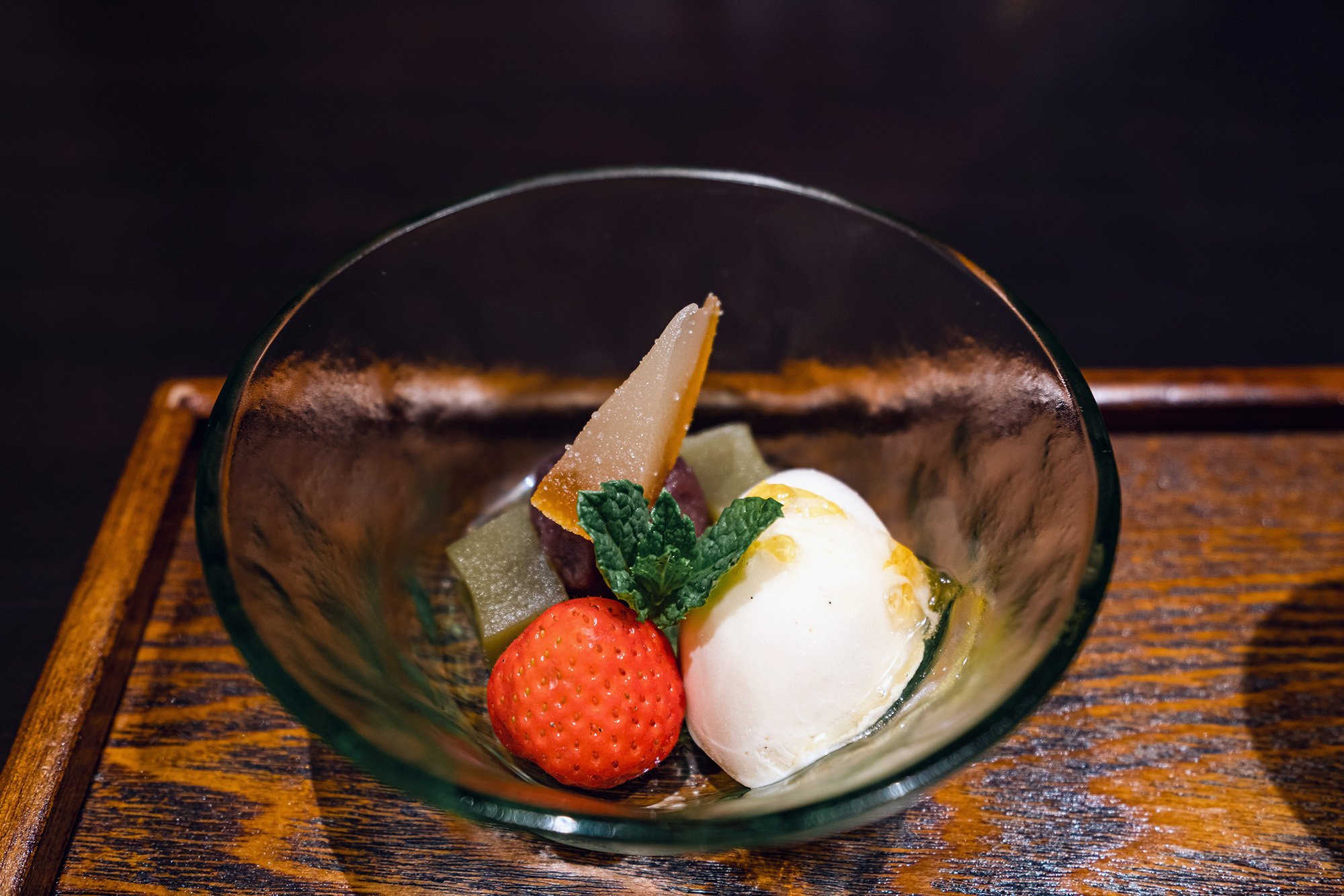
Breakfast was also good and stayed with the regional concept. Some dishes were a local miso soup and kamaboko (fish cake).
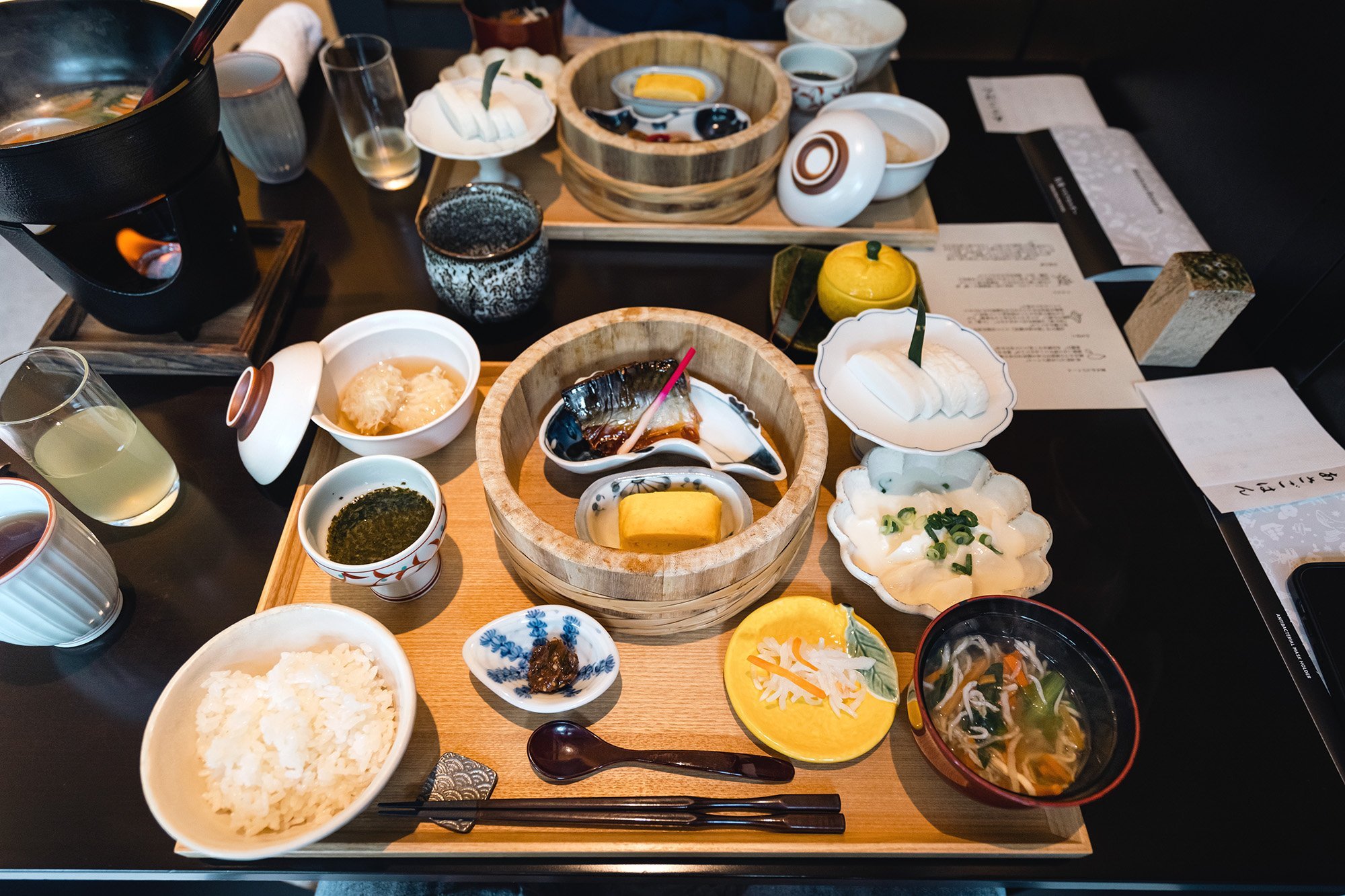
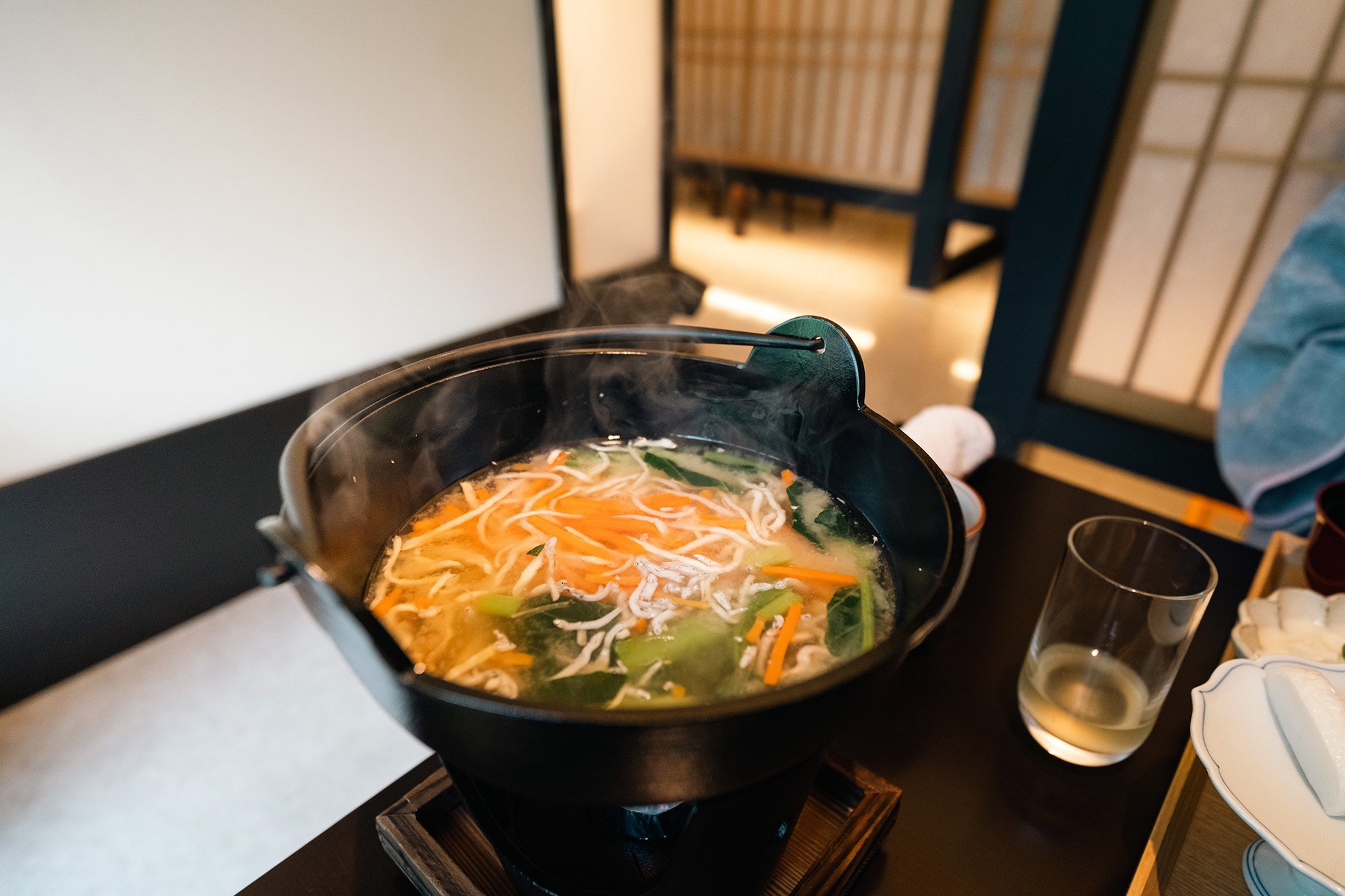

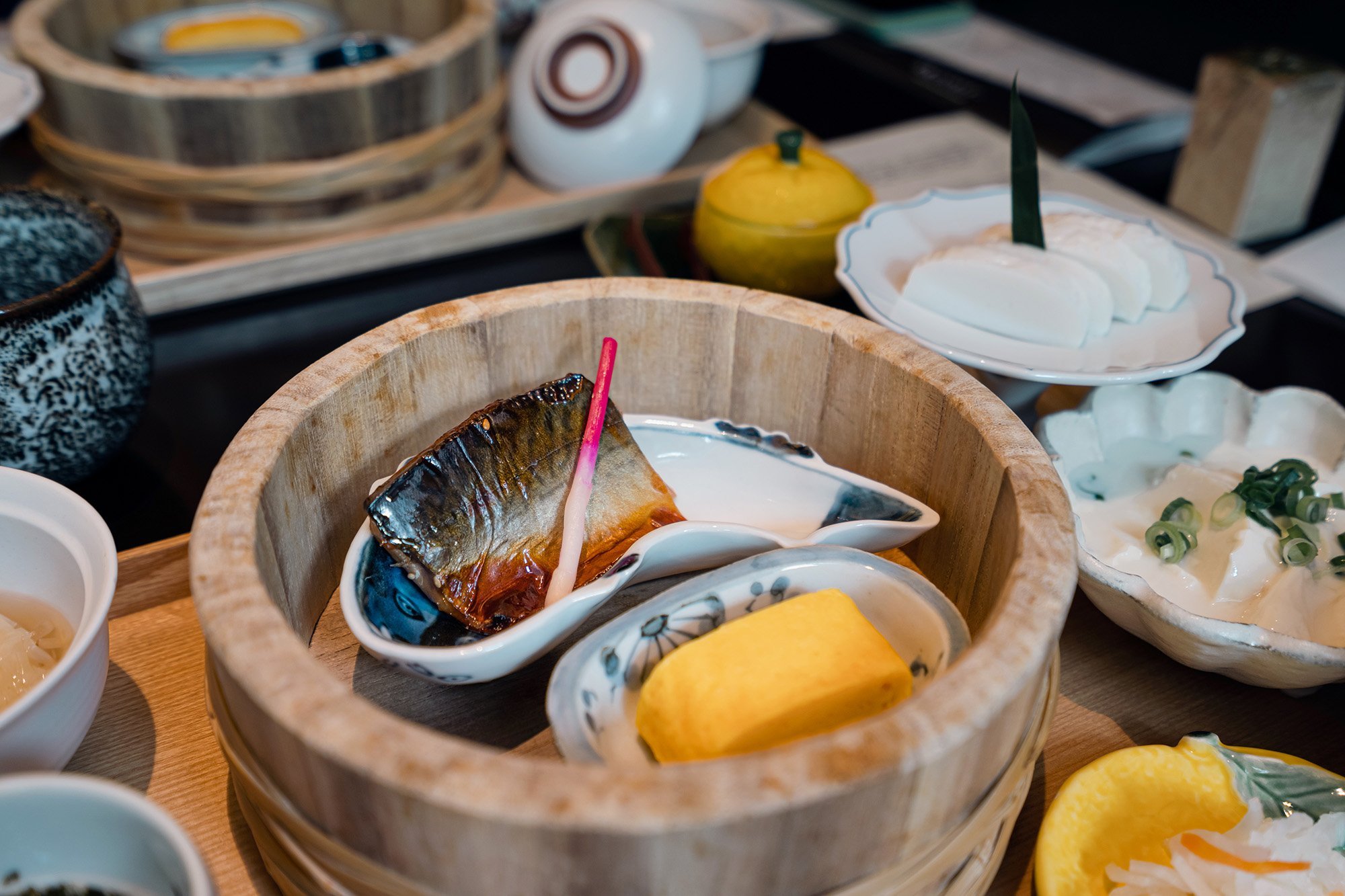
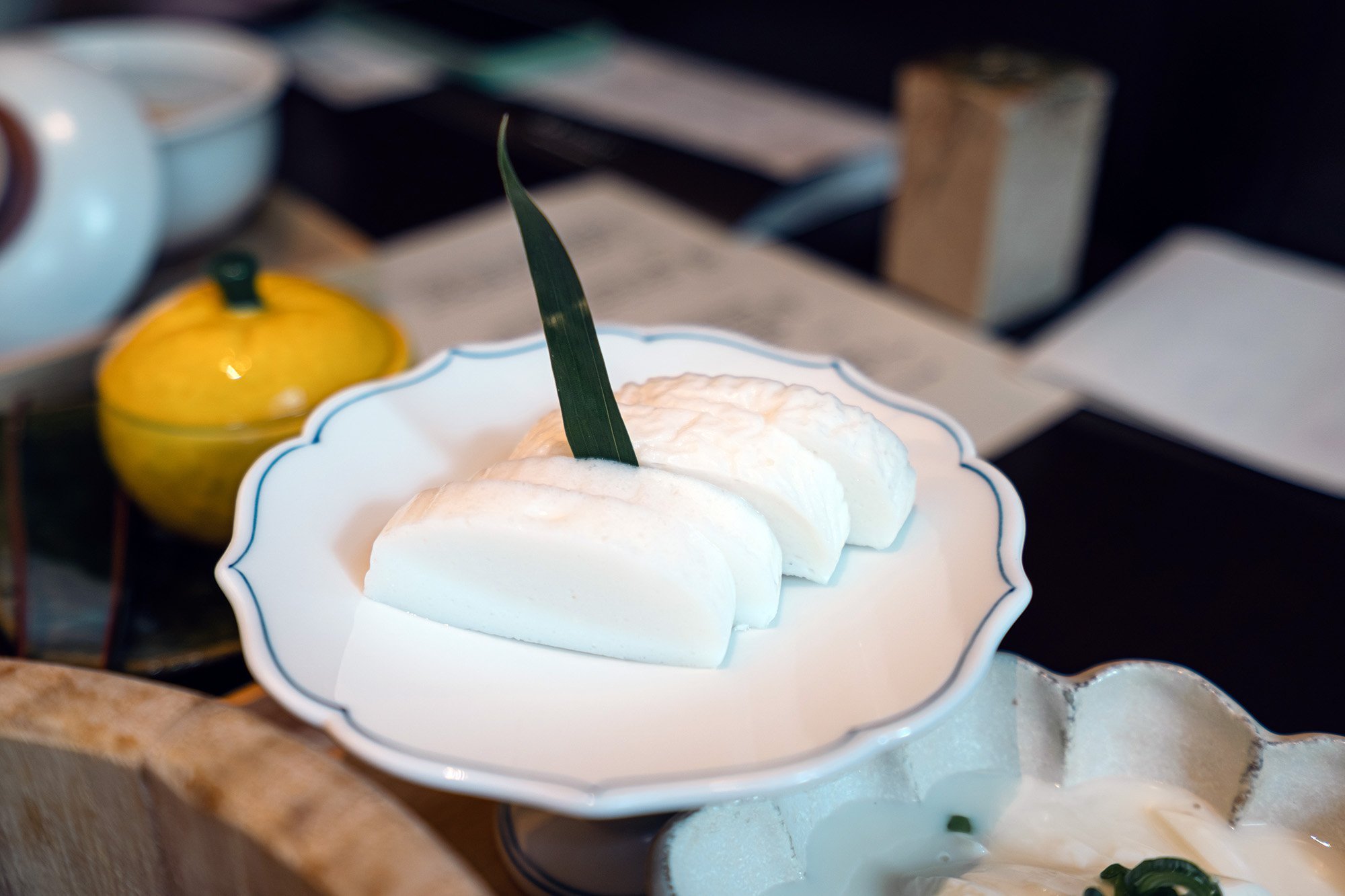
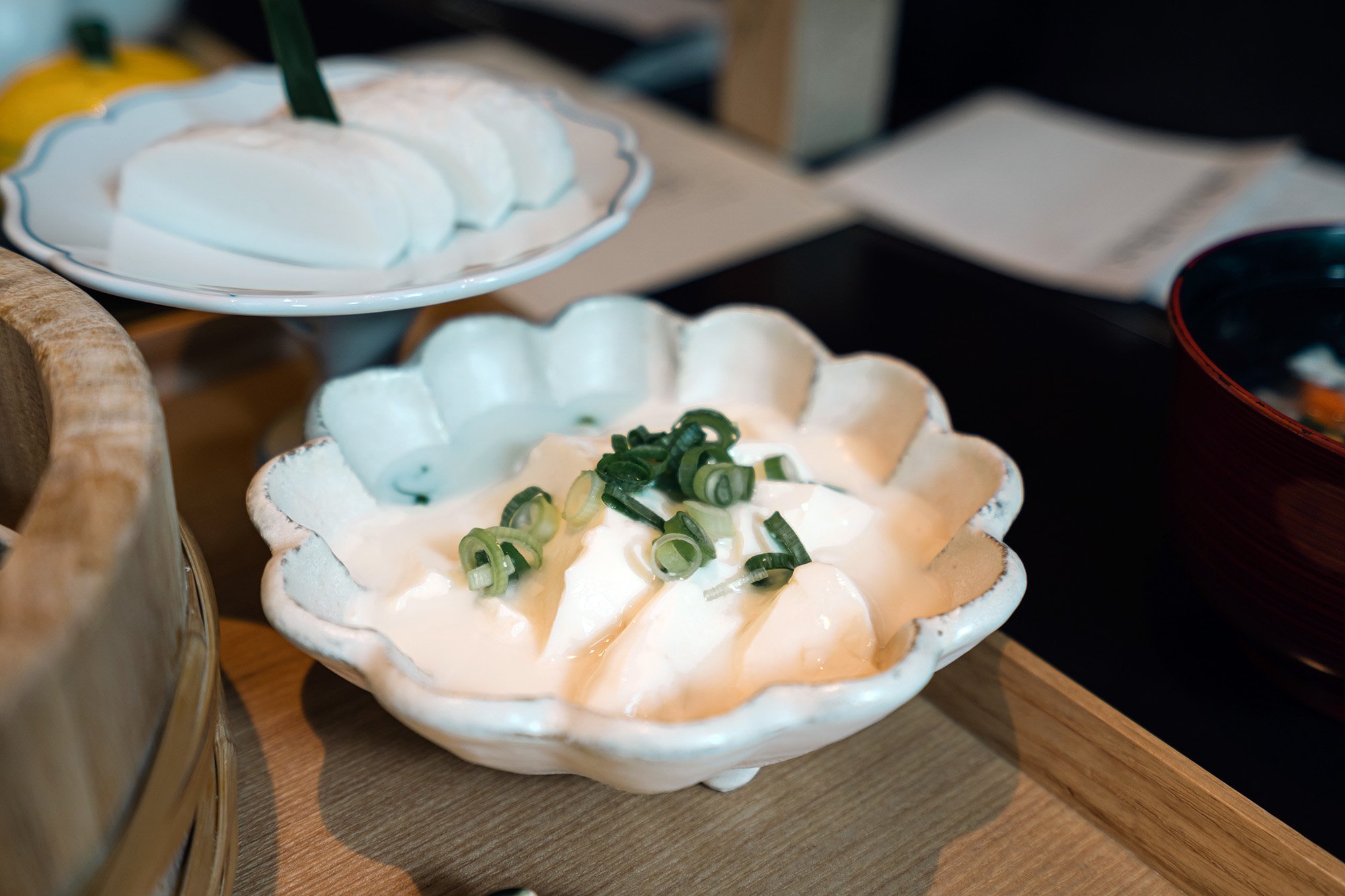
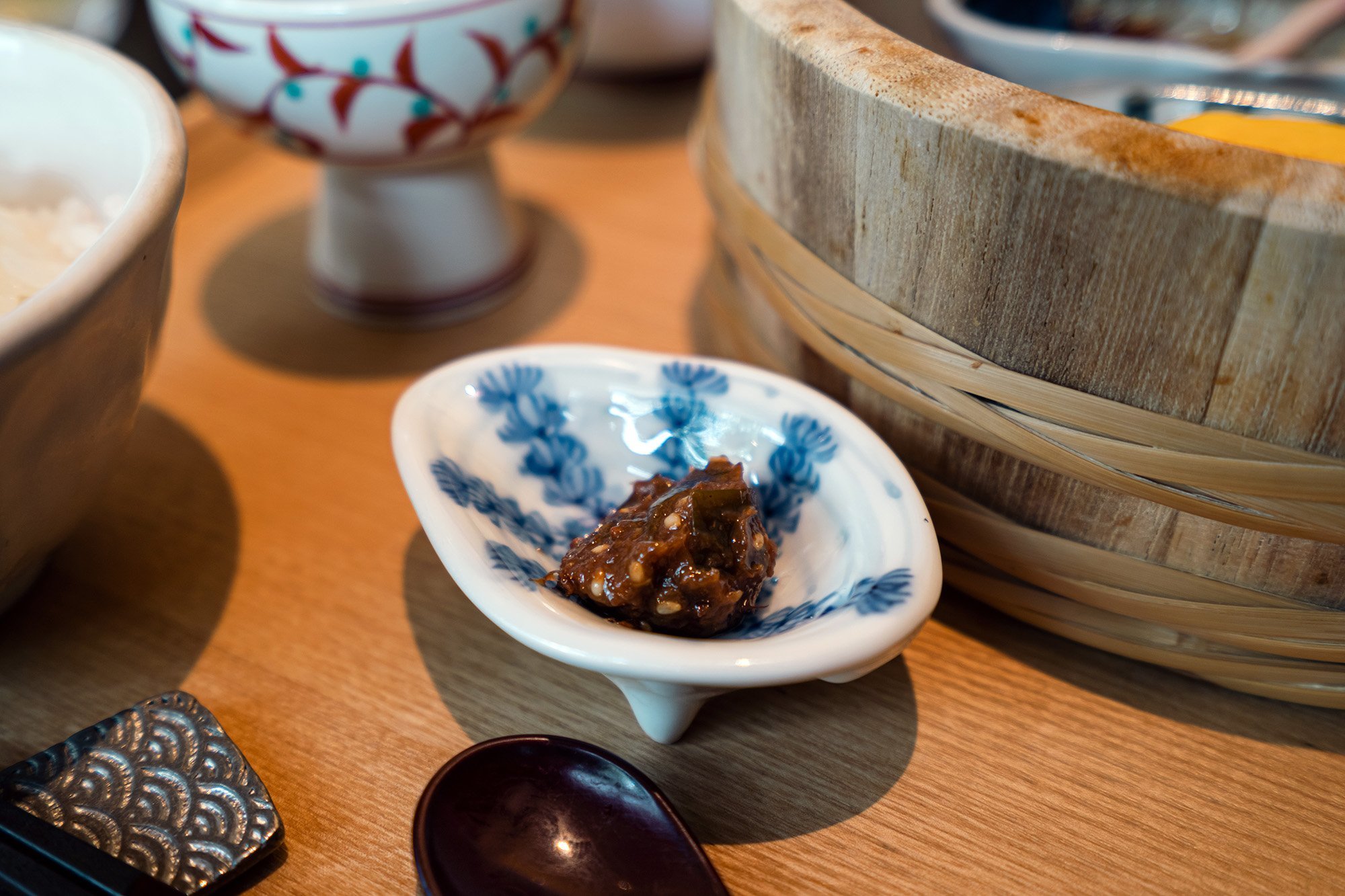
This was yet another enjoyable stay at a Hoshino Resorts KAI location and one in a rather remote, peaceful location that’s rich in history.
If you’d like to watch a video of my stay there, please check it out below.
Keep in touch:
More Travels:
Yanagawa
A unique experience boating through canals in Fukuoka that date back hundreds of years.
· Yanagawa is a small city in the southern part of Fukuoka Prefecture, near Kumamoto and Saga Prefectures
· It’s famous for its canals and boat rides
· One of the foods its known for is unagi
In the southern part of Fukuoka prefecture, on the middle of Kyushu island is Yanagawa. It’s not a major destination for most tourists, however it does feature a unique canal boating experience that I haven’t had anywhere else in Japan.
I’ve visited the area twice, once while I was living in Fukuoka in 2011 and once when I went for a trip in the late spring of 2022.
How to get there
Yanagawa is relatively easy to get to from Fukuoka City. You can catch the Nishitetsu-Tenjin-Omuta Line from Nishitetsu Fukuoka (Tenjin) Station in Tenjin to Nishitetsu-Yanagawa Station.
About Yanagawa
Yanagawa is a small city of just over 70,000. It’s located near Kumamoto and Saga prefectures, near the bottom of Fukuoka prefecture.
The city is most known for its canals. It was originally constructed in the mid-16th century by the Kamachi clan, and the canals were used for a castle. Since then, they’ve been maintained and the present city has been built around it.
Hakushu Festival and Parade on Water
I was fortunate that the first time I visited Yanagawa was being able to take part in their major festival: Hakushu Festival and Parade on Water.
A well known poet in the Meiji Era, Kitahara Hakushu, was born in Yanagawa, and the city comes alive for this festival each November that commemorates his death.
About 130 boats travel through the canals, passing by various musical performances, lanterns and decorations until arriving in an area to watch fireworks.
I was lucky to get to ride one of the boats then, drink and eat foods like oden.
Even without the festival, if you’re traveling in Fukuoka, it might be a fun experience to head down for a canal boat ride.
If you’d like to see what it’s like normally, check out my video at the 5:04 mark.
Wakamatsuya
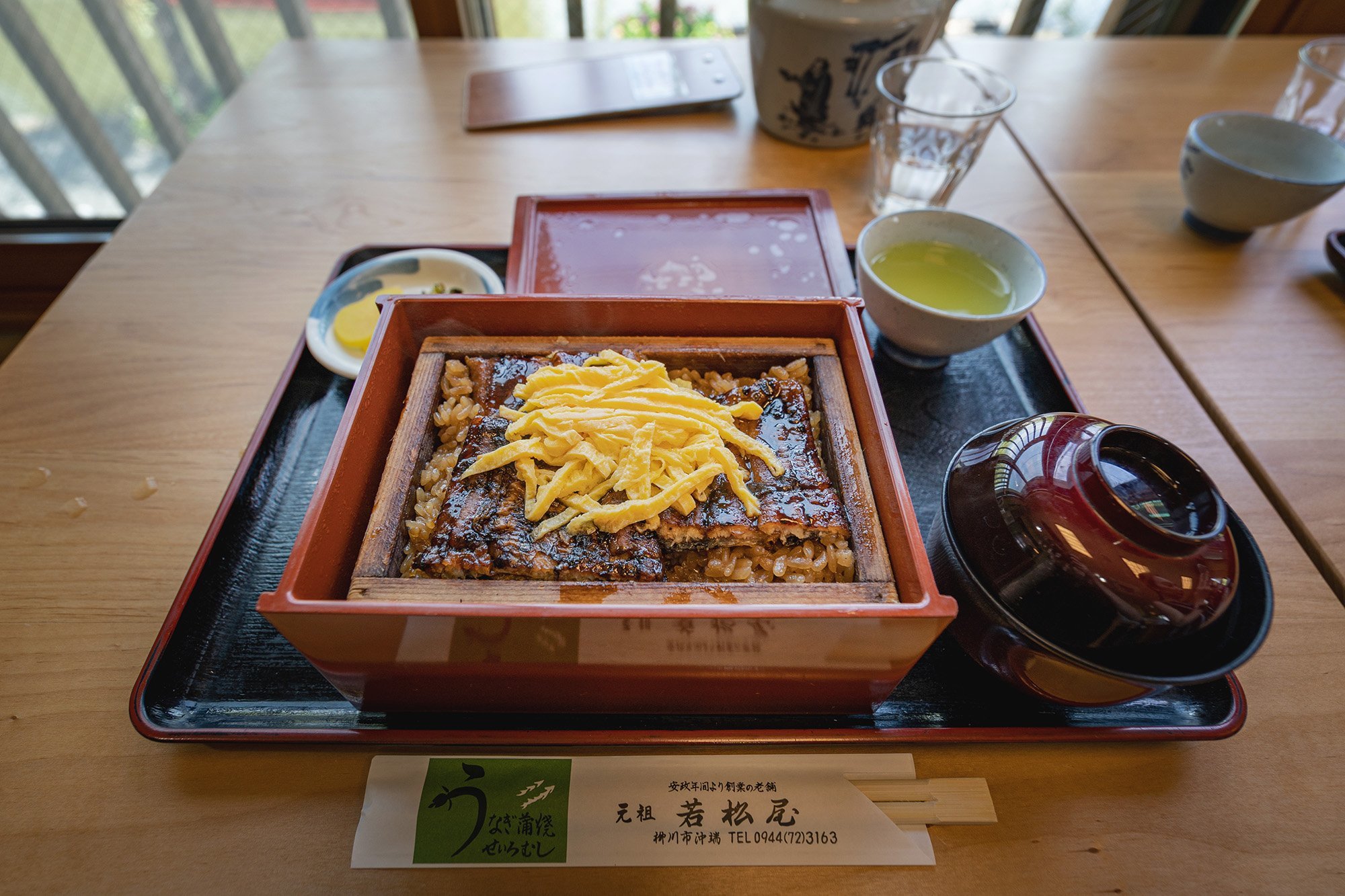

Unagi is famous in Yanagawa, but it’s unique here as it’s cooked differently from the typical method. It's steamed together with rice in a wooden box, resulting in a denser meal that’s full of flavor.
Wakamatsuya is one of the famous restaurants that serve this, and it made for a perfect stop after our ride through the canals.
le cafe patisserie Sakura
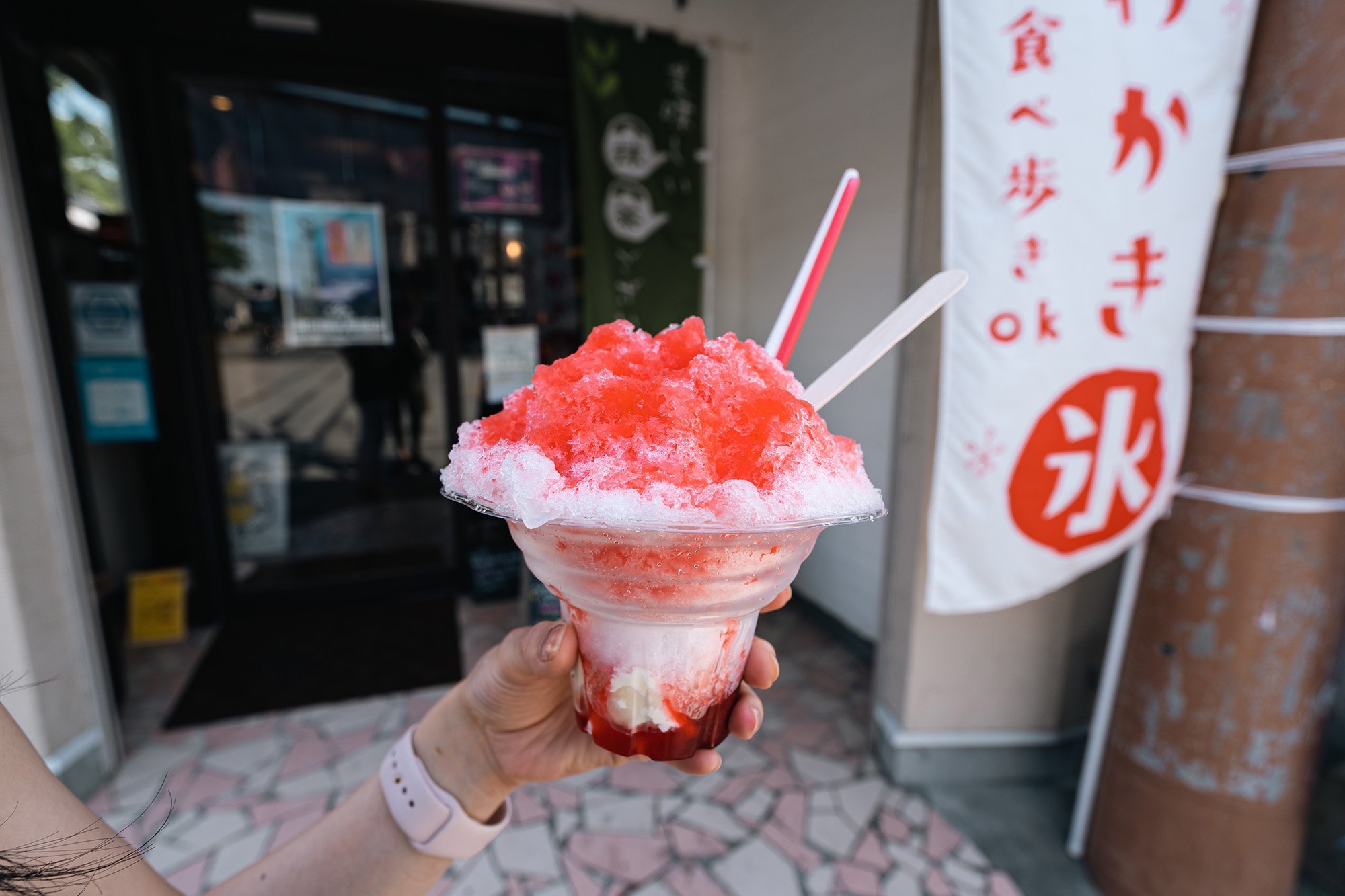

Keep in touch:
MORE TRAVELS:
Shizuoka: Hoshino Resorts KAI Enshu
A luxury ryokan resort focused on Japanese tea. The Hoshino Resorts KAI Enshu, an amazing getaway that dives into the local specialty.
Next to Lake Hamana is the Kanzanji Onsen area, a removed area near Hamamatsu City. Right at the lakeside is Hoshino Resorts KAI Enshu, a luxury resort that is all about tea.
Hoshino Resorts is one of the most well known and sought after luxury hot spring and resort ryokan chains in Japan.
If you’ve looked around at my Japan travels on my blog or watched some of my videos on YouTube, you may know that I’m a fan of their KAI brand. I’ve been fortunate to have stayed at some of their resorts such as:
We took a road trip to Hamamatsu in the spring of 2022, and I was able to stay at their KAI Enshu location.
How to get there
We drove to the ryokan, but it’s possible to get there by train and bus.
From JR Hamamatsu Station’s North Exit, there’s an Enshu Railway Bus from Bus Terminal Platform No. 1, that’s bound for Kanzanji Onsen. The bus will take you to Hamanako Bay Street, and it’s about a minute or two to the hotel on foot.
Hoshino Resorts KAI Enshu focuses on the local area, just like other locations in this line. Shizuoka Prefecture accounts for 40% of Japan’s green tea, so it’s only right that this resort is focused on it.
The resort itself is centered around the tea garden pictured at the top, and there’s tea at every turn inside the resort as well.
At the entrance of the main indoor lounge area are these fancy-looking, cold-brew green tea dispensers.
Nearby is their Tea Cellar, a long counter with personal teapots and about 13 different tea leaves with pictogram “Tea Cards” that explain about the tea and provide brewing recommendations.
It’s self-serve and you can make yourself a pot of tea and take it anywhere in the resort to enjoy.
In the same area is their Tea Lounge Bicharaku, a library space with tables and an elevated space that looks over the tea garden and Lake Hamana.
Activities
There are a number of activities that guests are able to take part in. One of them is their tea brewing experience.
Here, an instructor educates participants exactly how to brew their tea. Once everyone has successfully brewed their cup and finished drinking it, a challenge is presented.
Three different cold teas are presented, and one of them is the same type of tea as the hot one that everyone just brewed. The challenge is to guess which one that is. It’s harder than it sounds!
Rooms
We stayed in the Western-style Room with Lake View TA2, a room that measures 35㎡ big with 2 beds in the main space and a bathroom with shower (you probably won’t need it because of the onsen).
Like all the rooms, it had a main window that looked directly out at Lake Hamana which was gorgeous.
Sofa by the room window
The Hot Spring
There are two onsen hot spring baths at Hoshino Resorts KAI Enshu.
One has two tubs, an indoor and an outdoor one that’s pictured below. It’s set in a serene location, surrounded by nature, and has a running fountain of fresh water pouring in.
The second bath also has an indoor tub, but the main outdoor tub is unique as it has baskets of tea floating in it. The tub itself is wooden and circular, and although it’s a bit small, having the tea in their will give off an aroma that gives you quite a unique onsen experience.
The water that flows through Japanese onsen hot springs vary and depend on where the water is coming from. Each has a slightly different combination of minerals carrying different benefits to the skin and body.
Hoshino Resorts KAI Enshu’s onsen water is from the Kanzanji hot spring and is pretty clear in color. They report that their water has sodium, calcium, chloride, and strong saline.
One of the benefits said to be provided by this combination is that the salts coat the body like a veil to warm up and moisturize the skin.
Dining
Like most ryokan stays, Japanese kaiseki meals are included. Hoshino Resorts KAI Enshu’s meals are served in a dining hall that has separated rooms.
Like every other Hoshino Resorts KAI resort, this location had great meals.
The Hamamatsu area is known for unagi, or eel, but because we had plans to eat that in Hamamatsu city, we opted to go for the Standard Seasonal Dinner option.
Delicious dinner. Some pics are below.
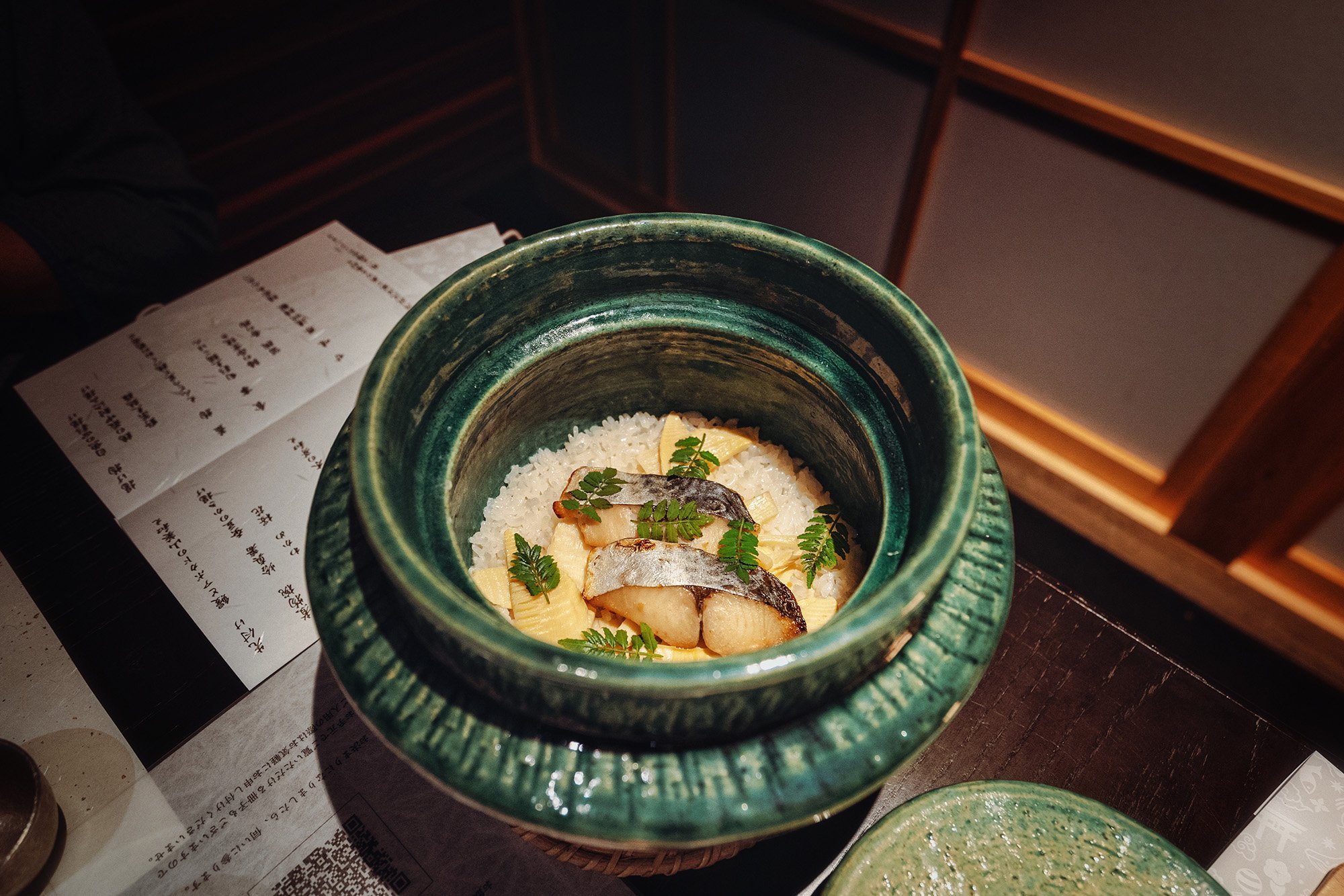
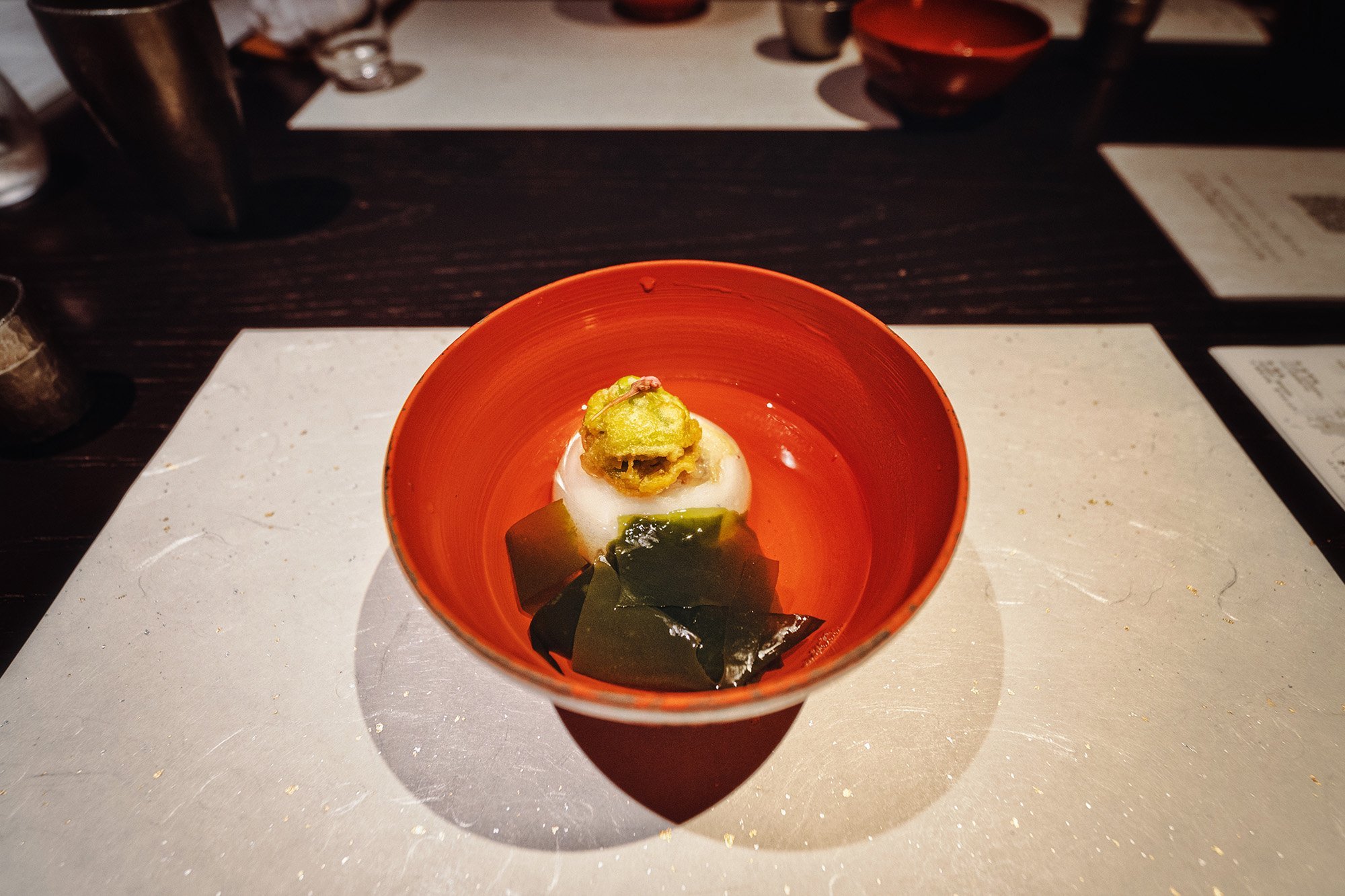
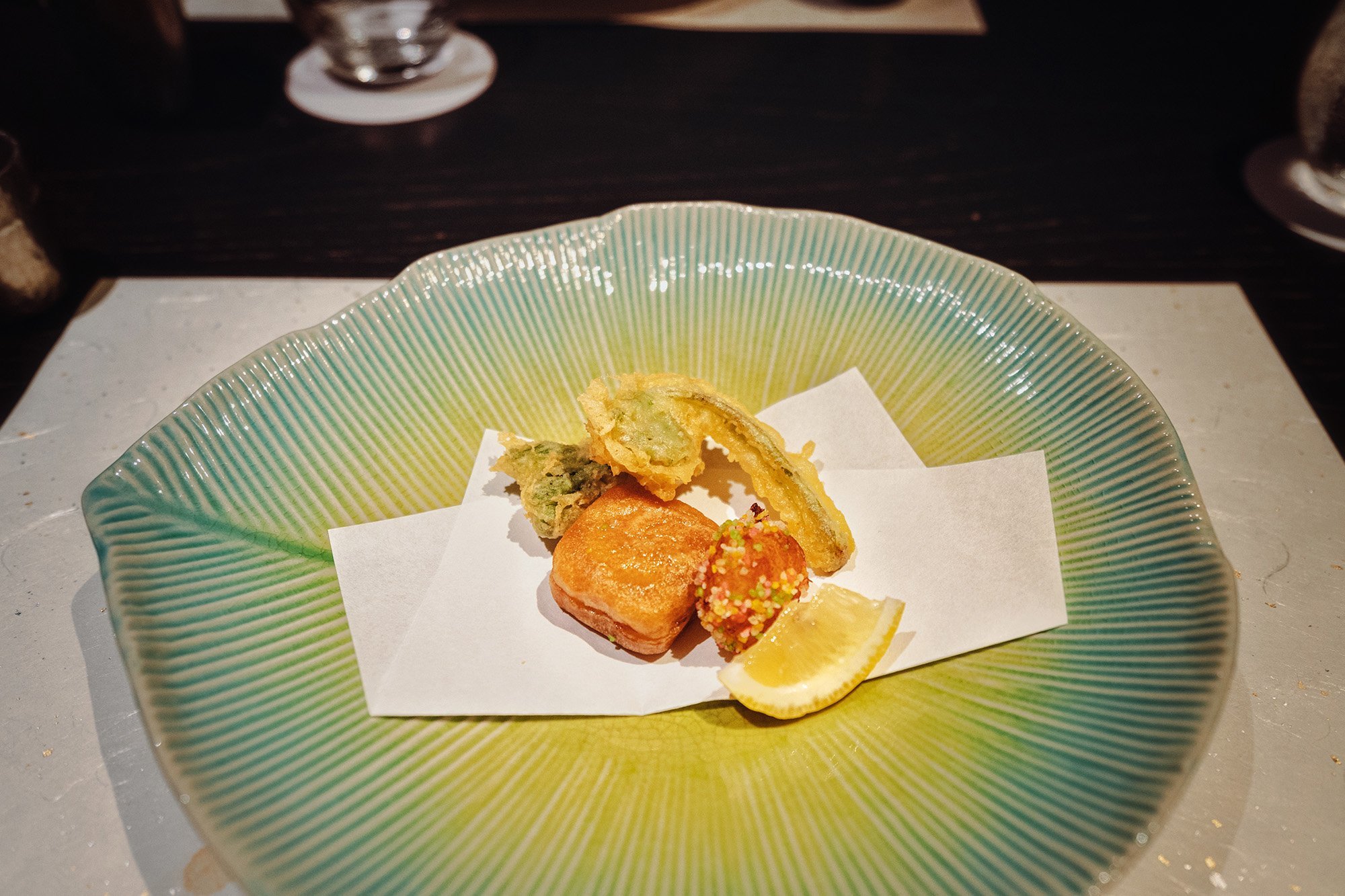

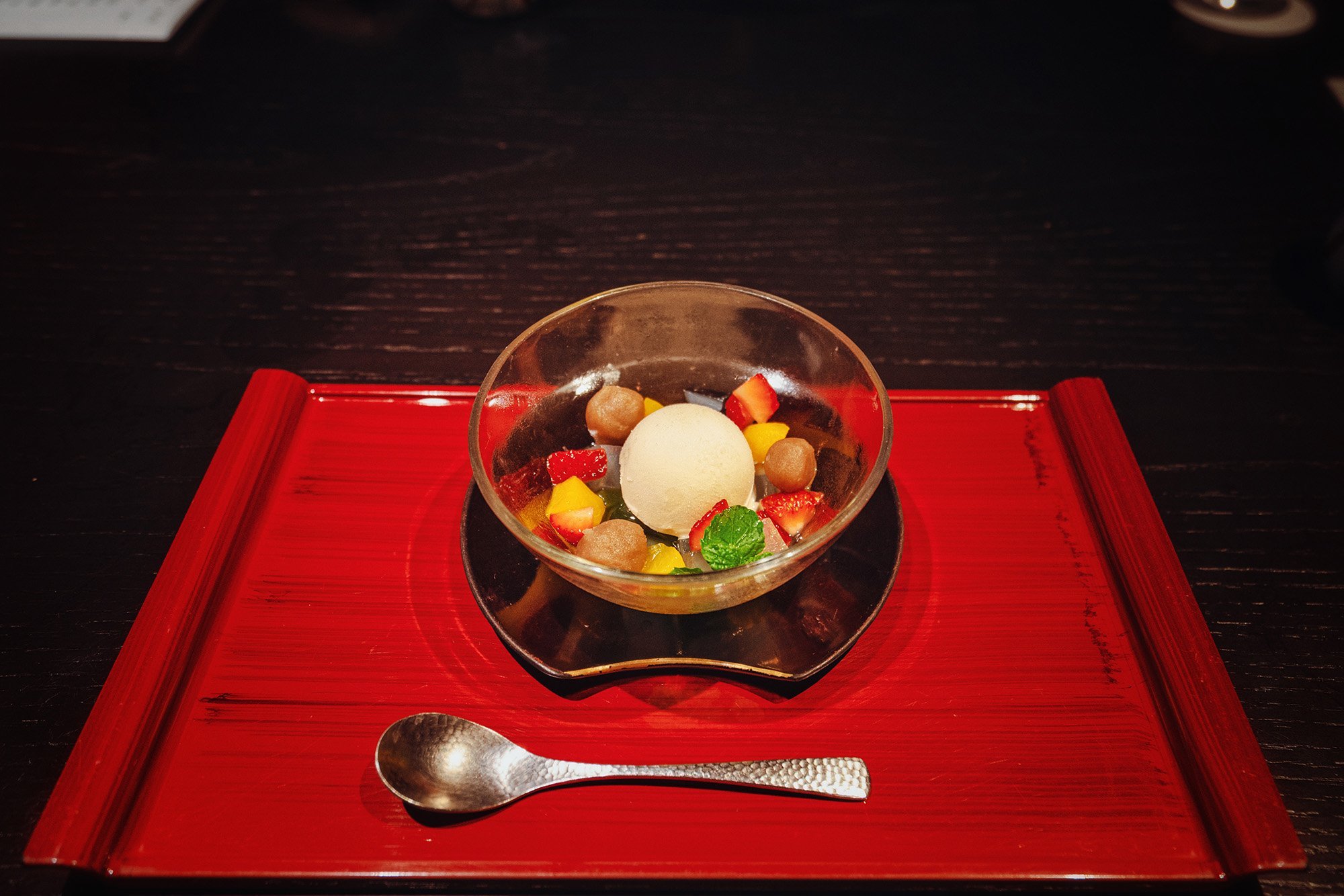
Breakfast was also good and staying with the tea concept, some of the main dishes were served in a box of tea on top of tea leaves.

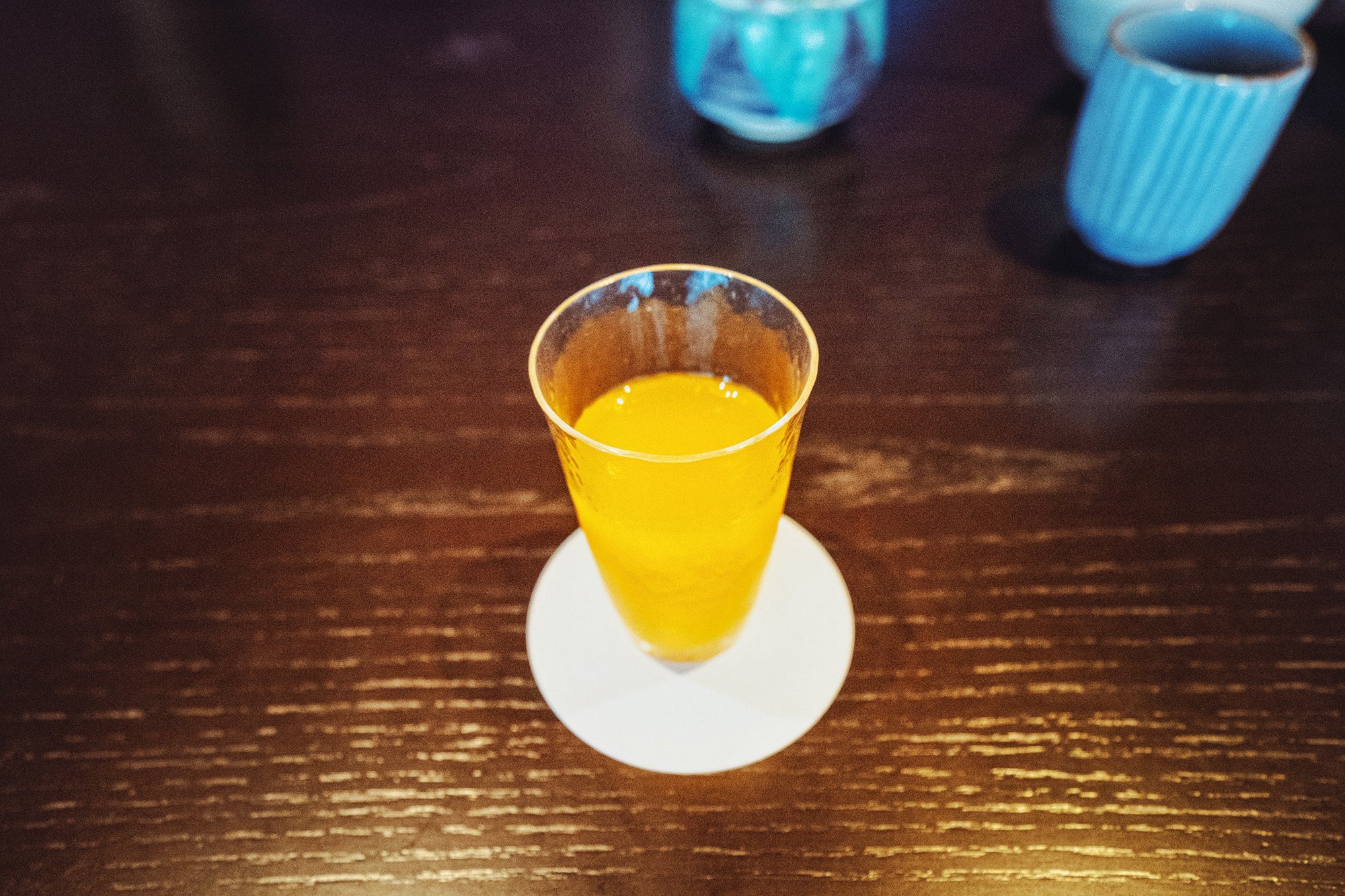
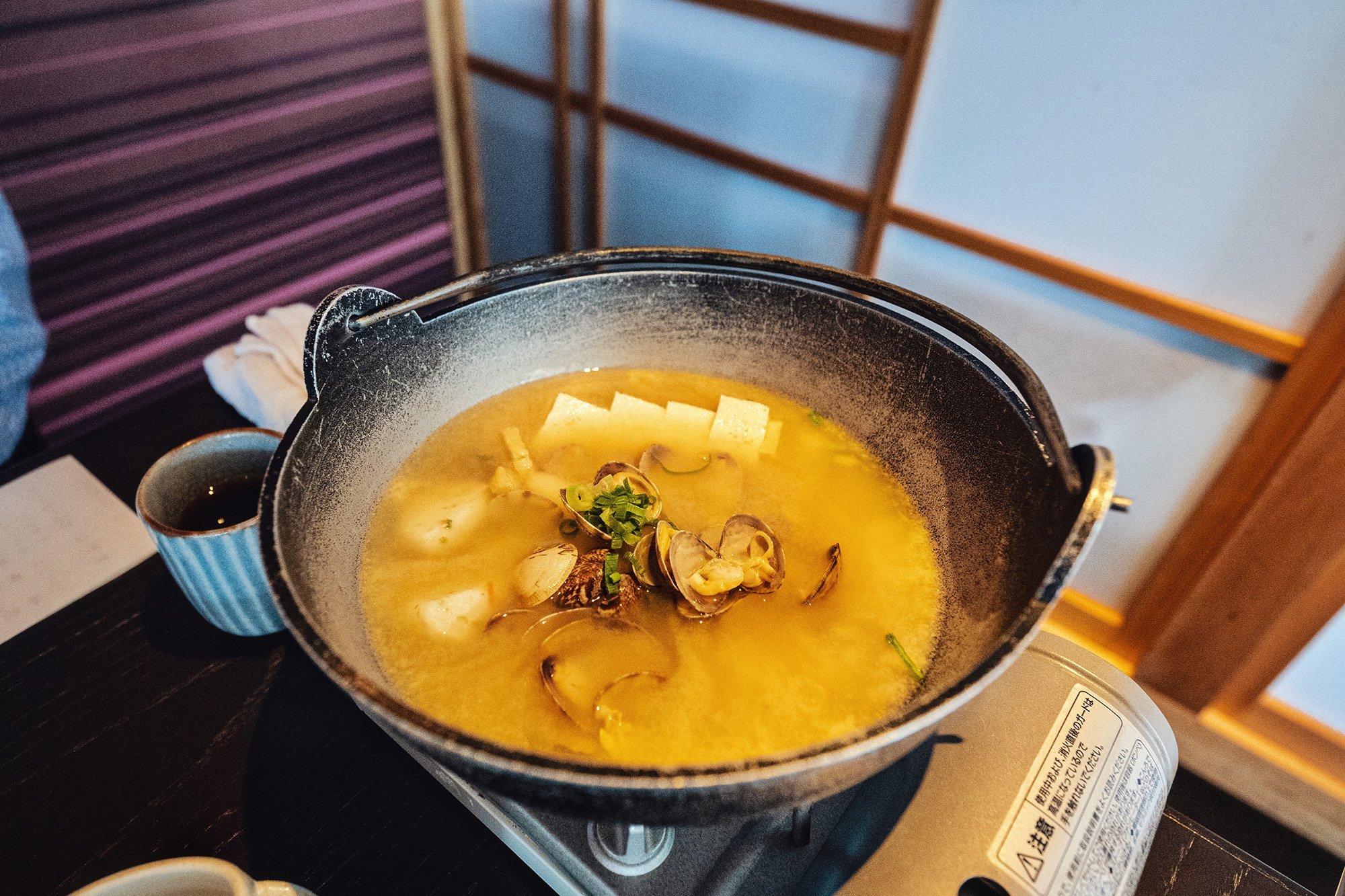

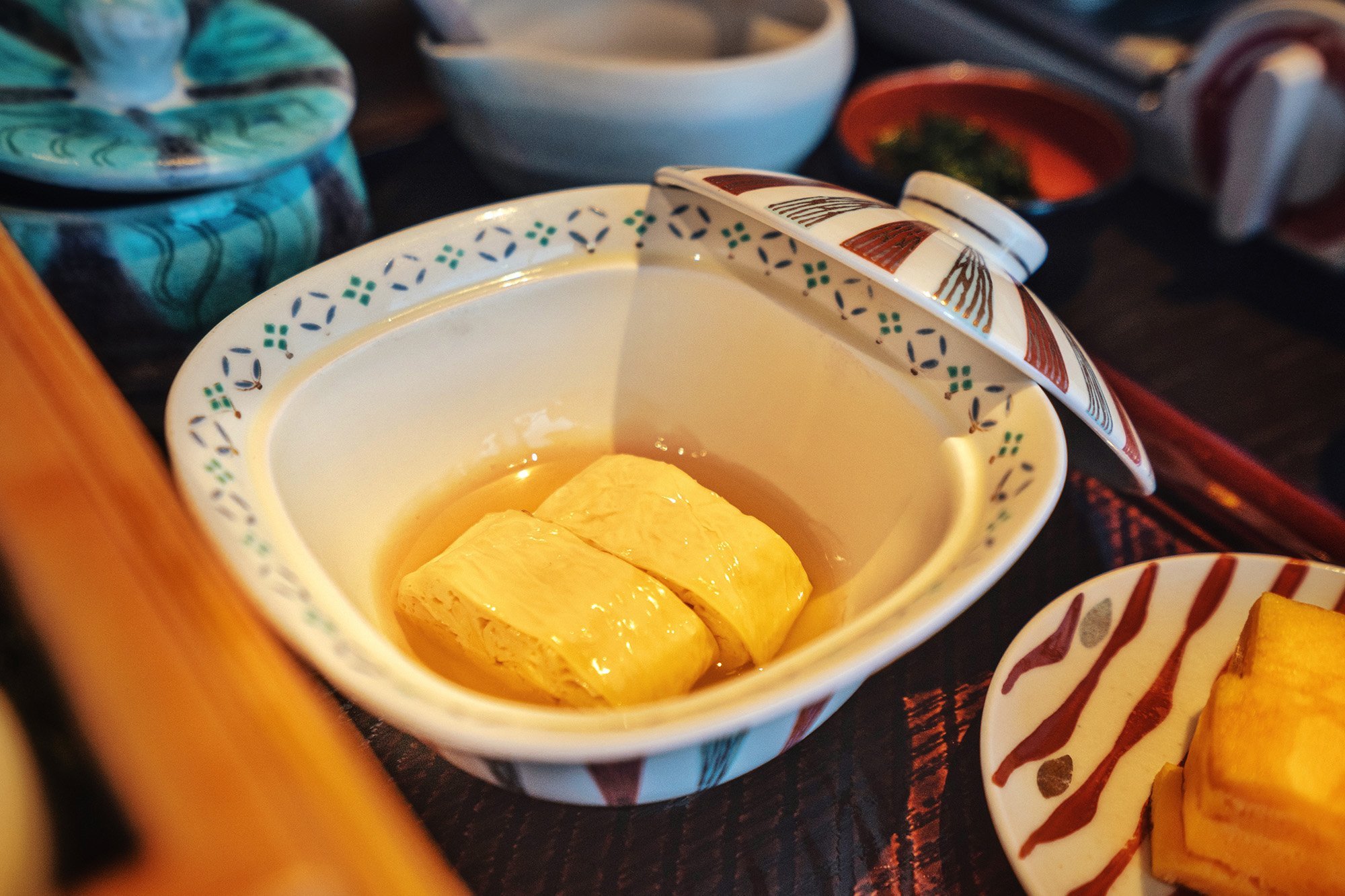
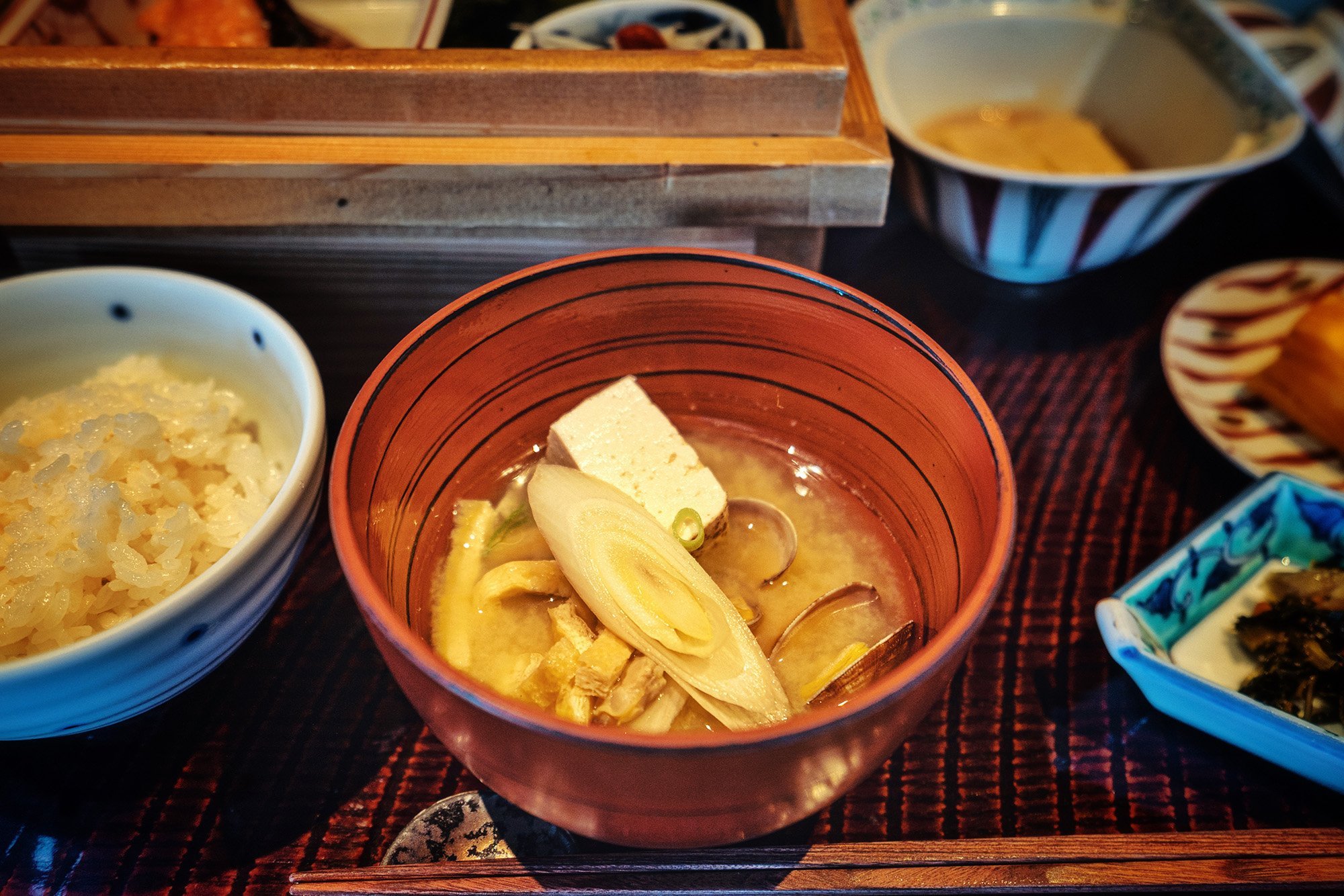
This was another enjoyable stay at a Hoshino Resorts KAI location and recommend it to anyone traveling in the area, especially if they have an interest in tea.
If you’d like to watch a video of my stay there, please check it out below.
Keep in Touch:
More Travels:
Yokohama
A look at Japan’s port city of Yokohama, the country’s second largest city that’s both historically significant and futuristic.
Yokohama is the 2nd largest city in Japan, located just south of Tokyo
Known as a port city, it was one of the first ports to open to foreign trade in Japan
It is popular for its Chinatown and its seaside district, Minato Mirai
Neighboring Tokyo, the two largest cities in Japan cover so much area that they almost blend together.
Yokohama is home to 3.7 million people and is the capital of Kanagawa prefecture, which is home to other popular destinations like the hot spring resort town of Hakone and beachside area of Kamakura.
It’s a popular place to visit, and was one of my destinations when I first visited Japan as an adult.
How to get there
By train, Yokohama is easily accessible from Tokyo and generally takes 1 to 1.5 hours. The Toyoko Line from Shibuya Station is a direct route along with the Fukutoshin Line from Omotesando Station.
About Yokohama
Yokohama is a photogenic city, especially in the main, Minato Mirai seaside area, where tradition and modernity come together.
It has a hint of an international feel to it due to its storied history. Japan had its borders closed off for some time, and it became an early port to open its doors to international trade. This led to communities being built for Western residents as well as Chinese, amongst others.
Both foreign tourists and Japanese alike visit Yokohama for the variety of entertainment that it offers. The city has popular wedding venues as well due to the existence of both traditional, Western-style buildings and modern ones, along with seaside views.
Being a part of the agency team that helped Yokohama City start up and run its municipal Instagram account as well as conduct related events overseas, I’ve been fortunate to able to get to know the city quite a bit.
Of course I can’t cover everything, but here are a few highlights that I’d recommend someone visiting.
CHINATOWN
Yokohama Chinatown is the largest Chinatown in Asia and one of the biggest in the world outside of China itself.
It has an area that extends several blocks, and has around 250 shops and restaurants. It’s one of the most popular destinations for people visiting the city.
Aside from the various places to eat and stores to browse, the area itself is beautiful. The lanterns that are strung up above the streets and alleys illuminate the ground below, and it’s almost like taking a mini trip outside of Japan.
MINATO MIRAI
You could say that all of the top destinations in Yokohama are in the Minato Mirai area.
The in-city theme park Cosmo World [J] is here, historical ships like the Nippon Maru, the recognizable half-moon shaped Intercontinental, and the Landmark Tower [J] that gives you 360-degree views of the city from 69 floors up are all here.
Minato Mirai was purposefully developed to be the commercial center that it is. Its name means “Port of the future” and so far it lives up to it.
Misc. Events
I’ve been fortunate enough to see other events, either privately or through work with Yokohama City.
One of my favorites is Yokohama Sparkling Twilight. This is a fireworks show that happens for two evenings in August, and can be viewed from Yamashita Park. One of reasons why I enjoy it is because while it does get crowded, it’s less crowded than most fireworks festivals in Tokyo and the view is better.
Another event that I’ve been fortunate enough to see is the Pikachu Outbreak! event where a ton of Pikachus take over the city. Unfortunately it seems that this annual event has been cancelled.
I made a video while working a couple days in Yokohama on a creative project in case you want to see more of the city. One of our key stops was the Gundam Factory Yokohama, a temporary exhibition with an amazing Gundam that actually moved.
Menya Katsuji
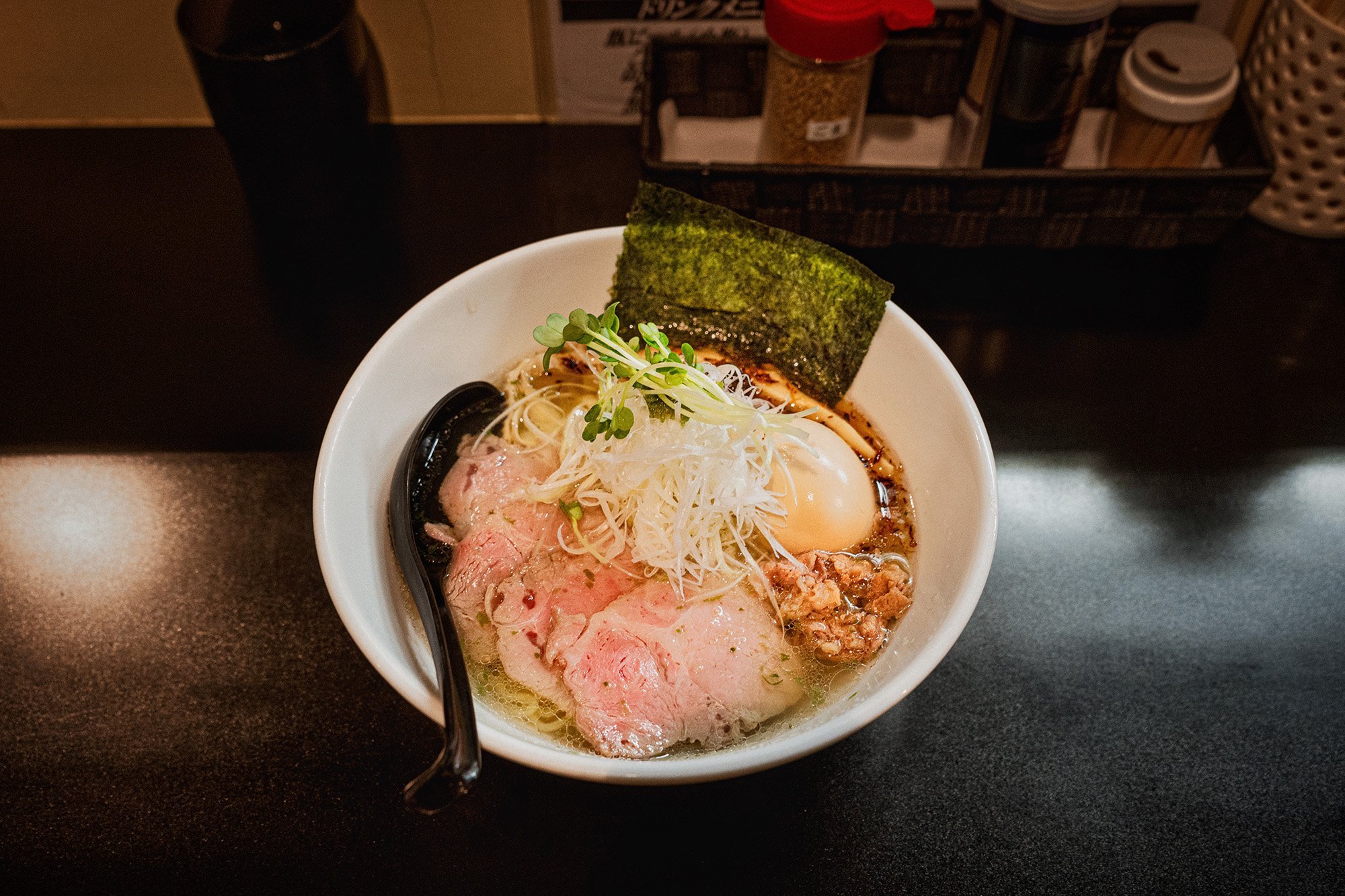
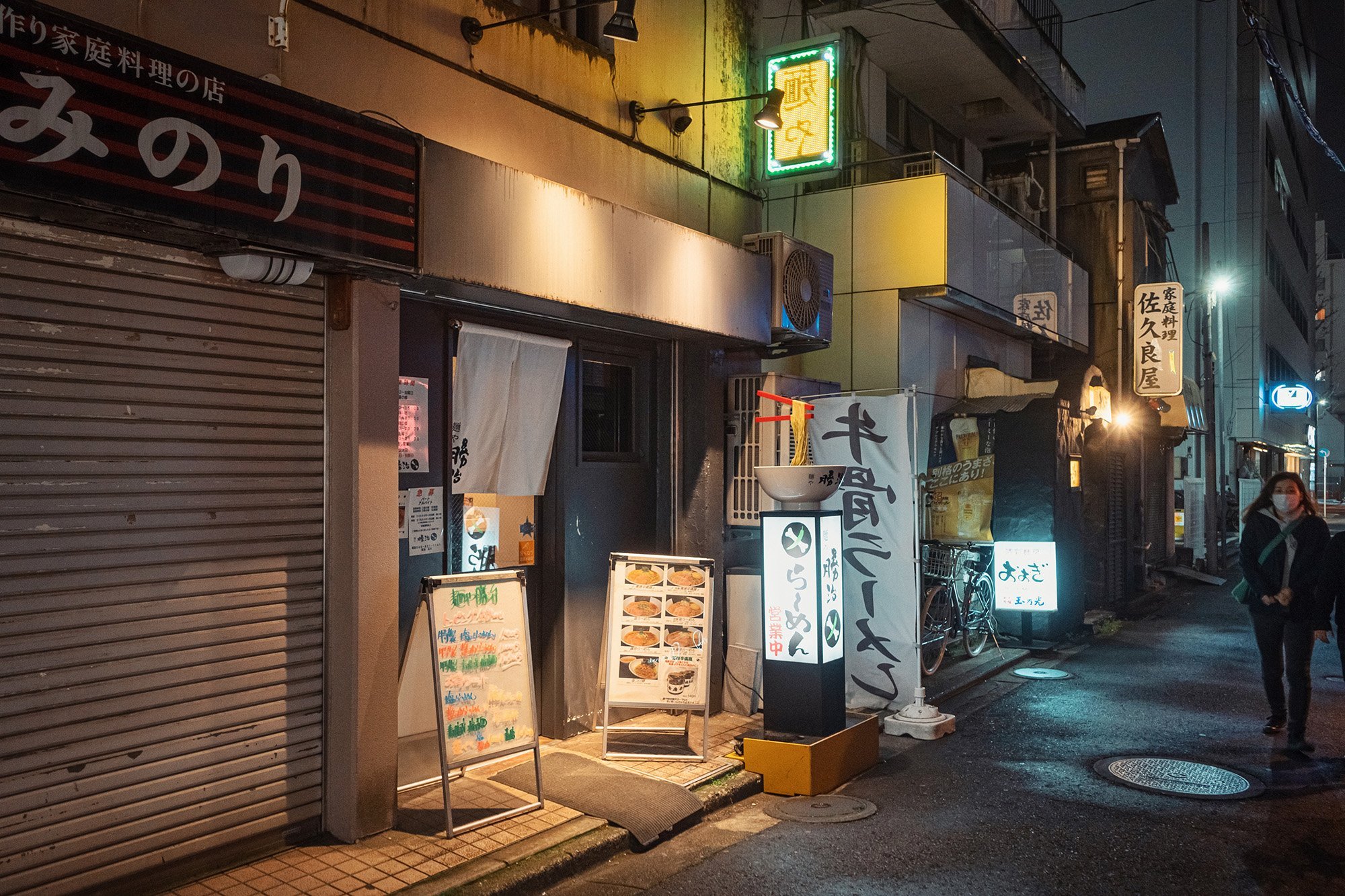
Down a side street near Yokohama Stadium and Kannai Station is Menya Katsuji, a hole-in-the-wall type of ramen shop.
They specialize in beef broth ramen, one of the more uncommon broth types. The broth itself is light, but it’s full of flavor and has a really nice spicy kick to it.
Topped with ingredients like char siu, a soft boiled egg, nori as well as some others, it has a taste that is unique and unlike any other I’ve had in Japan.
It’s delicious and I definitely recommend it.
Keep in touch:
More travels:
Matsuyama
Ehime’s main city, and home to the famous Dogo Onsen and Matsuyama Castle.
Matsuyama is the capital city of Ehime Prefecture
It is most known for its onsen hot springs and mkian oranges
It’s the largest city on Shikoku Island, the smallest of Japan’s major islands
Matsuyama is a city located in the northwest area of Ehime Prefecture. With just over half a million people, it’s the largest city in both the prefecture and Shikoku Island as a whole.
How we got there
Because Matsuyama is on Shikoku Island, the best way to get there is by flying into Matsuyama Airport. Once in the city, the Iyotetsu trams are a convenient way to get to various destinations such as the central Okaido area, Matsuyama Castle and Dogo Onsen.
About Matsuyama
Matsuyama is most known for its onsen hot springs, and the most famous area for them is Dogo Onsen. It’s a quaint town area filled with many ryokans (traditional Japanese inns), shops and attractions.
It’s also home to Matsuyama Castle, which sits on a mountain in central Matsuyama, overlooking the city.
Foodwise, the area is known for mikan oranges and a dish called taimeshi (sea bream fish and rice). It’s usually cooked in one of two ways; with the fish and rice steamed together, or with the fish eaten in sashimi style with a raw egg and rice.
I visited in late 2021 and found it to be a relaxing city that exceeded my expectations, although I admit that I didn’t really have any. I recommend spending a day or two here.
I also created a video while visiting Matsuyama and Ehime Prefecture:
Where we stayed
I experienced two hotels - one by myself while I worked and one as a couple.
Dormy Inn
The first was Dormy Inn, located on Okaido shopping street, a central area in the city.
Not only was it convenient and reasonable, there was a partial open-air onsen along with great amenities, free food served at certain hours, and free desserts such as popsicles.
https://www.hotespa.net/ [J]
MAP
Hotel Kowakuen Haruka
The second hotel, Hotel Kowakuen Haruka, was a Japanese-style ryokan right off the Dogo Onsen shopping street. Our Superior Twin room was about 35 m² (377 ft²), and half the room was tatami.
The breakfast was a buffet of both Western and Japanese foods, and there’s an onsen hot spring as well.
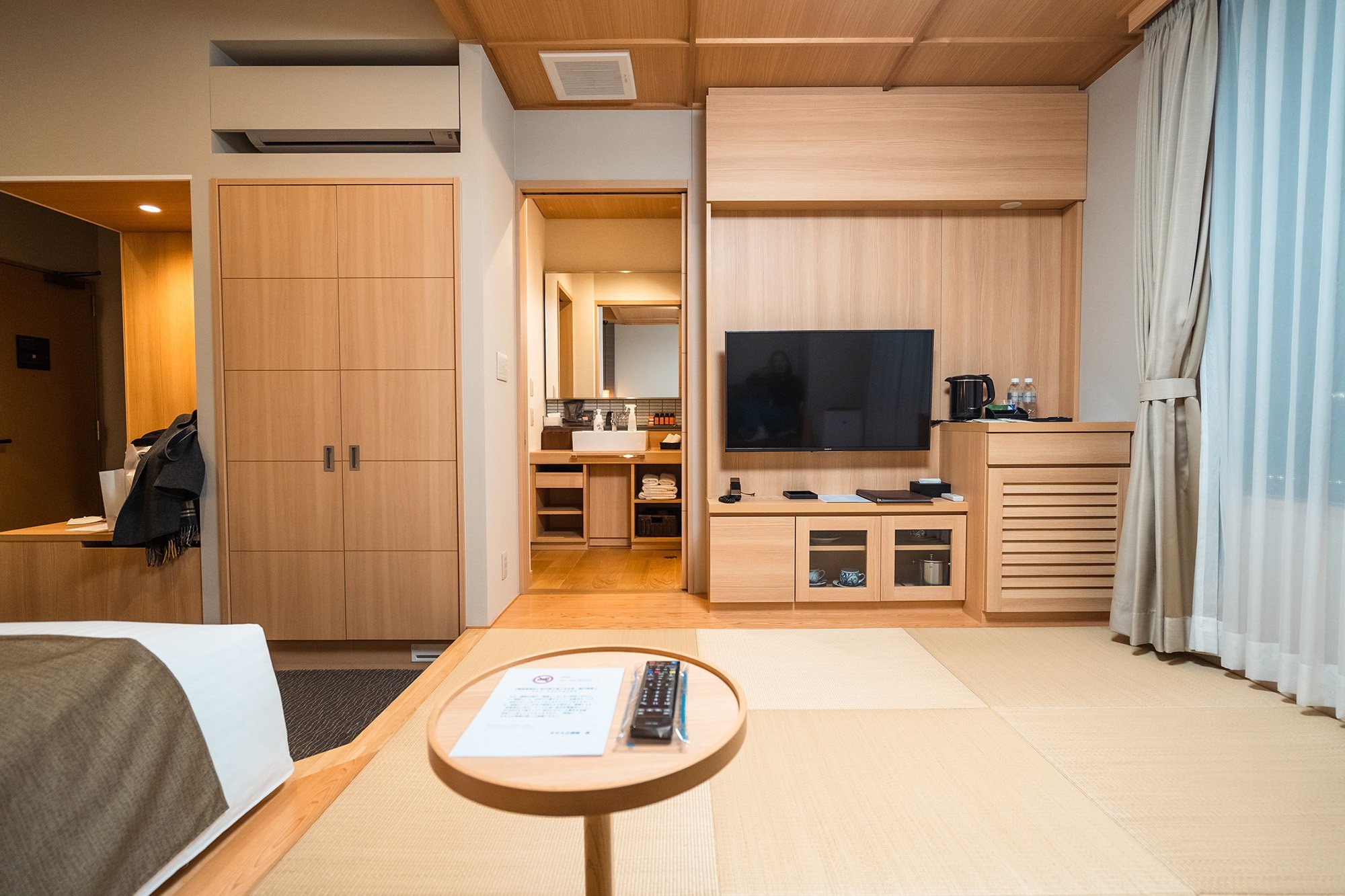
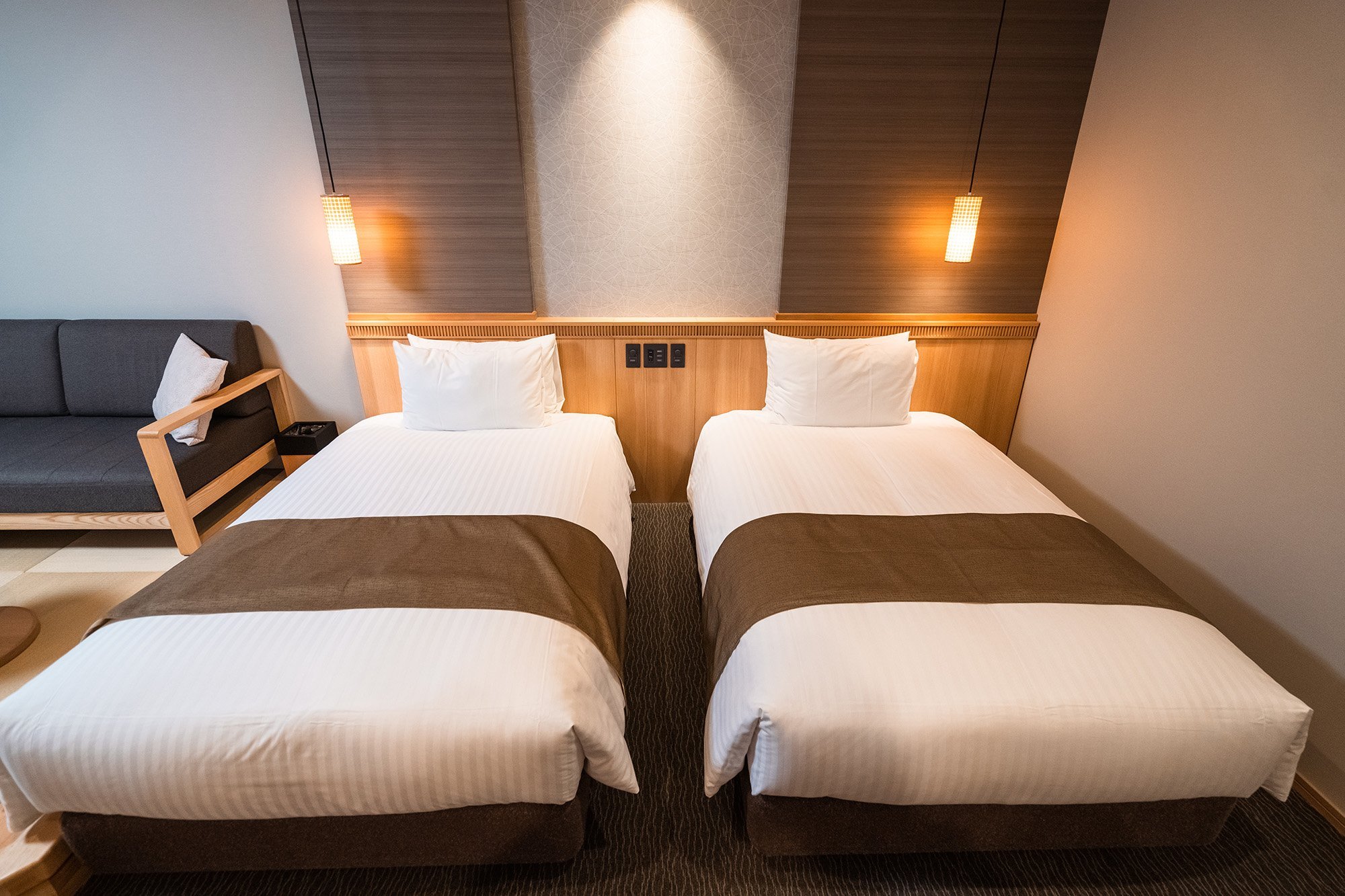
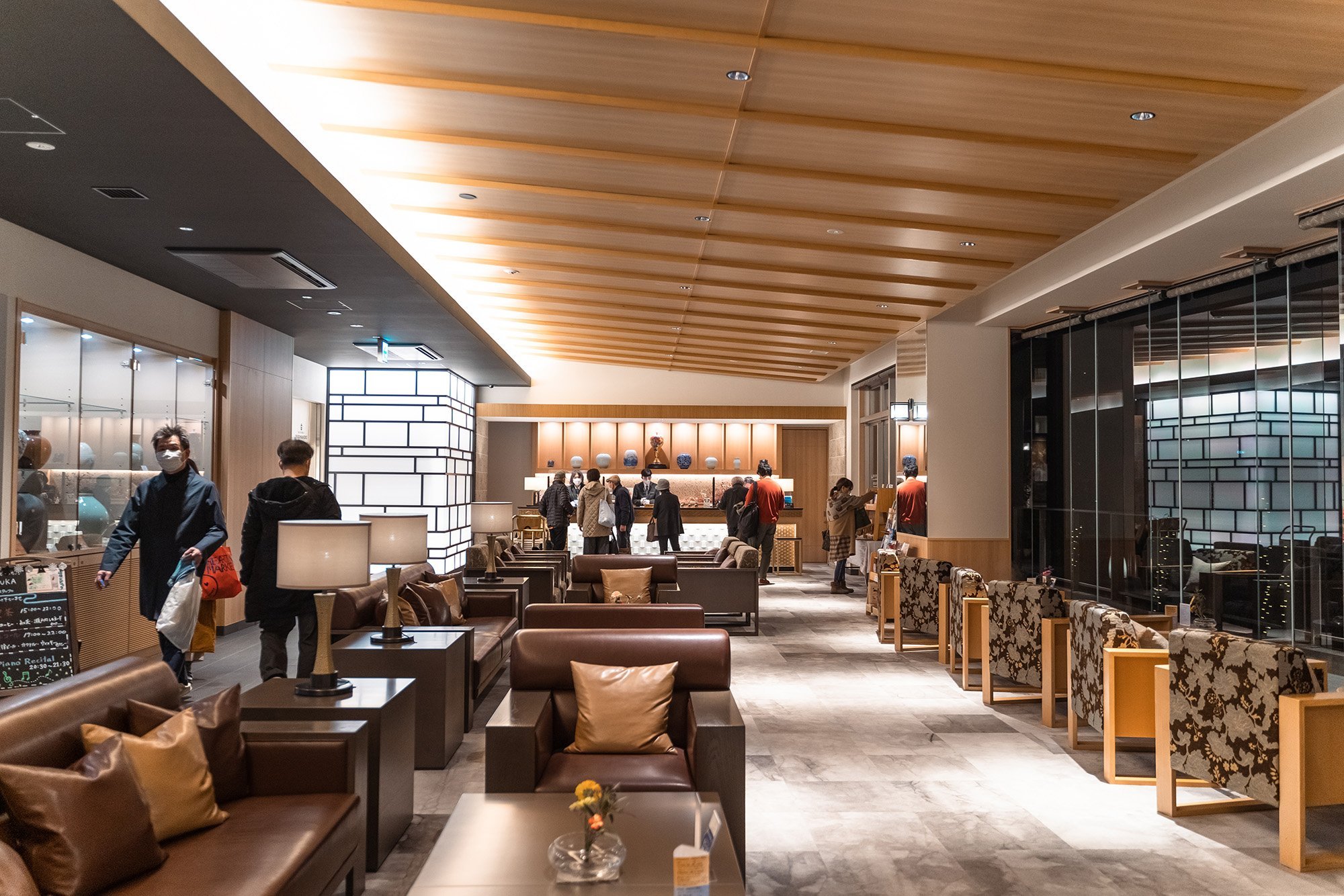


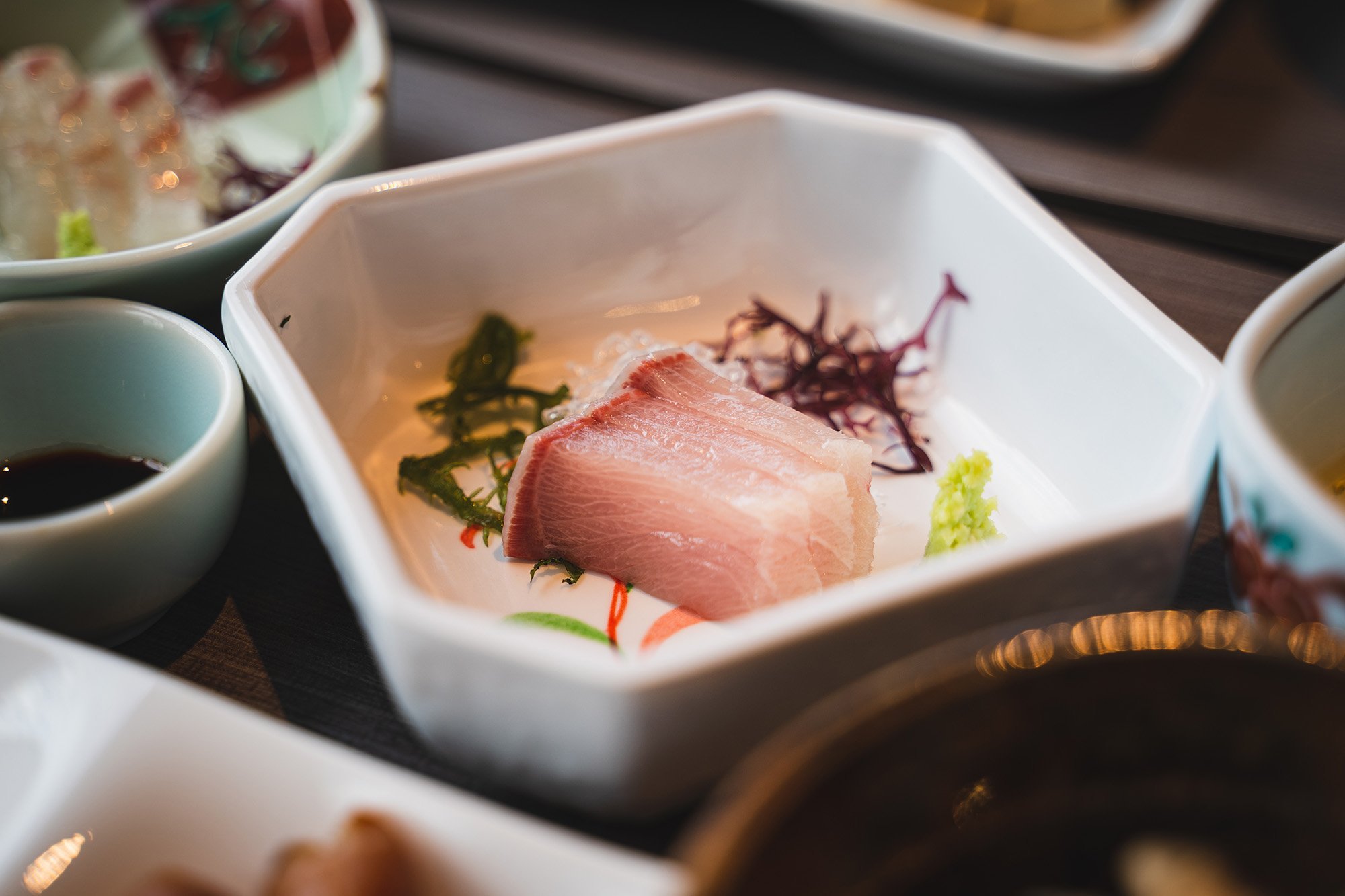

Dogo Onsen is one of Japan’s most famous onsen hot spring areas, and is the main tourist destination in Matsuyama City.
The main attraction is the Dogo Onsen Honkan, a public bathhouse that dates back in 1894. It’s said to have served as an inspiration for the Miyazaki film “Spirited Away”, but unfortunately it was covered due to an ongoing renovation.
The Iyotetsu tram goes right up to the Dogo Onsen shopping arcade.
The shopping arcade is about 250 meters long, and has various shops selling things such as local snacks and gifts to Imabari Towels, Japan’s most famous towels that are made in nearby Imabari.
The Botchan Karakuri Clock is right next to the shopping arcade’s main entrance. In the evenings, it comes alive.
The clock extends upwards on the hour while playing music, and its doors open as figurines move about. You can see some it in this part of my video.
The Botchan Ressha, or Botchan Train, is a small replica of a train that was used by locals for 67 years from 1888. It’s now diesel-powered and runs right to the central area of Dogo Onsen.
Starbucks has many “special” locations in Japan that are in historically significant buildings. This one is right in Dogo Onsen Station, a Meiji era building that was built in 1895.
Matsuyama Castle
Matsuyama Castle sits on top a centrally located mountain, giving visitors a wide view of the city.
It‘s one of the 12 castles in Japan that have basically remained intact over the years. It was originally finished in 1628. The tower today was built as a replacement in 1820.
The castle is only a few blocks from the Keisatsusho-Mae station on the Iyotetsu tram.
From there, you can either take a single-chair lift or a gondola up the mountain. From there, it’s a short uphill walk to the castle.
The lift up and down Matsuyama Castle
We went up for a visit on the last day of our trip. Being that it’s high above the city and it’s a place surrounded by nature, it’s quite peaceful.
https://www.matsuyamajo.jp/ [J]
The main dish to try here is taimeshi.
Where we ate
Matsuyama Taimeshi Aka
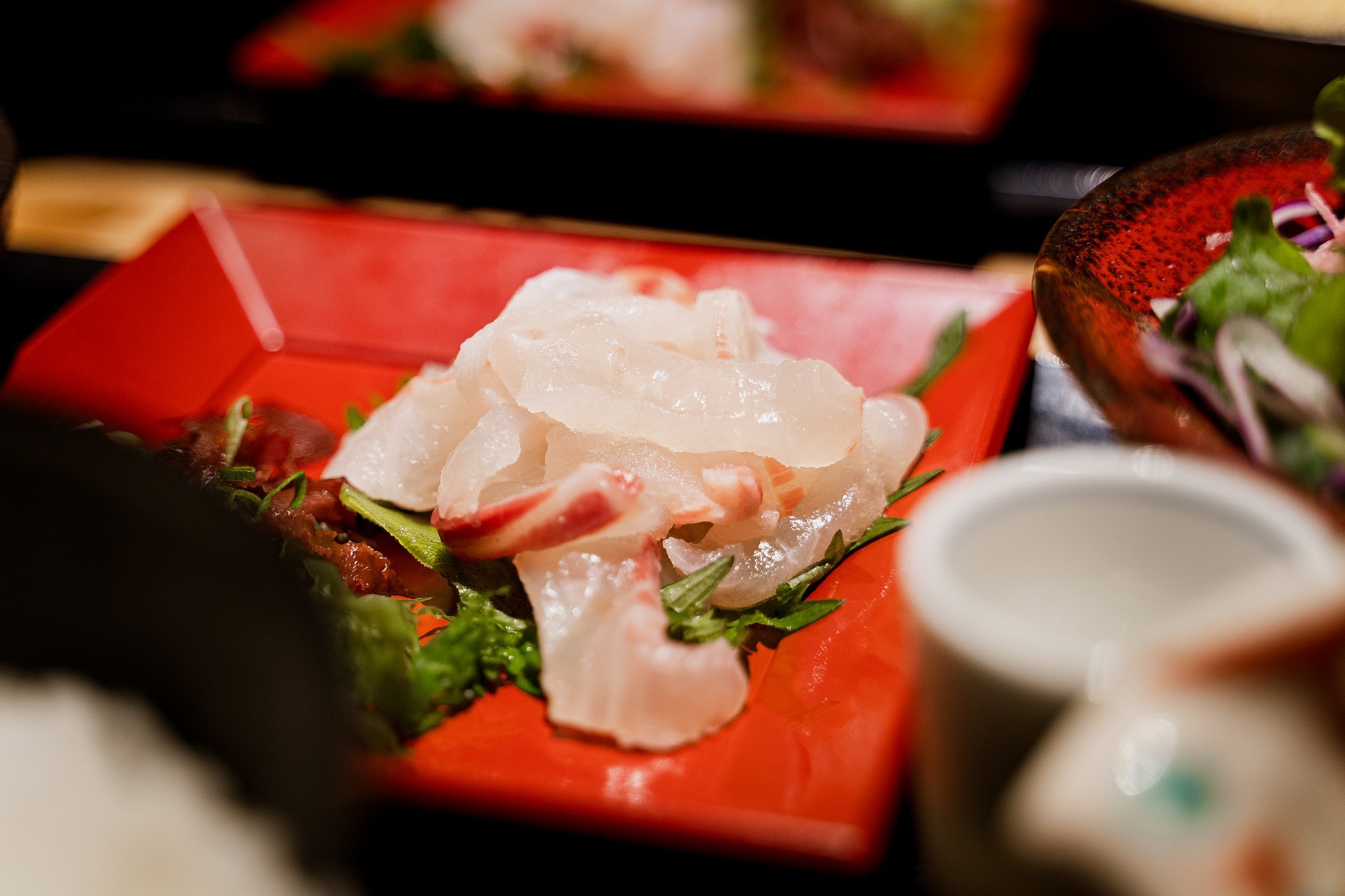
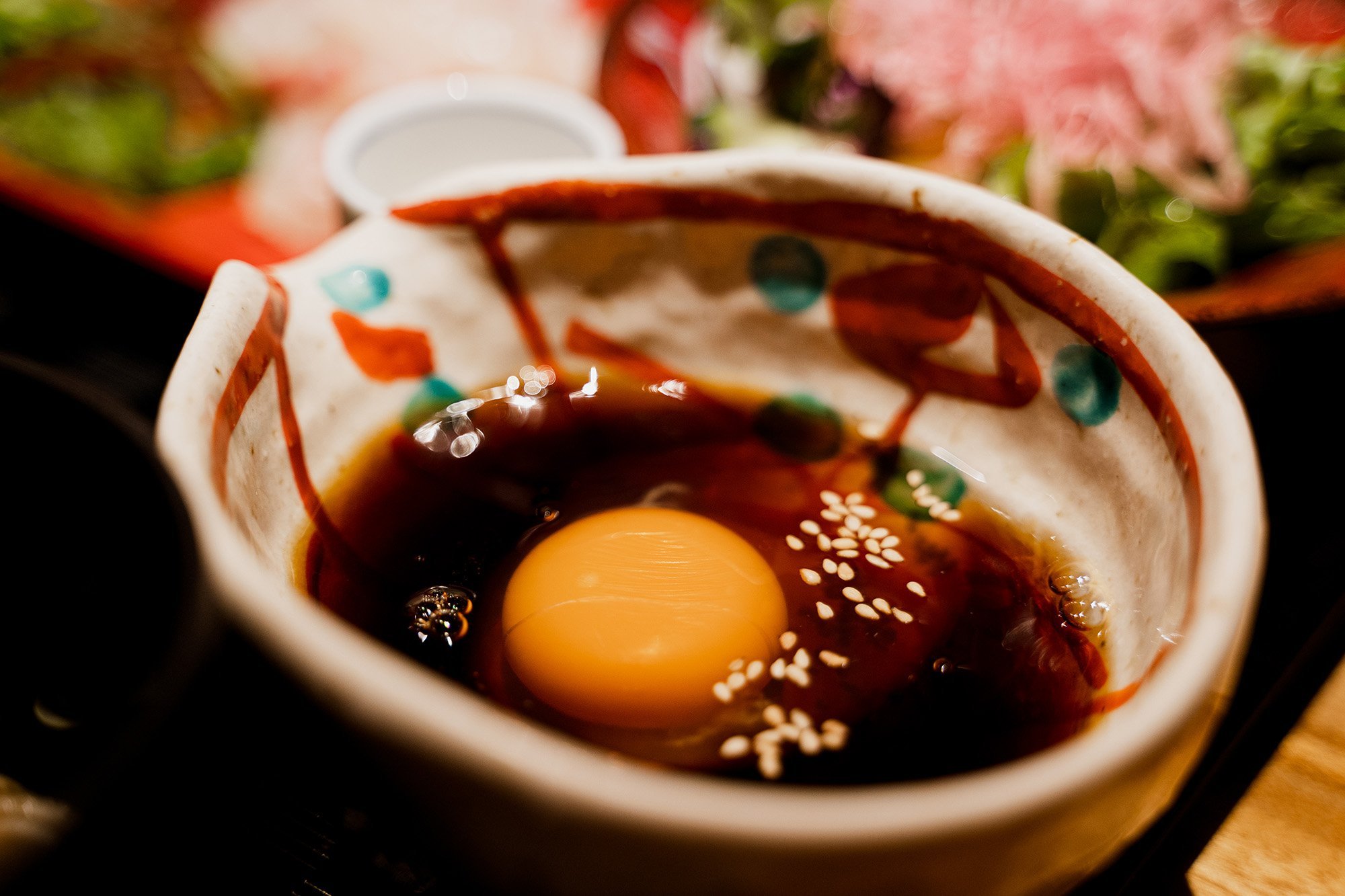
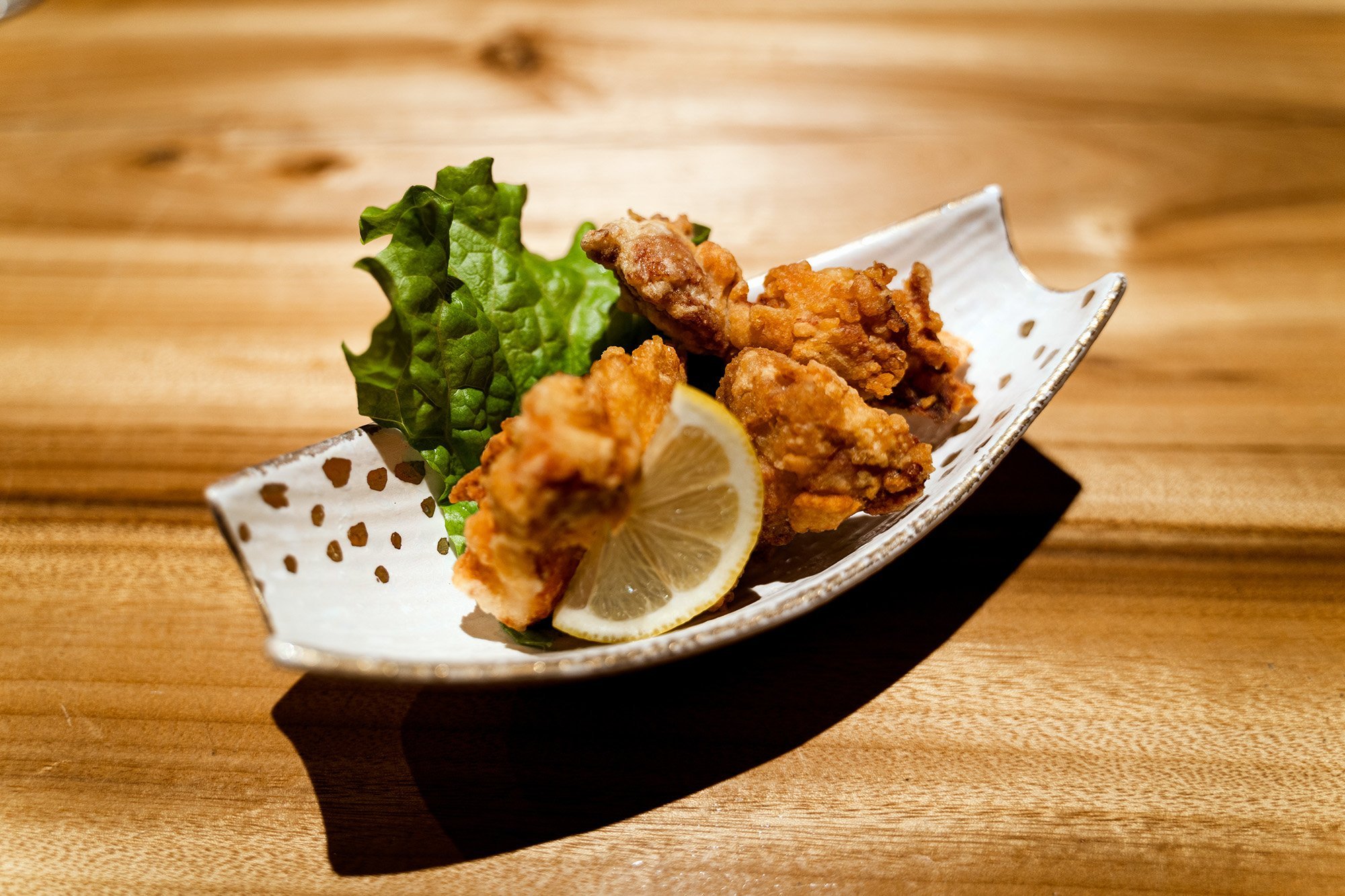

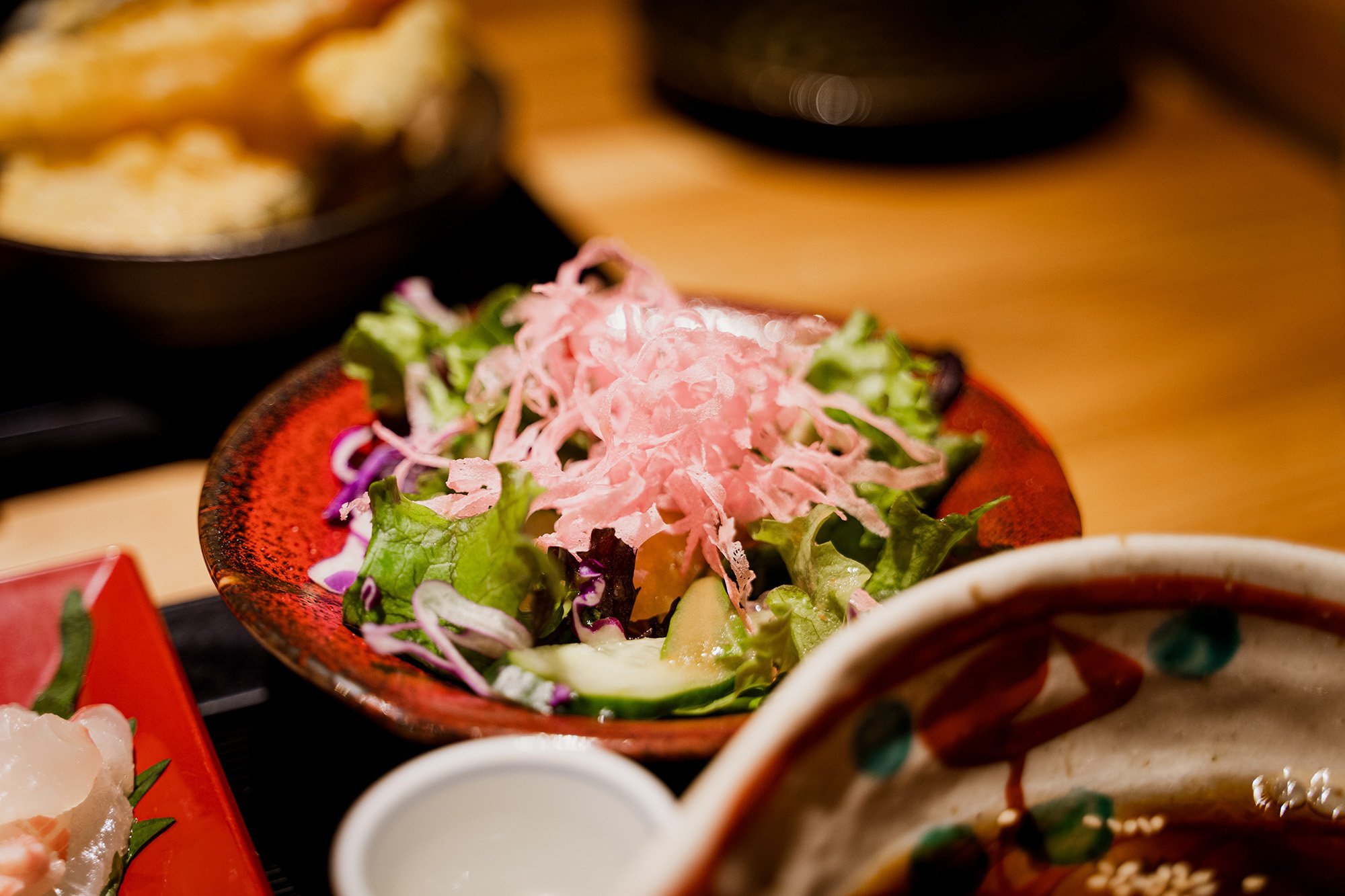
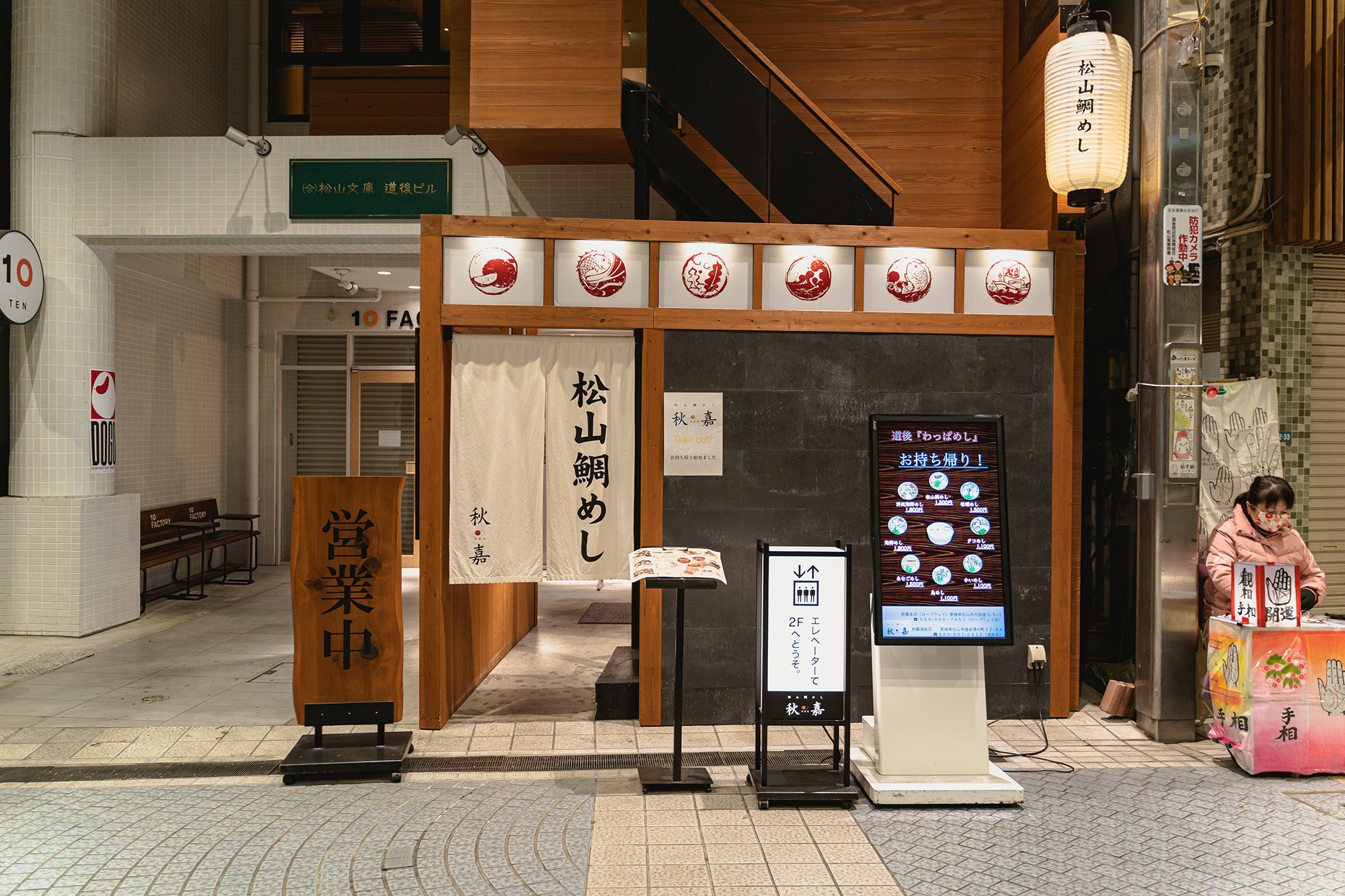
Taimeshi is a local dish and is generally eaten in 2 different ways: 1) With the fish and rice steamed together or, 2) with raw fish eaten with hot rice and a raw egg/shoyu sauce poured over it.
We had the second version at Matsuyama Taimeshi Aka. If you have experience with authentic Japanese food, it’ll taste delicious, just like it sounds with no surprises. If not, think of it as good sashimi on rice.
This location is right in the central area of Dogo Onsen, and it’s worth stopping by to try the local cuisine.
Mikan no Ki
Because Ehime is known for its mikan oranges, there are orange-themed items everywhere. Snacks, baked goods, candies, stuffed animals, you name it.
Mikan no Ki is a shop in the Dogo Onsen shopping arcade that has orange items galore. Amongst them are local flavors of ice cream and sherbet, and they feature a range of different types of mikan orange flavors.
Keep in touch:
More travels:
Imabari
Some of Japan’s most gorgeous seaside views, Imabari is a quaint destination to get away to.
Imabari is a small city in the northwest part of Ehime Prefecture
It is most known for its towel manufacturing
It overlooks the Setouchi Inland Sea and has beautiful seaside views
Imabari is a small city located in the northern corner of Ehime Prefecture on Shikoku Island. While it’s not really a tourist destination, it’s well known throughout Japan.
How to get there
The main train is Imabari Station. You can get to it from Ehime’s main city of Matsuyama by catching a JR Limited Express train. This is what we did and it took around 40 minutes, and cost under USD $15 each way.
About Imabari
Imabari is most famous for its towel manufacturing. Its climate and water help make it ideal to do just that, and that industry has thrived for over a hundred years.
If you’ve ever used a quality Japanese towel, there’s a high chance that it was made here. A lot of local factories are in the Imabari Towel union, and they have high very standards to which towels can and can’t bear their label of approval.
I also created a video visit Ehime where I spent some time in Imabari:
What we did
Imabari Towel factory visit

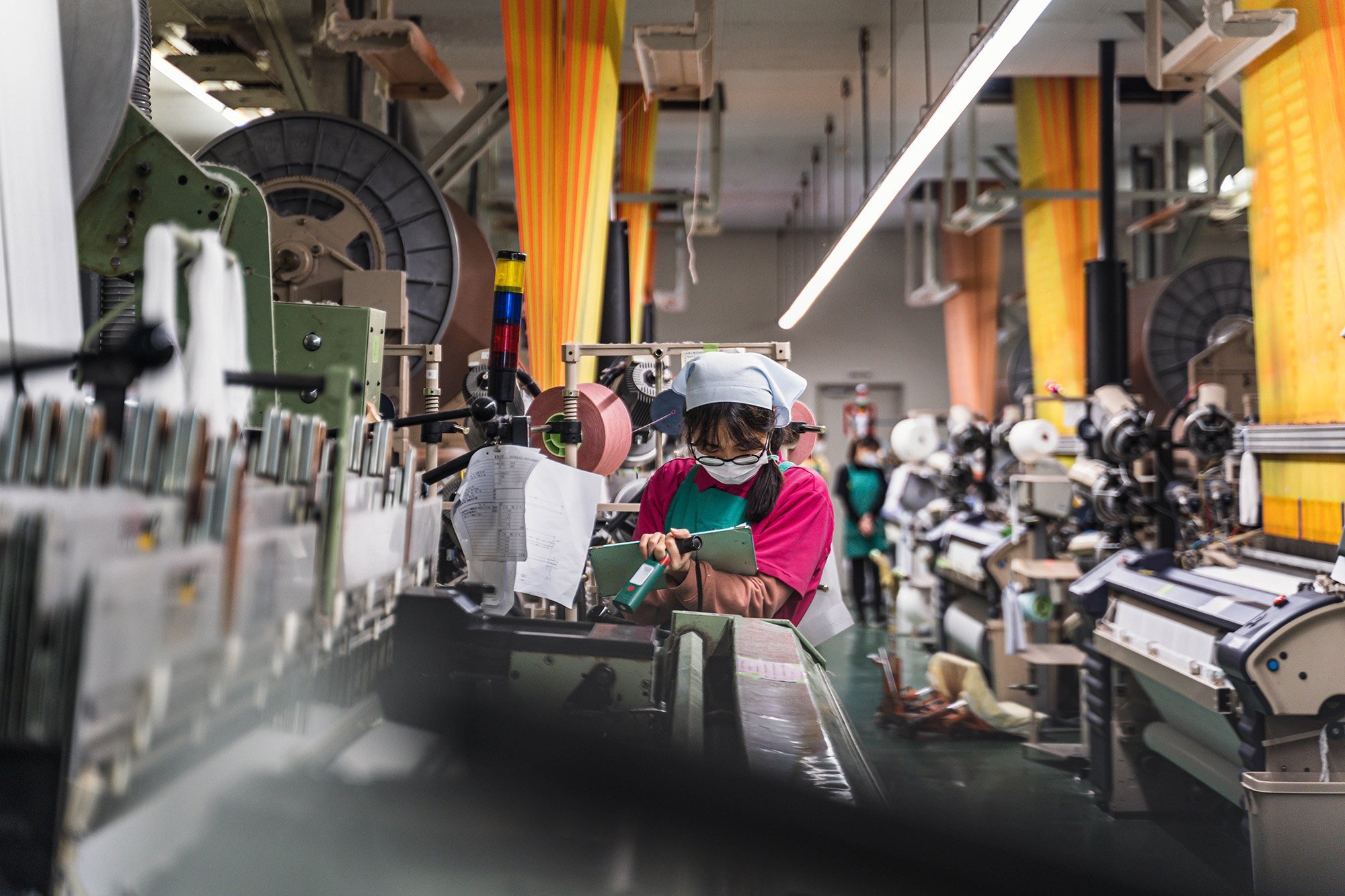
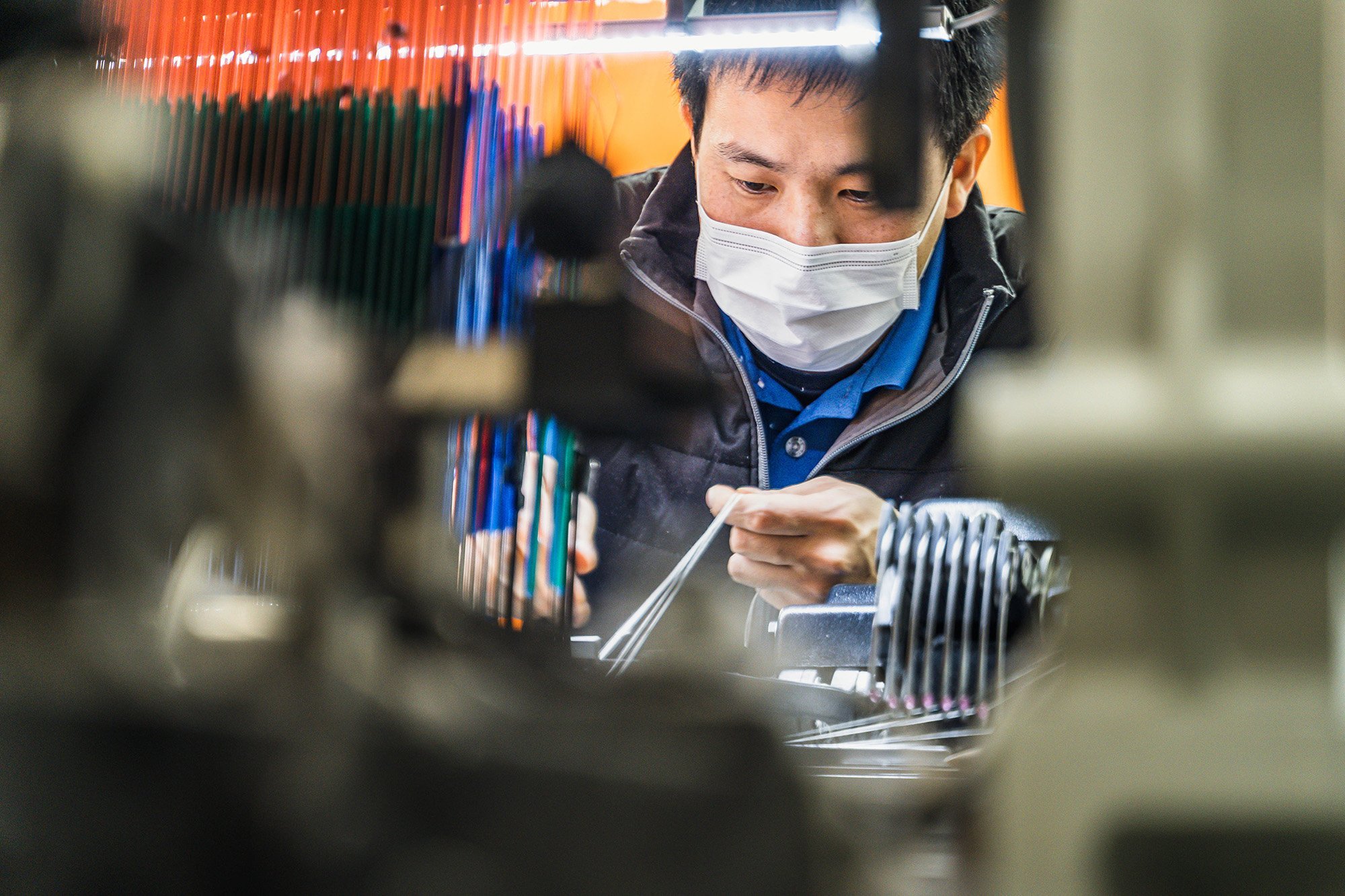
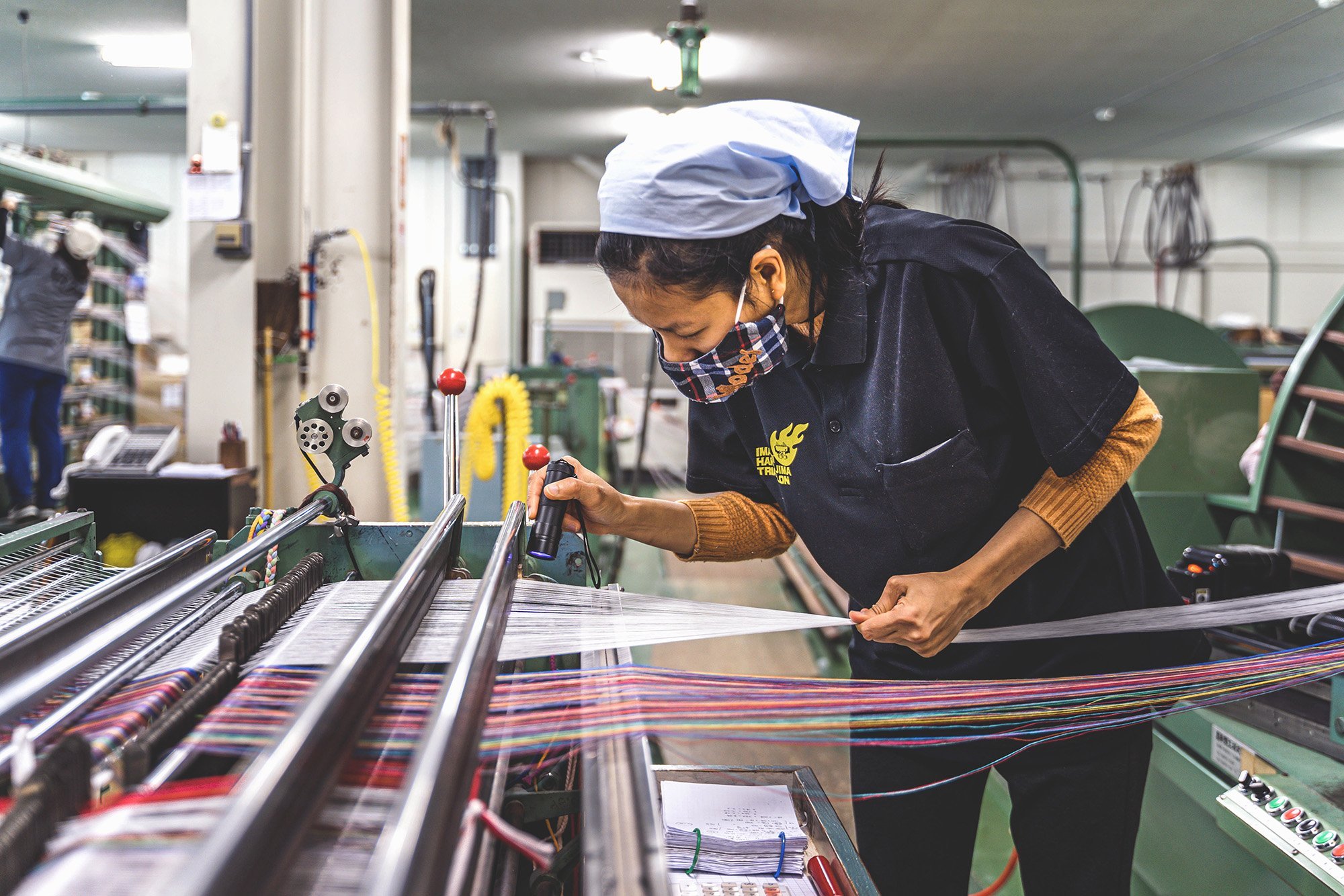
The Imabari Towel union is the most famous in Japan. When people hear “Imabari Towel”, they associate it with quality.
I visited Imabari for work - shooting photos of a couple of the local towel manufacturers. It was impressive.
The craft of towel-making is a huge focus as it dates back over a century here. There are several big manufacturers and numerous brands, and in order for them to get the privilege of having the “Imabari Towel’ brand mark, their towels need to go through strict quality checks.
Seeing the back side of all of this, it’s clear that quality is the main focus. In fact, each and every towel goes through human checks.
Each brand is focused on slightly different points, but ones that I like/use are Fil-usine, Kontex [J], Iori, and Olsia.
Ship yard
Another industry that Imabari is known for is ship building. Its biggest ship-building company, Imabari Shipbuilding, dates back over a century and is said to have a the fourth-largest global market share in 2016.
While not a must-see or anything, visiting the central area for these massive ships and seeing things up close was impressive.
As with any trip, checking out some local food and drink spots is recommended. Here are a few.
Where we ate
Umi-no-mieru Cafe
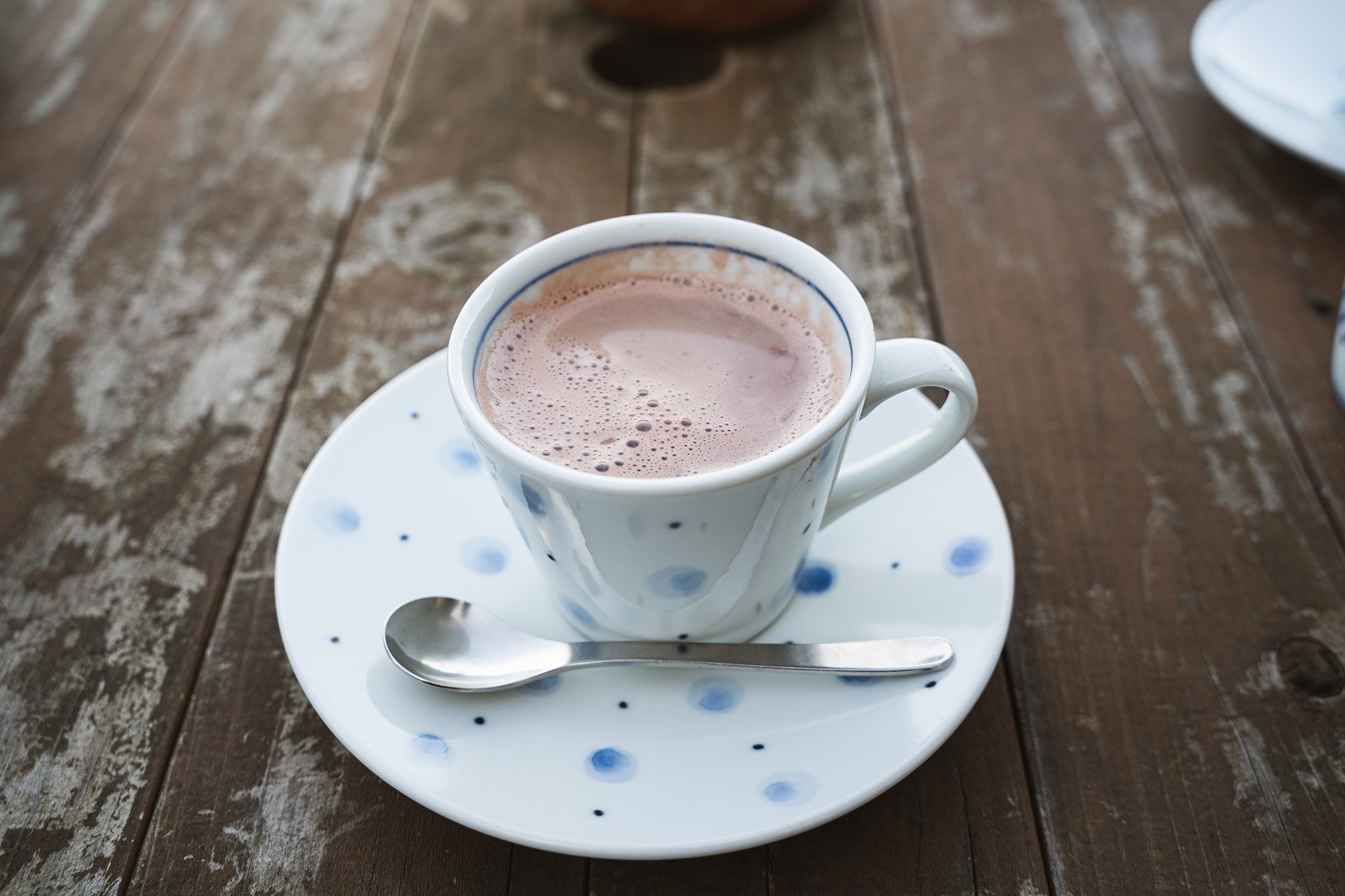
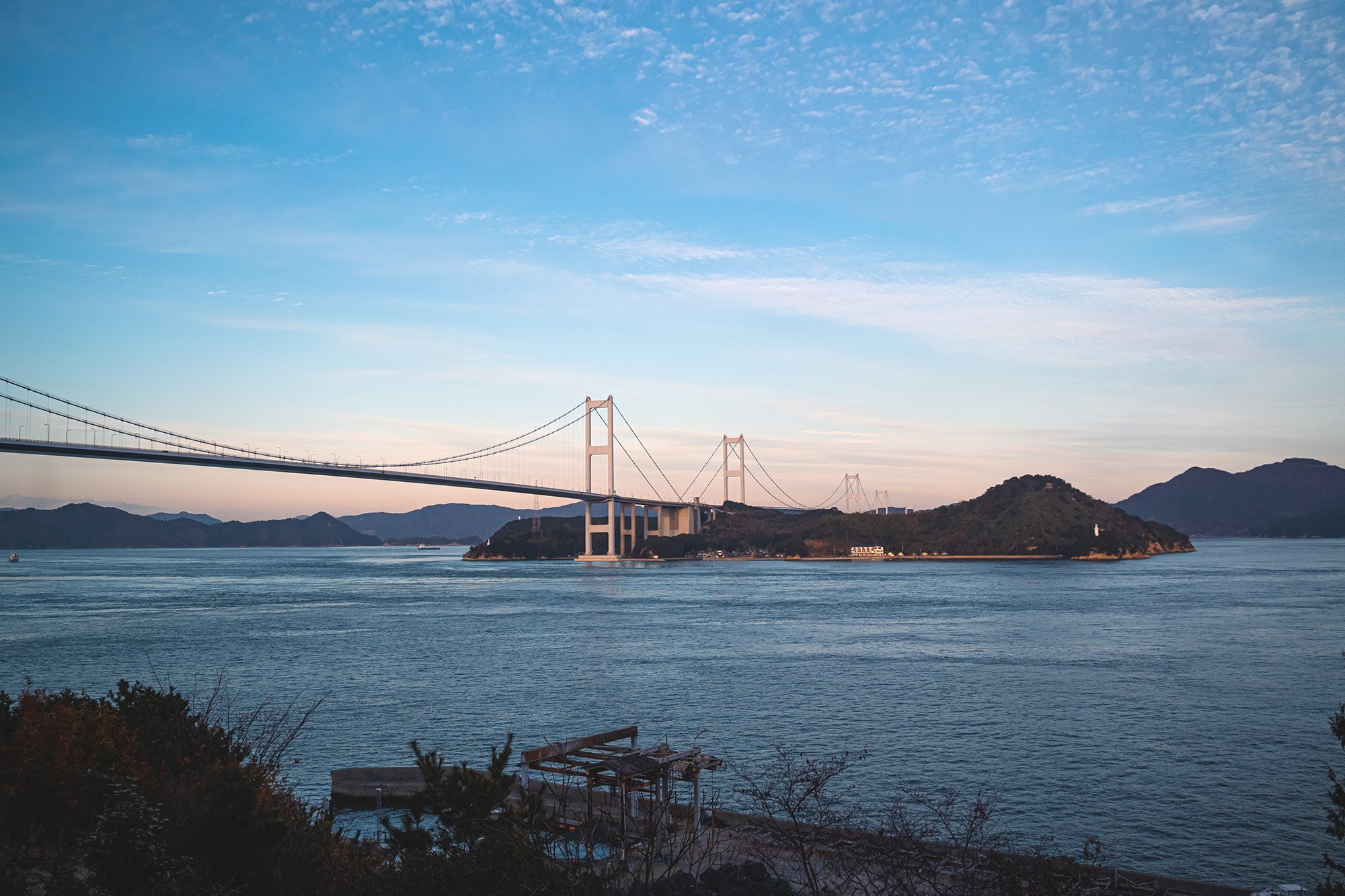
Relaxing cafe with an amazing view.
Umi-no-mieru is a quaint cafe overlooking the Setouchi Inland sea. People go here for many reasons ranging from business meetings to dates, but they’re all here because it has one of the best views in town.
There’s both indoor and outdoor seating, and sipping on a drink while enjoying the clear view of the Kurushima-Kaikyo Bridge is a great way to escape for a bit.
Daichi-so
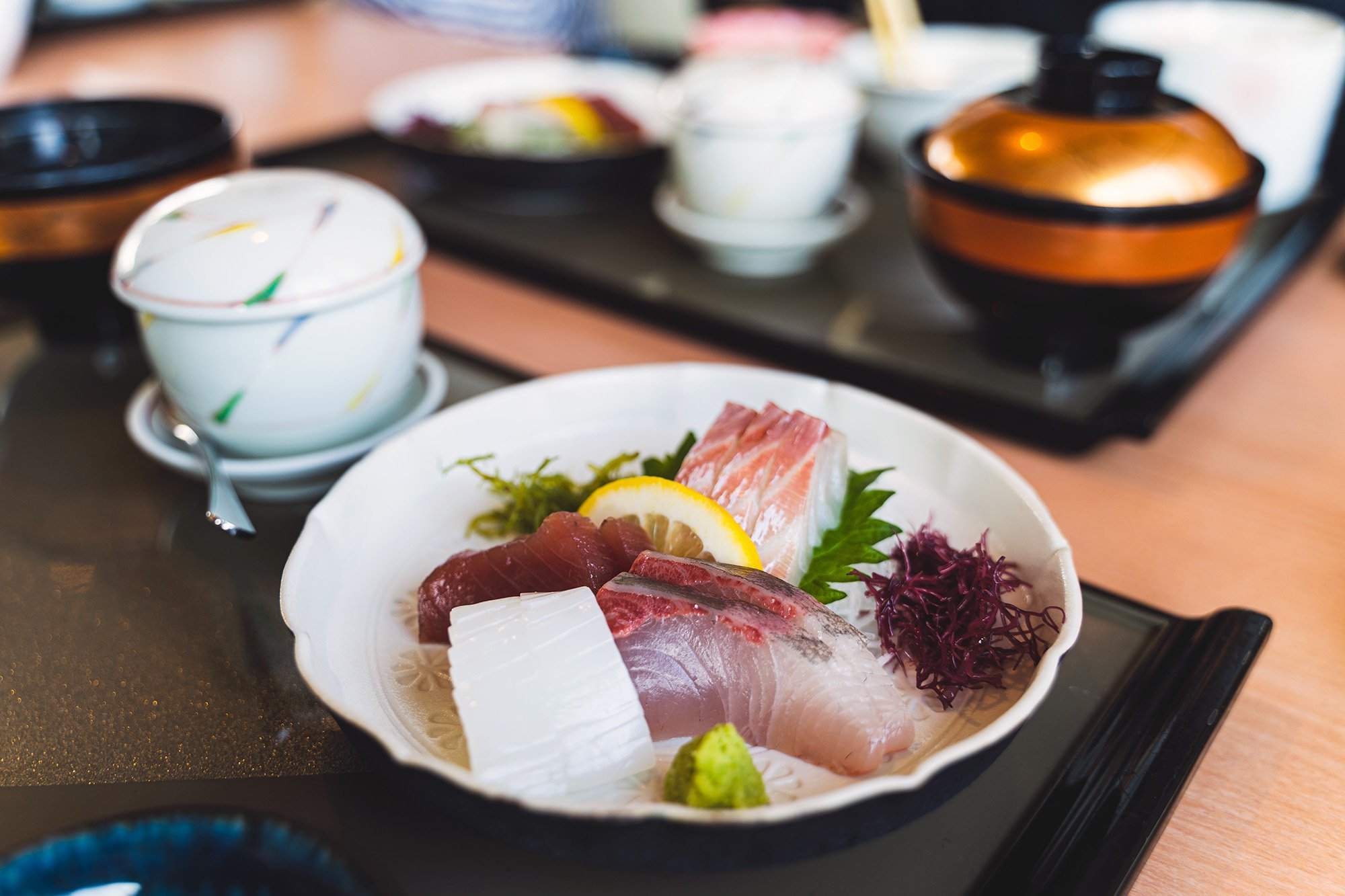
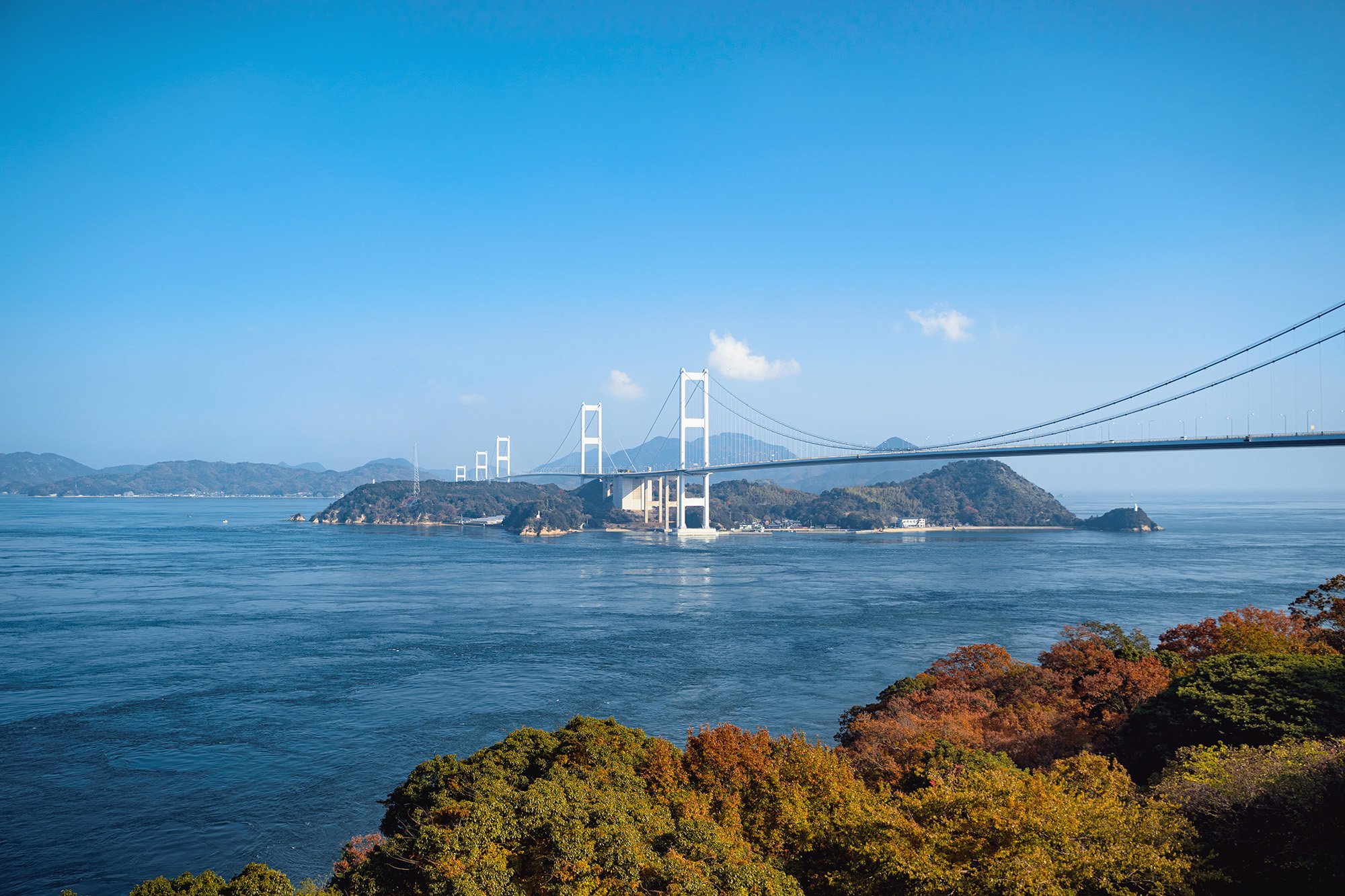
Daichi-so is a ryokan (Japanese-style hotel), but it also has a restaurant open to the public.
Positioned on a cliff, the restaurant offers wide views of the Setouchi Inland Sea, overlooking numerous islands as well as the Kurushima-Kaikyo Bridge.
We went for lunch and they have various teishoku set options, including the local cuisines like taimeishi, which is sea bream fish and rice either steamed together or raw and separate.
Great place to have lunch and enjoy the view.
Matsu Seimen-jo
While the other eating options are for enjoying a meal or drink with a view, this one is for actual locals.
Matsu Seimen-jo specializes in fast food udon. Shikoku, the island that Imabari is on, is known for its udon.
Resembling the more internationally known Marugame, Matsu Seimen-jo also has a cafeteria-like ordering experience. Choose one of several base udon bowls, then choose the sides that you want.
Quick, authentic, and delicious.
Keep in touch:
More travels:
Kyoto: The Food Tour
After several visits to Kyoto and seeking out authentic Kyoto foods, here’s where I recommend.
I’ve been to Kyoto several times over the years and even planned a trip that made food more of a priority than the destinations.
Many people - including myself - have gone to Kyoto and had Japanese food, but often miss actual Kyoto foods. Here are some places that I’ve been to and recommend, both authentic Kyoto food and just good food in the city.
Kappo Bar
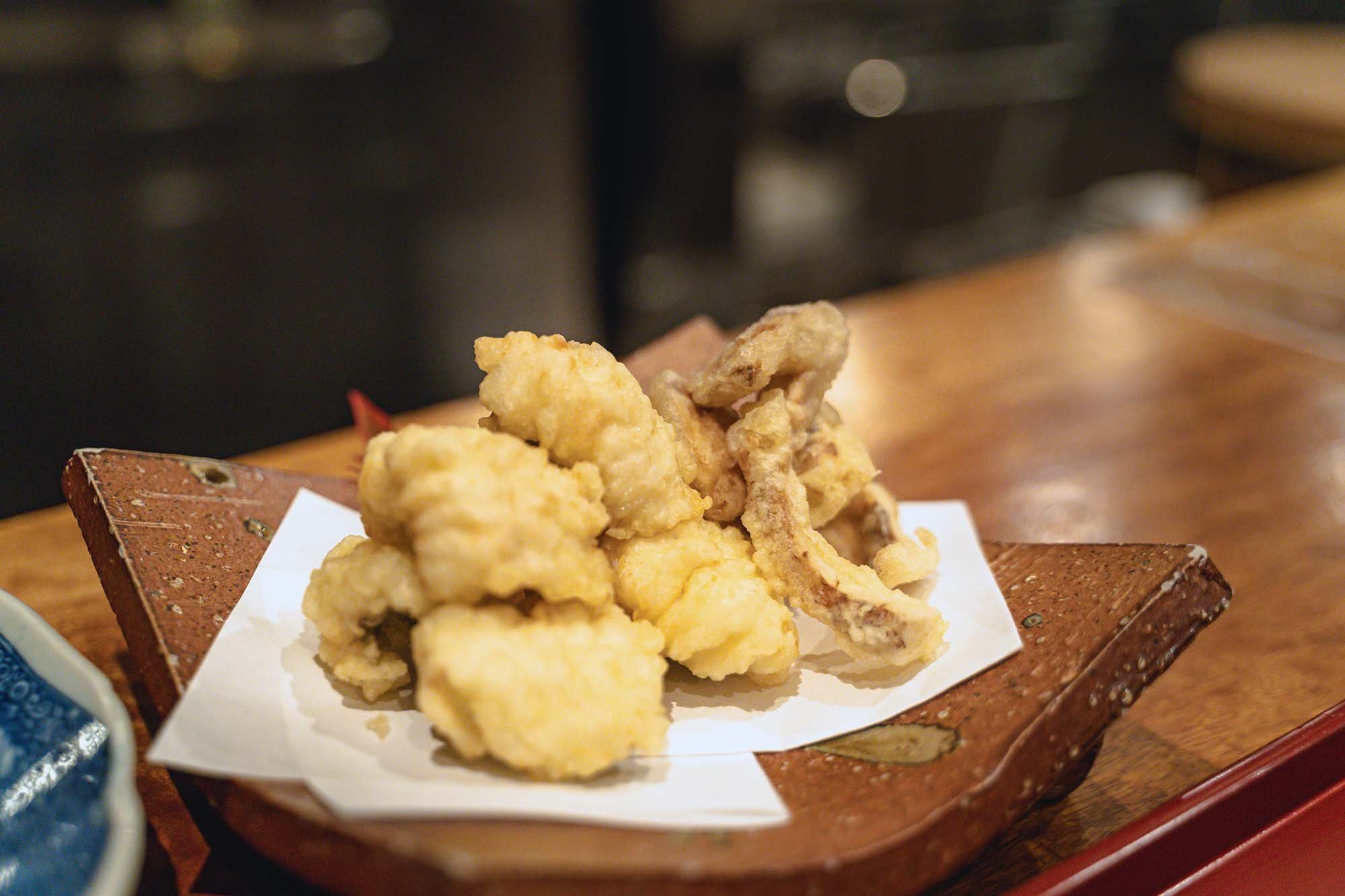
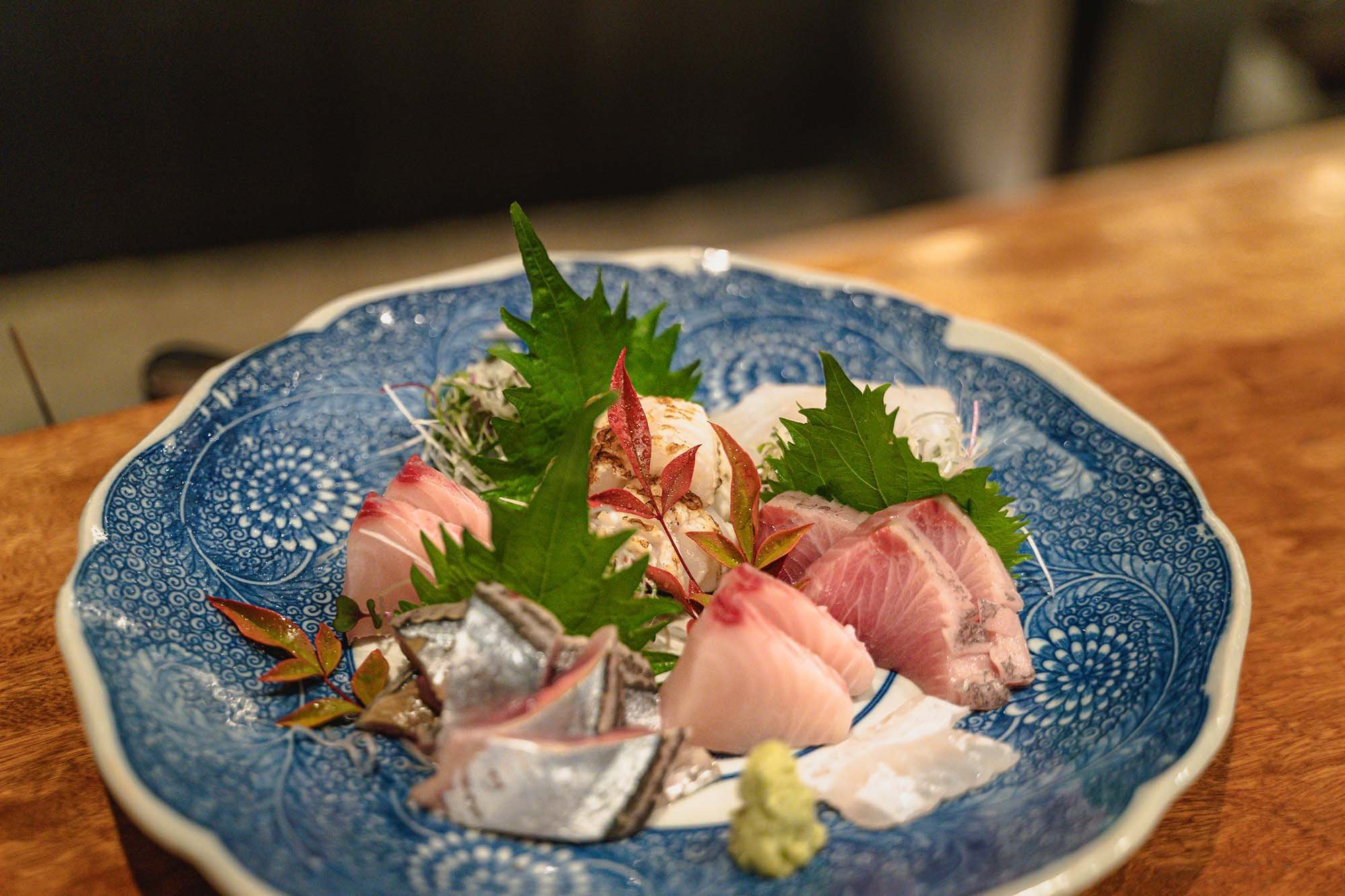
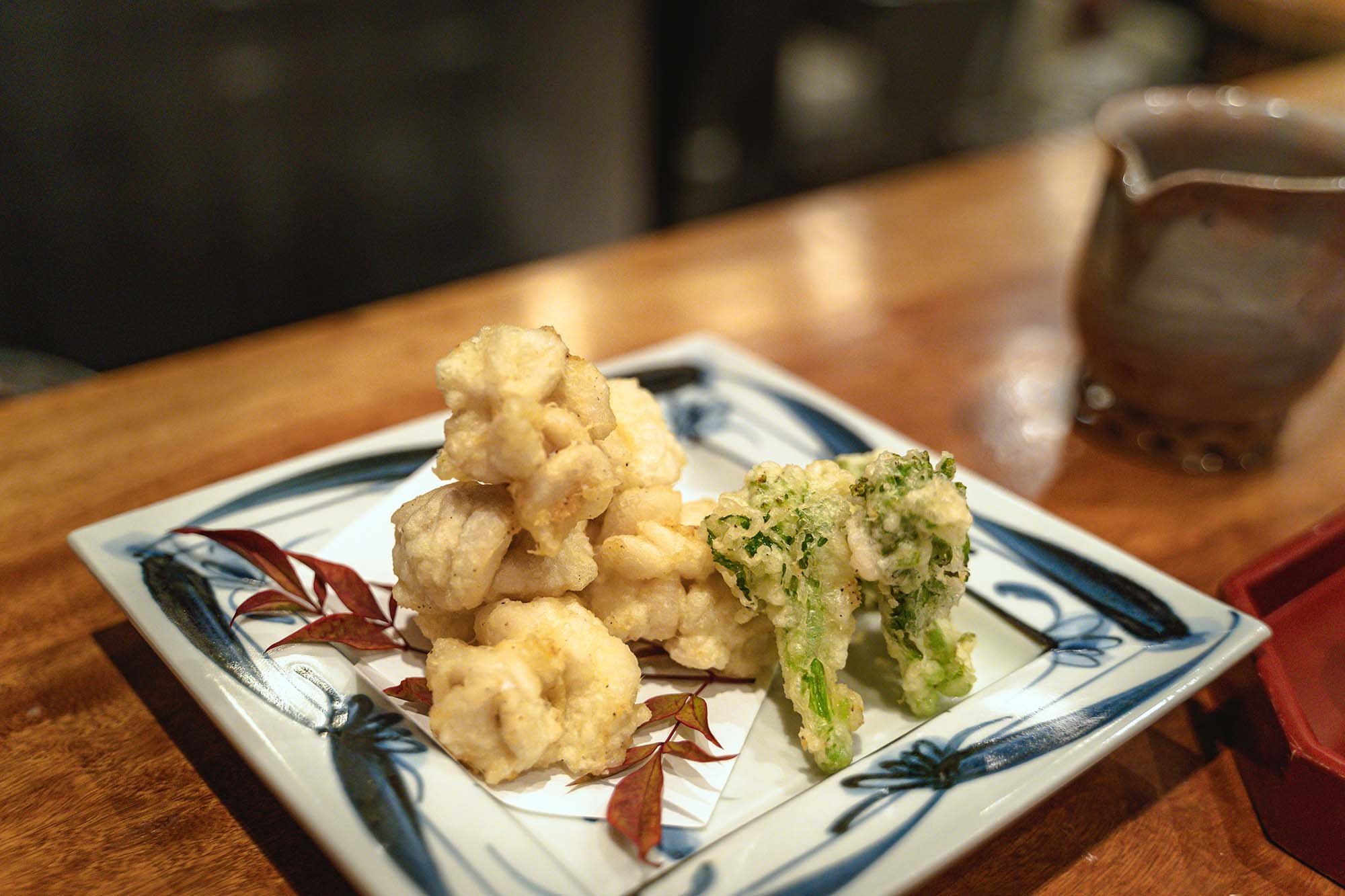
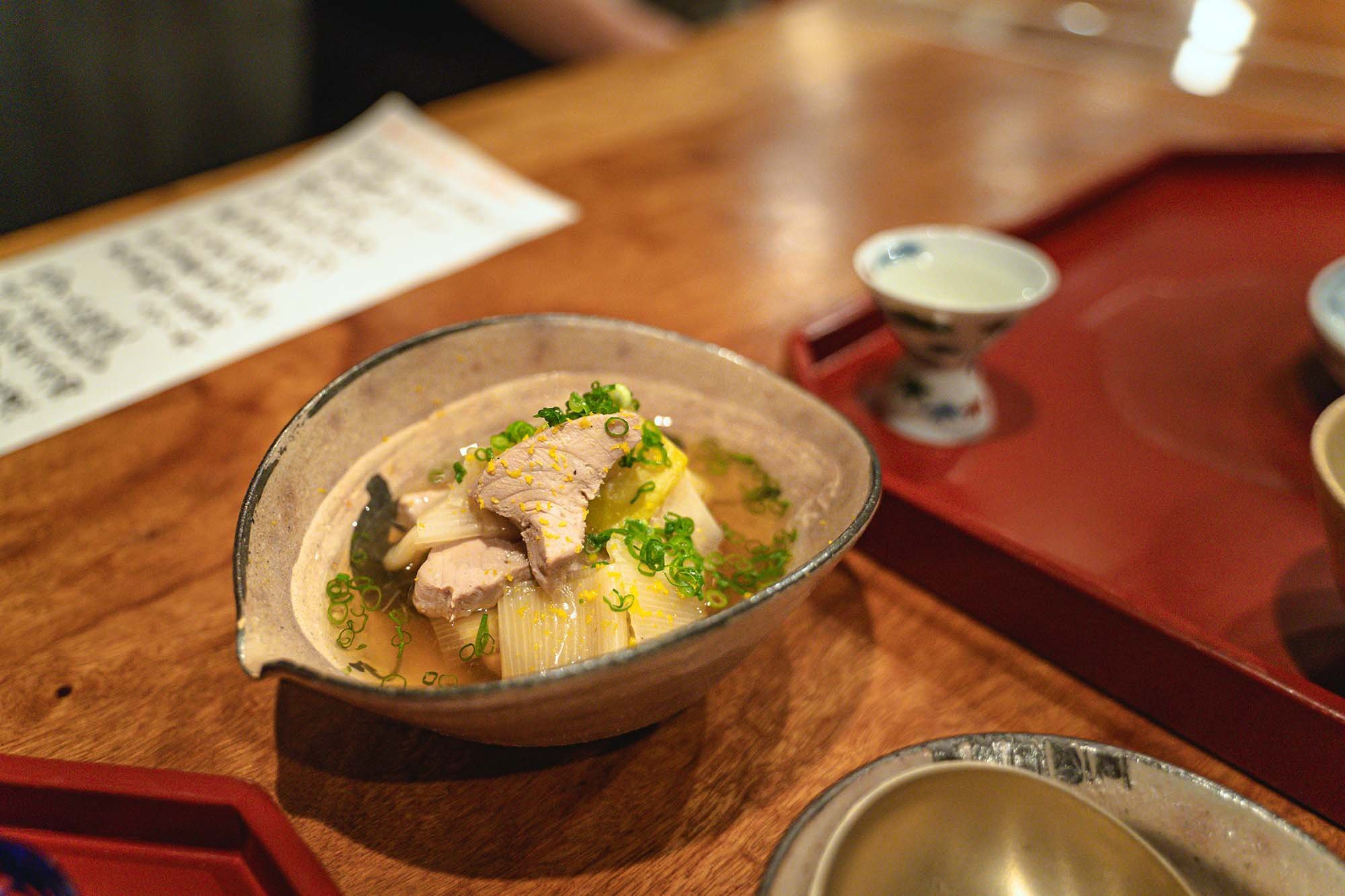
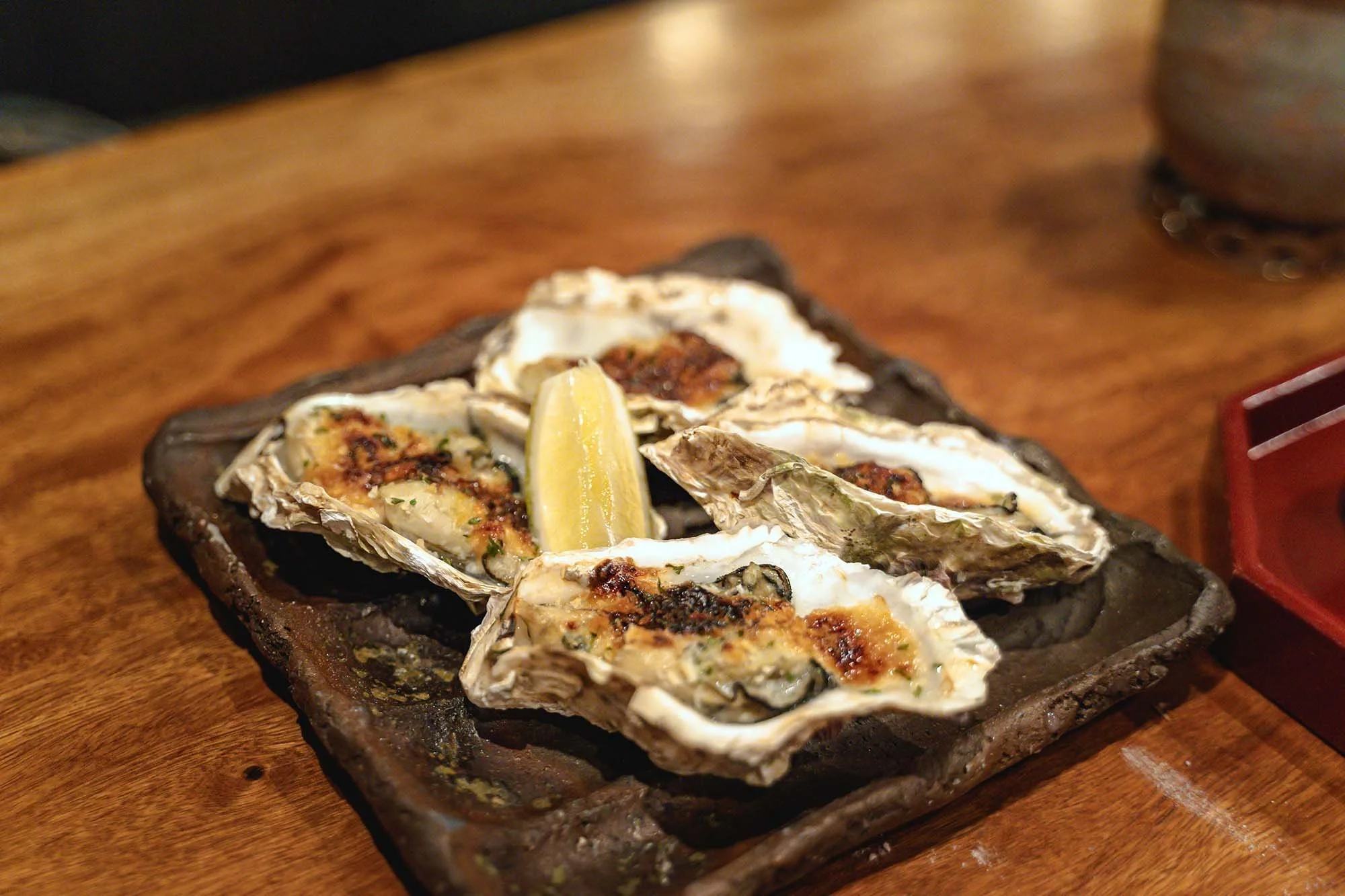
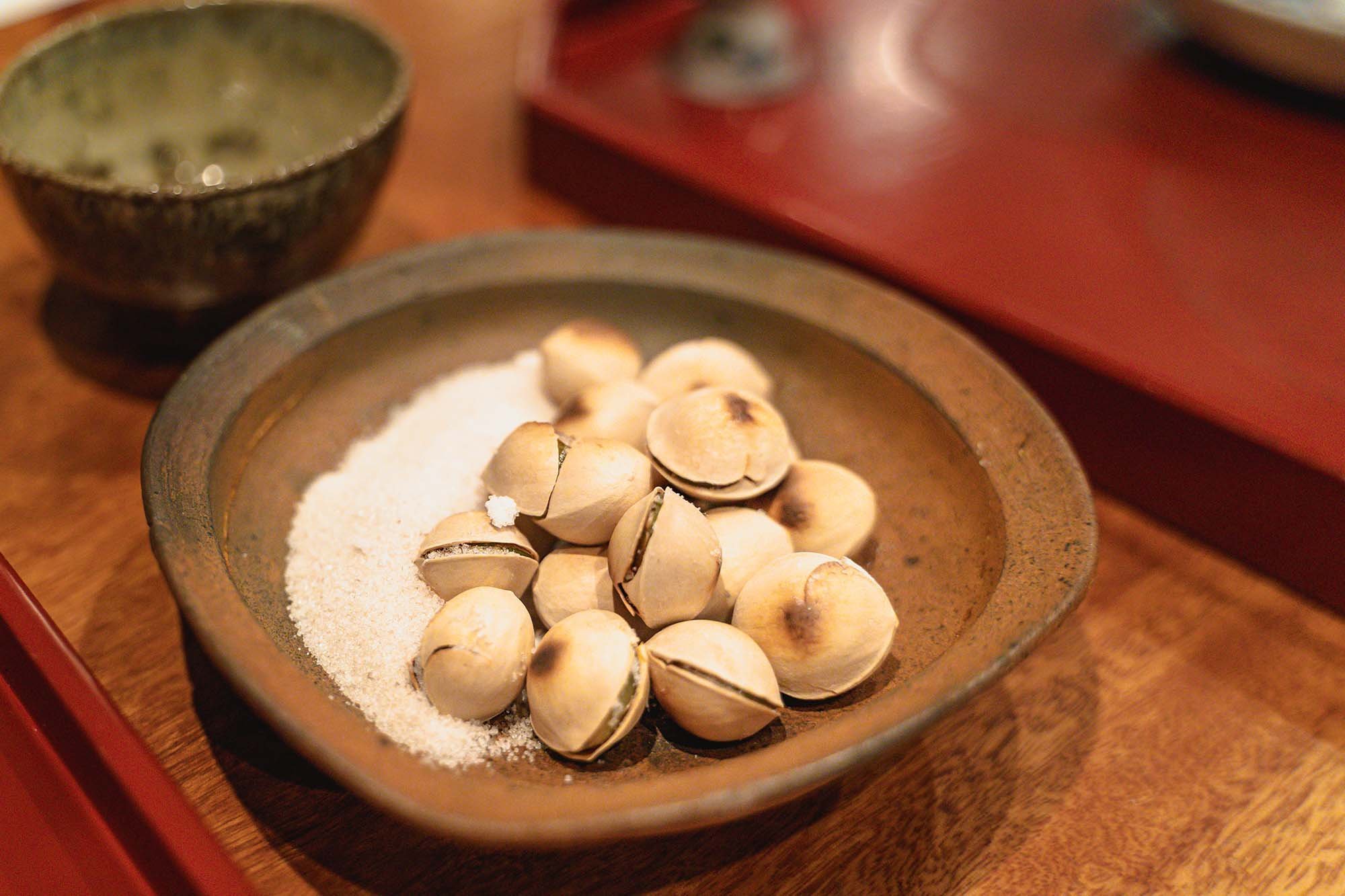
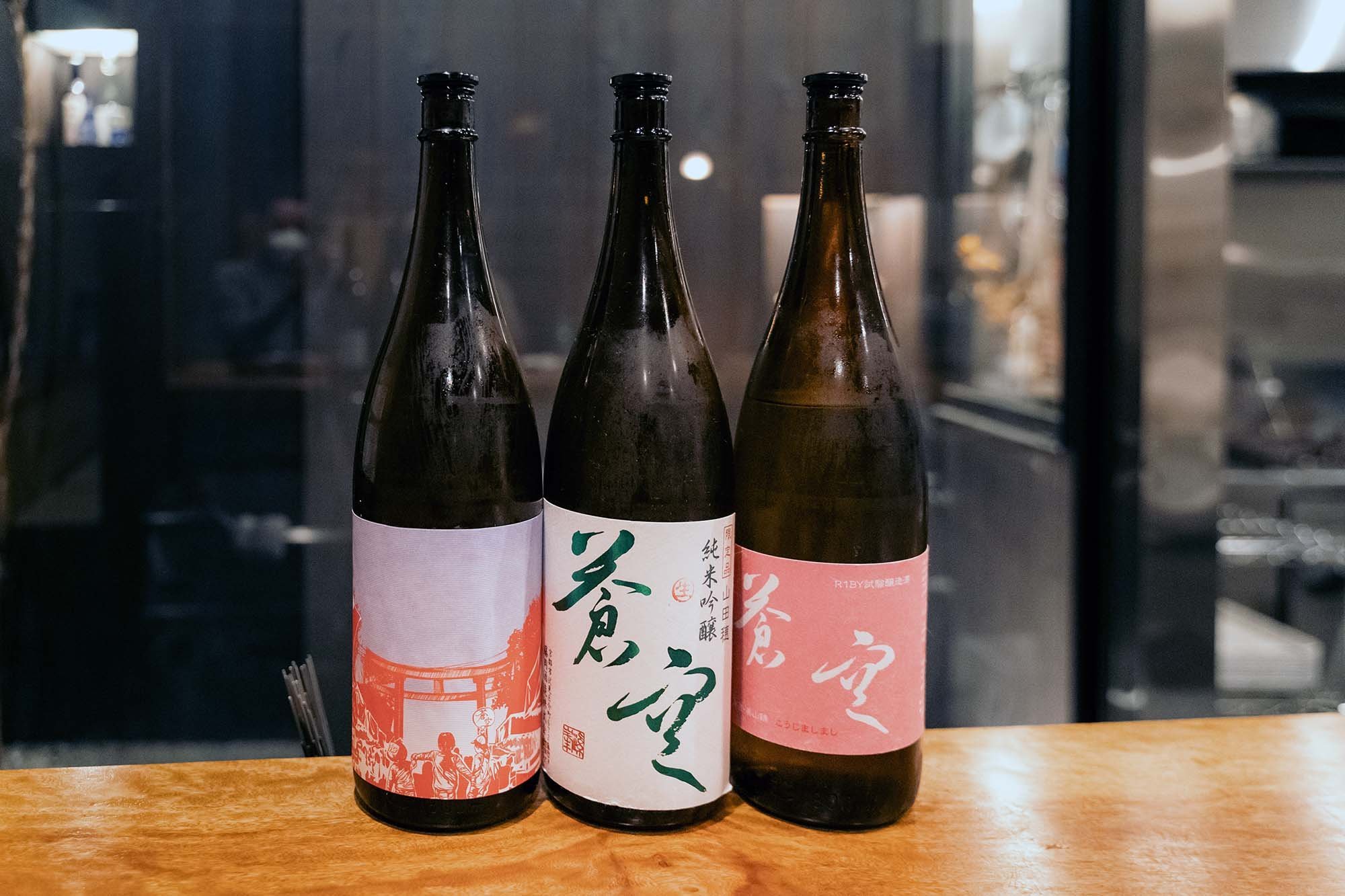
Kappo is a style of high-end Japanese dining, and the appropriately named Kappo Bar specialized in this type of cuisine. In all honesty, this was one of my favorite meals I’ve had in Kyoto.
The restaurant is located down a small alley between the Gion and Ninnenzaka areas, and is in an old Japanese house.
The main seats are on a counter in front of the chef, so you can watch him prepare everything as well as interact with him. The quality of food here was amazing and I highly recommend it.
Nakamura Tokichi
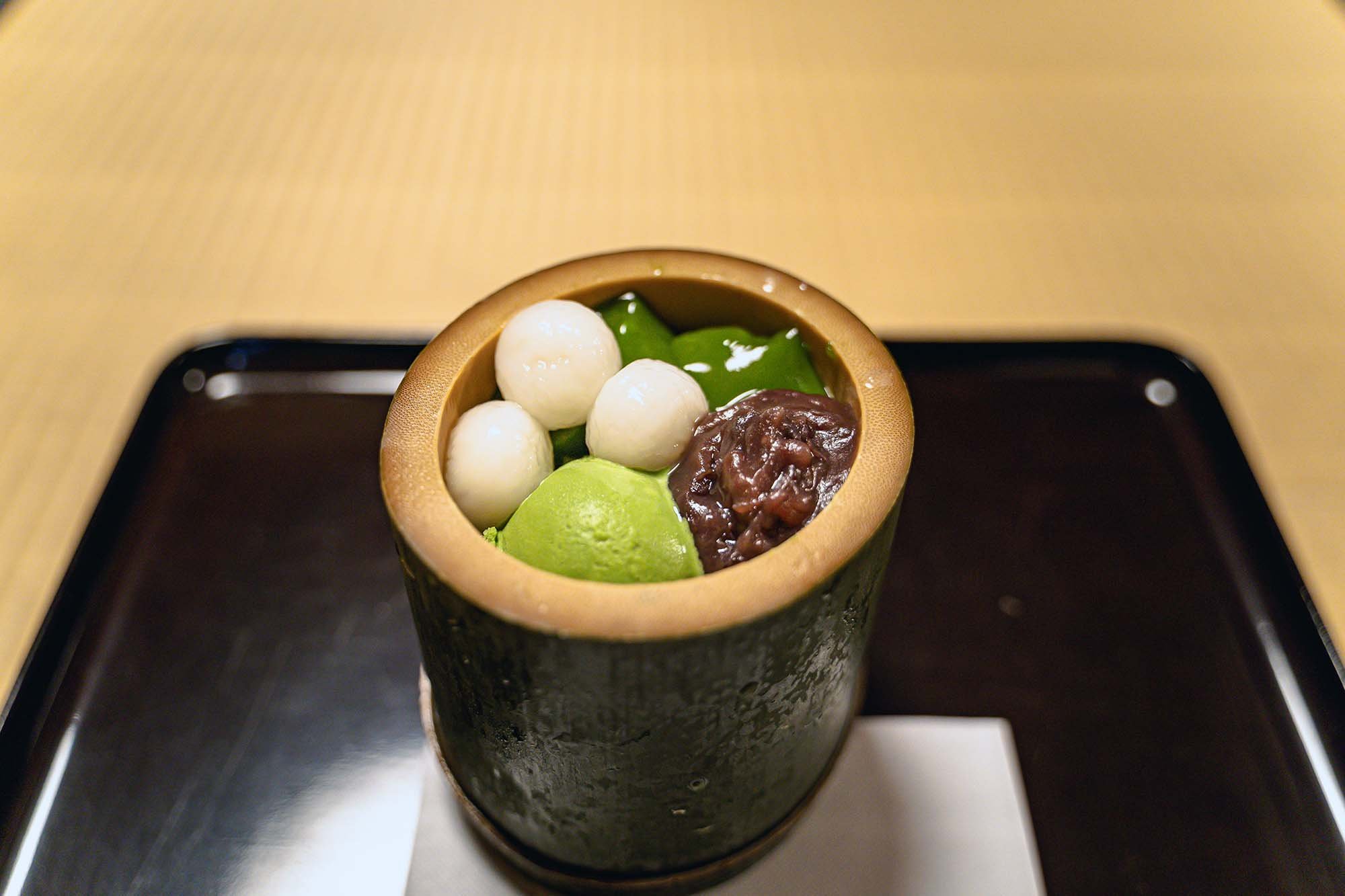
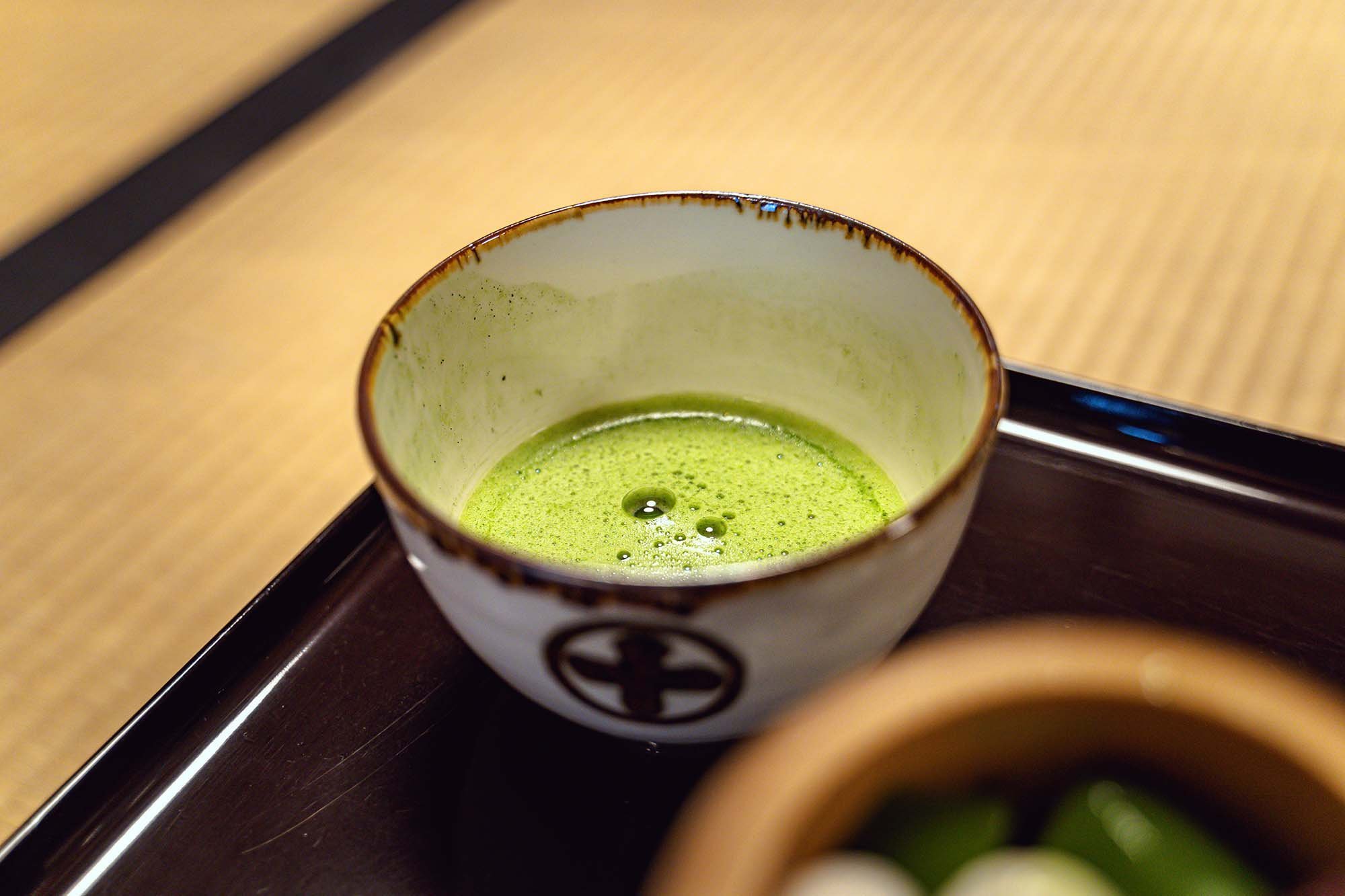
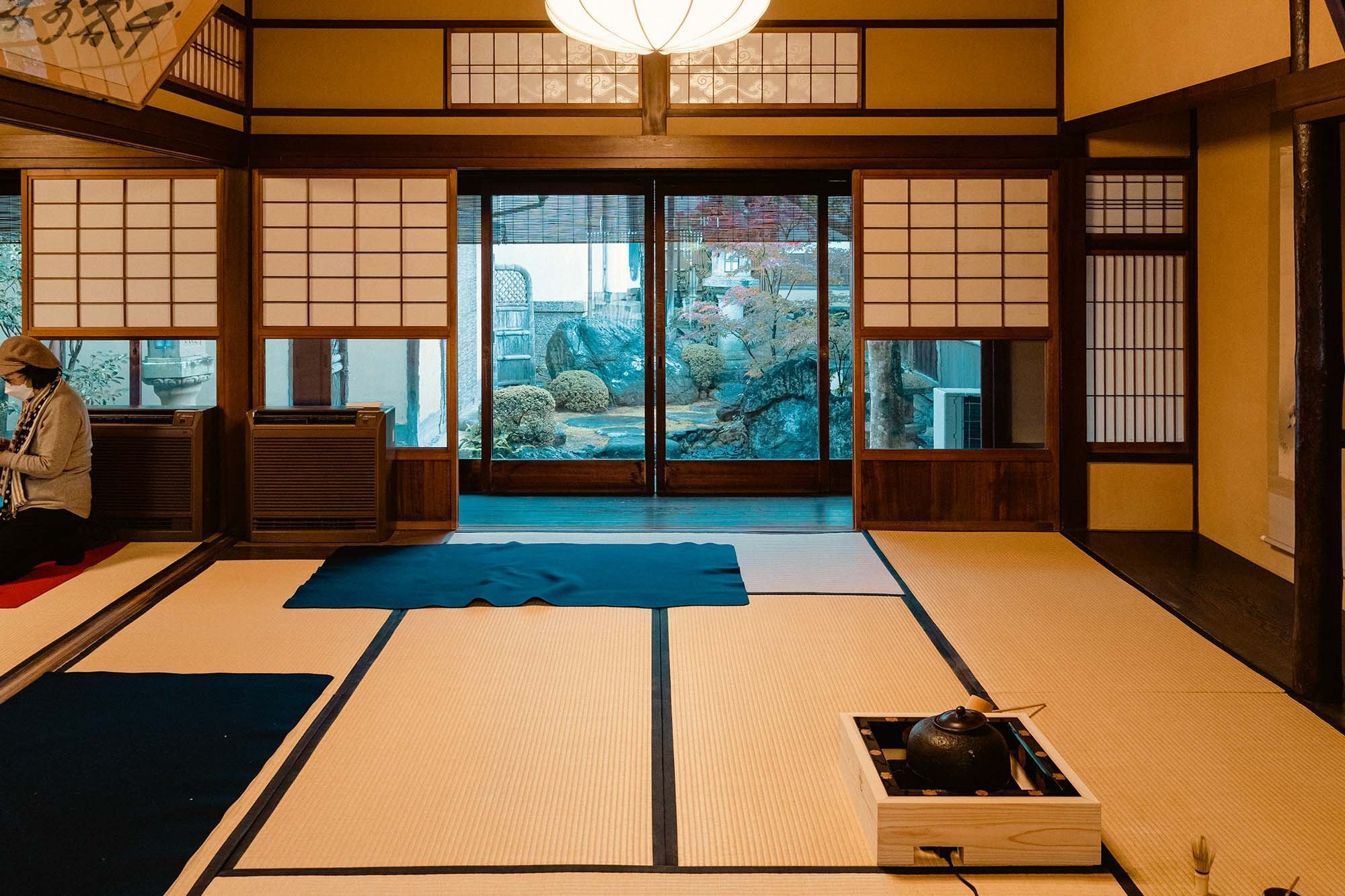
When in Kyoto - and more specifically, when in Uji - you have to get matcha since it’s known for it. Nakamura Tokichi began here in 1854 and has had several generations of owners.
We made a reservation for their tea room, where we could sit on tatami mats, sip matcha and eat namacha, which is a dessert that comes in a bamboo cup. In it are sweets such as anko (red bean), matcha jelly, mochi and matcha ice cream.
There’s also a gift shop that has a range of matcha powder at different levels, matcha baked goods, hojicha (roasted green tea) and more. Definitely a stop to be made when in Uji.
Nikuya Kurokawa
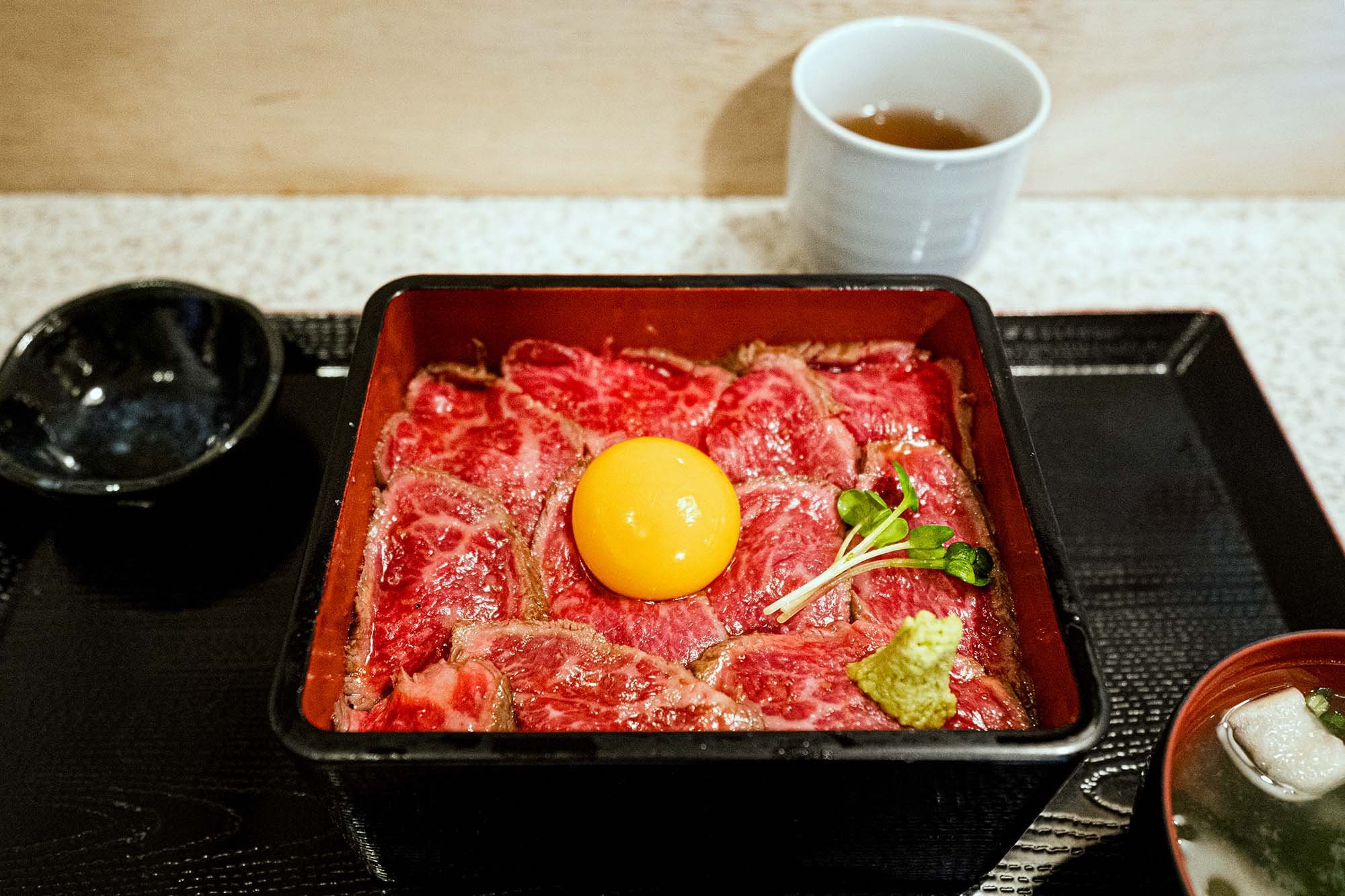

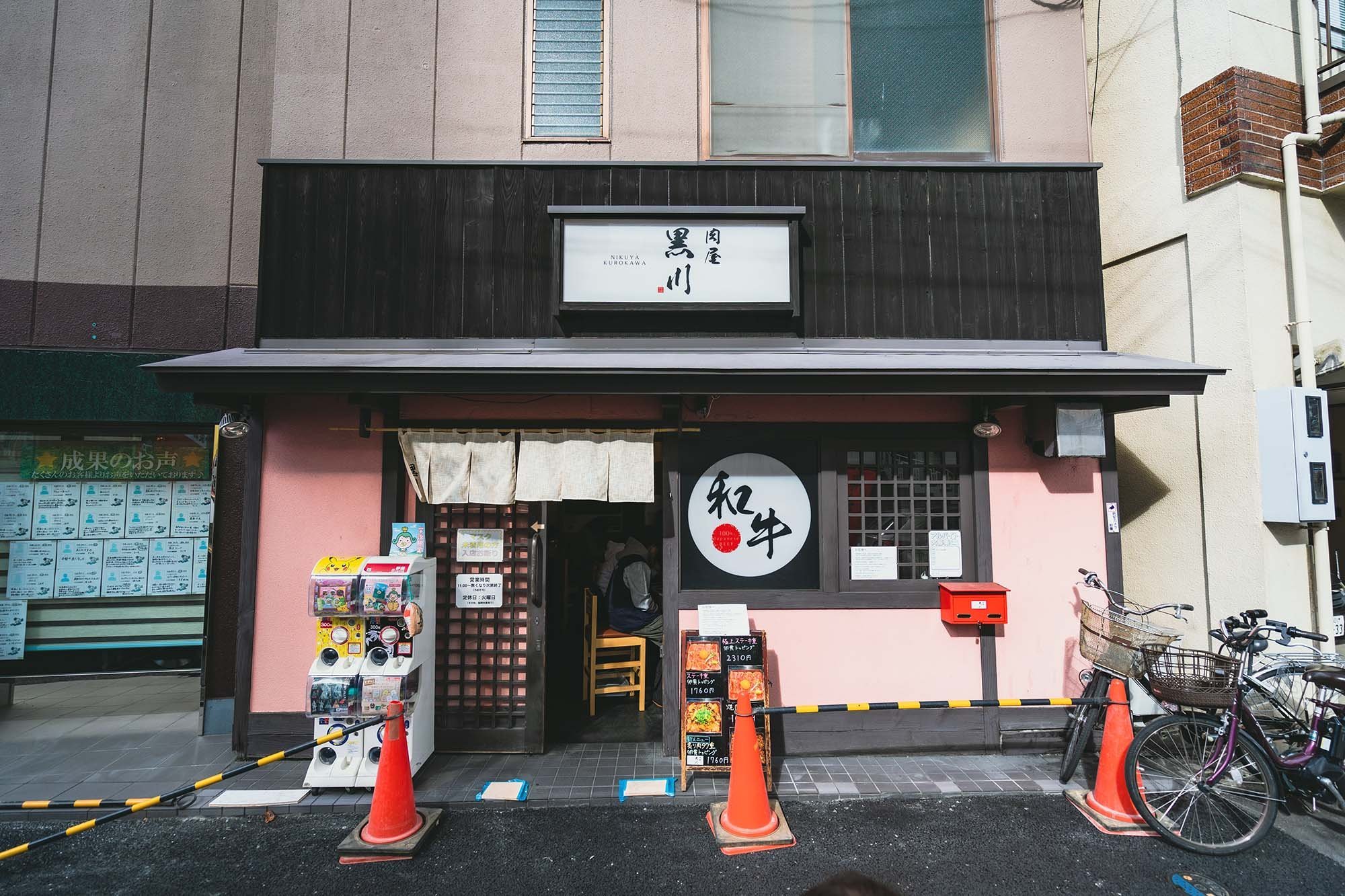
Simple but so delicious. Also located in Uji is Nikuya Kurokawa, an extremely popular restaurant that specializes in wagyu beef donburi’s (over rice).
We got their regular wagyu beef donburi and one that was mixed together with takuan, which is a type of Japanese pickles. Both came with an egg yolk that you can put on top and a soup.
You need to go really early as there was already a line 30 minutes before opening, and be prepared with cash. It was worth it, though, this meal was very, very good.
Menami
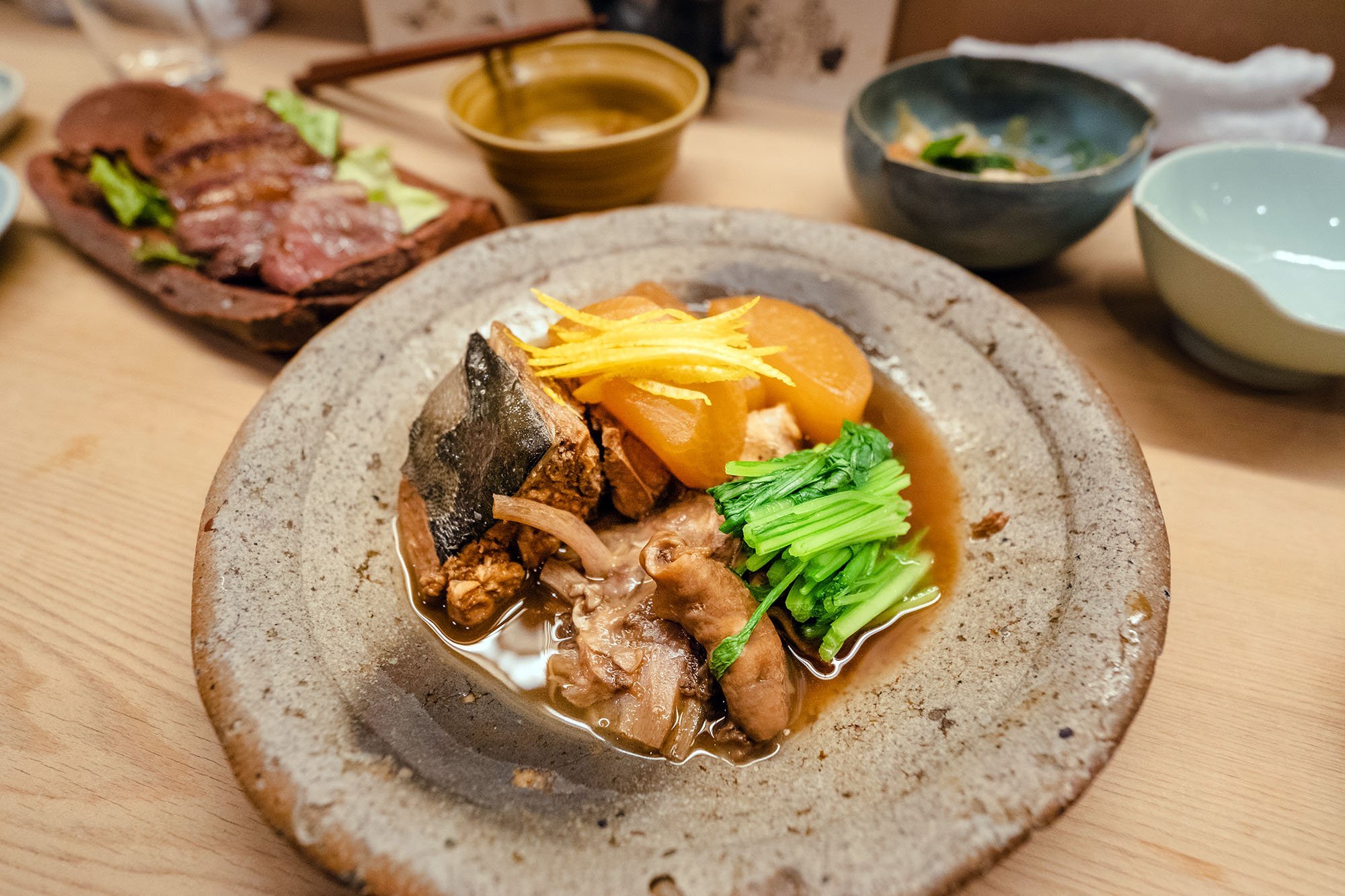
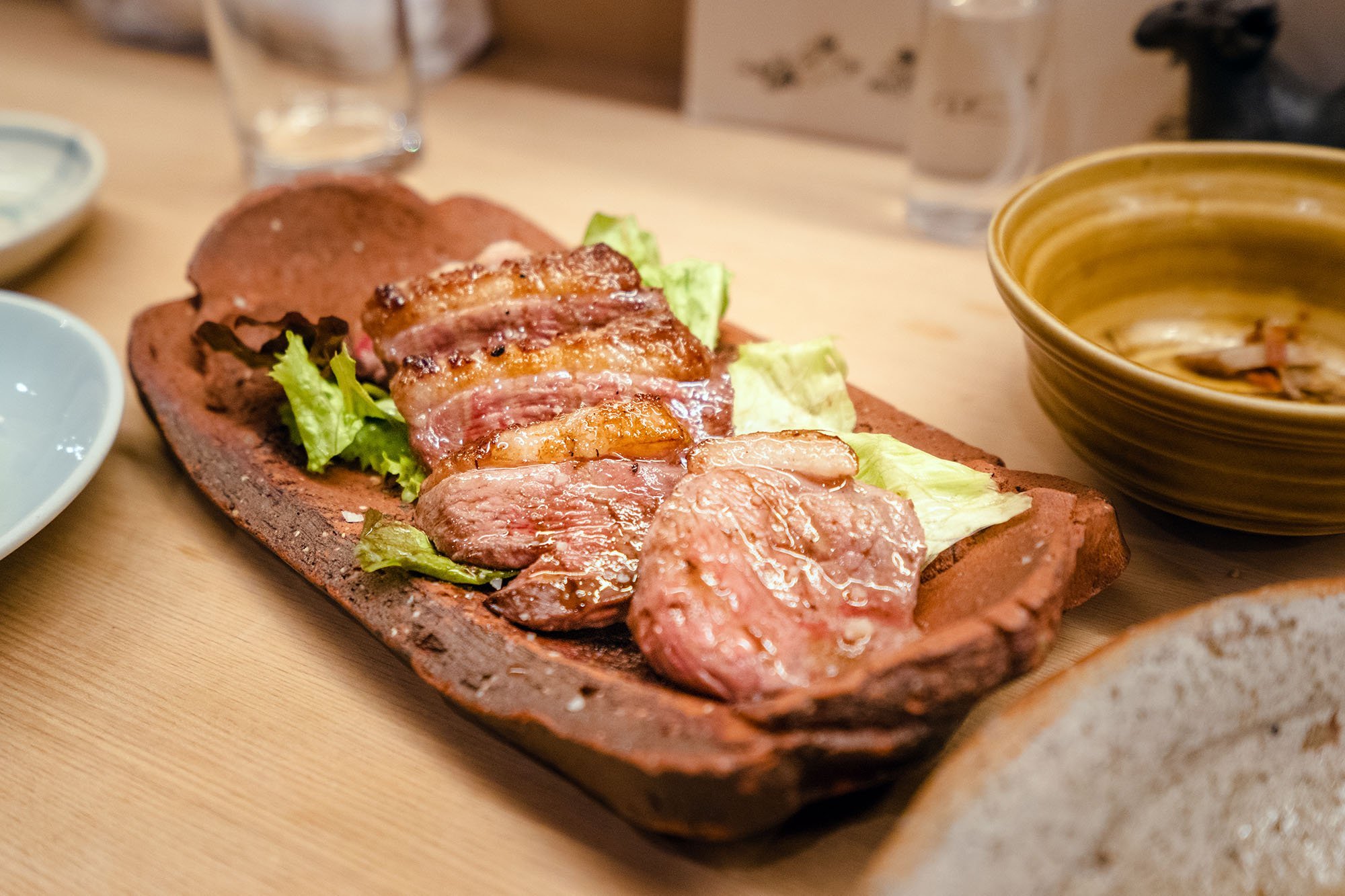
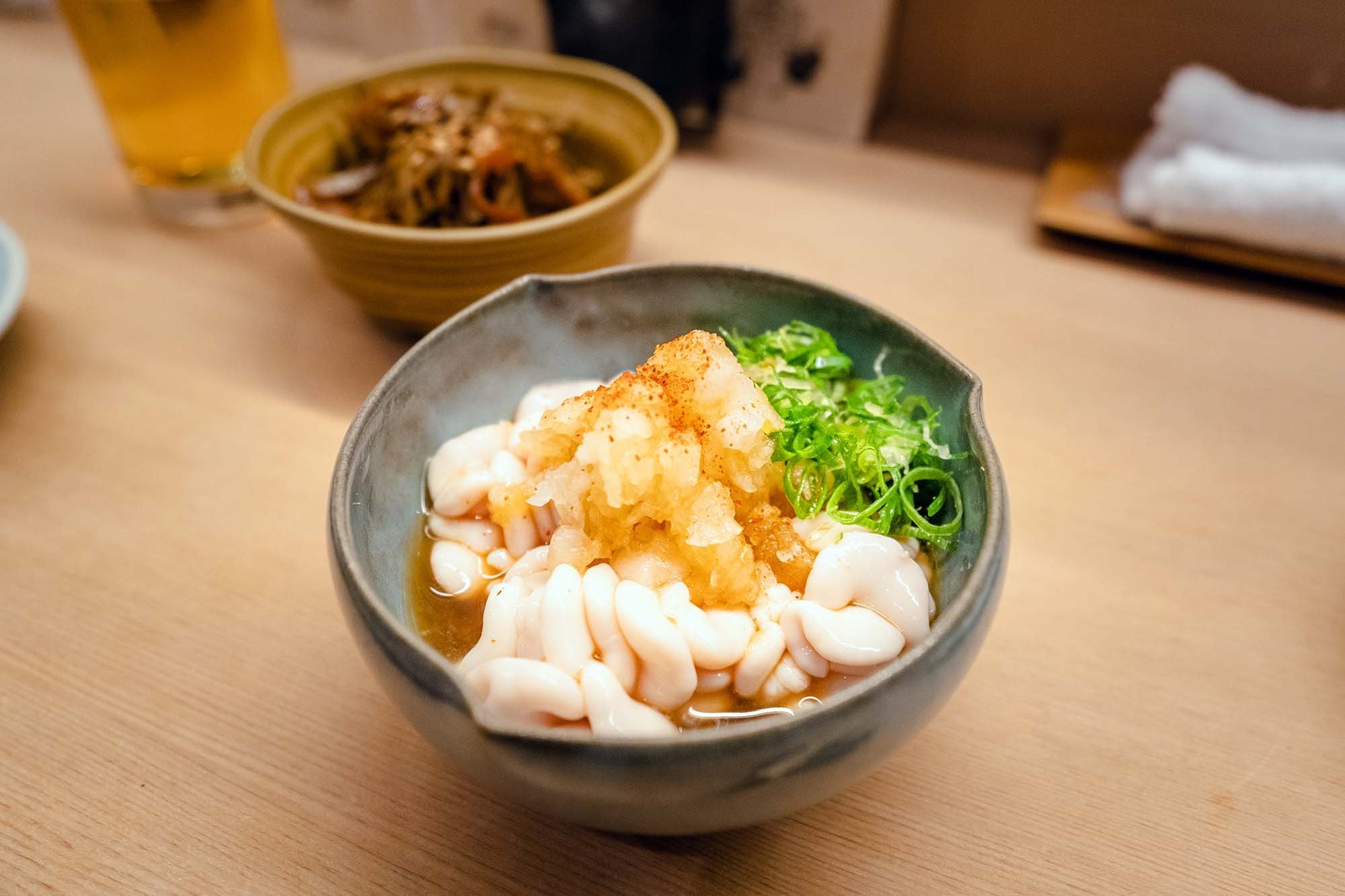
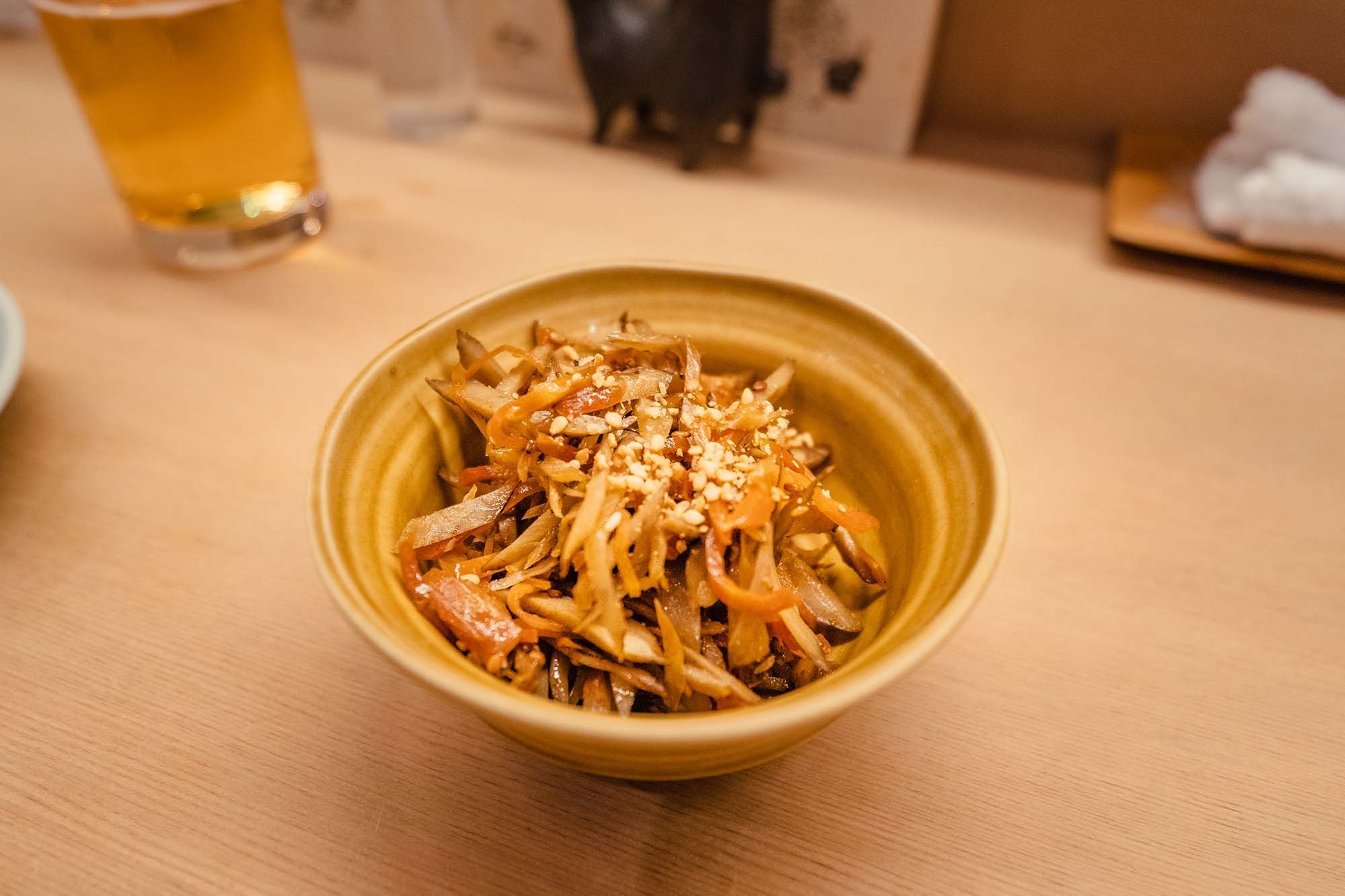
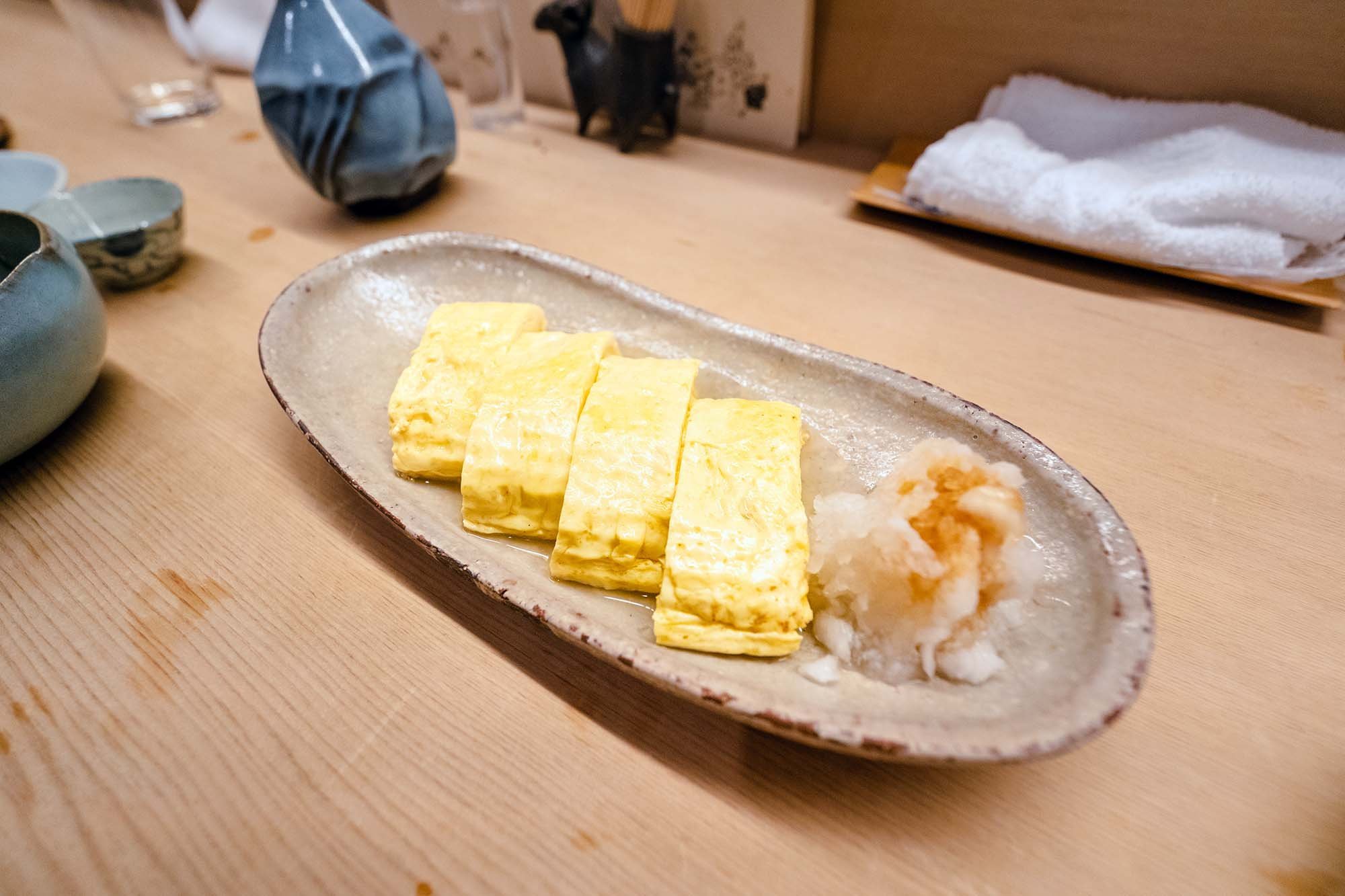
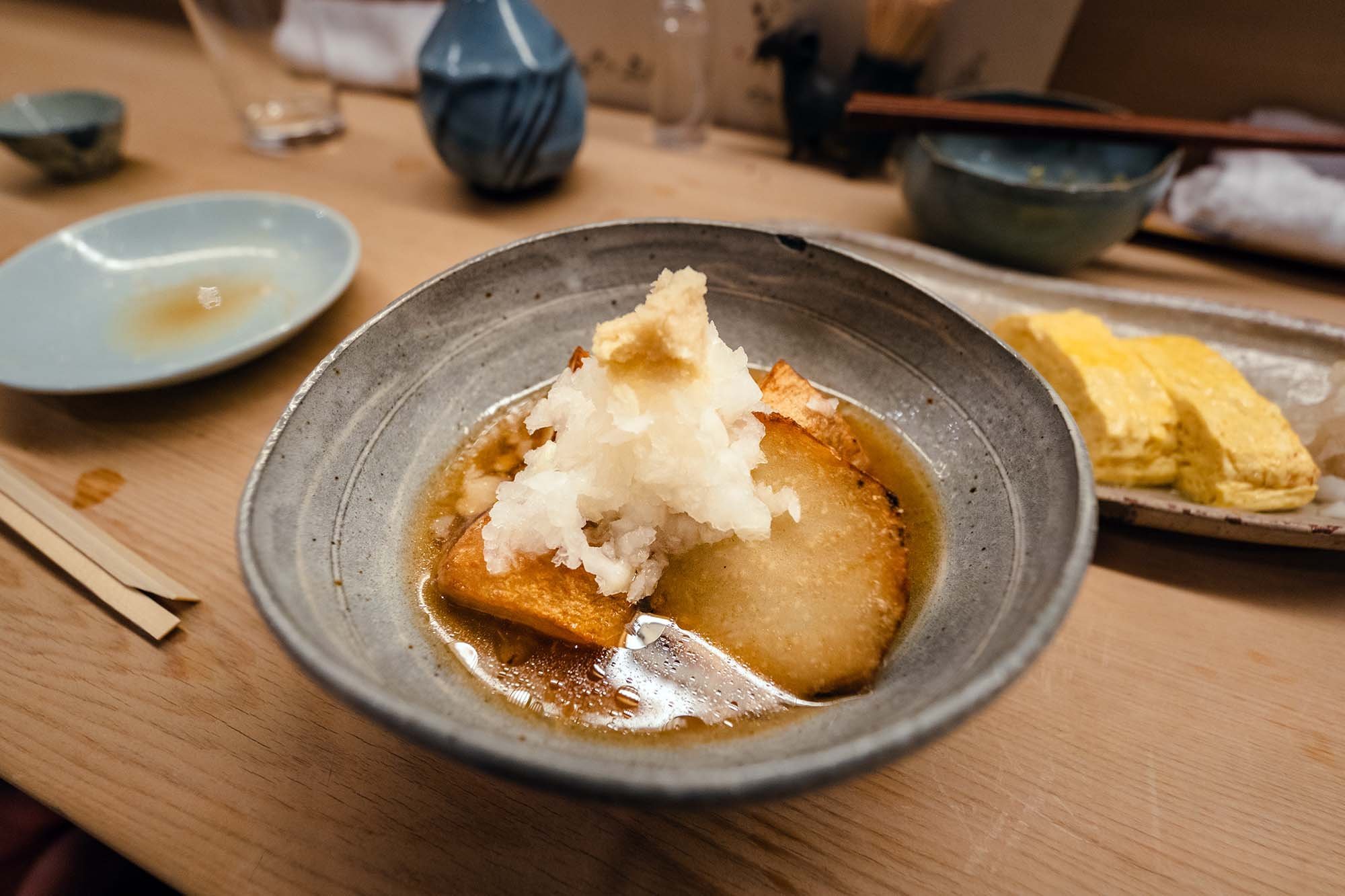
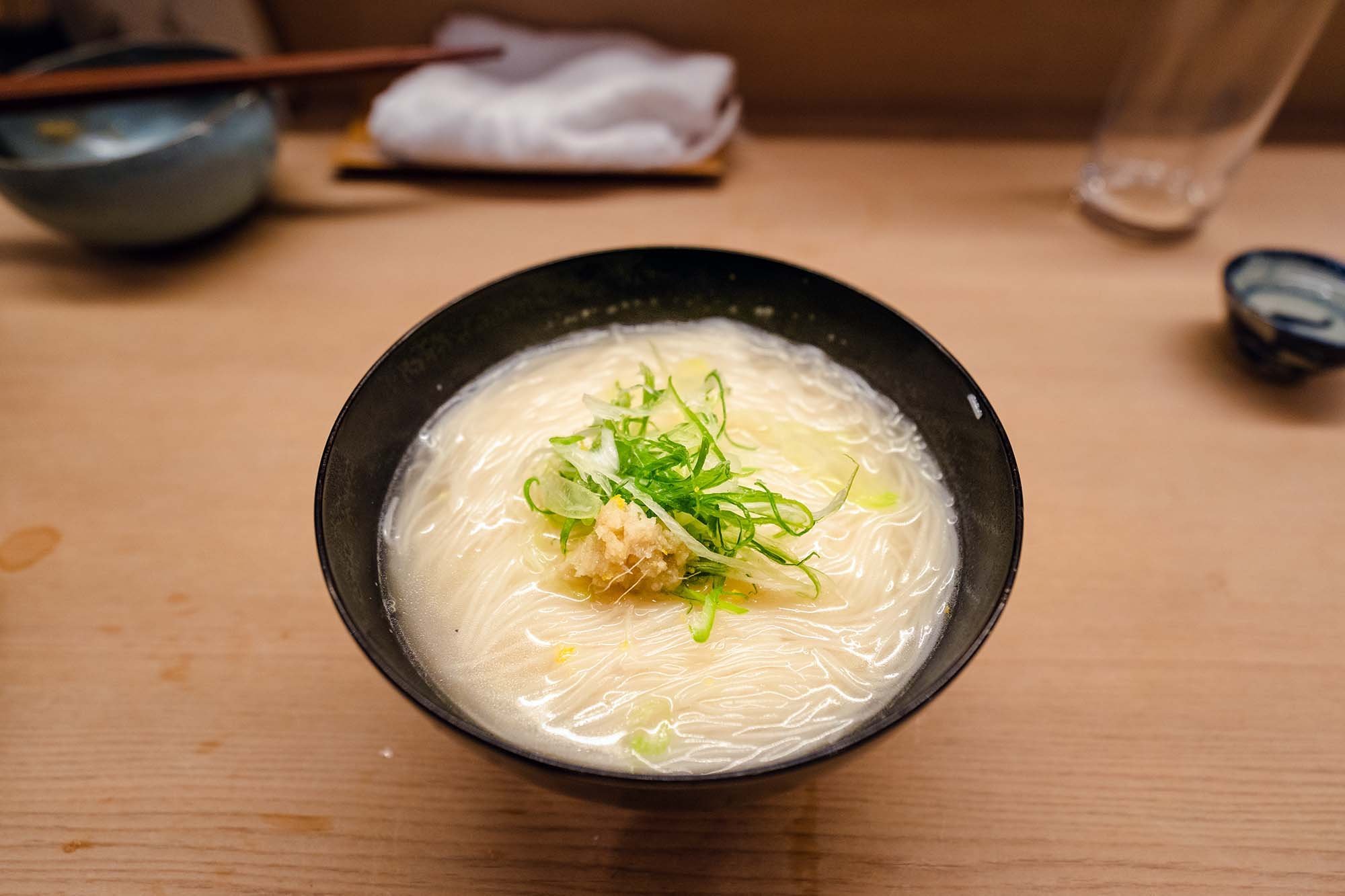
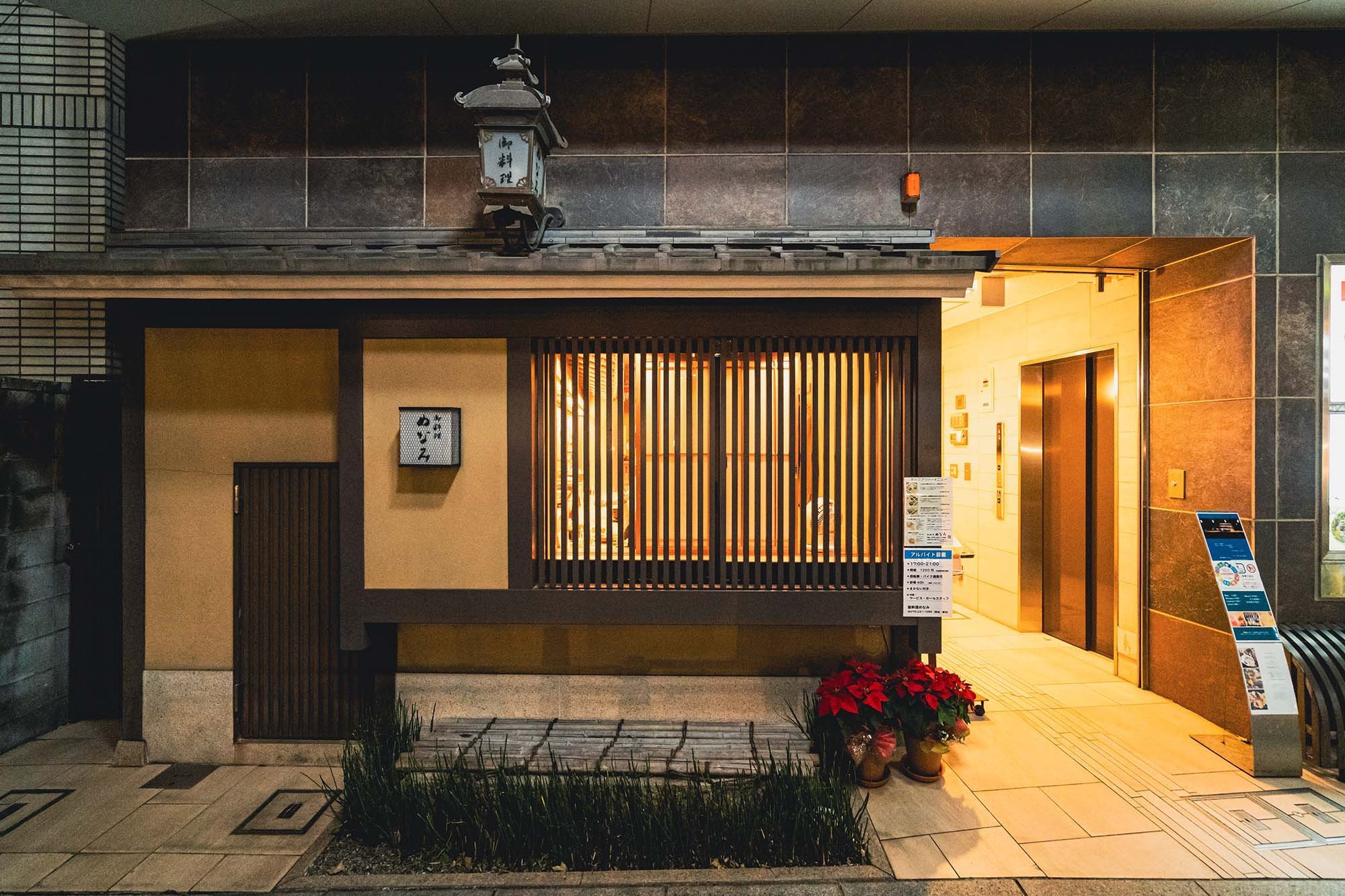
Authentic Kyoto cooking. Obanzai is a Kyoto cooking style that resembles simple, traditional home cooking.
There are a handful of rules that need to be followed in order for it to be called “obanzai”. For example, obanzai cooking requires using ingredients that are in season, and at least half of them needs to be produced or processed in Kyoto.
Menami has table seats and a counter that is really cool as dishes are lined up on the counter and you can watch the chefs cook up the meals. The food was delicious and as expected with Kyoto cuisine, most dishes had a light, subtle taste.
Yachiyo

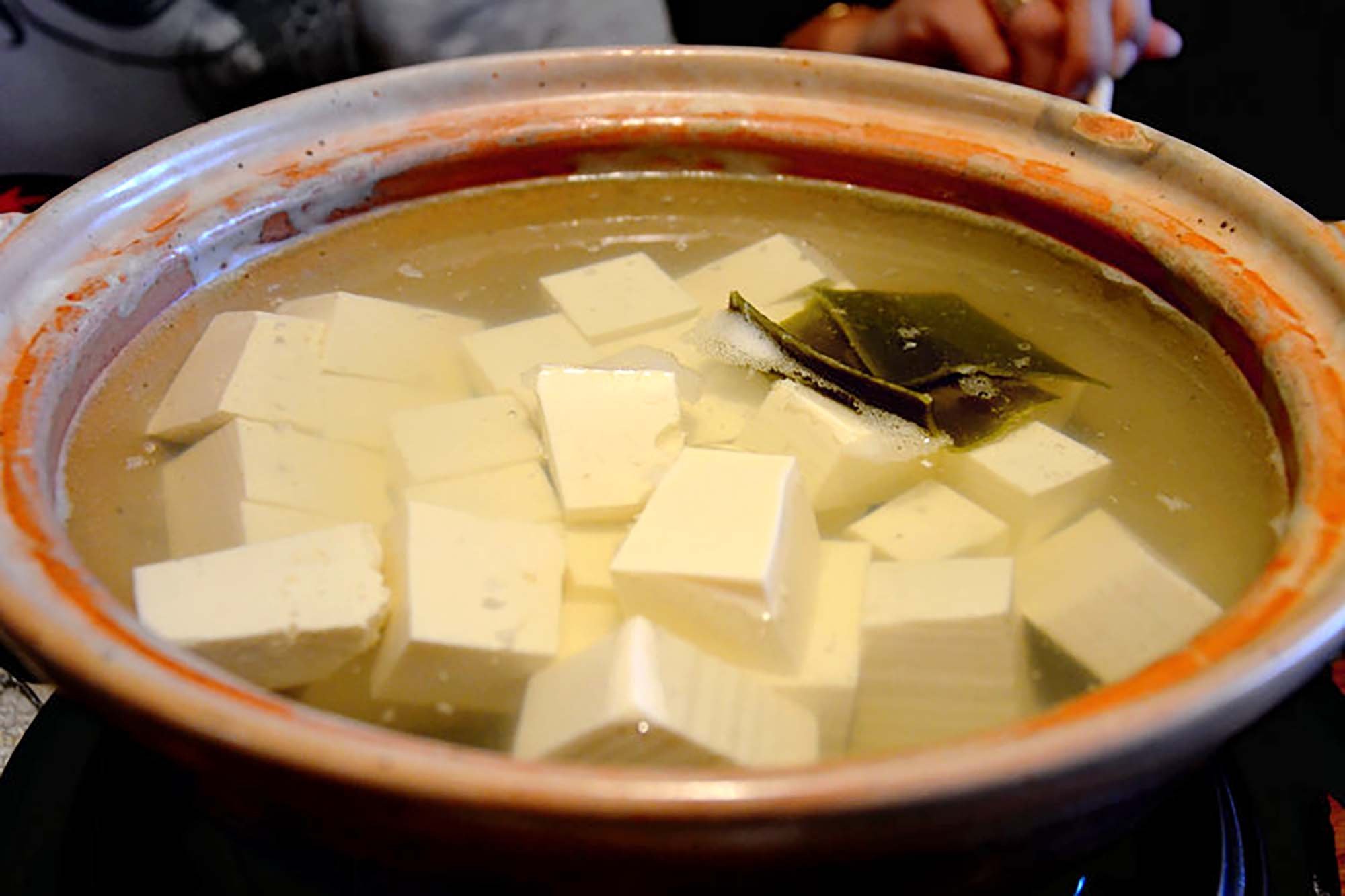
Located right near Nanzenji is Yachiyo, a ryokan hotel with a restaurant open to non-guests as well. They specialize in tofu, a dish that is amongst the foods Kyoto is known for most.
Their lunch course has an assortment of small dishes, many of which are different types of tofu, and it’s all centered around yudofu (tofu hot pot).
It's an excellent Japanese "washoku" meal experience, and a place that my family and I have gone to more than once.
Wajouryoumen Sugari
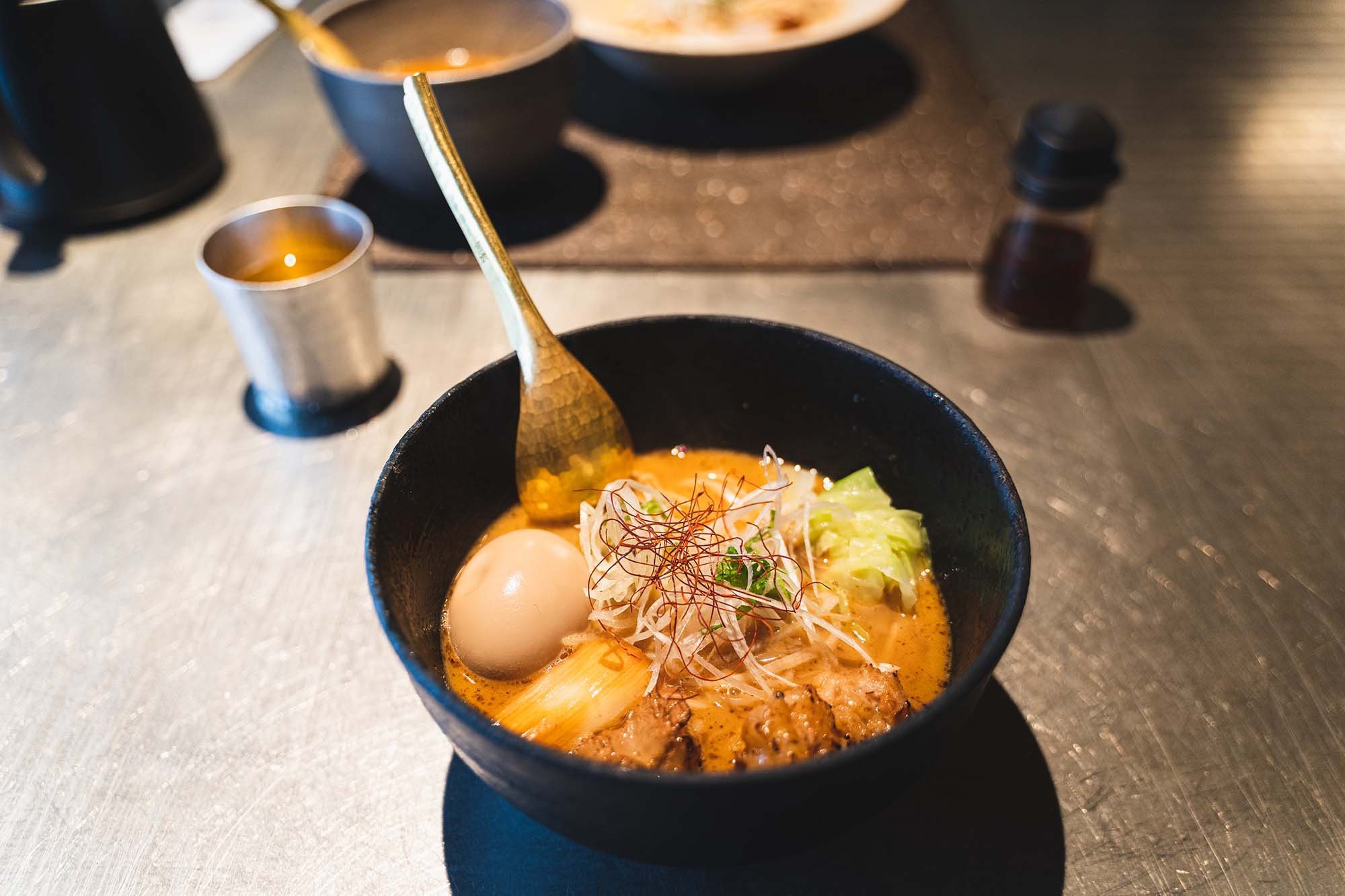
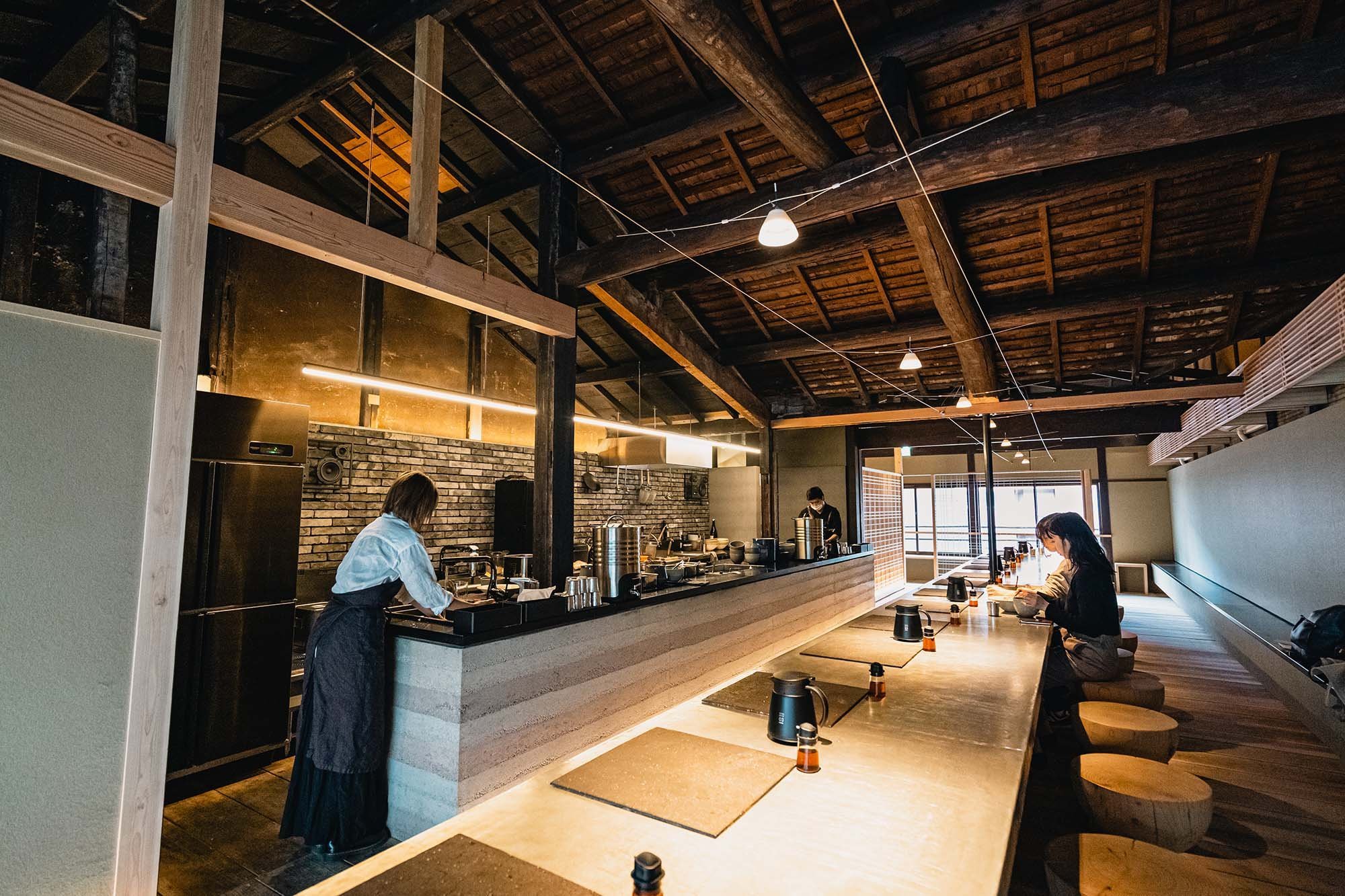
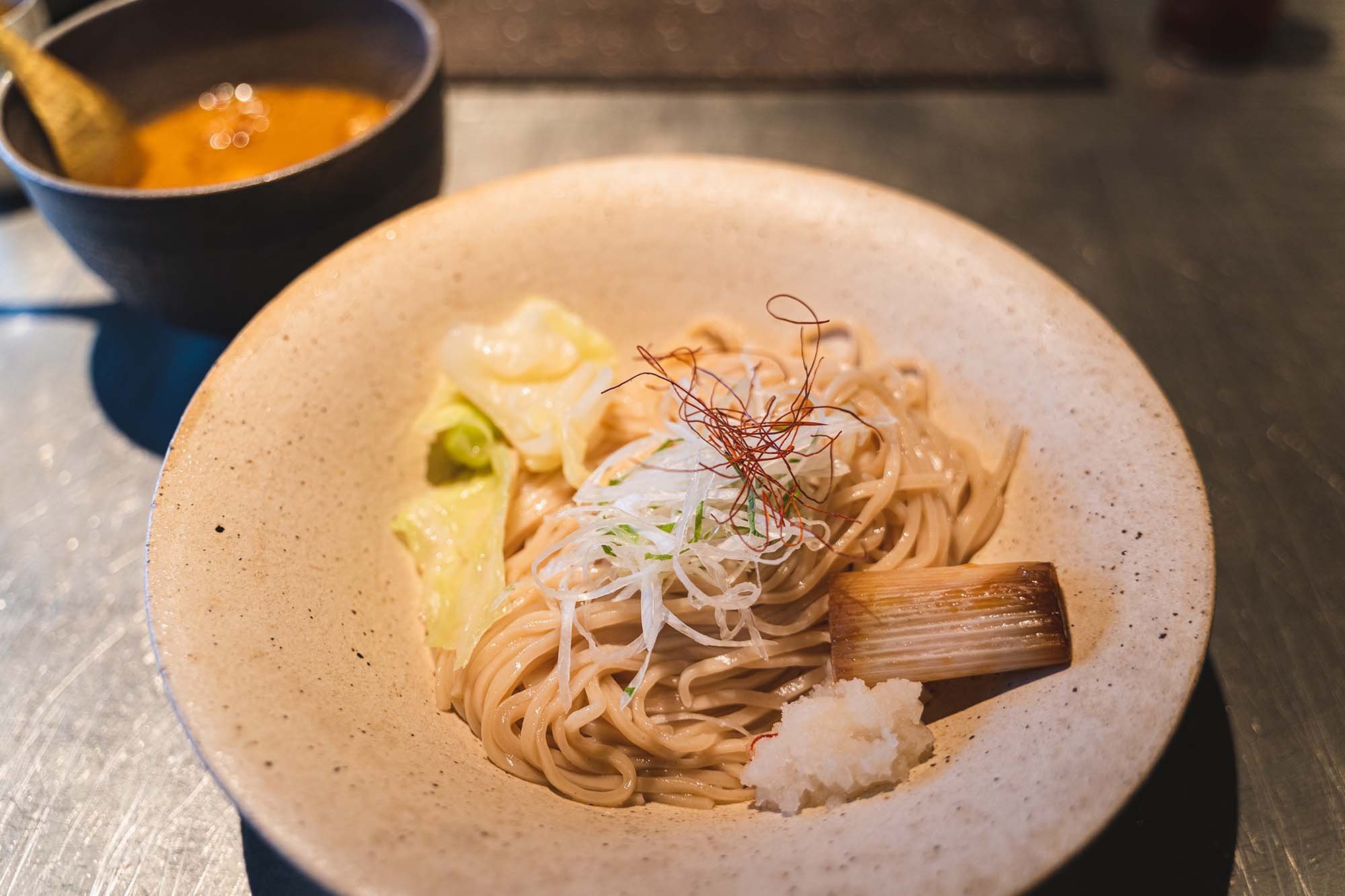
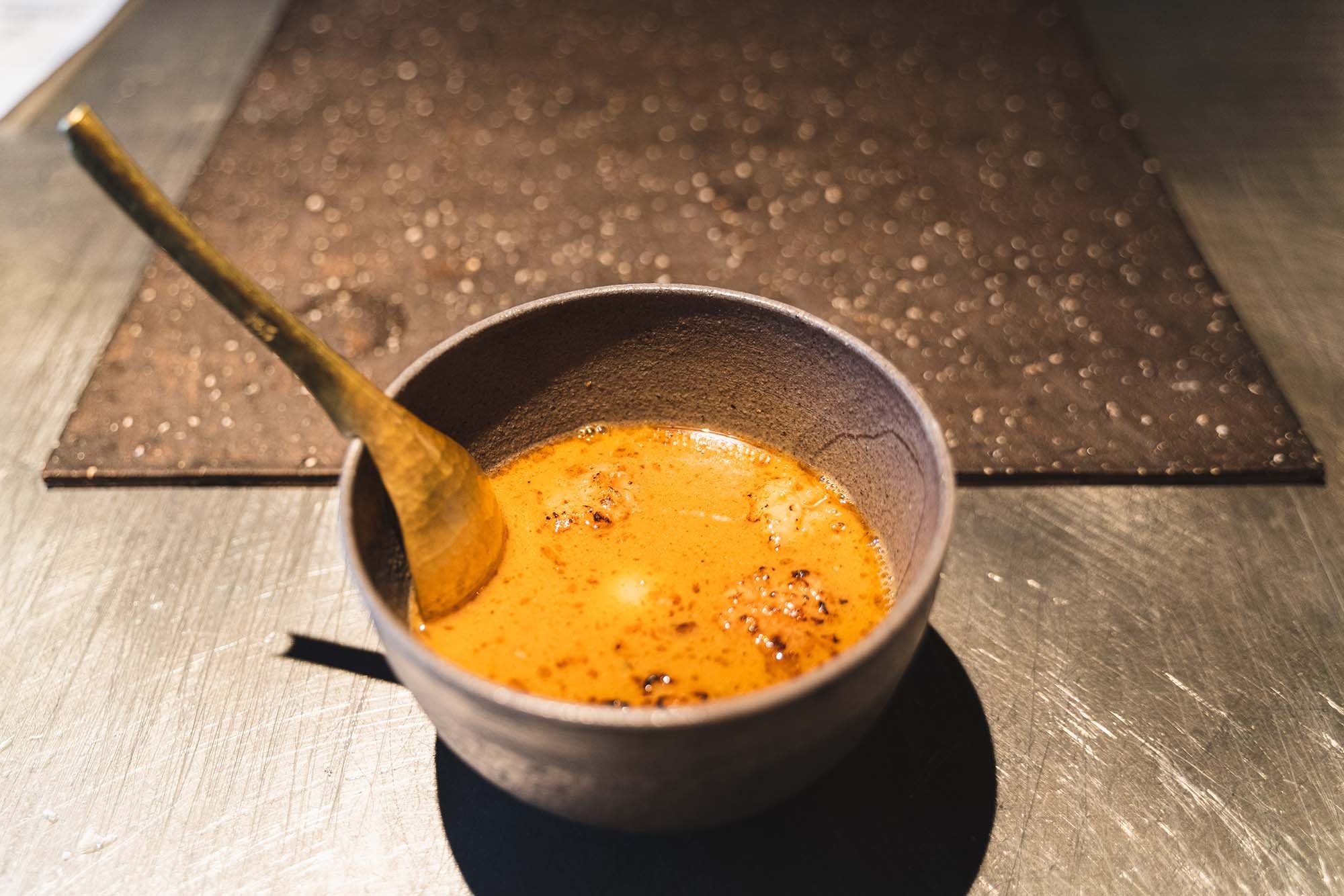
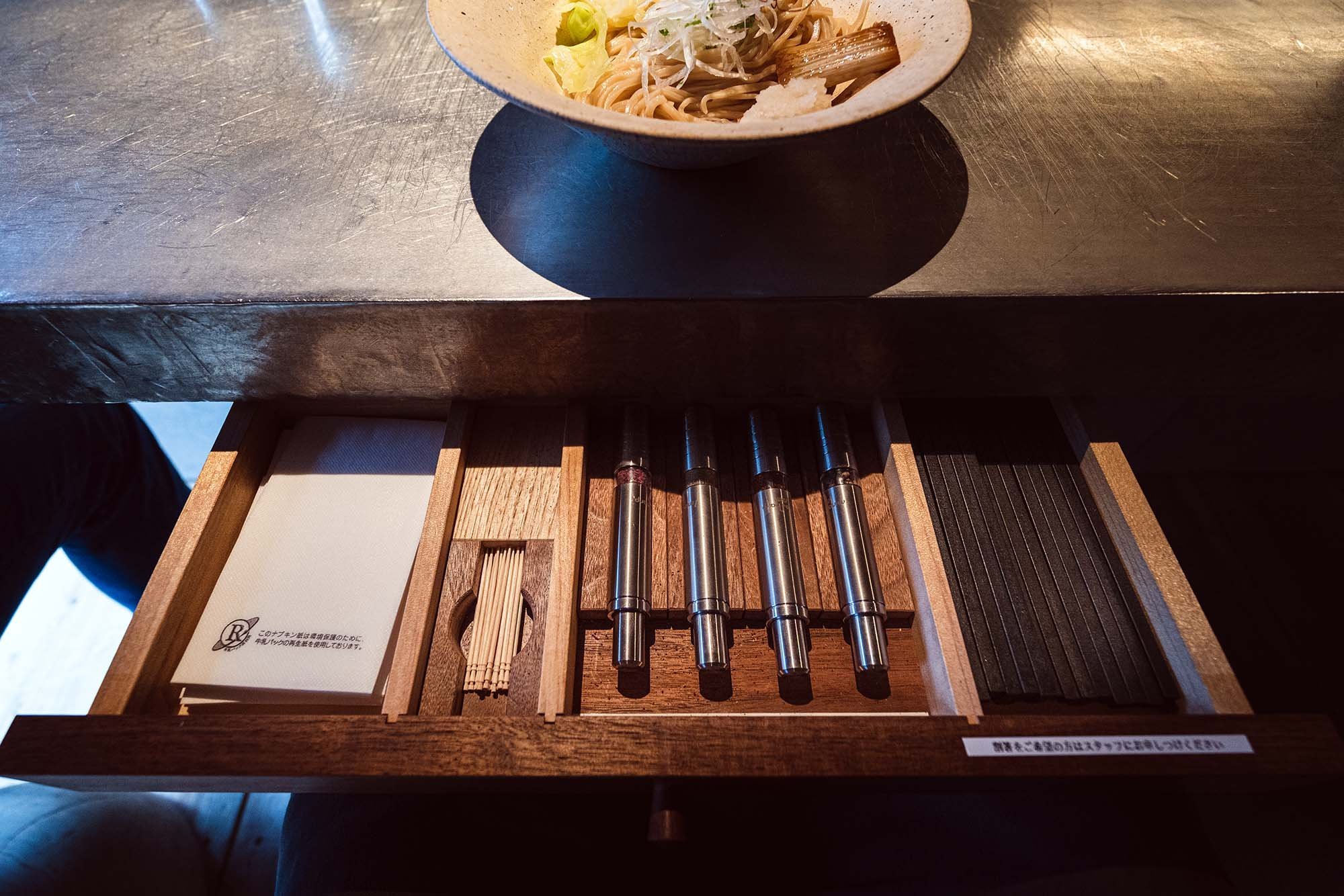
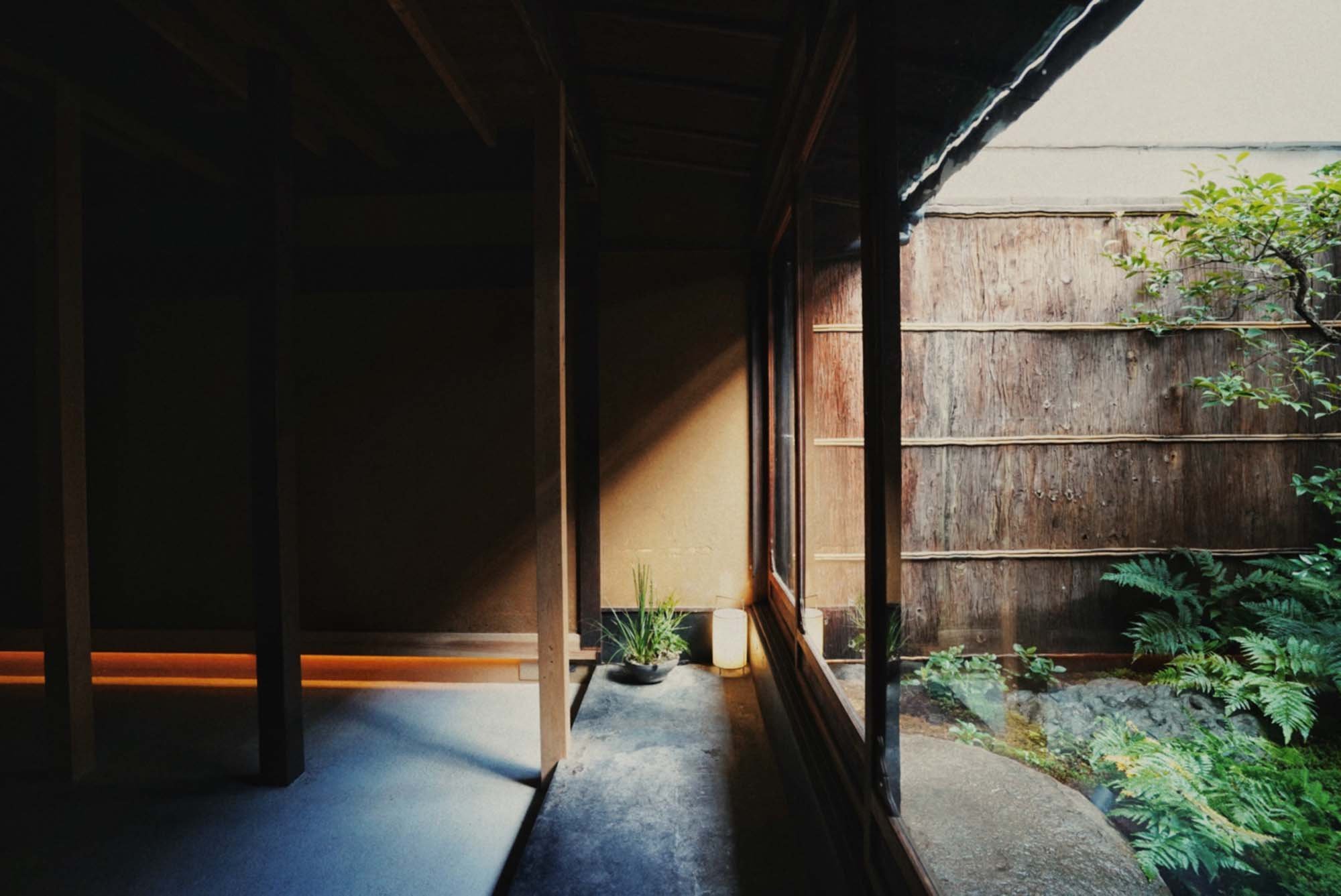
An extremely popular ramen shop in Kyoto, Wajouryoumen Sugari specializes in wagyu motsu ramen.
Their main location’s line was way too long when we went, so we went to their second, lesser-known and somewhat hidden in plain sight second location. It’s in a kurazukuri building, or old Japanese warehouse, and its interior was redesigned in a modern, minimalistic way. The design, utensils and condiments drawer, the peaceful music playing in the background… everything made for an elevated ramen experience.
It was delicious, not too heavy at all, yet tasty and well balanced.
Kouroan

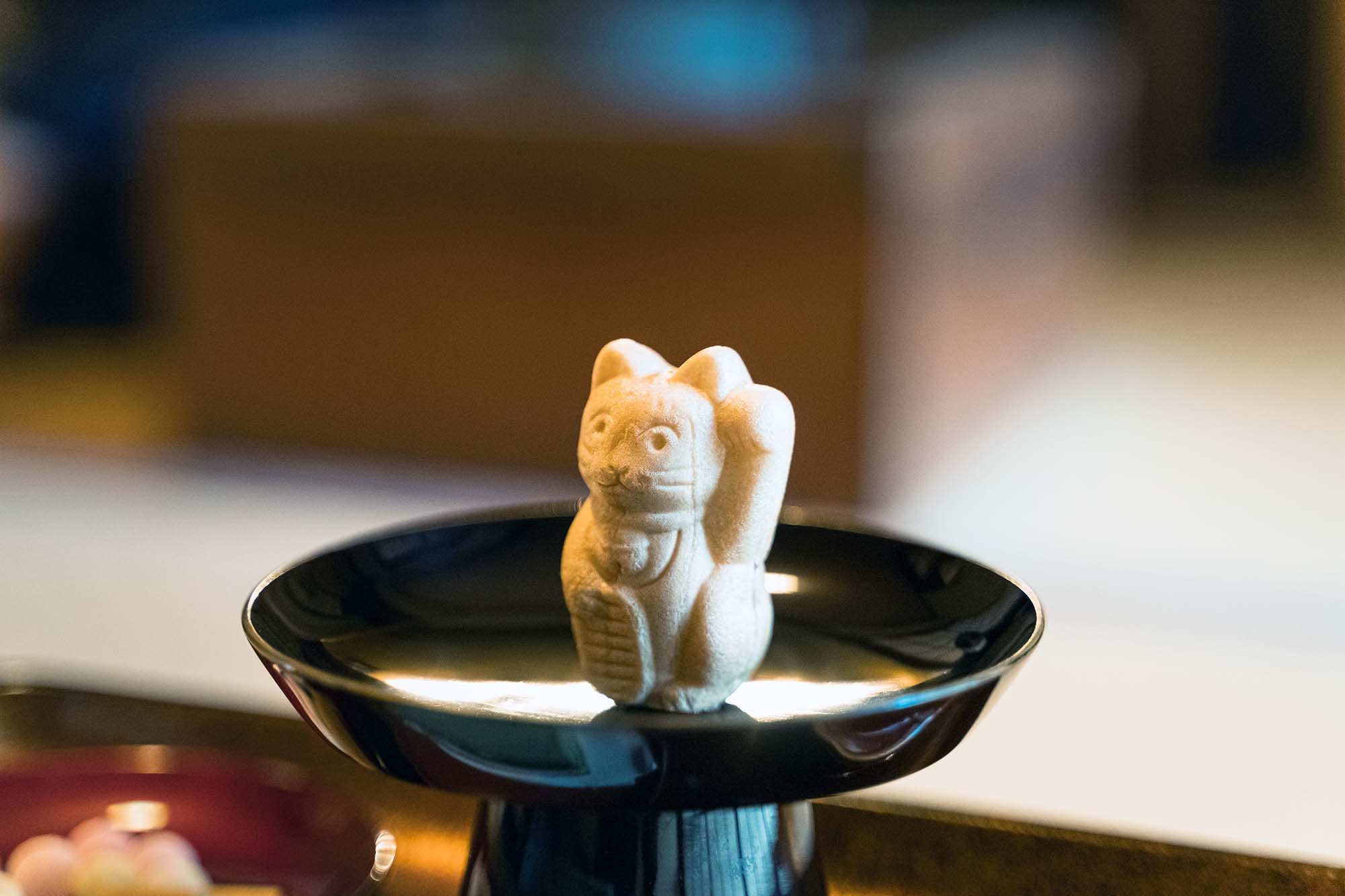
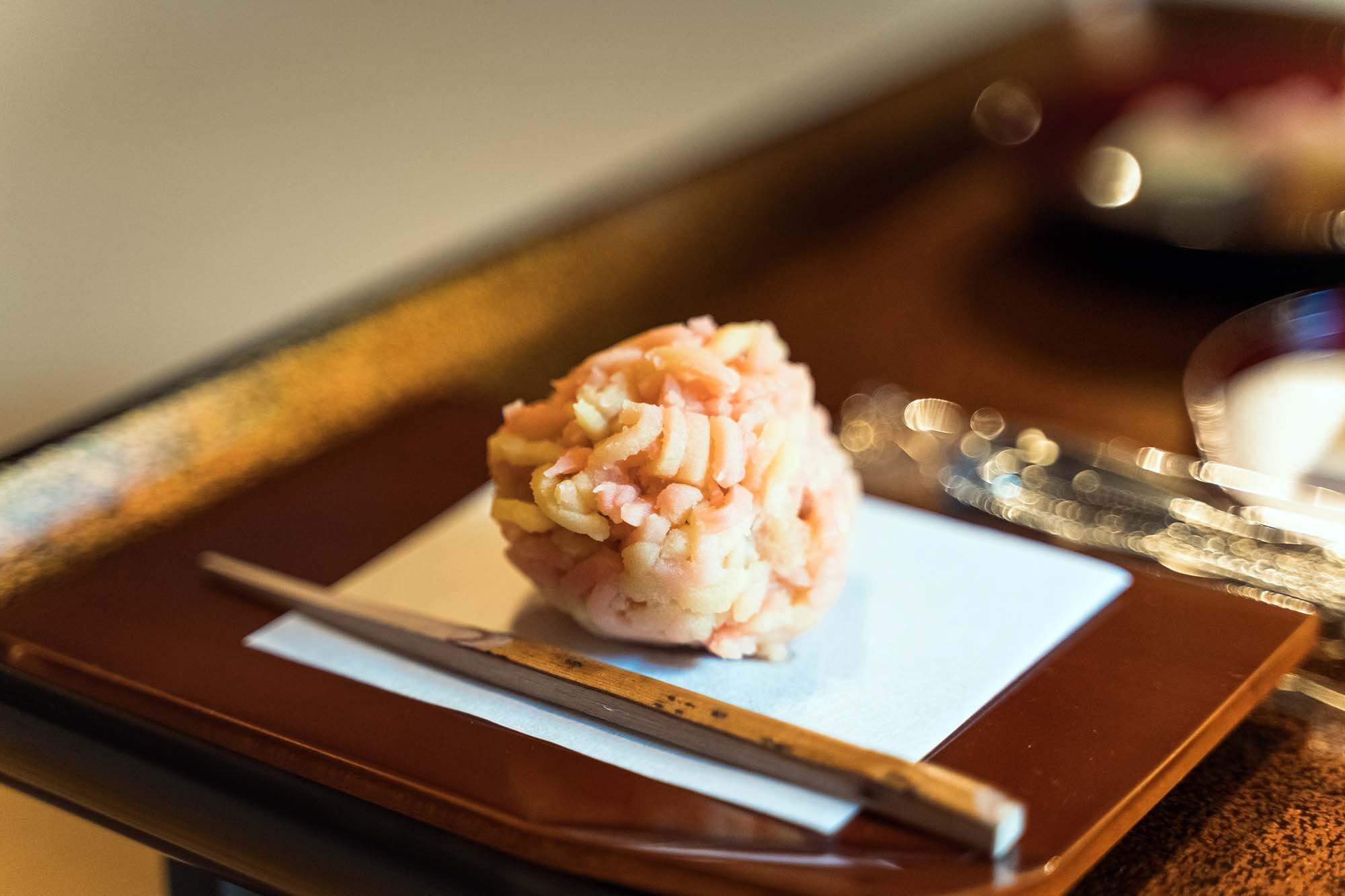
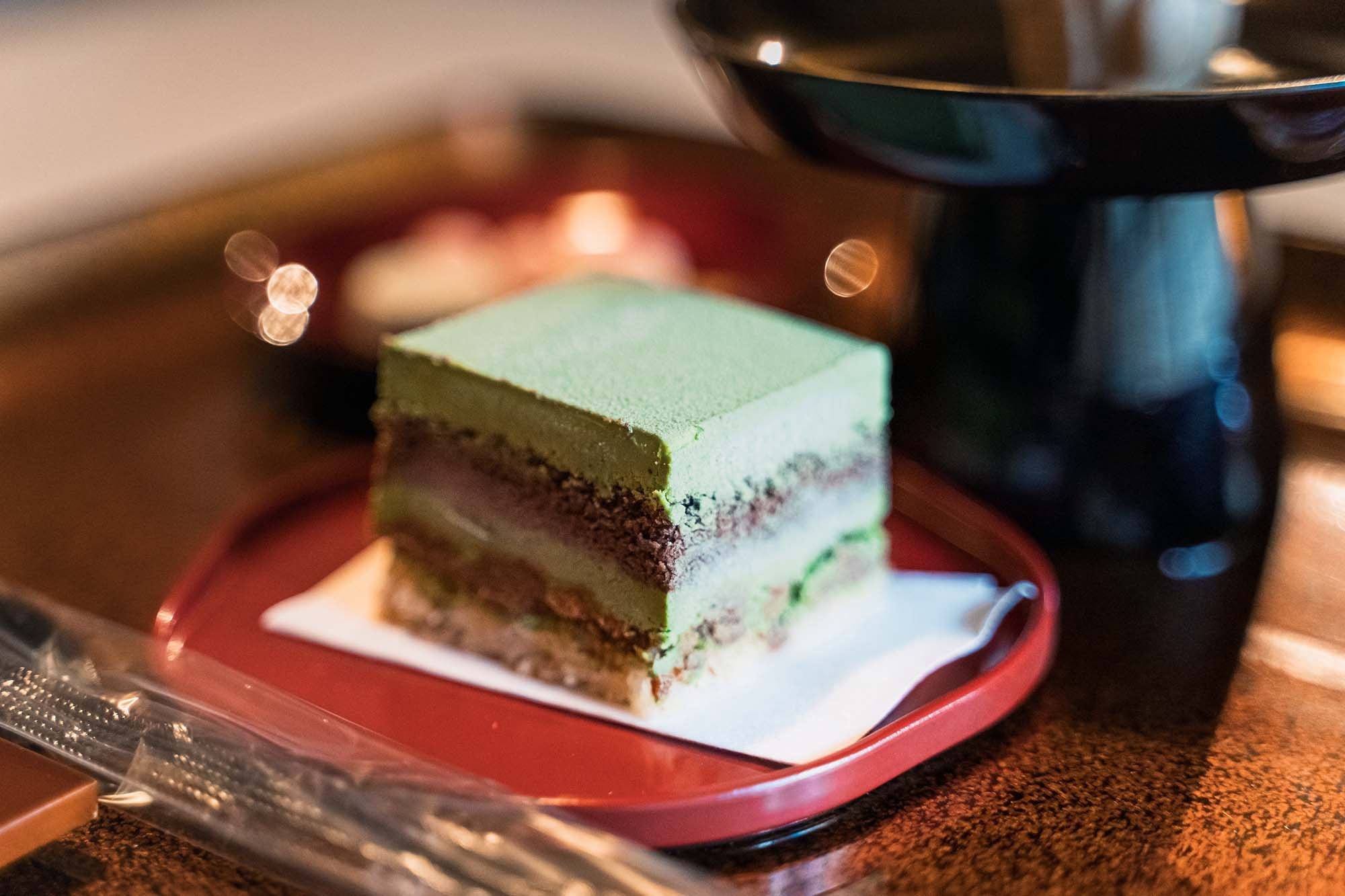
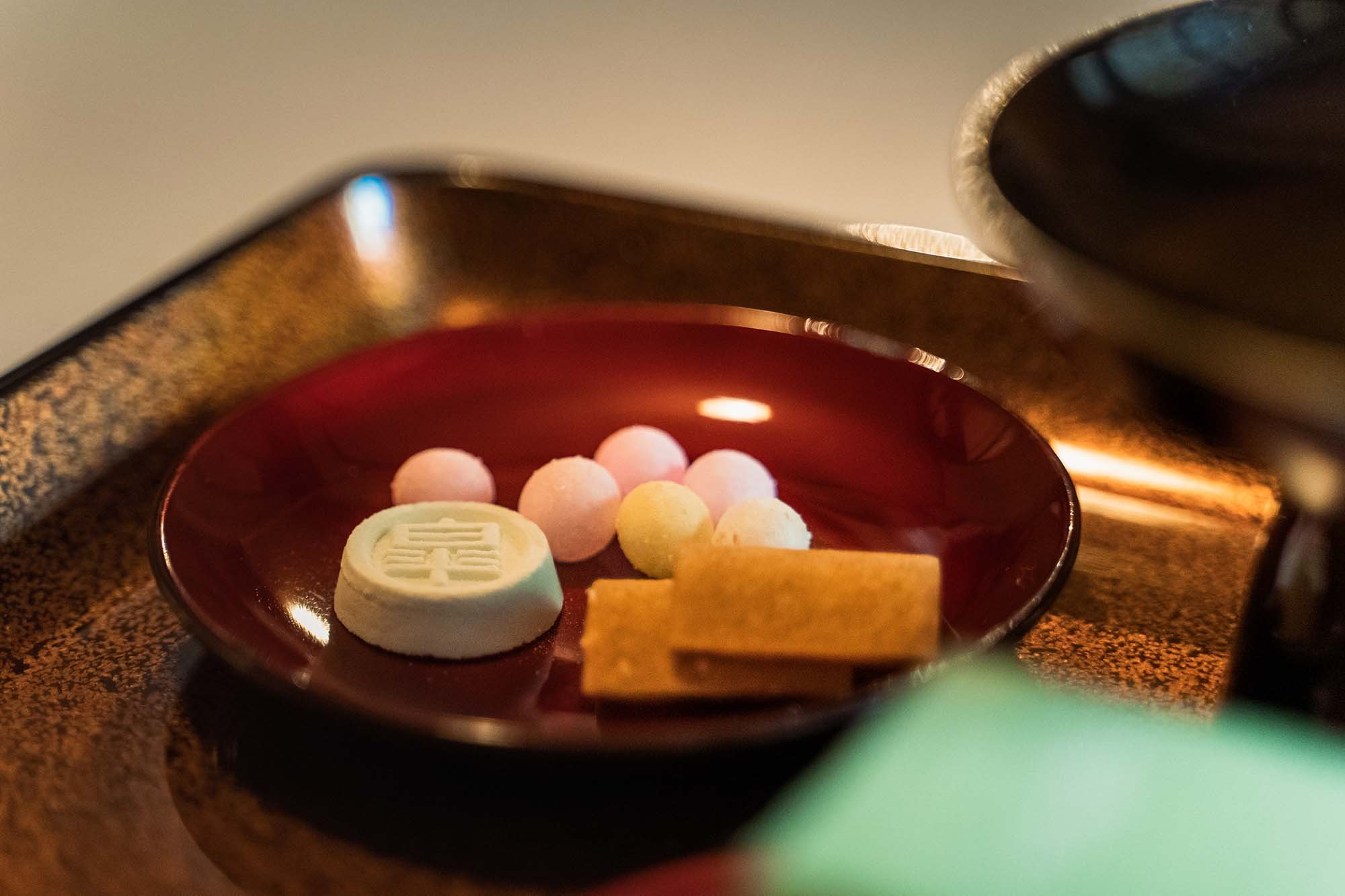
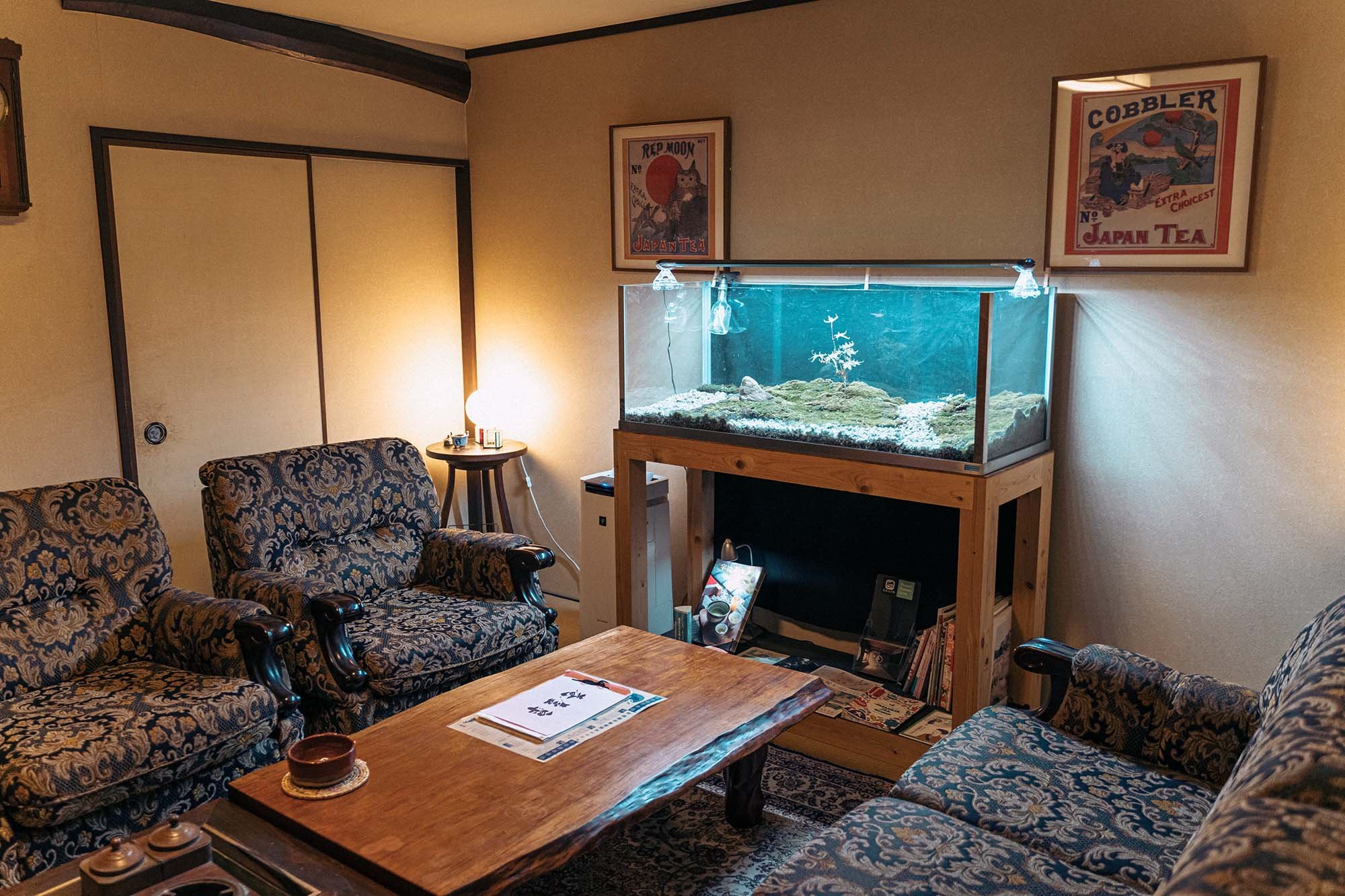
Having a matcha experience in Kyoto is great since the city is known for it. Kouroan is a good place for matcha, and its name roughly translates to a small house where you can have tea.
There are several semi-private to private rooms in the house, both tatami-floored ones and a lounge-ike one with chairs. The tea house is located in a temple area with several temples located there, and is just really peaceful.
We ordered a set that included a few different Japanese sweets and a matcha cake. The best part was that it was basically all-you-can drink, so after the first round, we were able to make our own matcha. They also have a cute cat that roams the area.
Tofu Matsugae
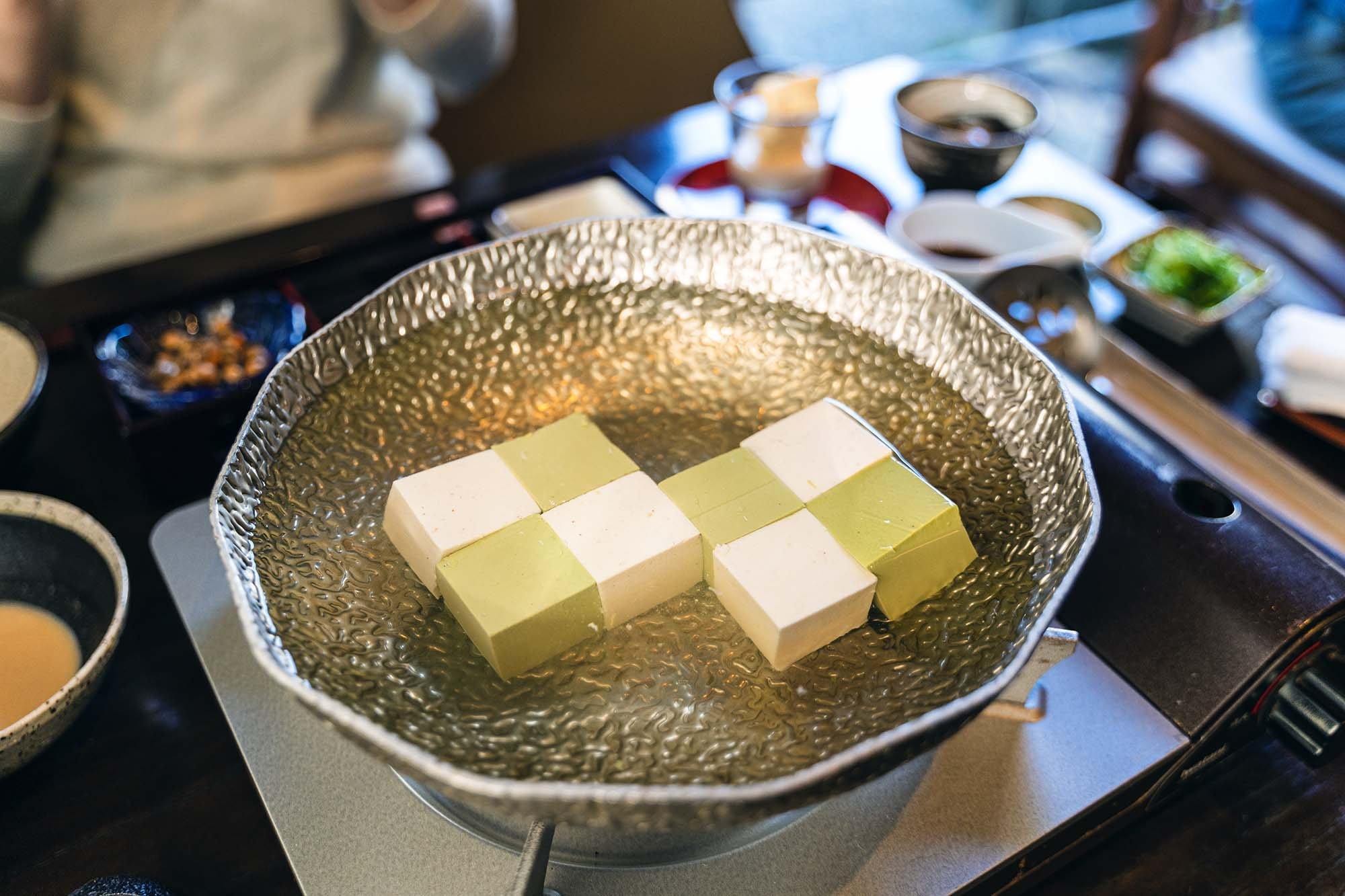
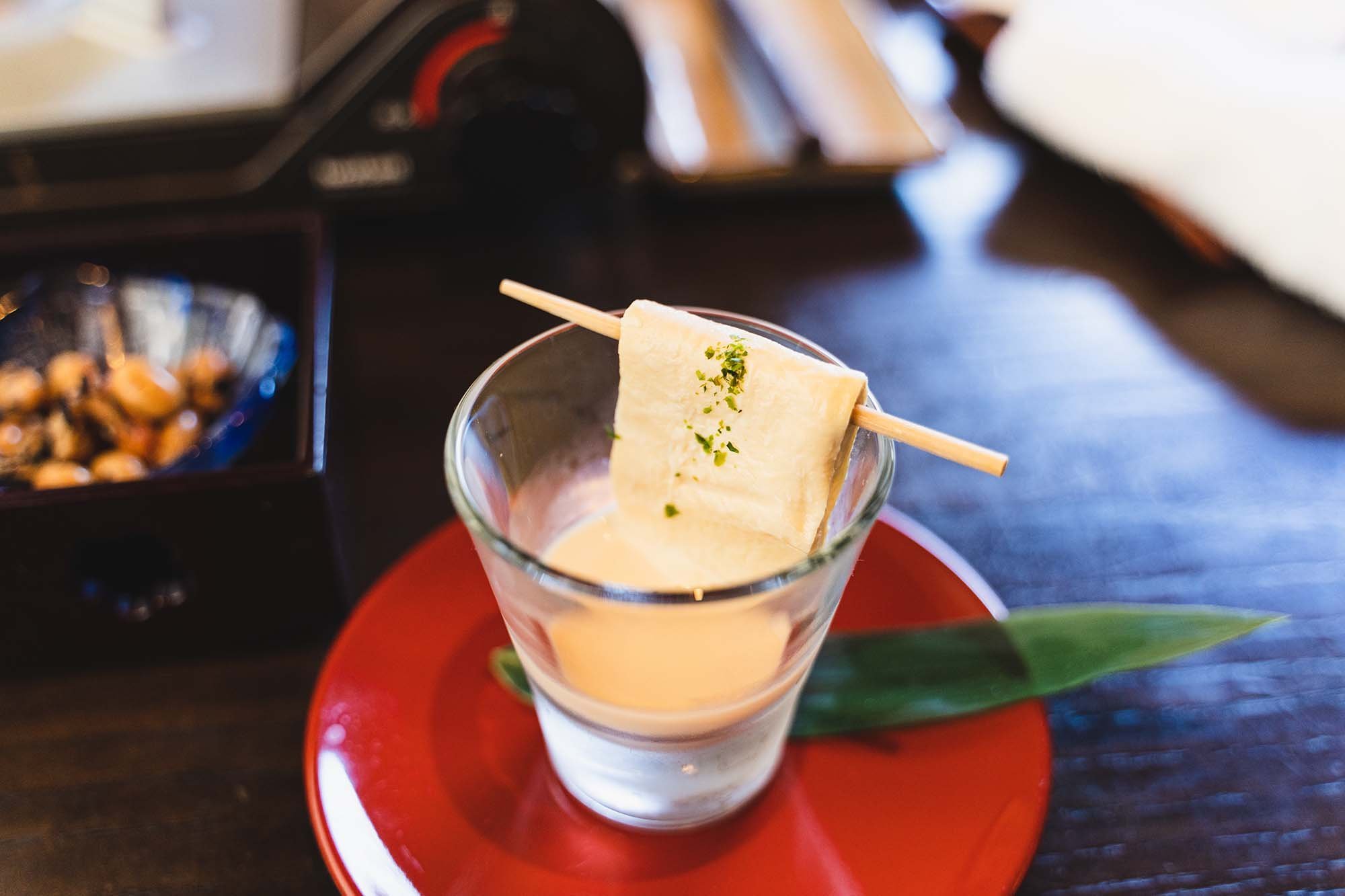
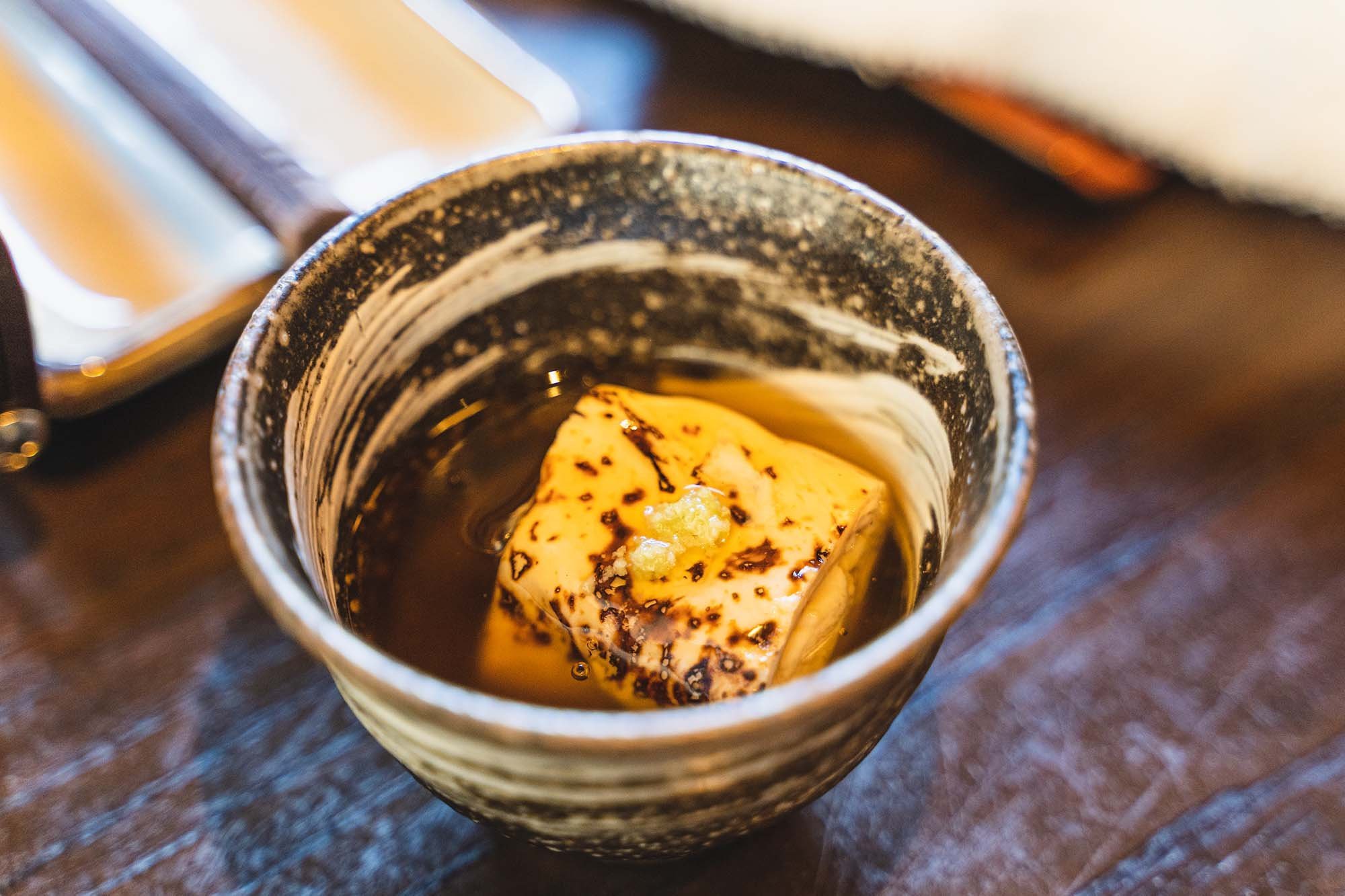

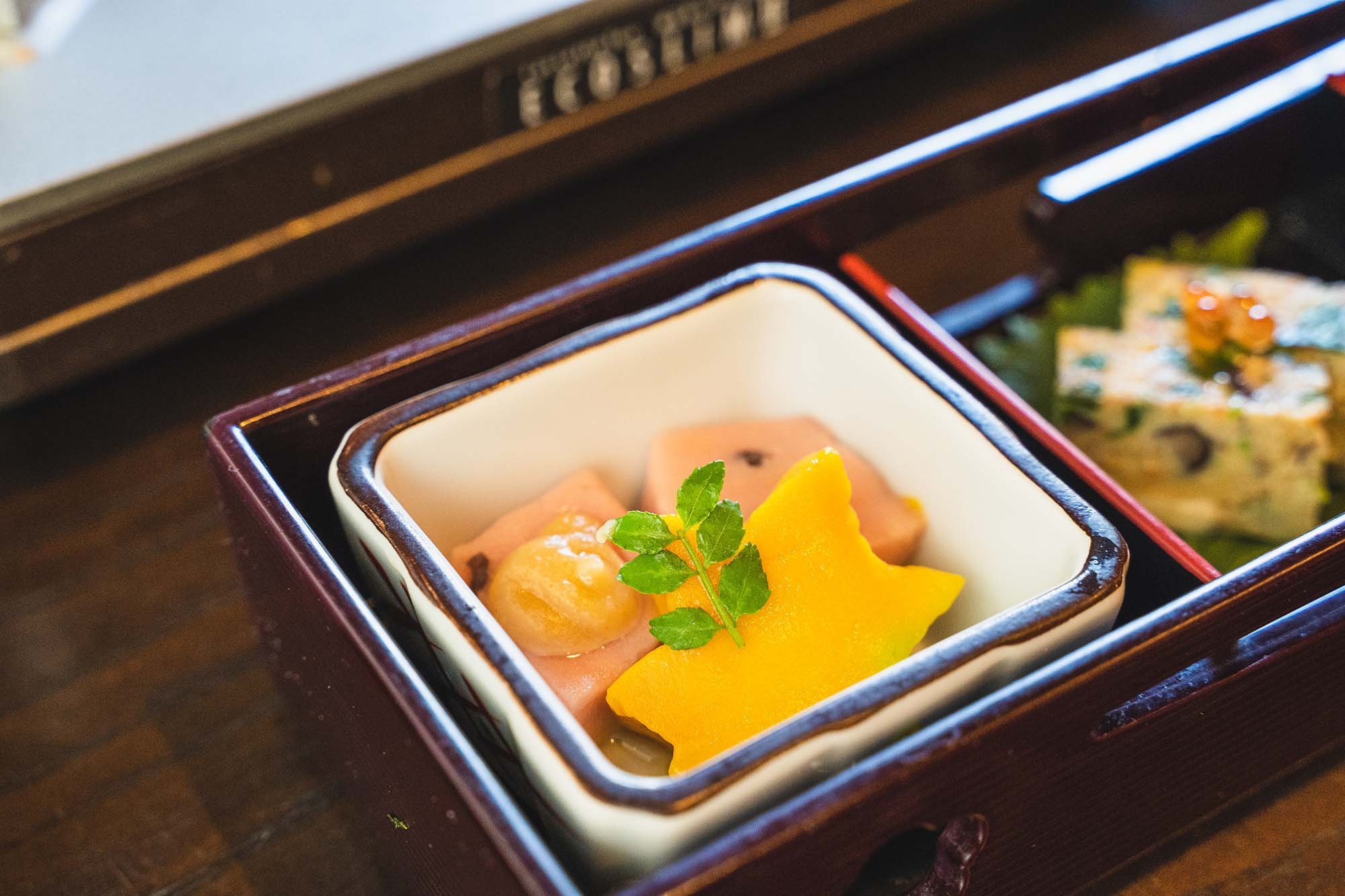
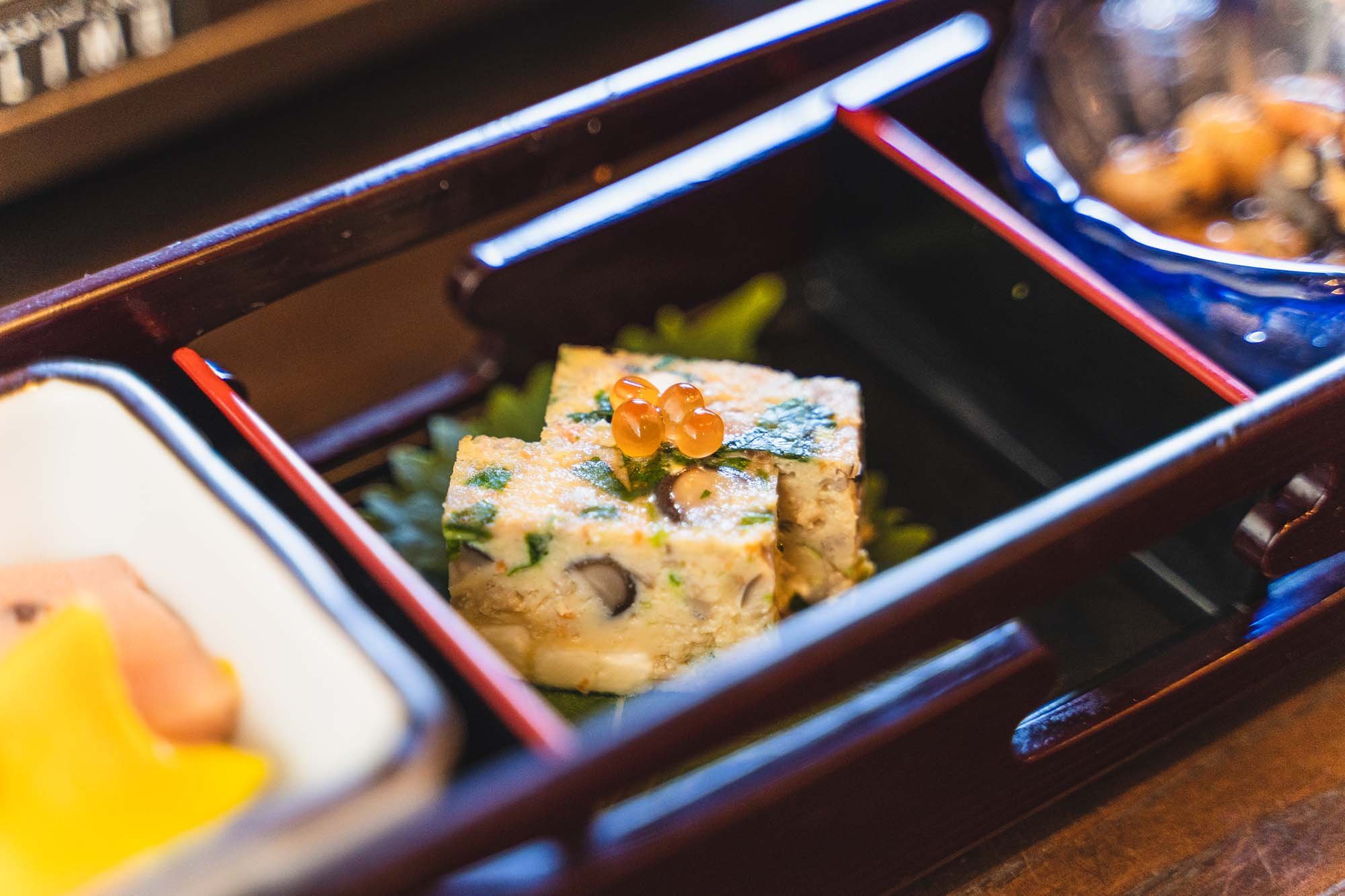
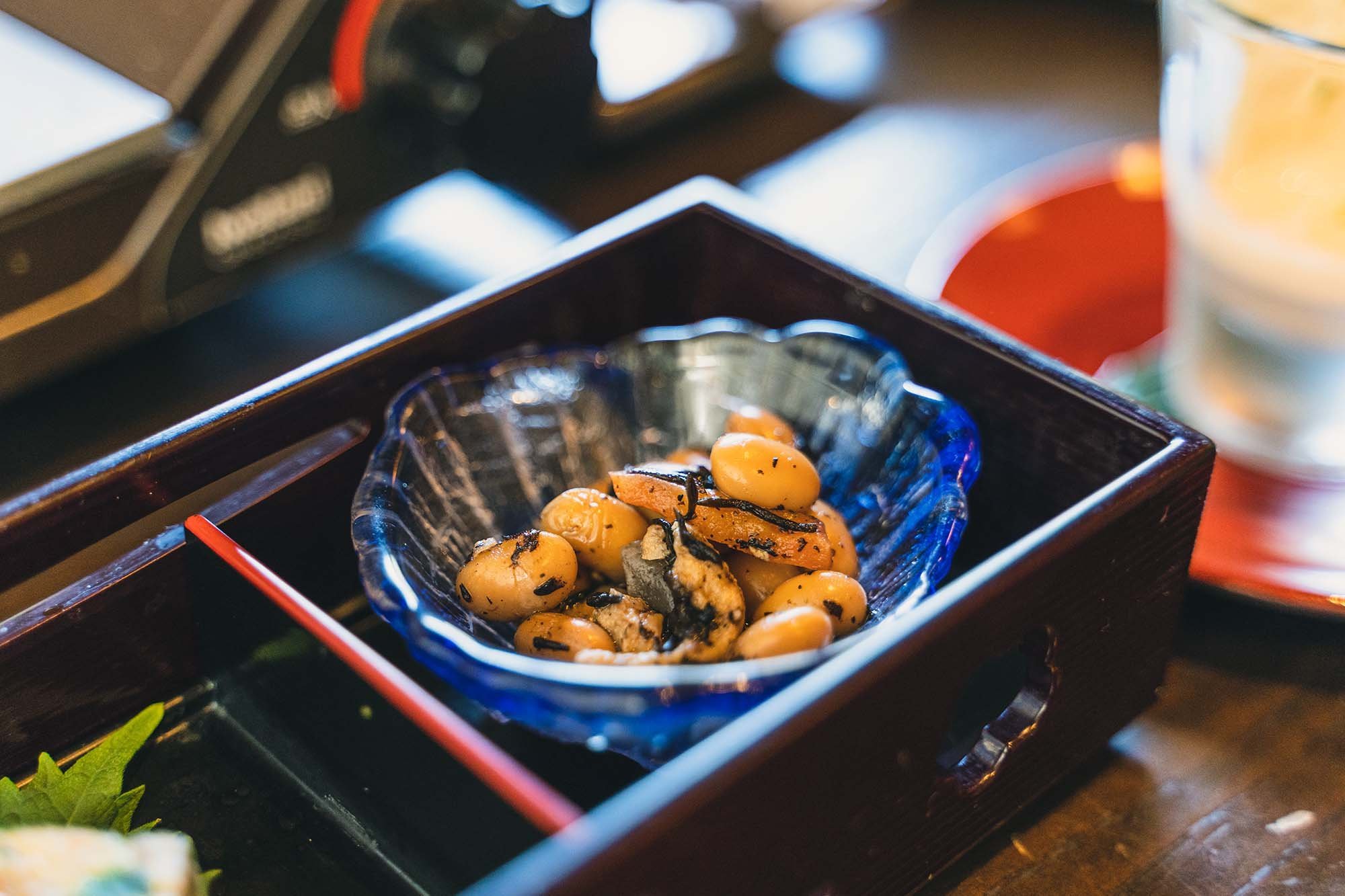
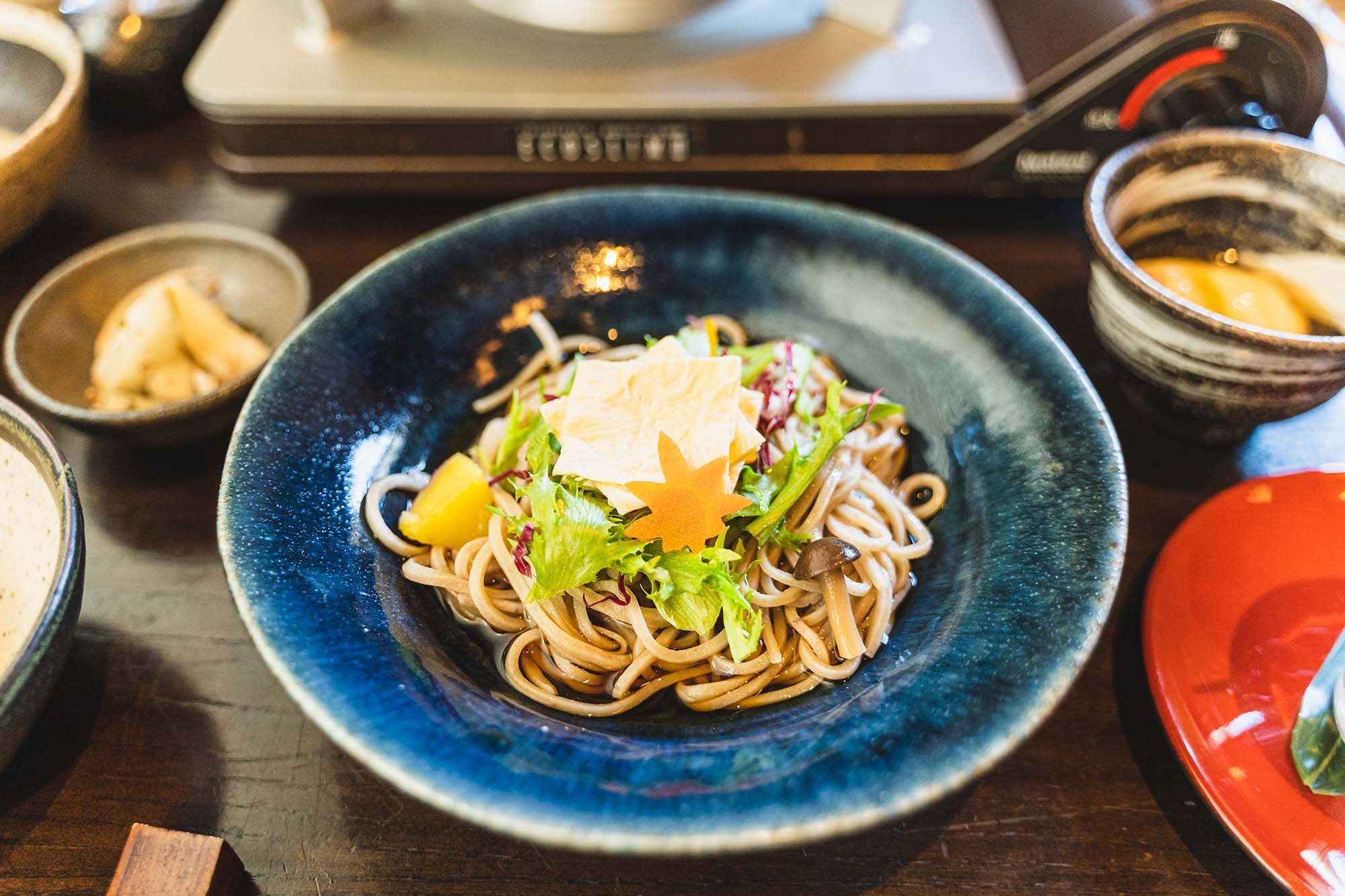
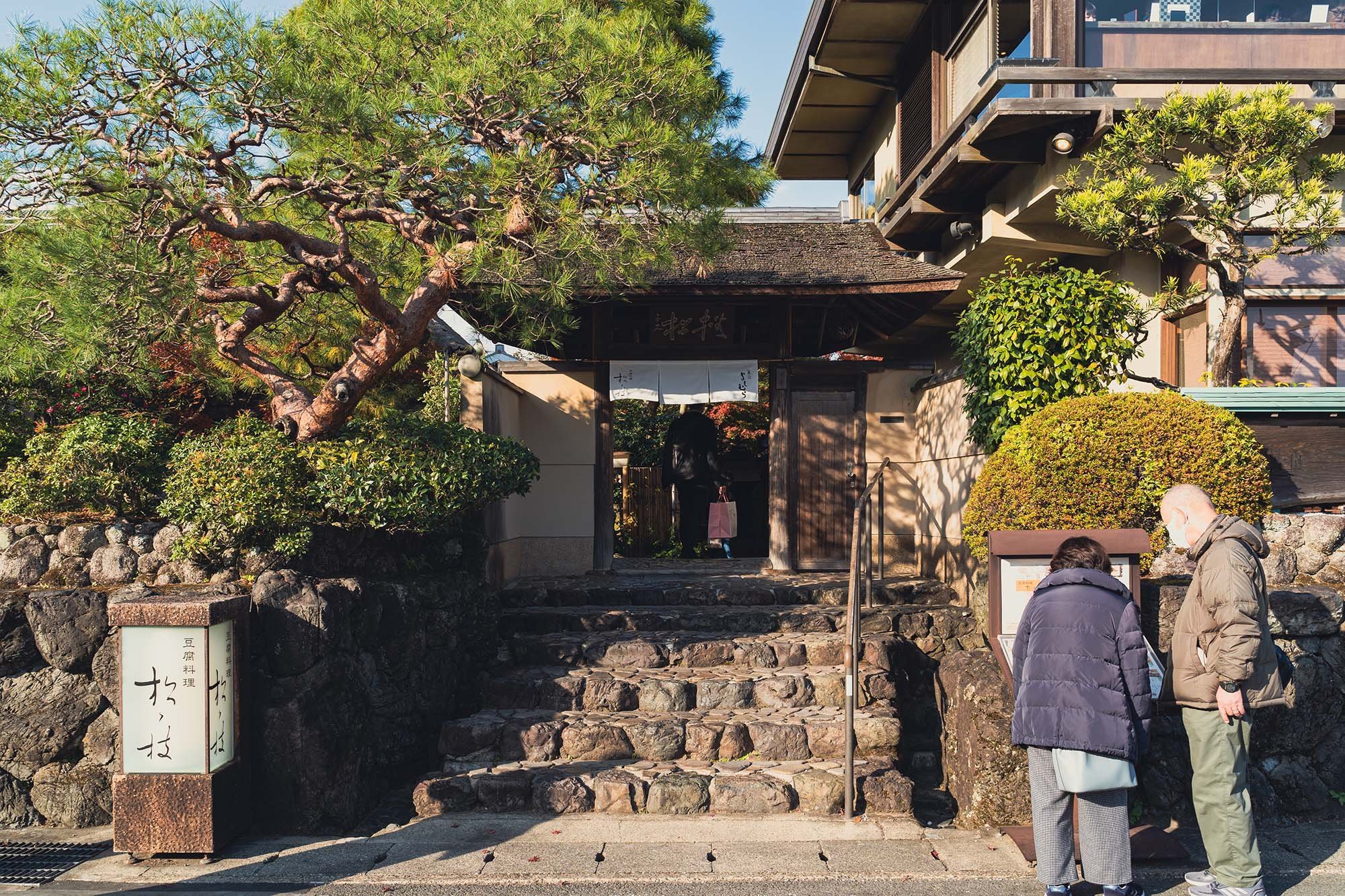
Kyoto is famous for tofu, and conveniently located in Arashiyama is Tofu Matsugae.
Their in a secluded Japanese garden-like area alongside the Katsura River, and their lunch consists of several small dishes. A couple of my favorites were the yuba, or tofu skin, and tempura. Everything is centered around yudofu, or tofu hot pot, which is a Kyoto dish. The one here had regular tofu and a matcha one which was pretty interesting.
Have you been to any of these? If not, put them on your list for the next time you visit. Feel free to share this with someone as well.
Keep in touch:
SHARE:
Uji, Kyoto
Just outside of central Kyoto, Uji is great for Japanese sights and matcha.
Uji is a small area just to the south of central Kyoto
It is most known for green tea
Byodoin Temple is one of the famous sights located there
Uji is a small city located within the Kyoto administrative district. It’s just to the south of central Kyoto and nearby other popular destinations like Nara and Osaka.
How to get there
There are two train stations in Uji, but if you’re coming from Kyoto, JR Uji Station may be the easier option. The Nara Line goes from Kyoto Station, and that’s what we used when visiting.
About Uji
Uji is most known for its green tea. Kyoto is said to be the original place where tea cultivation took place in Japan, and Uji became famous for having superior quality tea.
It’s still this way today, and there are a few famous tea shops to check out, one which I’ve listed below on this page.
Unless you’re staying in Uji, I consider it a day trip. I’ve been to Uji twice and I’ll introduce some of the things I’ve done and had to eat.
I also created a video where we visit Uji and other places in Kyoto:
What we did
Byodoin Temple
One of the nicer temples to visit when traveling in Kyoto. Byodoin Temple sits in the middle of a garden area, not too far from JR Uji Station and a lot of main attractions.
In the fall, it’s especially nice with the vibrant leaves located all around the temple grounds. There’s also a museum here as well.
Cormorant Fishing
Along the Uji River, near Byodoin Temple, is where a display of cormorant fishing takes place.
It’s known as a summer event that dates back to the Heian era (794-1185), and fishermen light up a torch and use the birds to retrieve fish.
Between July and September, visitors can sit on wooden boats and watch the fishermen and cormorants go to work. When I went with my family, there was even a boat with a maiko on board.
I’ve also had a good lunch and matcha experience in Uji that I recommend.
Nikuya Kurokawa

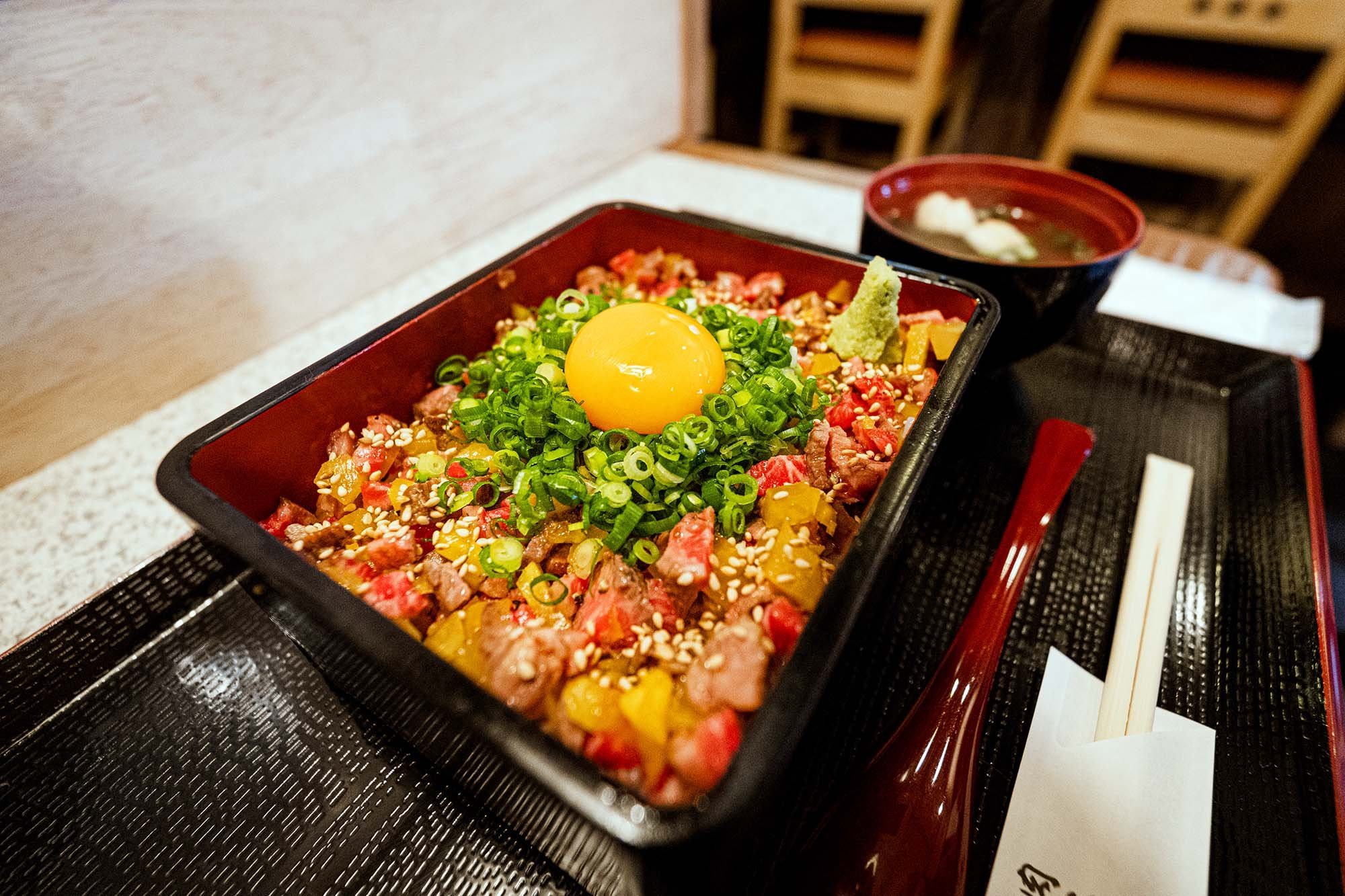

Simple but so delicious. Nikuya Kurokawa is an extremely popular restaurant that specializes in wagyu beef donburi’s (over rice).
We got their regular wagyu beef donburi and one that was mixed together with takuan, which is a type of Japanese pickles. Both came with an egg yolk that you can put on top and a soup.
You need to go really early as there was already a line 30 minutes before opening, and be prepared with cash. It was worth it, though, this meal was very, very good.
Nakamura Tokichi



When in Uji, you have to get matcha since it’s known for it. Nakamura Tokichi began here in 1854 and has had several generations of owners.
We made a reservation for their tea room, where we could sit on tatami mats, sip matcha and eat namacha, which is a dessert that comes in a bamboo cup. In it are sweets such as anko (red bean), matcha jelly, mochi and matcha ice cream.
There’s also a gift shop that has a range of matcha powder at different levels, matcha baked goods, hojicha (roasted green tea) and more. Definitely a stop to be made when in Uji.
Keep in touch:
More travels:
Koenji, Tokyo
Koenji is thought of as one of Tokyo’s coolest neighborhoods by locals, and is known for its alternative subcultures, used clothing shops and cheap bars.
Kōenji is thought of by locals as one of Tokyo’s coolest neighborhoods
It is best known for being an area of alternative subcultures
The Kōenji Awa Odori festival is held there each year, and attracts more than 1 million people
Rarely does it ever make a tourist’s itinerary of places to visit, but Kōenji is a popular neighborhood for local Tokyoites. For anyone looking for a more authentic part of Tokyo to check out, it’s a decent place to consider.
How to get there
Kōenji Station is on the JR Chuo train line, making it easy to access from Shinjuku. The Marunouchi subway line will also bring you just south of the main area to Shin-Kōenji Station.
About Koenji
In the 1960s, radical liberal student movements grew and with them, the neighborhood of Kōenji.
Fast forward to today and it’s still known for being a bit of a gathering place for people part of various, alternative subcultures.
There are numerous used clothing shops, cheap bars and eccentric cafes, and an underground music scene. The neighborhood itself has largely avoided modernization and is not upscale or fancy, and many of the streets retain an old mid 1900s, or Showa, vibe.
It’s often compared to the Shimokitazawa area of Tokyo.
If you’re like me and enjoy exploring areas for street photography, Kōenji is a great place to do that. I’ve made a video doing just that.
Kōenji is thought of as a desirable area to live due to not being far from the city center and having both a JR train line and a Tokyo Metro subway line running through it.
The average rent for a 1K studio in Kōenji as of December 2021 is 82,600 JPY (USD $724 - The average for Tokyo in 2019 was USD $870). [J]
Koenji Hikawa Shrine
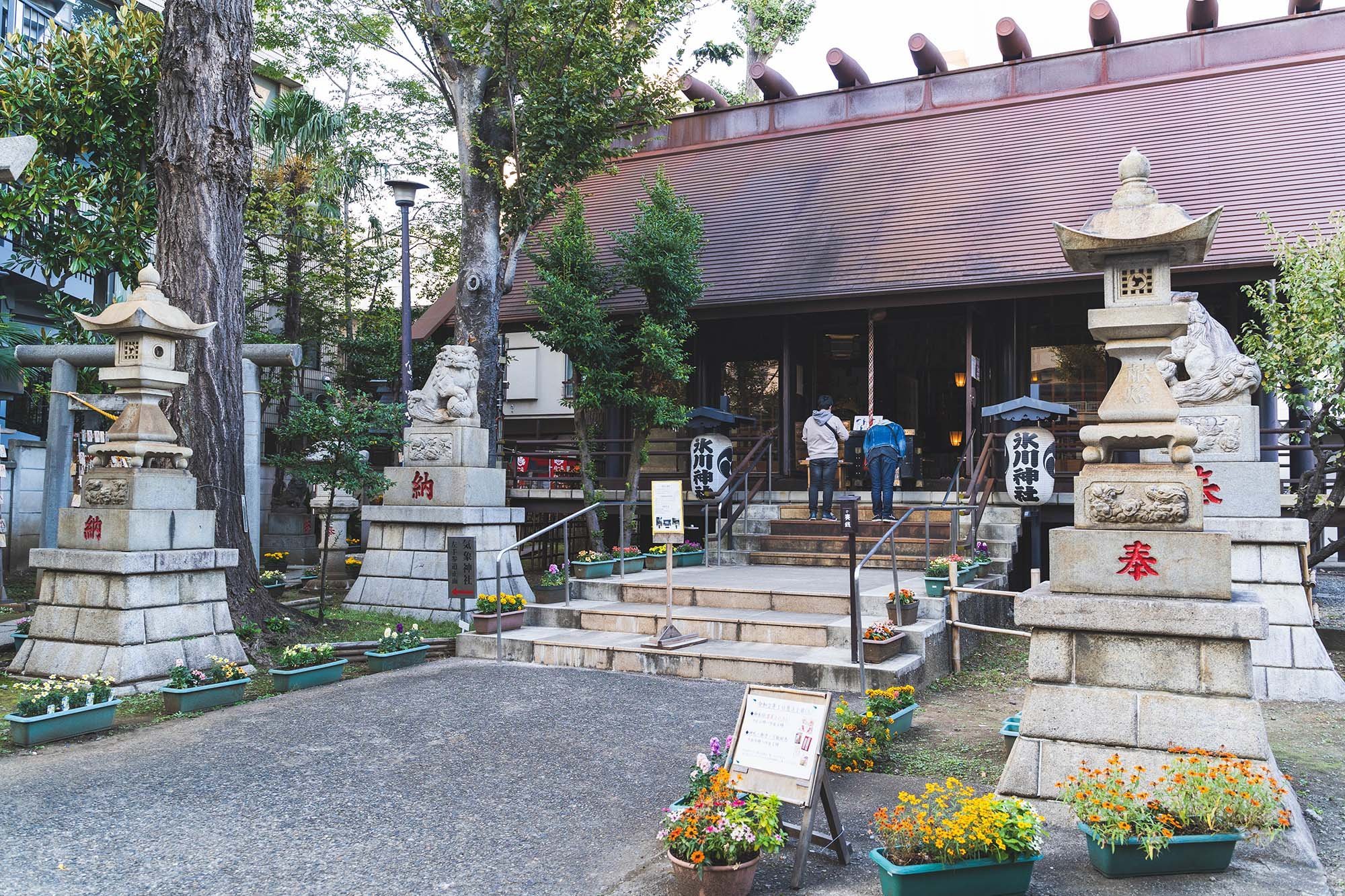
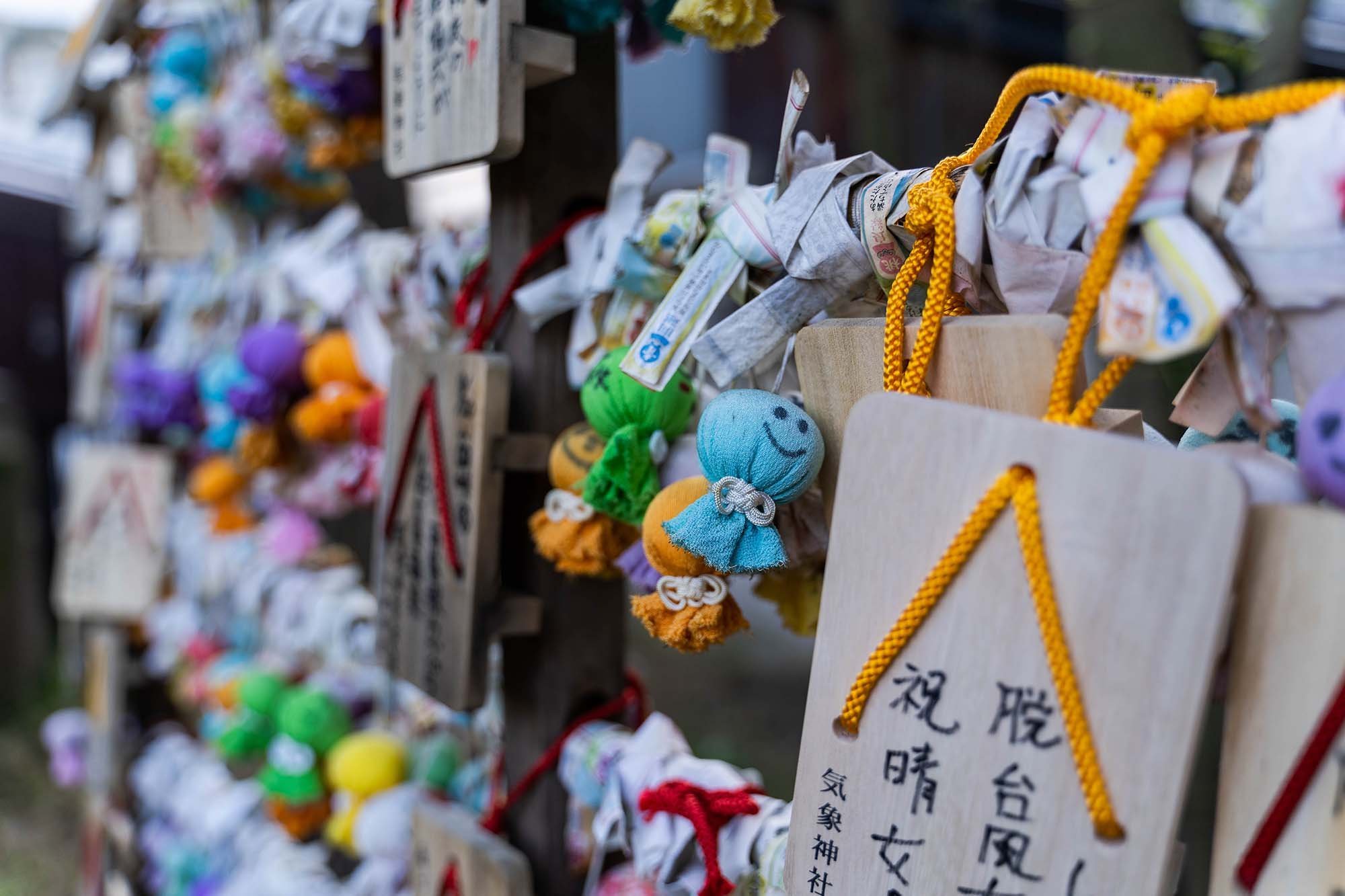
A shrine dedicated to weather. It’s located just to the southeast side of JR Koenji Station, sitting on a hill.
Here, you can buy a wooden plaque that resembles a traditional Japanese slipper or a “teru teru bōzu”, a small cloth doll that resembles a ghost. These are to wish for good weather.
Just before visiting Kanazawa, we decided to hang a slipper up as weather in that city can be quite gloomy.
Awa Odori Festival
The annual Kōenji Awa Odori Festival has been happening in the area since 1957. It's one of the biggest festivals in Tokyo with about 1.3 million spectators going to watch 12,000 Awa Odori dancers go through the streets and alleys over a weekend.
Awa Odori is a Japanese dance from Tokushima Prefecture, on the island of Shikoku. Numerous festivals for this dance are held, but this one is one of the biggest. Spectators line the streets and the dance teams stream through one after another.
It’s quite an energetic and entertaining festival to see. Here’s a glimpse:
Shopping Streets
Kōenji has several shopping streets spreading to the north and south of JR Kōenji Station.
To be honest, even if you’re not into photography, wandering these streets and popping into random shops and cafes may be the best thing you can do here. It’s here that you’ll find used clothing shops for those good vintage finds, record stores, and businesses that you may have never thought existed.
Mai Hien
Authentic pho in a basement restaurant made by Vietnamese.
Mai Hien is quite highly rated and one of the best Vietnamese pho places that I’ve been to in Tokyo. It’s only a couple of minutes from JR Koenji Station and at less than USD $10 for a set that includes bahn mi, it’s a pretty good deal.
Keep in touch:
More travels:
Yanaka Ginza, Tokyo
One of Tokyo’s popular “shitamachi”, or retro downtown areas, Yanaka Ginza’s vibe is mid-1900s and a good place to take an afternoon to explore.
Yanaka Ginza is a retro neighborhood in Tokyo, with a “shitamachi” old downtown vibe
It’s known for its shopping streets lined with Japanese foods and snacks
The area is easily accessible from both the main Yamanote Line and the Tokyo Metro subway
There’s the modern side of Tokyo with the crowds, tall buildings and vibrant lights, and then there’s the retro sides of Tokyo. Wooden houses, small cafes, street vendors - Yanaka Ginza is the latter.
HOW TO GET THERE
Tokyo’s main loop line, the Yamanote Line, stops at two stations where it’s just a short walk to Yanaka Ginza: Nippori and Nishi-Nippori. Another option is the Chiyoda Line on the Tokyo Metro, which stops nearby at Sendagi Station.
About Yanaka Ginza
The main street and general area has a retro vibe to it, mainly a feeling that brings you back to Japan’s Showa Era. Eras are related to the reigning Emperor at the time, and Showa generally references the mid-1900s.
Yanaka Ginza is said to have taken its current shape after World Ward II, and while it’s become popular with tourists, it’s still an area that locals will go to do their shopping.
The “Ginza” in its name comes from the actual Ginza in Tokyo as some shopping streets would adopt the name in an attempt to increase its perceived image.
The streets are lined with markets, shops and food - many of which you can grab and go such as croquets. Despite receiving more foreign tourists, there isn’t a lot of foreign language support here - even the area’s website [J] is Japanese-only - because after all, it’s an area for locals to do their shopping.
I’ve been to the Yanaka Ginza area twice, and I find the best part about it to be just to stroll around.
You’ll come across tiny alleys, buildings with architecture that spans decades if not centuries, small temples, and locals going about their daily business they have been since long ago.
There are even places that have taken over some of these old buildings and made them into something completely new.
Yanaka Beer Hall
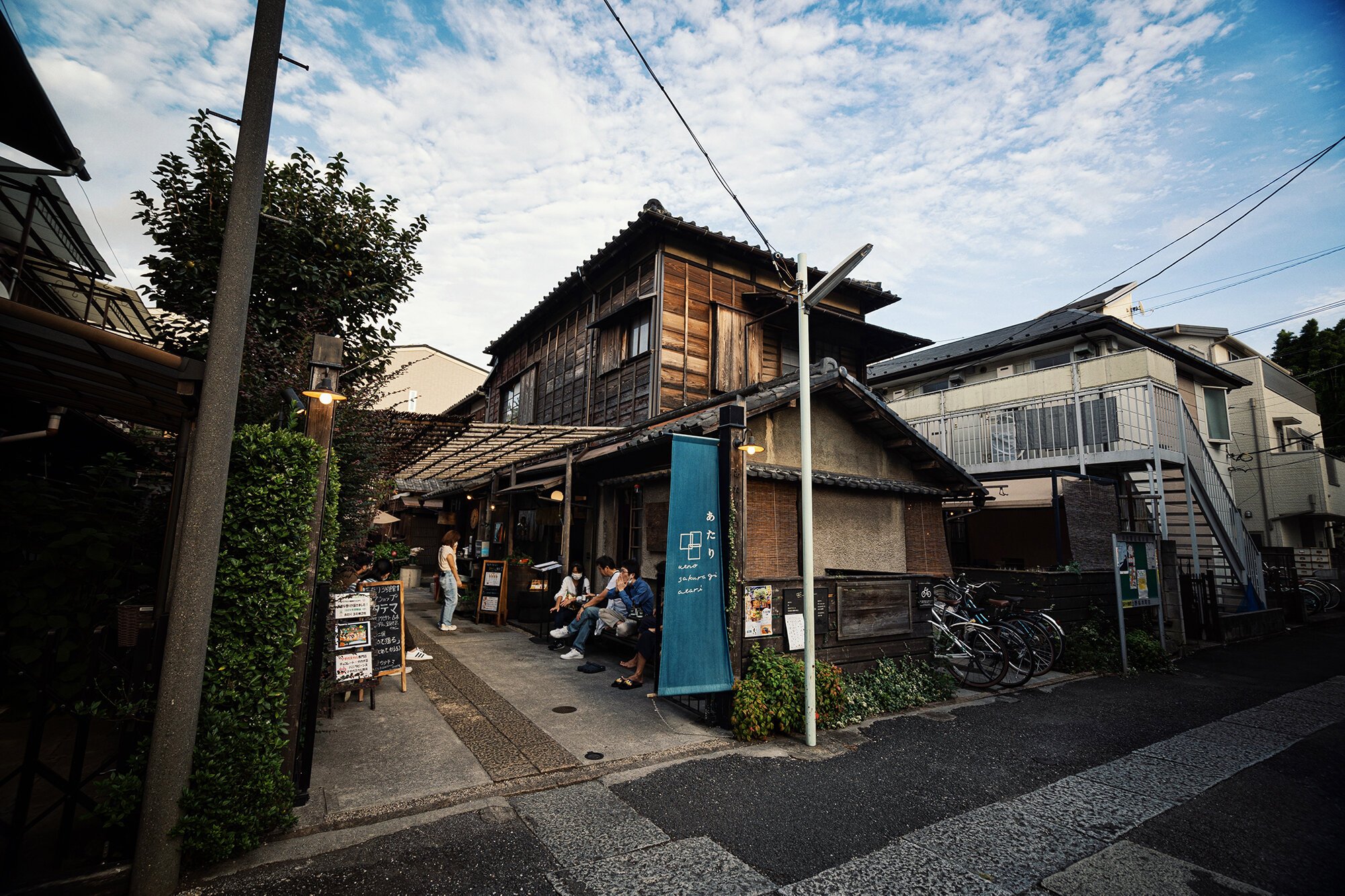
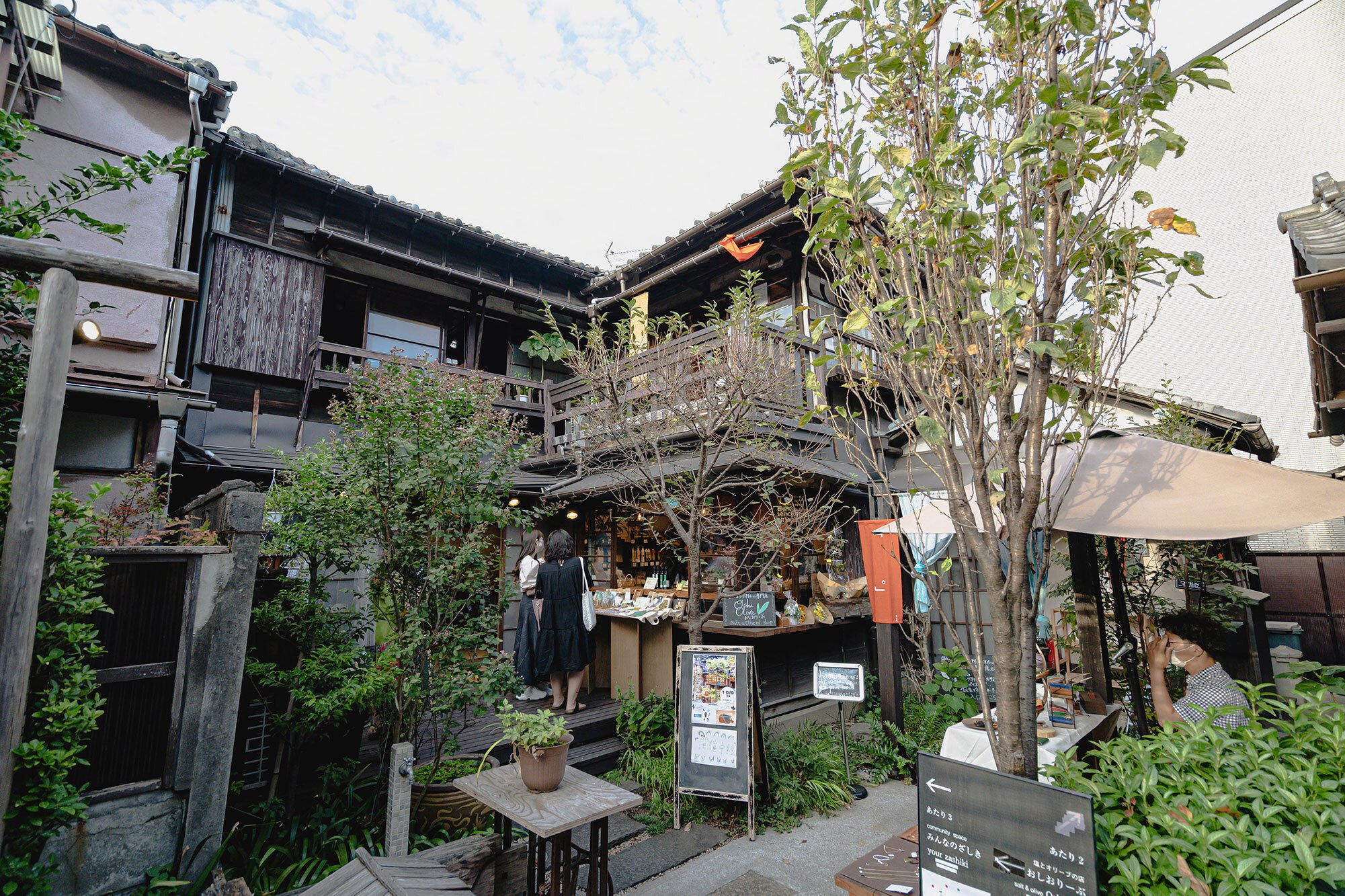

Yanaka Beer Hall is a Japanese craft brewery that occupies a space in Ueno Sakuragi Atari. This multi-purpose space uses a wooden Japanese home that was built in 1938 and maintains a Showa Era feel.
A few different original craft beers are served here, and there’s also a window where you can take out a bottle, sit down and hang out.
I went to this area with a friend who just moved to Japan and made a YouTube video about it. Check it out if you’d like to see more of Yanaka Ginza.
Otherwise, here are some good food options that I’ve been to.
Himitsudo
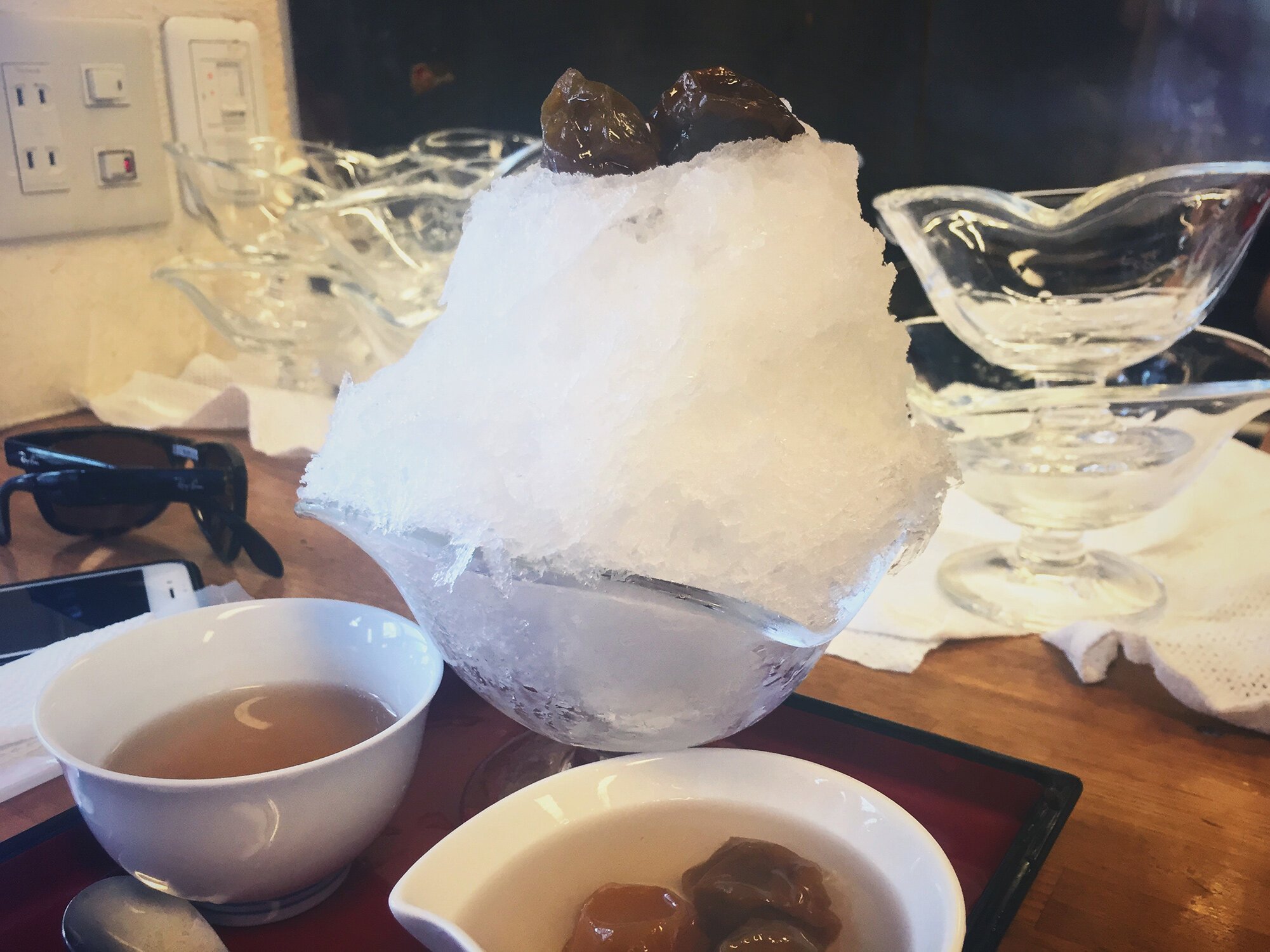

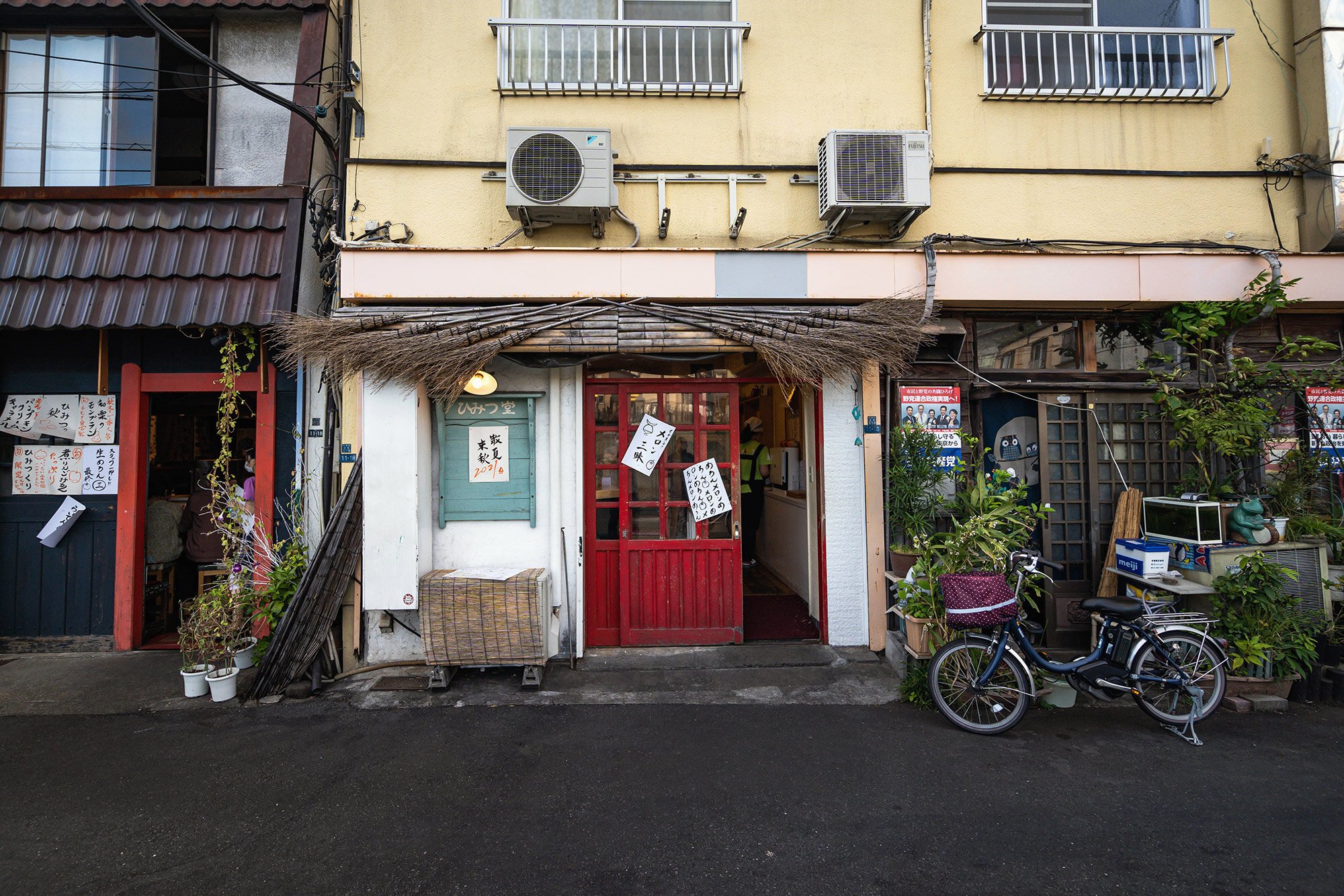
Probably the most popular eatery in the Yanaka Ginza area, Himitsudo specializes in Japanese shaved ice.
Each bowl of shaved ice is handmade using hand-cranked machines that produce some really fluffy ice. The flavors are made of real fruit and natural ingredients, so a lot of the syrups are more like a puree.
Because it’s an incredibly popular spot, you will almost certainly have to wait in line outside, usually at least 30 minutes. In the summer months, the wait can be very long but that’s when a cool treat like this tastes best.
Nito
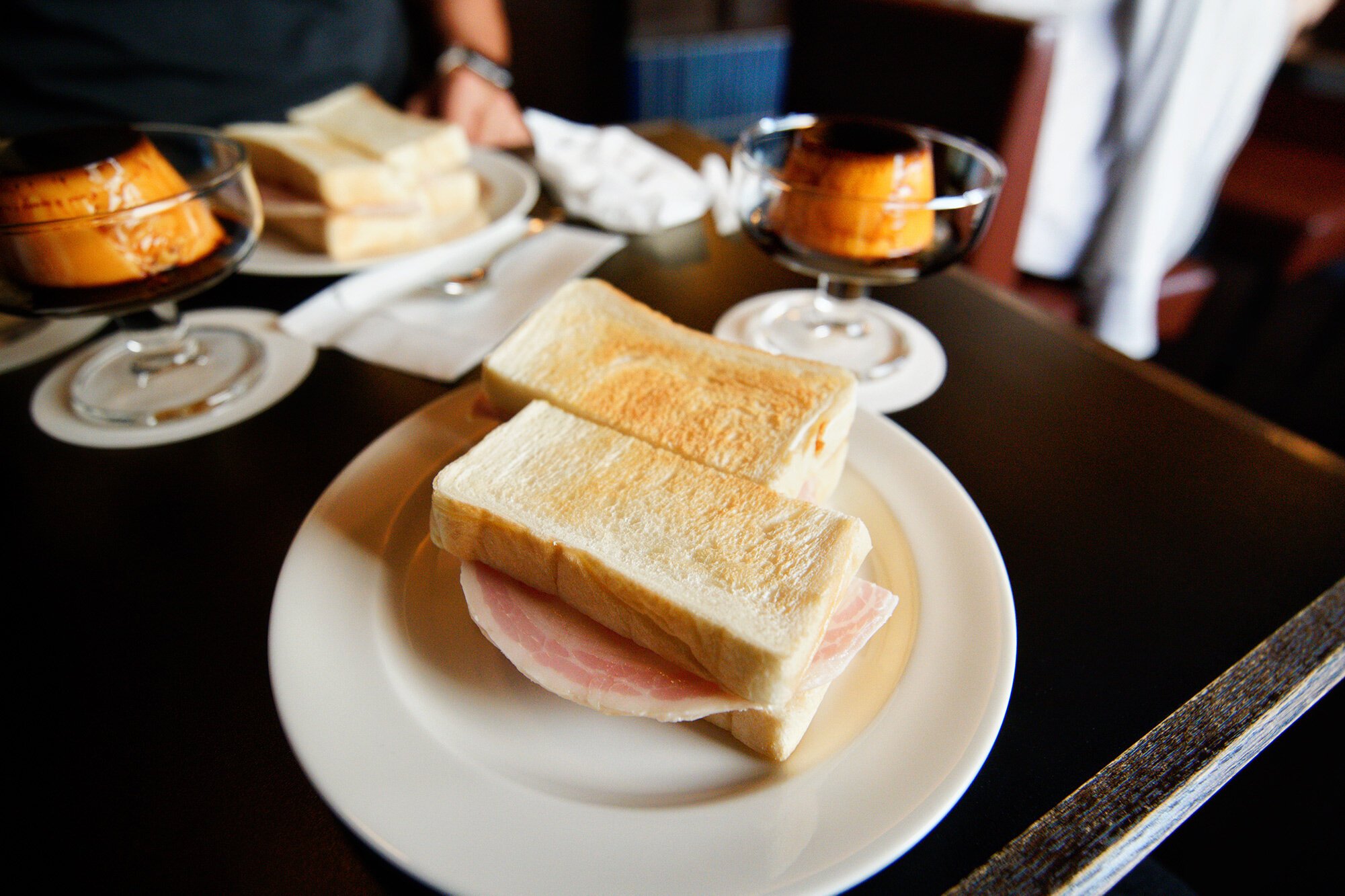

Kissaten, or traditional Japanese coffee shops, are places for people to dive into a book and kick back over some good coffee and simple homemade foods.
Nito is a small kissaten run by a couple with about 6 tables that serves coffee, sandwiches and baked dessert items. The atmosphere is quiet, offering a nice getaway from the crowds of Yanaka Ginza right outside.
Their “pudding”, or flan, is a popular item that many will get, and it’ll compliment your coffee nicely.
Shioman
Some great curry udon at a small, bar-counter style eatery.
Shioman is located right above Sendagi Station, the closest Tokyo Metro subway station to Yanaka Ginza, and they’re most known for their curry udon and tempura.
A nice option if you’re in the area and looking for something tasty to eat.
KEEP IN TOUCH
SHARE:
Shin-Okubo, Tokyo
Considered Tokyo’s Koreatown, Shin-Okubo is the go-to spot for Korean food, pop culture and cosmetics, and is an area that is increasingly challenging Harajuku as a hangout spot for young locals.
Shin-Okubo is one train stop from Shinjuku, and is known as Tokyo’s Koreatown
In recent years, it has become an alternative to and sometimes preferred play spot to Harajuku
Many other Asian restaurants and markets can be found in this area
It’s one of those pockets of Tokyo that feels, well, slightly different from typical Japan. Only one stop from Shinjuku, Shin-Okubo is a neighborhood with a South Korean vibe mixed with a little bit of Southeast Asia.
How to get there
Tokyo’s main loop line, the Yamanote Line, stops right at Shin-Okubo Station. It’s also a 15-minute walk from Shinjuku, making it a very easily accessible destination.
About Shin-Okubo
As Japan opened up to foreign exchange students in the early 1980s, immigrants from South Korea settled in Shin-Okubo. Many of those who immigrated in later years did the same, and the community continued to flourish.
More recently as the influence of J-pop declined and Korean pop culture grew, so did the crowds going to the area. Most of them are going to get merchandise from their favorite Korean stars, Korean cosmetics, or are going to try some of the latest trendy foods.
Other Asian immigrants began to set up shop there as well, and it’s become a bit of a Little Myeongdong, Seoul meets Southeast Asia, if you will.
Shin-Okubo is a relatively affordable place to live, especially considering that it’s on Tokyo’s main train line and is right next to Shinjuku, one of Tokyo’s downtowns.
The average rent in Shin-Okubo is a little lower than Tokyo’s average. For a 1K studio as of October 2021, it is 90,500 JPY (USD $797 - The average for Tokyo in 2019 was USD $870). [J]
Street Food
It’s not just the entertainment, street foods and snacks from South Korea have become trendy in Japan as well.
Small shops and stalls line the streets here, selling items like cheese-filled Korean corn dogs, character macarons, colorful drinks and more.
Korean Shops
While a lot of young people flock to Harajuku’s Takeshita Street area for Japanese celebrity memorabilia, cosmetics and accessories, Shin-Okubo’s main Okubo-dori Street has increasingly been able to compete as a go-to destination for them as well.
I personally didn’t explore them one by one, but there are both small boutique shops and bigger multi-story mini malls that are full of Korean products.
Korean Markets
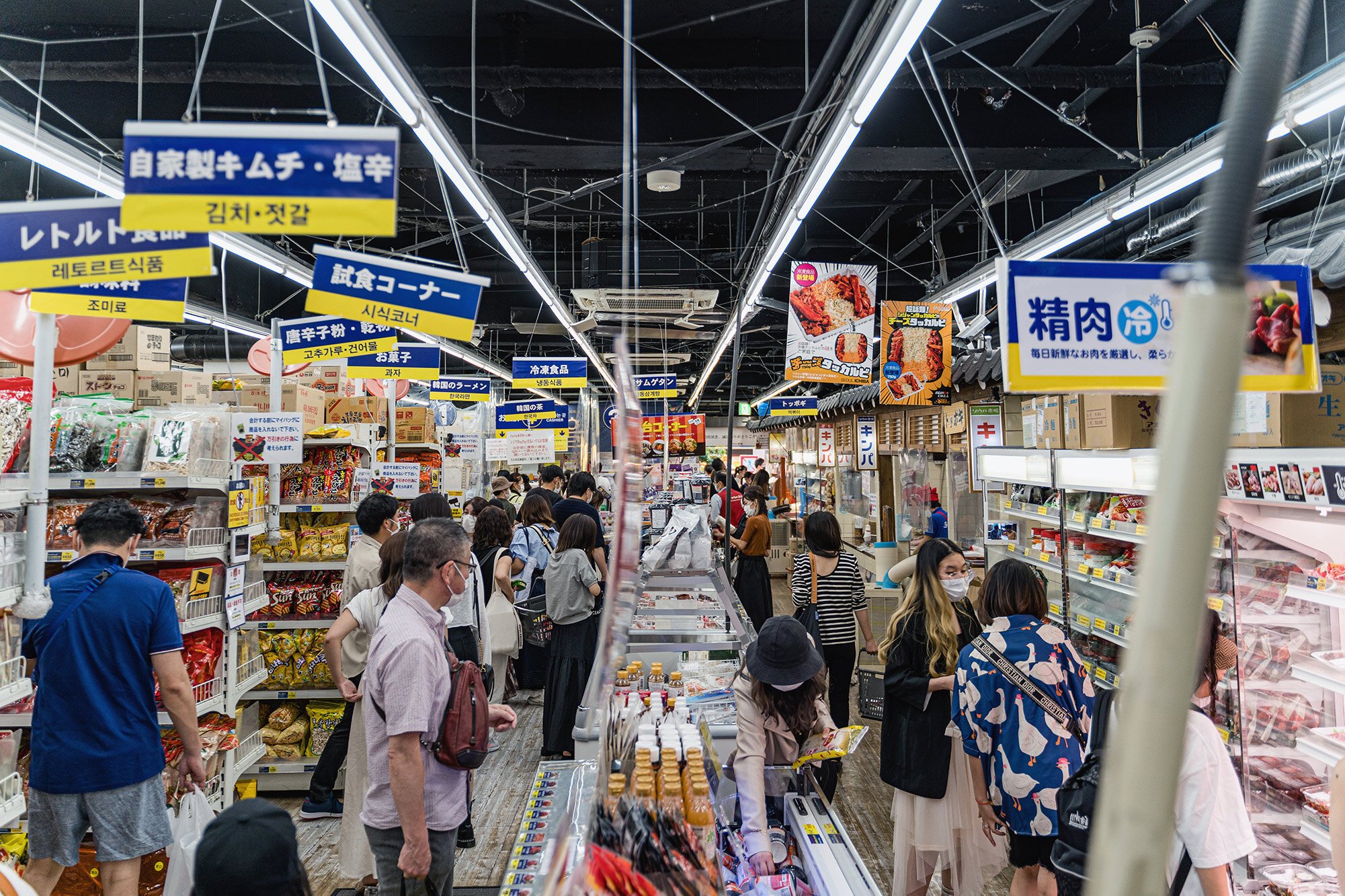
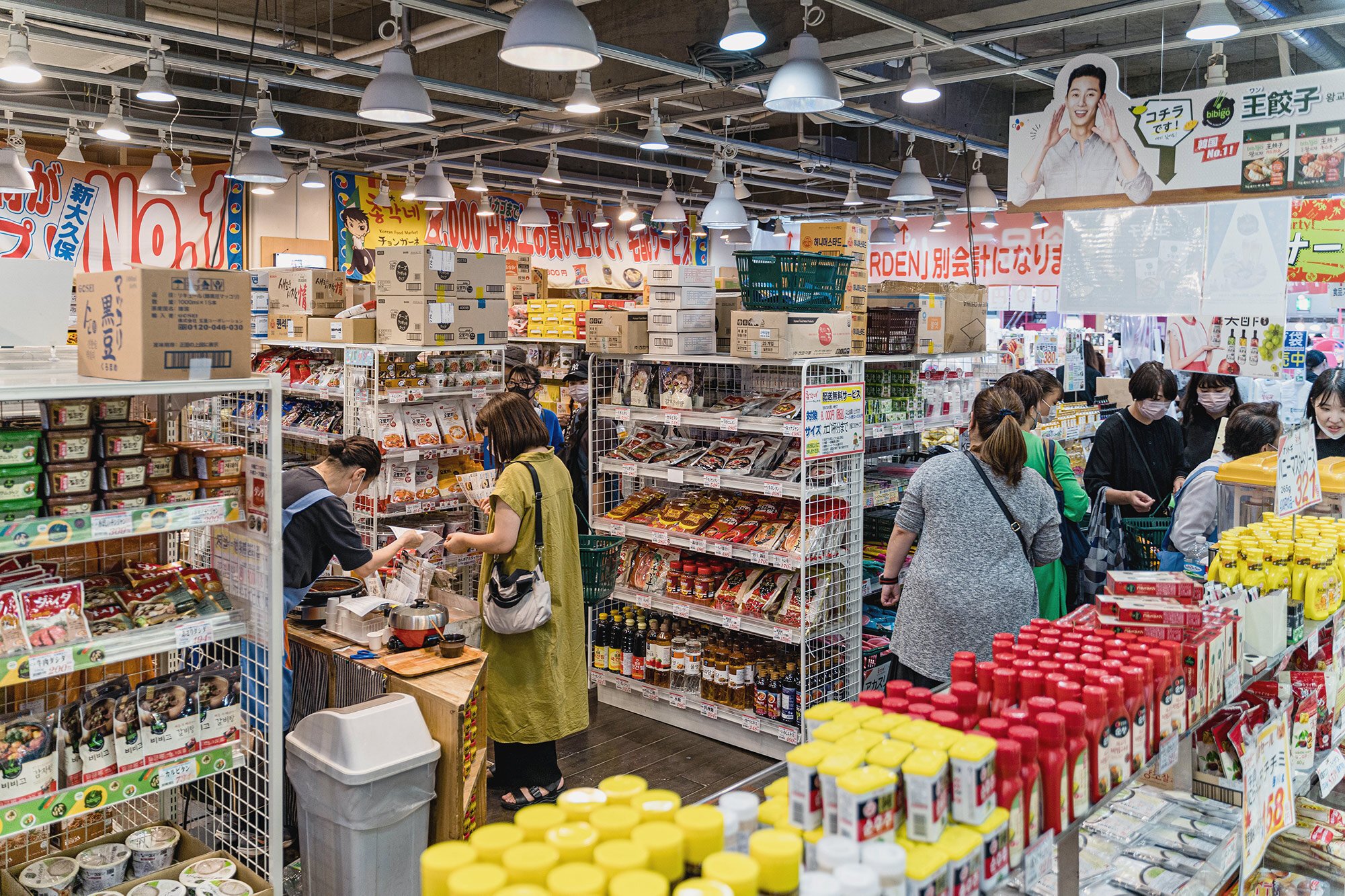
Korean food is already extremely popular in Japan, and Shin-Okubo is flooded with Korean restaurants. However, sometimes you want to make Korean dishes at home and certain items may be hard to come by.
Bone-in kalbi, for example, isn’t sold at most Japanese markets and unless you go shopping at Costco Japan, markets in Shin-Okubo may be your best bet. This is what we came for, and we were able to find some at Seoul Market.
KangHoDong Chicken 678
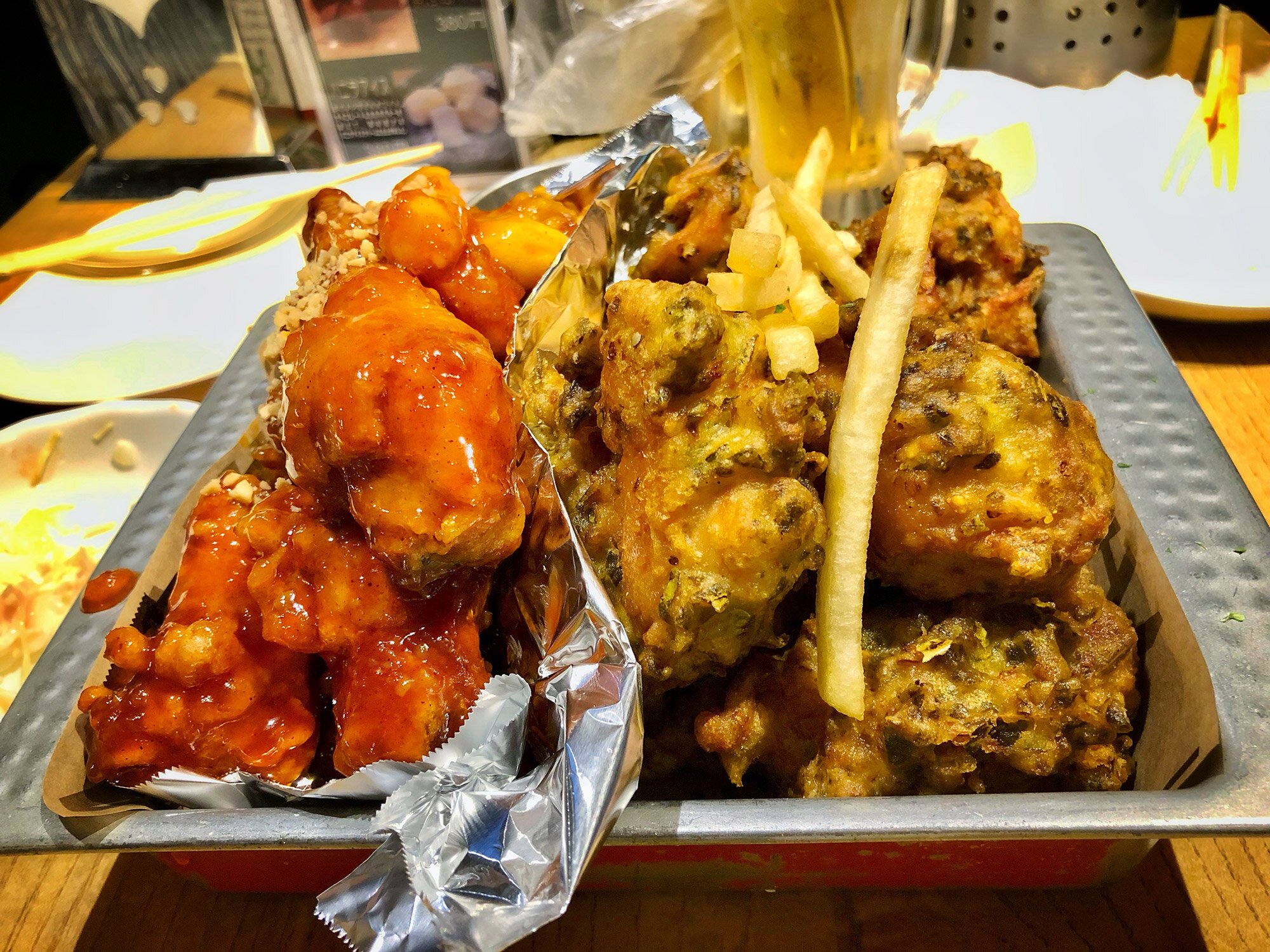
Authentic Korean fried chicken at a bustling eatery. We decided to come here after missing the delicious food we had in Seoul.
KangHoDong Chicken 678 is very popular so there may be a wait, but Korean fried chicken is some of the best chicken around so it’s very worth it.
We got a combo of their regular sauce (left) and chili (right) fried chicken, and washed it down with some beers. Great choice to top off a day in Shin-Okubo.
Khunmae
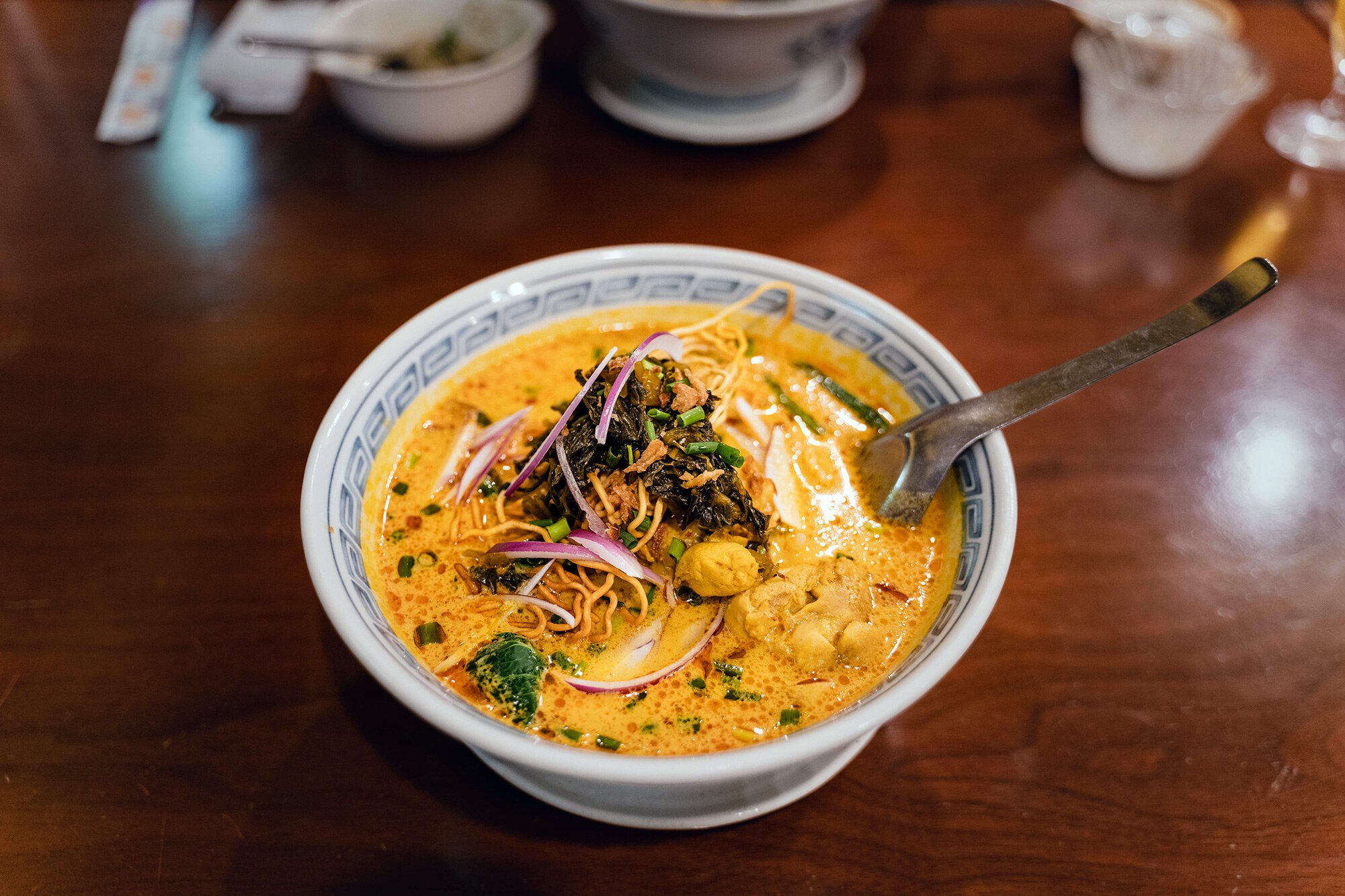
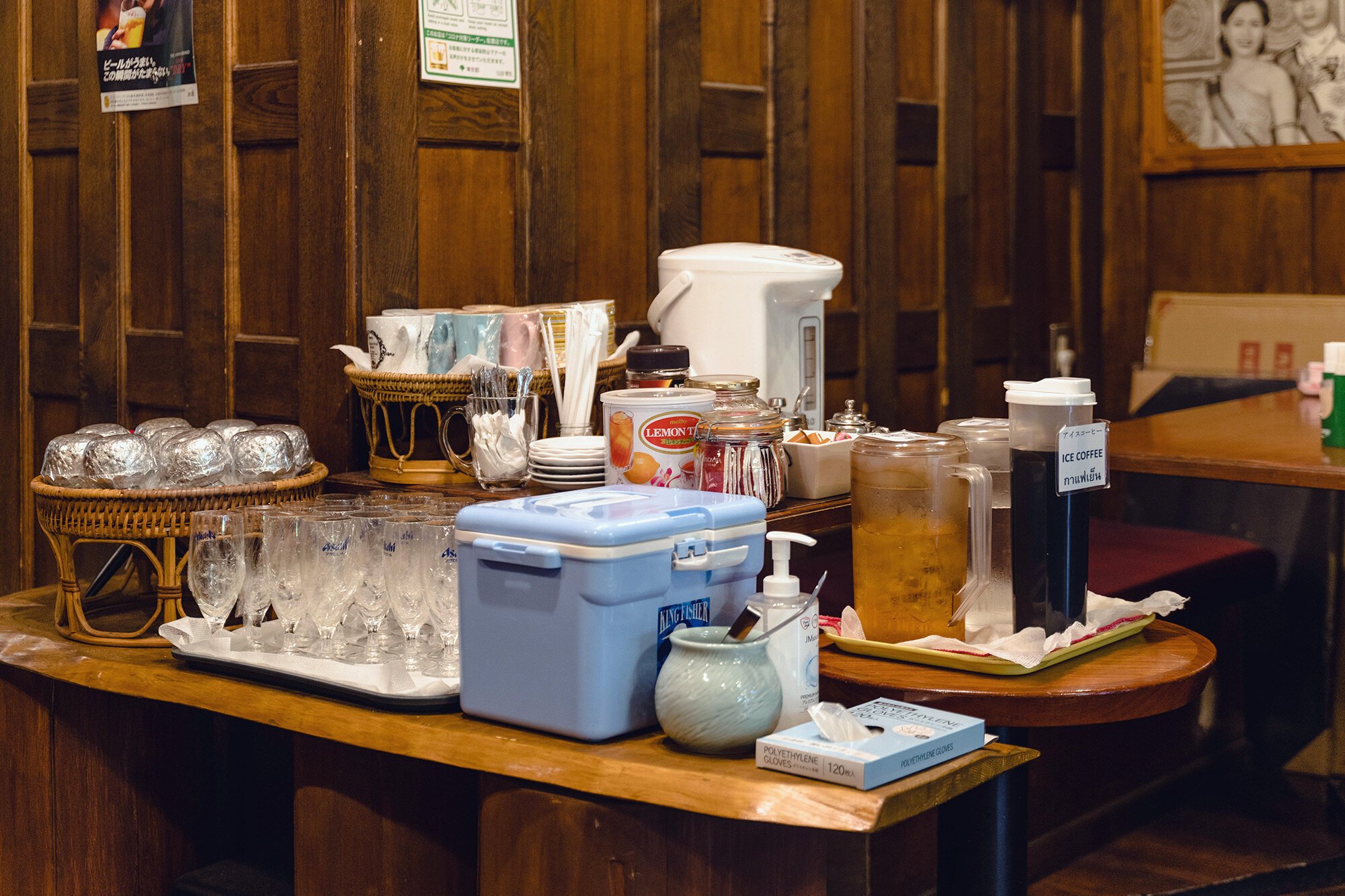

Khunmae is a Thai restaurant that is both delicious and of amazing value. Highly rated, we stopped by for lunch and a Japan food reviewer specializing in the best Thai food in the country just happened to be hosting a livestream there. Good sign.
We got a bowl of khao soi, a noodle soup from northern Thailand. A flavorful broth of slightly spicy Thai curry and a hint of coconut, it featured pho-like noodles along with dried noodles, chicken and a range of fresh vegetables which added great texture.
There’s a self-serve table of tea and coffee, and all for 950 JPY. A very good lunch option in Shin-Okubo.
Vietnam Chan
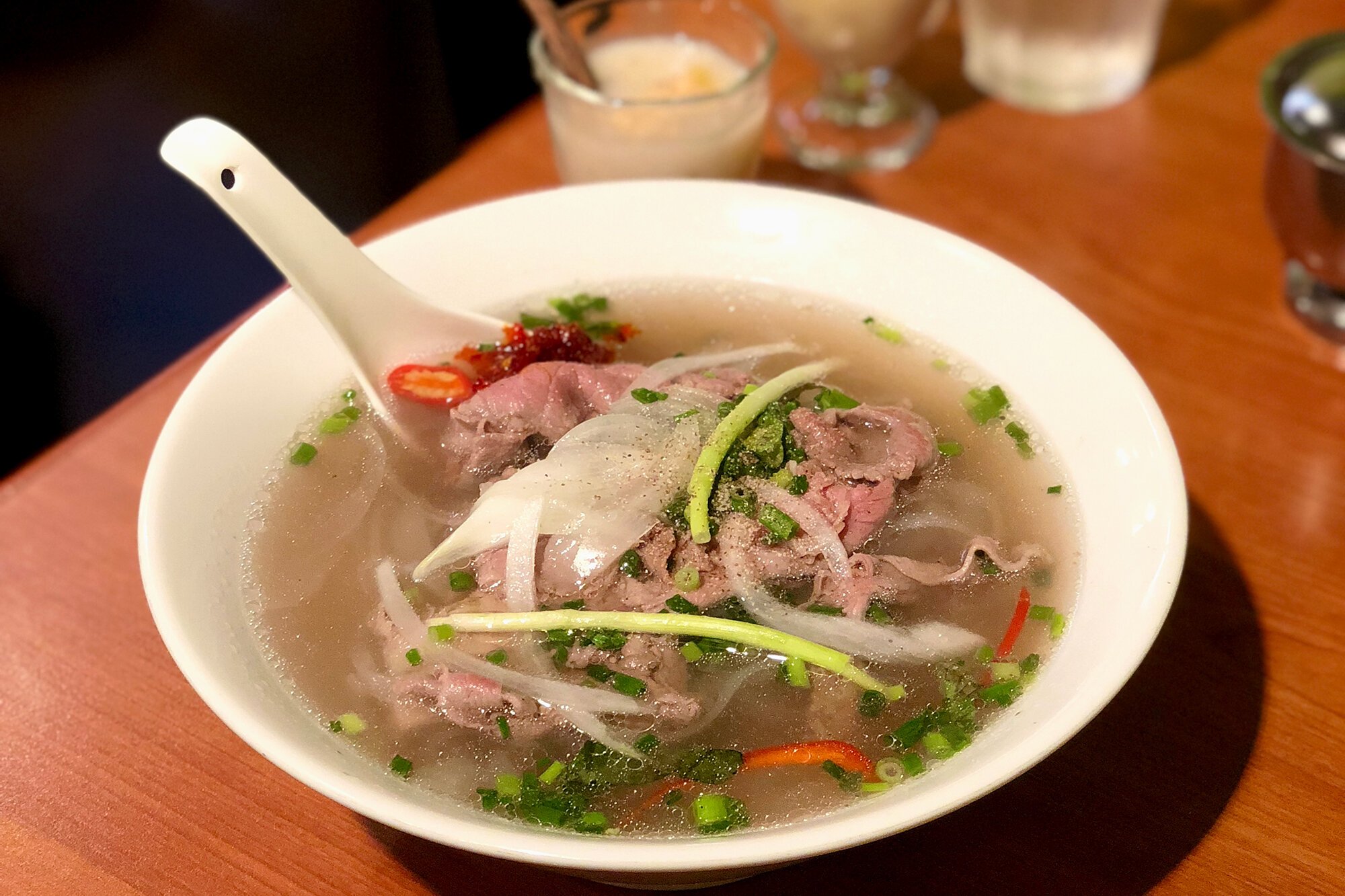
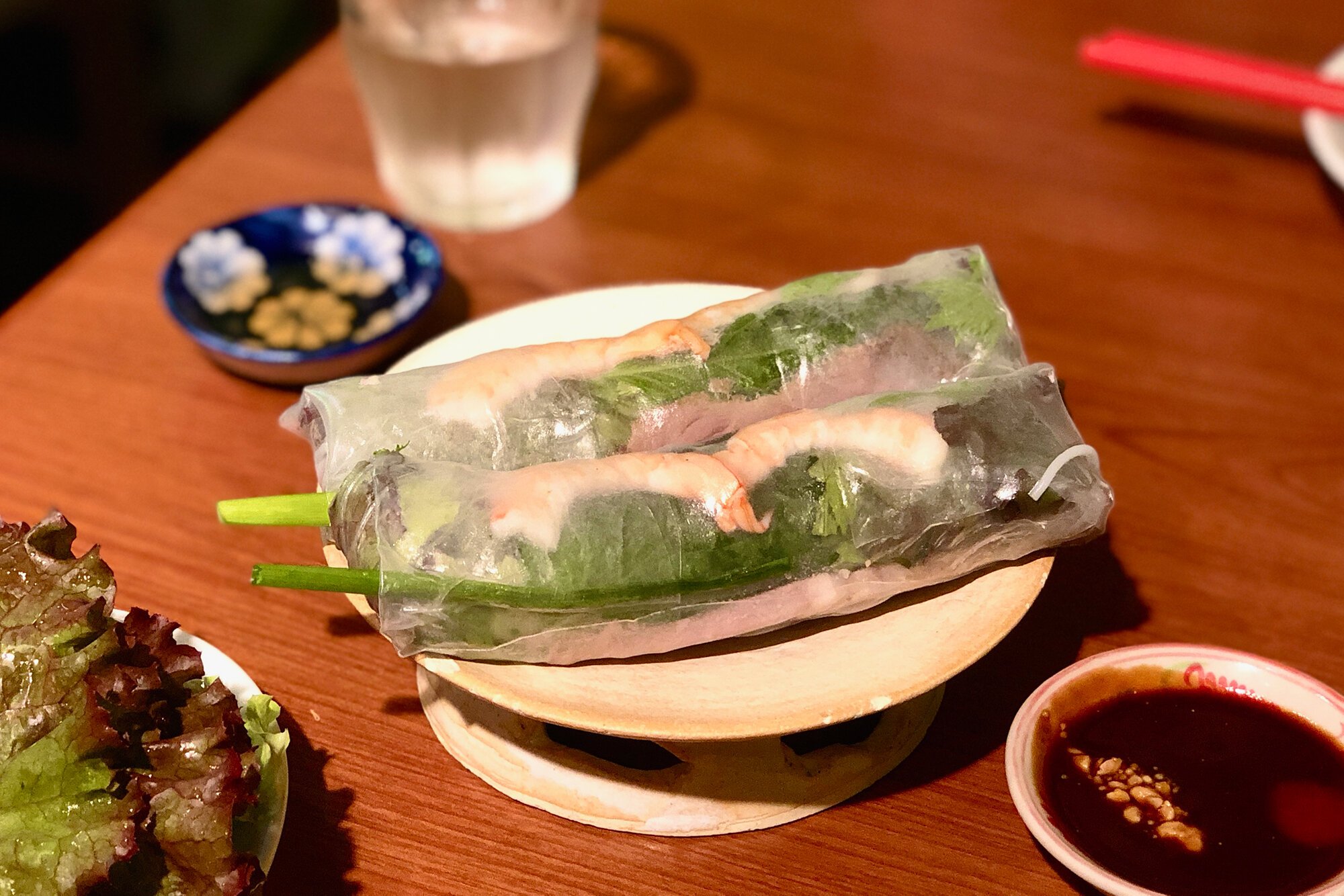
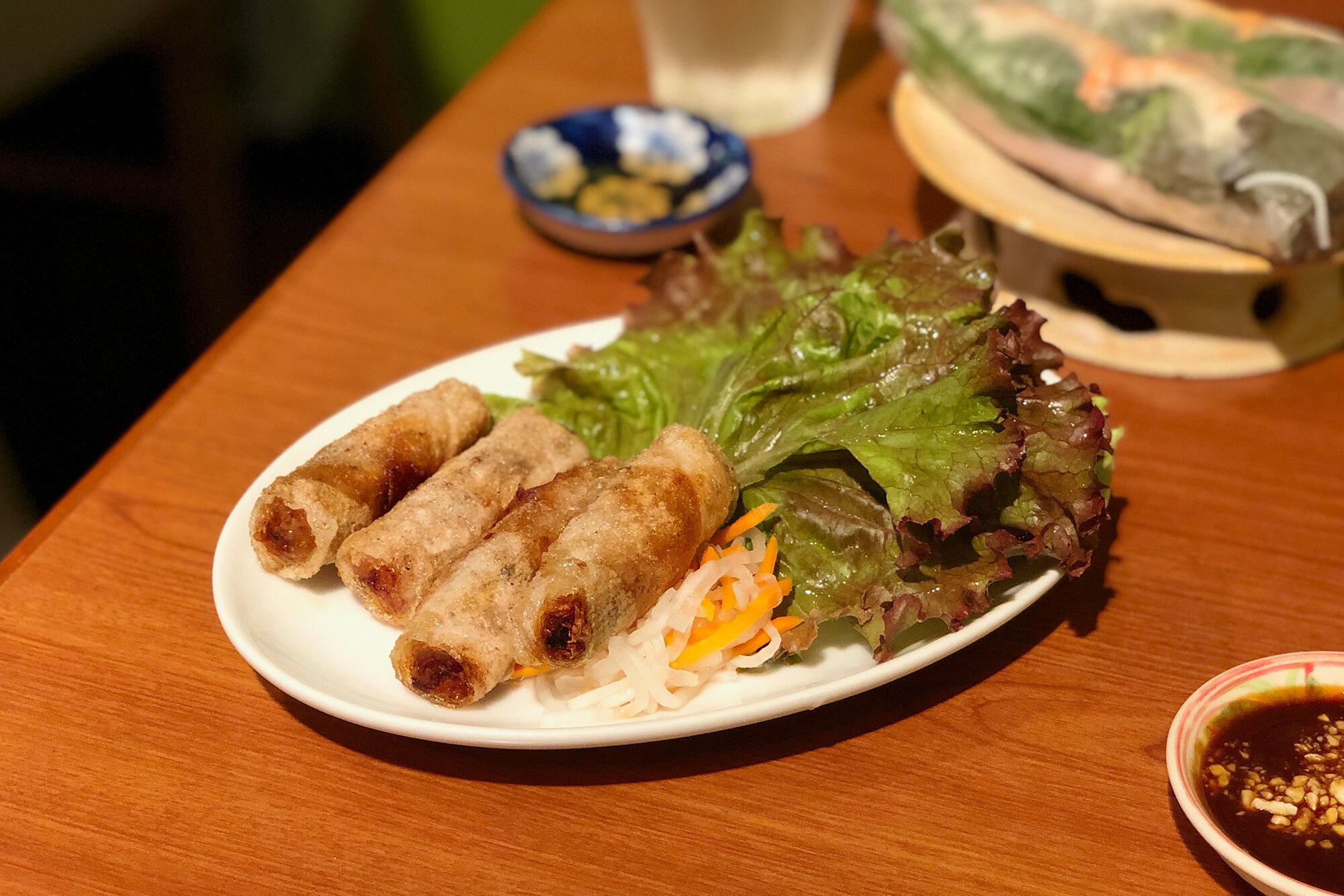
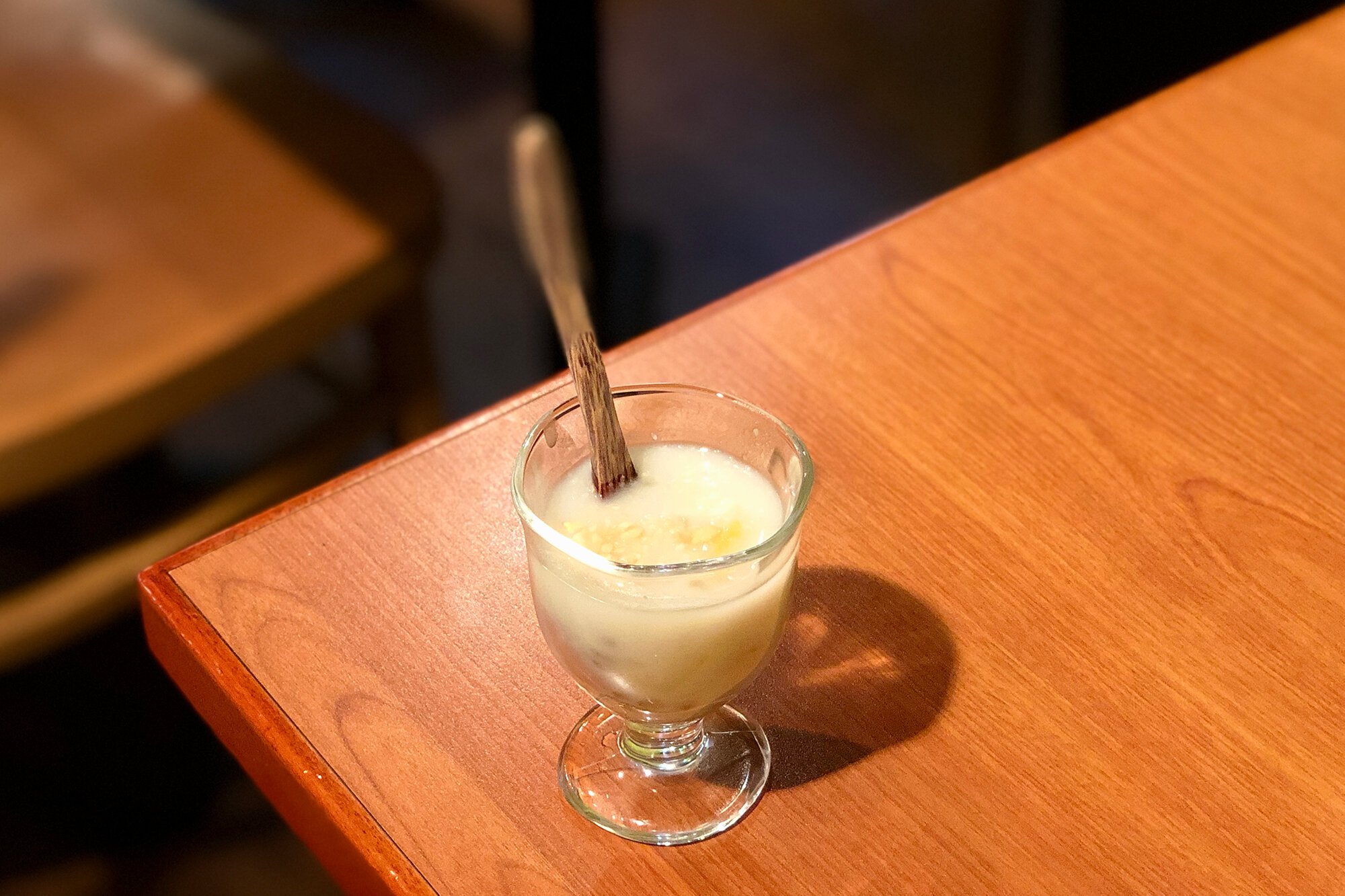
A good choice for some authentic Vietnamese food. We came here for lunch and it was packed with both Japanese and Vietnamese alike, so we knew as soon as we entered that this would be legit.
It’s not a fancy place, just straight forward and to the point. We got beef pho (which is less common in Japan versus chicken) and had orders of rolls and che, the Vietnamese dessert pudding.
A good option to get your Vietnamese fix if you’re nearby.
Keep in touch:
More travels:
Japan: Conveyor Belt Sushi Restaurants
About the popular kaitenzushi, or conveyor belt sushi restaurants, that’s all over Japan.
Conveyor belt sushi, or sushi-go-round restaurants, are all over the world now but they remains popular destinations for people to visit when they’re in Japan. It’s from there, after all.
In Japanese, they’re know as “kaitenzushi”, with ‘kaiten’ meaning revolving or rotating.
There are a handful of major chains around Japan that sell a range of different sushi for really cheap like Hamazushi, Kappazushi, Uobei, and Sushiro.
Each is known for something that others done have.
For example, Hamazushi offers a variety of different shoyu (soy sauce) from different regions around Japan to try. And yes, they taste different. Kappazushi has a slot where you dump you plates into in order to play an on-screen game to win potential prizes.
If I could only pick one though, I’d recommend Sushiro.
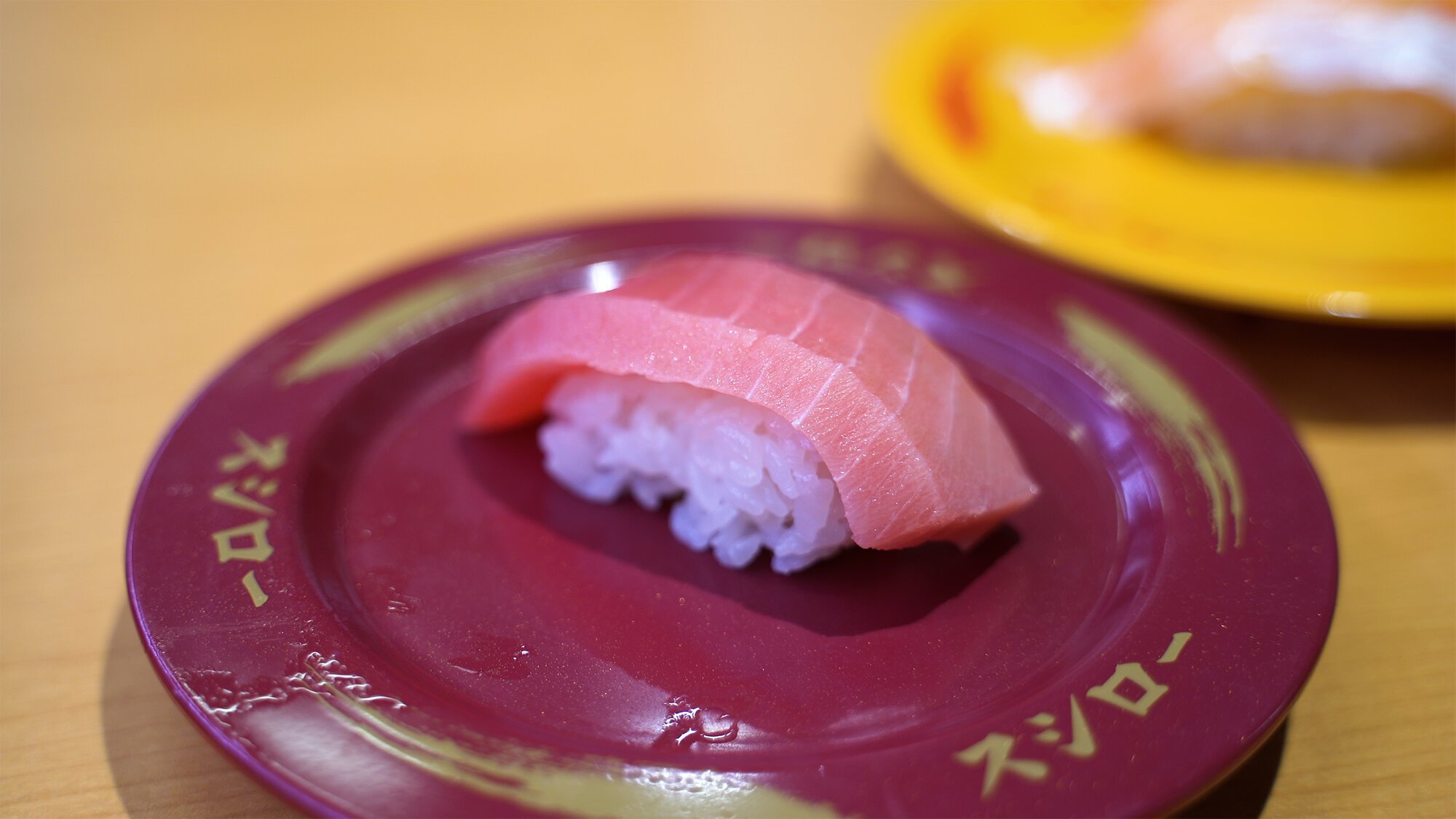
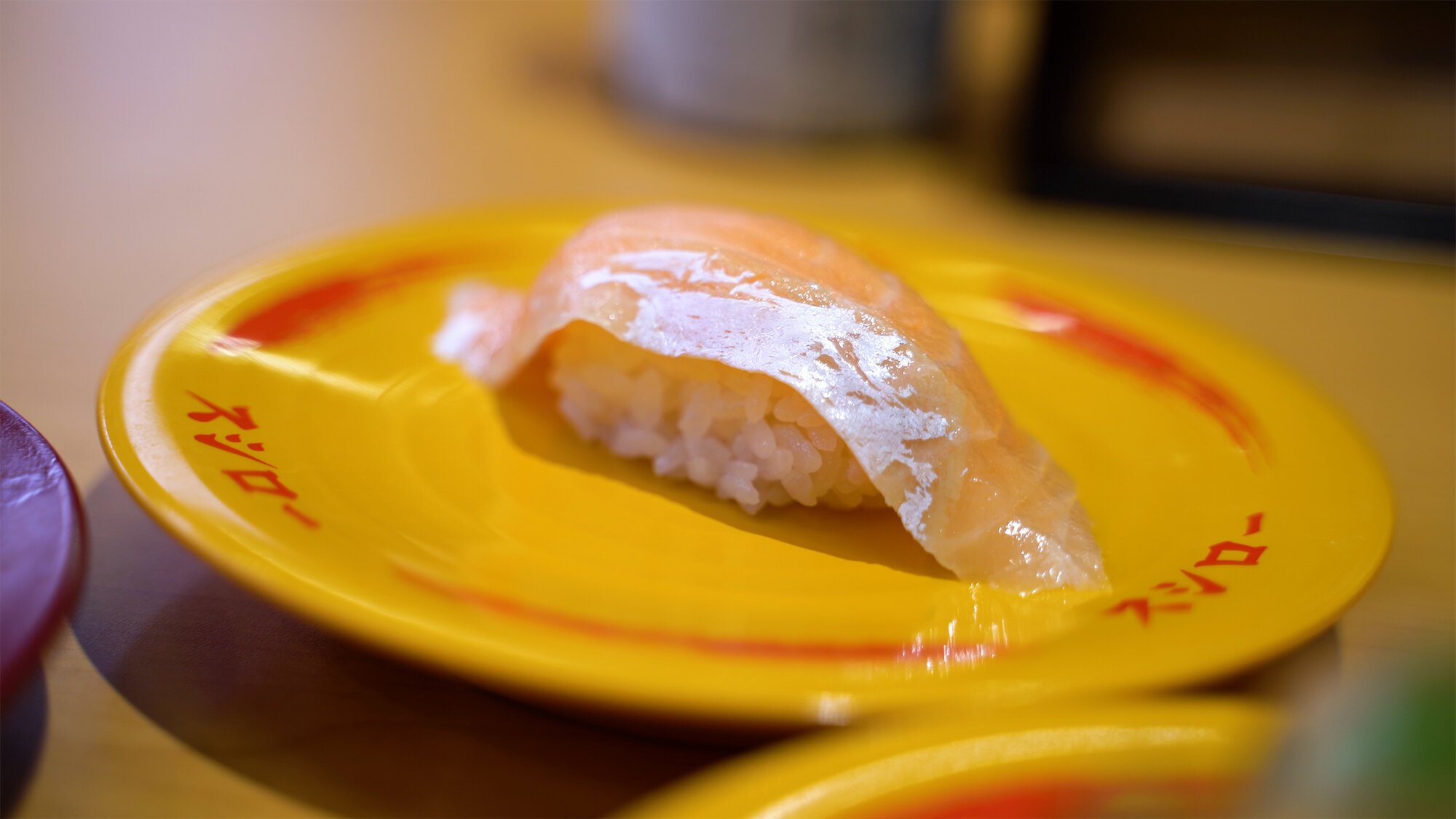
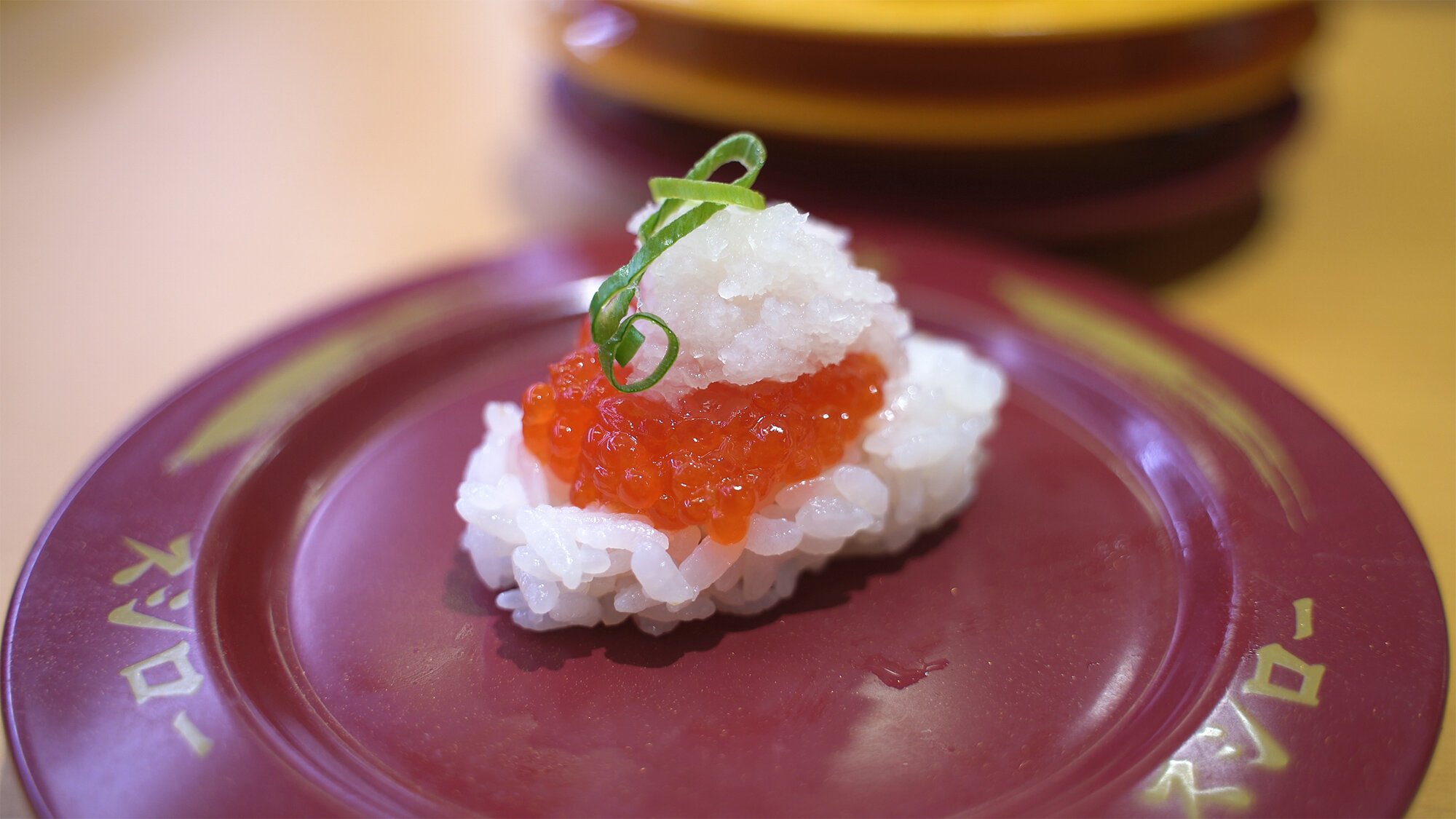
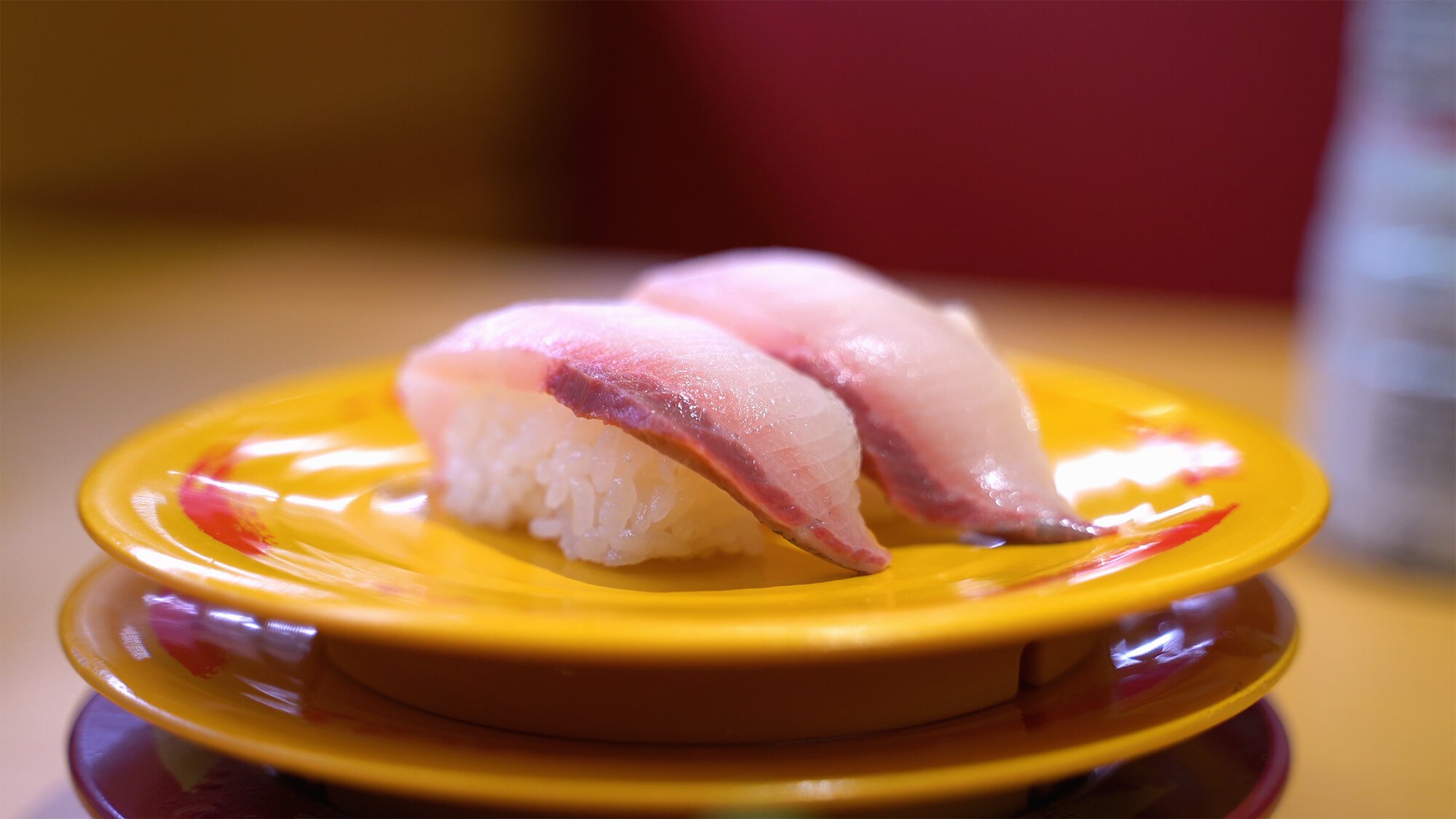
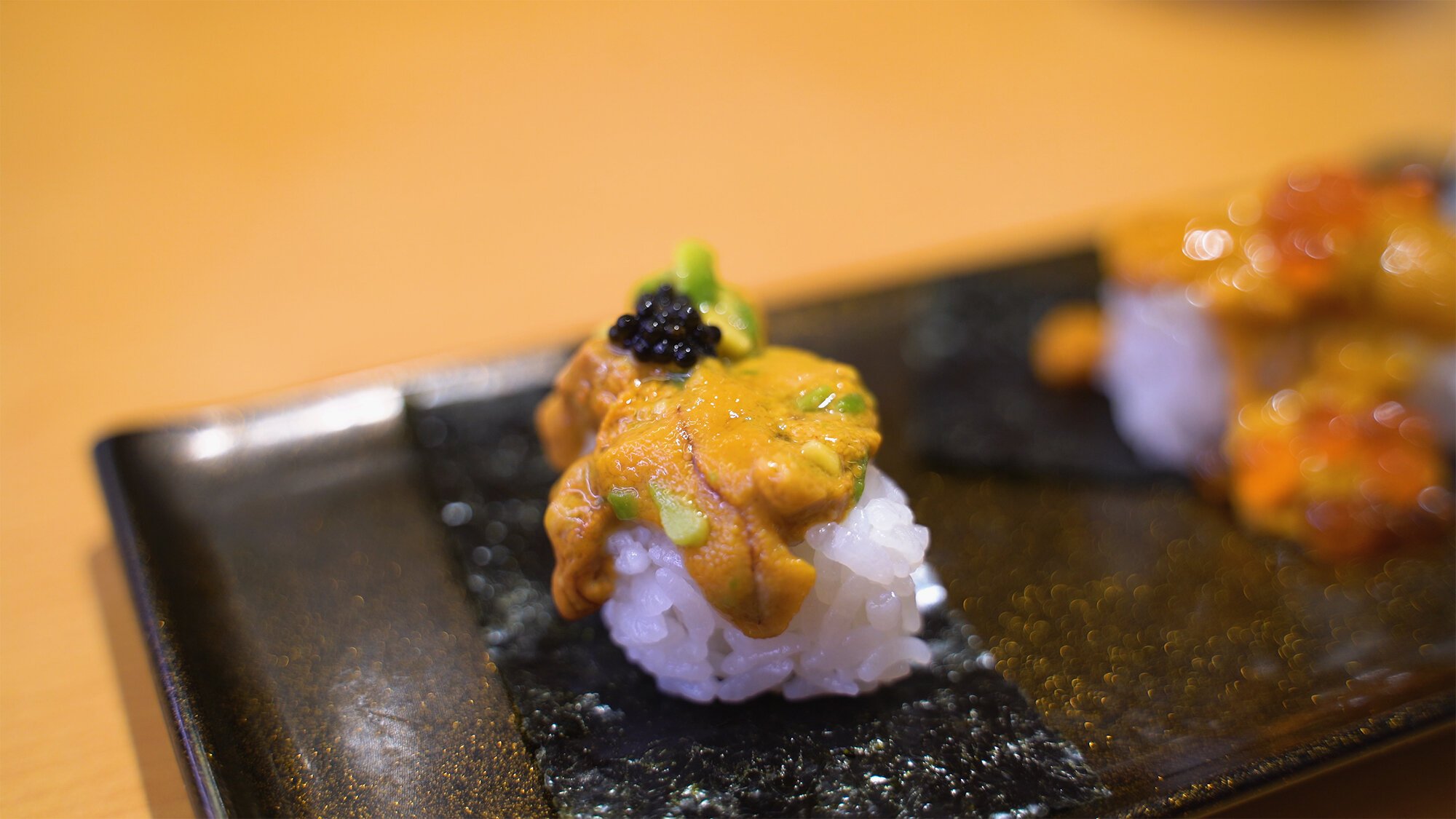
Sushiro was founded some 30 years ago and now has over 500 locations both in Japan and internationally. It’s the number one conveyor belt sushi chain in terms of total domestic sales.
How much does it cost?
Prices start at around 100 JPY before tax, or around USD $1.00.
Unless you’re trying to stuff yourself, an average person’s bill would probably range between 1,500 JPY to 3,000 JPY (USD $15-30).
Sushi doesn’t go on the conveyor belt much anymore
One thing to note is that the newer locations don’t have much sushi actually traveling around the conveyor belt anymore. There are two main reasons for this:
To minimize food waste
People don’t want to take a plate that has been going around for a while. So instead of throwing the old sushi away, they just don’t put them out.Adapting to consumer behavior
Since touchscreen menus where you can order sushi on demand began, people preferred doing that instead.
how does sushi get delivered?
At newer Sushiro locations, sushi comes in on a separate, elevated track and branches off into dedicated landing ways for each table.
Whereas at some locations, sushi is delivered on train-like cars running along a track, this makes sure that deliveries aren’t held up in case someone is slow to take their order.
Conveyor belt sushi is a fun experience and a must-try for anyone visiting Japan for the first time, especially if you’ve never had the experience before.
If you’d like to see what it’s like, check out my video.
KEEP IN TOUCH
SHARE:
Kadokawa Culture Museum
A day trip to Kadokawa Musashino Museum, a modern museum/library designed by Kengo Kuma.
Located in Saitama Prefecture, the Kadokawa Culture Museum is less than an hour from Tokyo
Designed by Kengo Kuma, it’s both a library and museum
Quite an unexpected sight. You walk through a typical residential neighborhood and then boom - a giant space rock castle type of thing appears.
The Kadokawa Culture Museum (also known as Kadokawa Musashino Museum) was designed by Kengo Kuma, the architect who did the Tokyo Olympic Stadium amongst a lot of other notable buildings.
Enter the rock and it’s a fully functional, 5-story museum and library.
HOW TO GET THERE
The Kadokawa Culture Museum is located in Higashi-Tokorozawa, and is about a 10 minute walk from the station. From Ikebukuro Station in Tokyo, it’s about a 40-minute trip with one transfer.
Kadokawa Culture Museum
The Bookshelf Theater is one of the more notable parts of the museum. It’s two-stories high and they put on an impressive projection mapping show that incorporates the books on the shelf.
The library itself is modern with stools and chairs to sit in as you browse, and incorporating video at times in order to tell the story that’s in the books on the shelf.
Personally, I found it to be a good take on what libraries should do in order to modernize and stay relevant.
There are also special exhibitions and art galleries to browse through in the building.
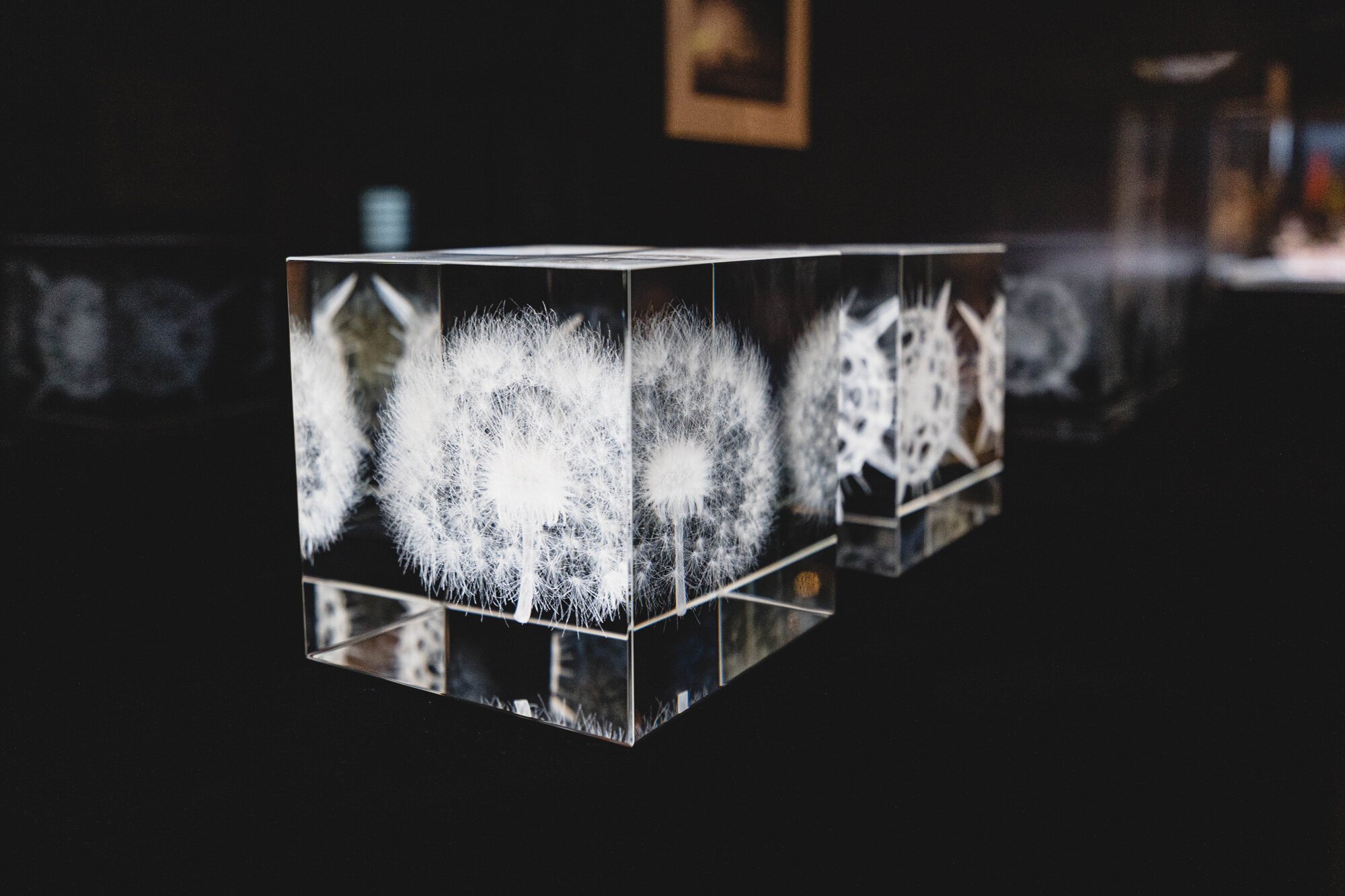
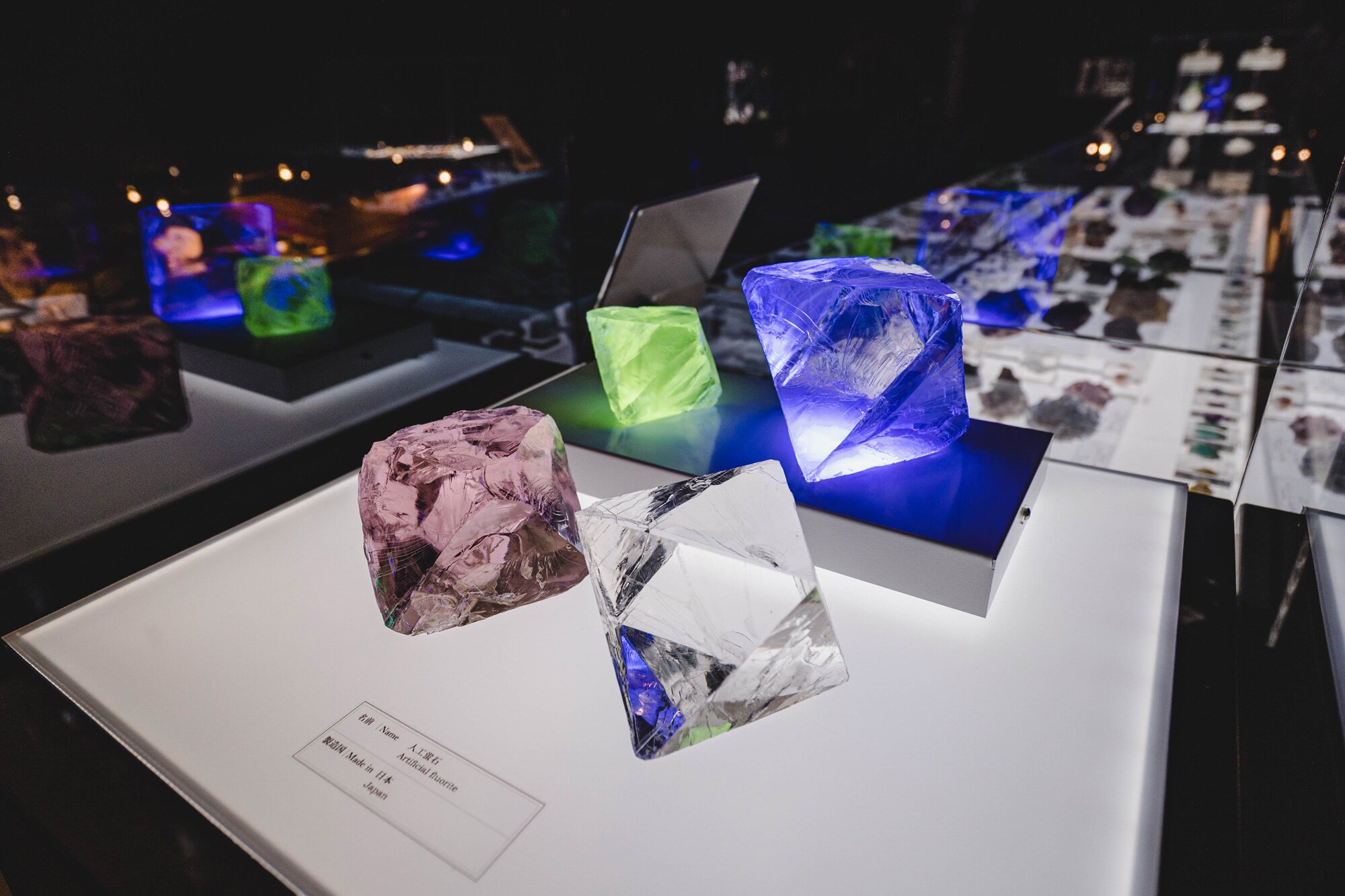
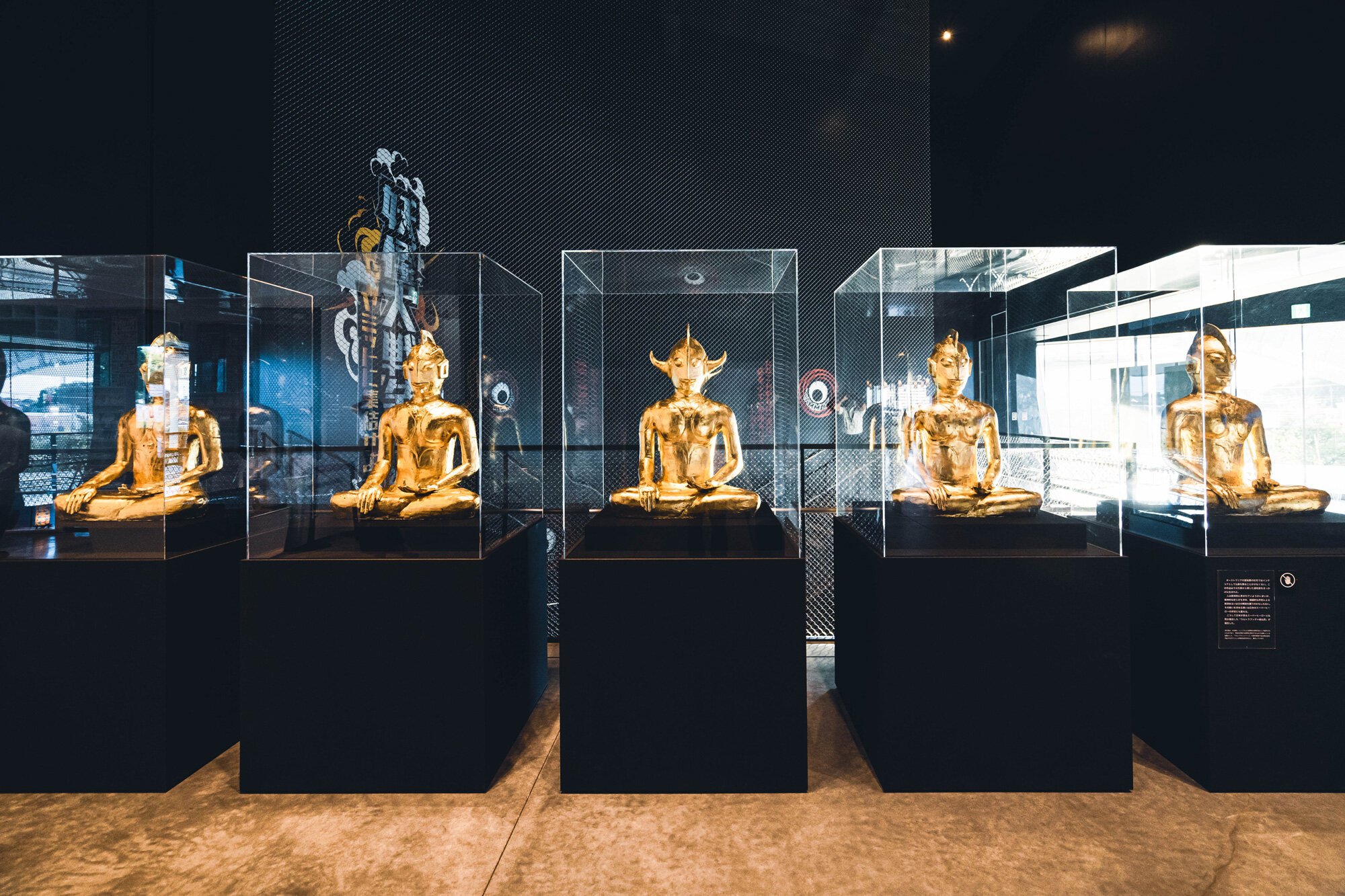
Tickets grant you access to different parts of the museum. You can get them on their website.
Musashino Reiwa Shrine
One of the other notable sights in this this cultural complex is the Musashino Reiwa Shrine.
It represents Reiwa, which is the current period on the Japanese calendar, so everything is done in a very futuristic way. From the minimalistic water fountains, to the sharp-edged torii gate tunnel, to the illuminated main torii gate, it’s interesting to see a modern take on Japanese shrines.
Check out my video of my day trip here and to Kawagoe.
KEEP IN TOUCH:
MORE TRAVELS:
SHARE:
Kawagoe
A day trip to Kawagoe, where its Warehouse District still retains the look of the Edo Period.
Located in Saitama Prefecture, Kawagoe is less than an hour from Tokyo
The Warehouse District has retained the look of the old Edo Period
Local delicacies include unagi (broiled eel) and sweet potato - see bottom
When most think about immersing themselves in “old Japan”, they think about places like Kyoto or Kanazawa, maybe an onsen town. Kawagoe is another area that provides that experience.
We took a day trip here to check out their Warehouse District.
I made a video of the trip in case you’re interested.
How to get there
Kawagoe is located in Saitama Prefecture, which neighbors Tokyo, so it’s quite accessible. An easy way to get there, and the route we took, was catching the Fukutoshin train from Meiji-jingumae Station in Harajuku.
It arrives at Kawagoe Station in about 50 minutes. Some trains on this route require you to transfer at Ikebukuro Station, but some are direct.
Kawagoe is visually stunning. The city was said to be big for trade during the Edo Period, which was between 1603-1867. Many merchants became wealthy and built their warehouses and shops in the Kurazukuri style.
“Edo” was what Tokyo used to be called, and because a lot of these old warehouse buildings in the central area survived and are largely unchanged, the area became known as “Koedo”, or Little Edo.
Where we went
Kurazukuri Street
Kurazukuri Street refers to the style in which the buildings are built in, and is the central part of the city’s Warehouse District.
It’s amazing to see these buildings lined up, spanning the distance, and knowing they’re authentically real.
Many of them are selling Japanese goods, such as knives, or a light grab-and-go type of snack. A lot of those snacks are based around sweet potato, something Kawagoe is known for.
What is unfortunate about this area, though, is that car traffic isn’t blocked off. While the neighborhood and buildings transport you back in time, the constant flow of cars on the road kind of take you out of it.
Taisho-roman Street
Taisho Roman Street is a walking street lined with buildings that reflect the Taisho Period between 1912-1926.
It’s just a short walking distance from both the Warehouse District and Kawagoe Station, and there are a bunch of shops selling snacks and sweets, as well as cafes such as the coffee shop pictured above.
Kashiya Yokocho (Candy Alley)
Kashiya Yokocho is a short, L-shaped walking alley of shops selling candies and snacks. Some are traditional snacks, while others are more modern and reflect those you would find at festivals, such as chocolate-dipped bananas.
Kawagoe Hikawa Shrine
Said to be around 1,500 years old, Kawagoe Hikawa Shrine is a Shinto shrine where five deities are enshrined. It’s known for helping with matchmaking and relationships.
During the summer, a lot of fuurin, or glass wind chimes are set up around the shrine’s grounds, and they provide a relaxing sound whenever the wind blows.
While that was nice to experience, we unfortunately weren’t able to see the cherry blossoms in the Shingashi River behind the shrine, which is really popular in the spring.
We visited in August which I don’t really recommend because it was hot… extremely hot. It does, however, mean that unagi (broiled eel) is in season, a dish that Kawagoe is known for.
Where we ate
Ogatou

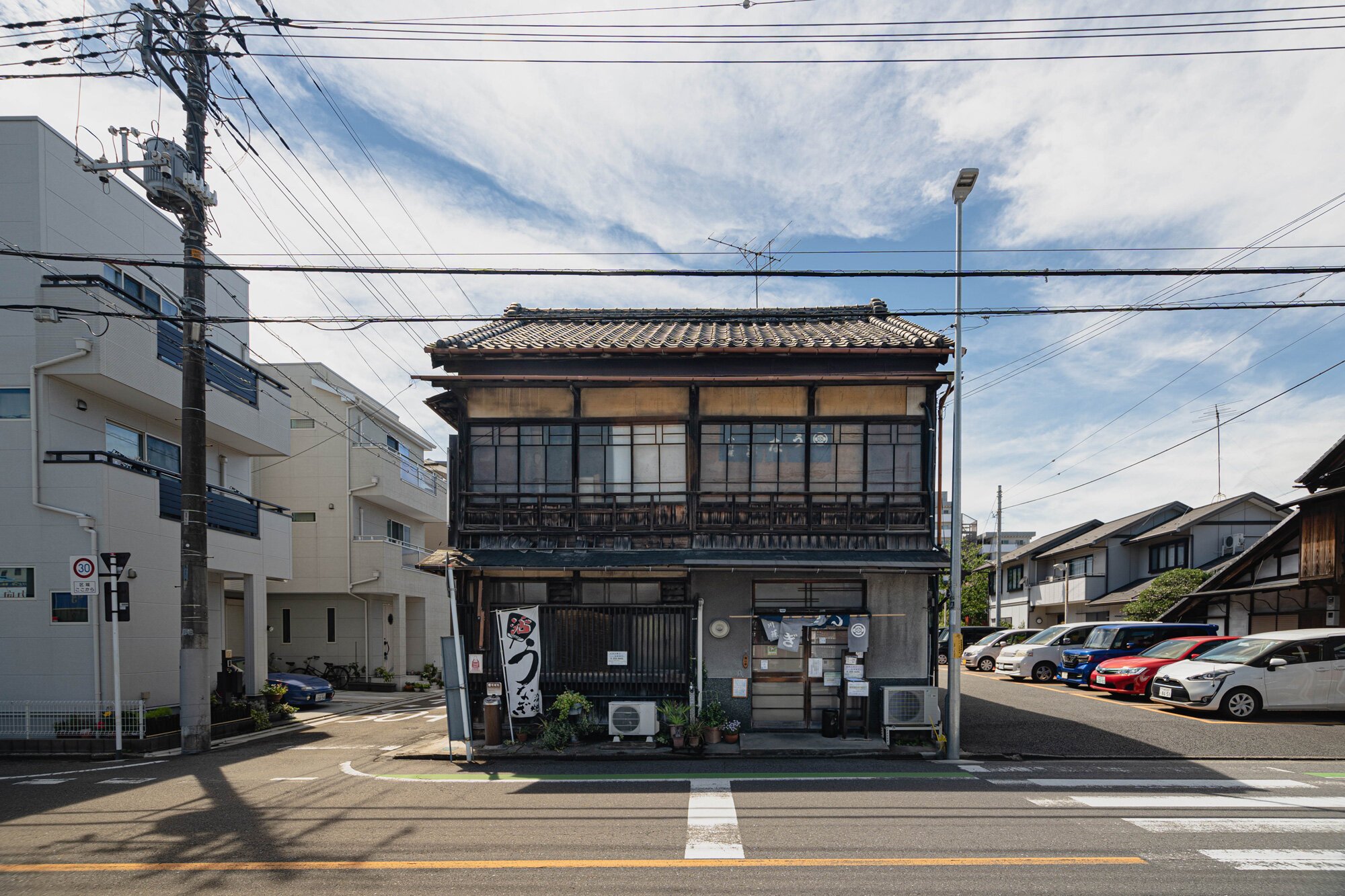
Unagi (broiled eel) is one of Kawagoe’s specialty foods, and Ogatou is one of several restaurants in the area with high reviews.
The shop is located in an old building that matches the environment, and has been around since 1918. The menu is simple, just pick how you want your unagi served.
I decided to get the Unaju Matsu, which is the largest size with 2 slices on top of rice and another slice in the middle of the rice below. Fluffy, moist, and tasty, especially with the slight taste of char from the fire.
Aburi Coffee
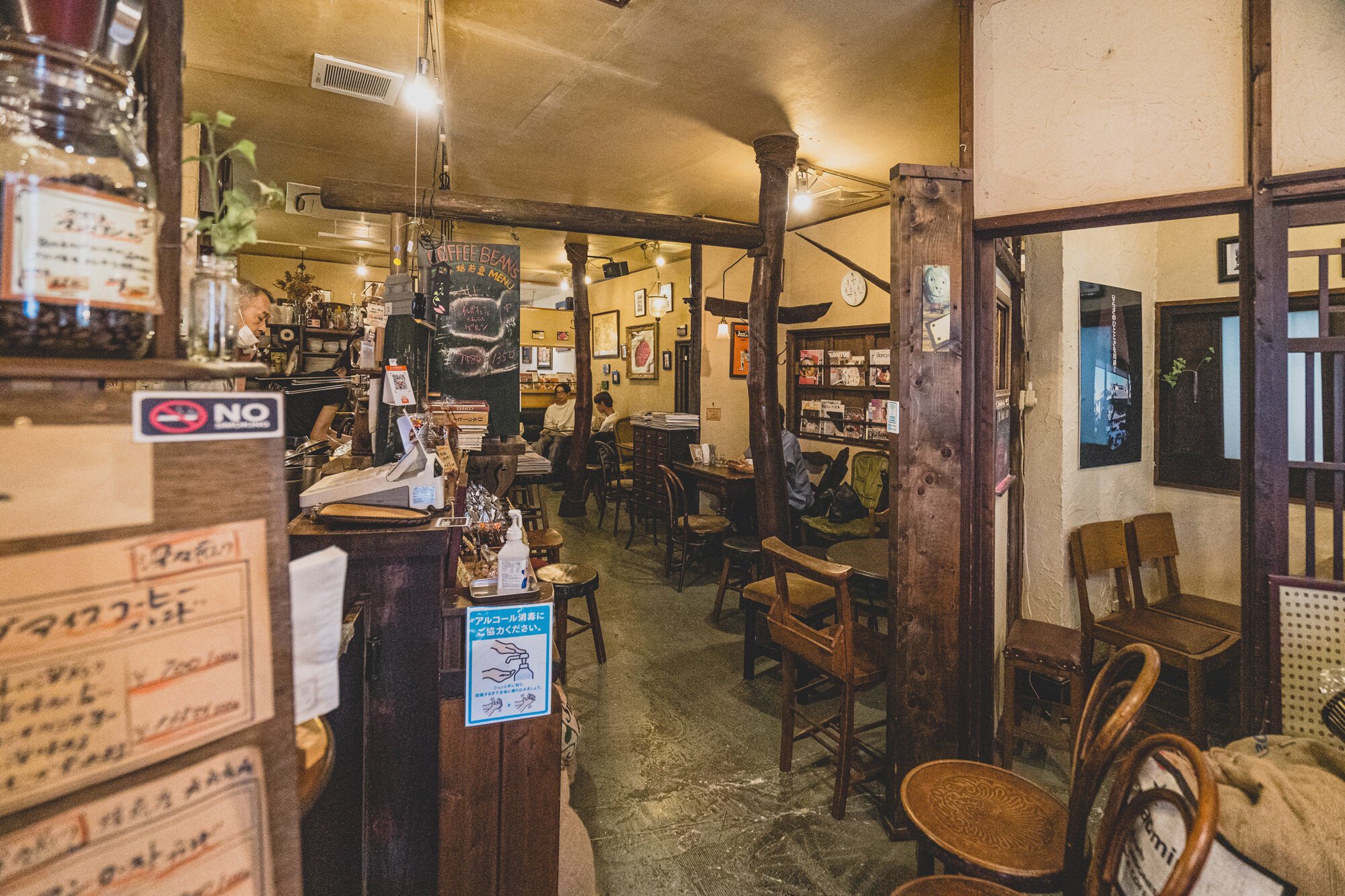
A homey coffee shop just off the main road. Aburi Coffee gets its name from the French word abri, which means shelter, and they aim to provide a shelter for people to retreat to and relax.
They accomplish this very well and provide some delicious iced coffee. You know you’re in the right place when you walk in and there are huge Yama Glass drippers that look like they’re from a science lab slow dripping future cups of coffee.
Keep in touch:
More travels:
Tokyo: CBD Cafes
CBD is growing in popularity in Japan, and a few cafes have opened up.
In the past few years, CBD businesses have been popping up around Tokyo. While THC is still illegal in Japan, CBD is not, as long as no illegal substance is in it.
As of now, it’s not fully mainstream but awareness and interest are increasing. We can see this by seeing how many searches for it are happening in Japan over the last few years:
Like many other trends, they likely start from people in or close to the international community. This could mean foreigners living in Japan, Japanese returnees who grew up or lived extensively abroad, or Japanese people who have international experience or interests in things overseas.
Domestic brands and shops such as Healthy TOKYO, CBD (coffee) [J], CALMS by H THINK [J], MUUKOMI, and AQUIL [J] have popped up, just to name a few.
The majority of these businesses are marketing CBD as a health and wellness item or dietary supplement. A lot of their website and social media content is educational. Their logos often use subdued, pastel-like colors, and their fonts tend to be clean and soft-looking.
I’ve had experiences at a couple places that I’d recommend.
CBD (COFFEE)
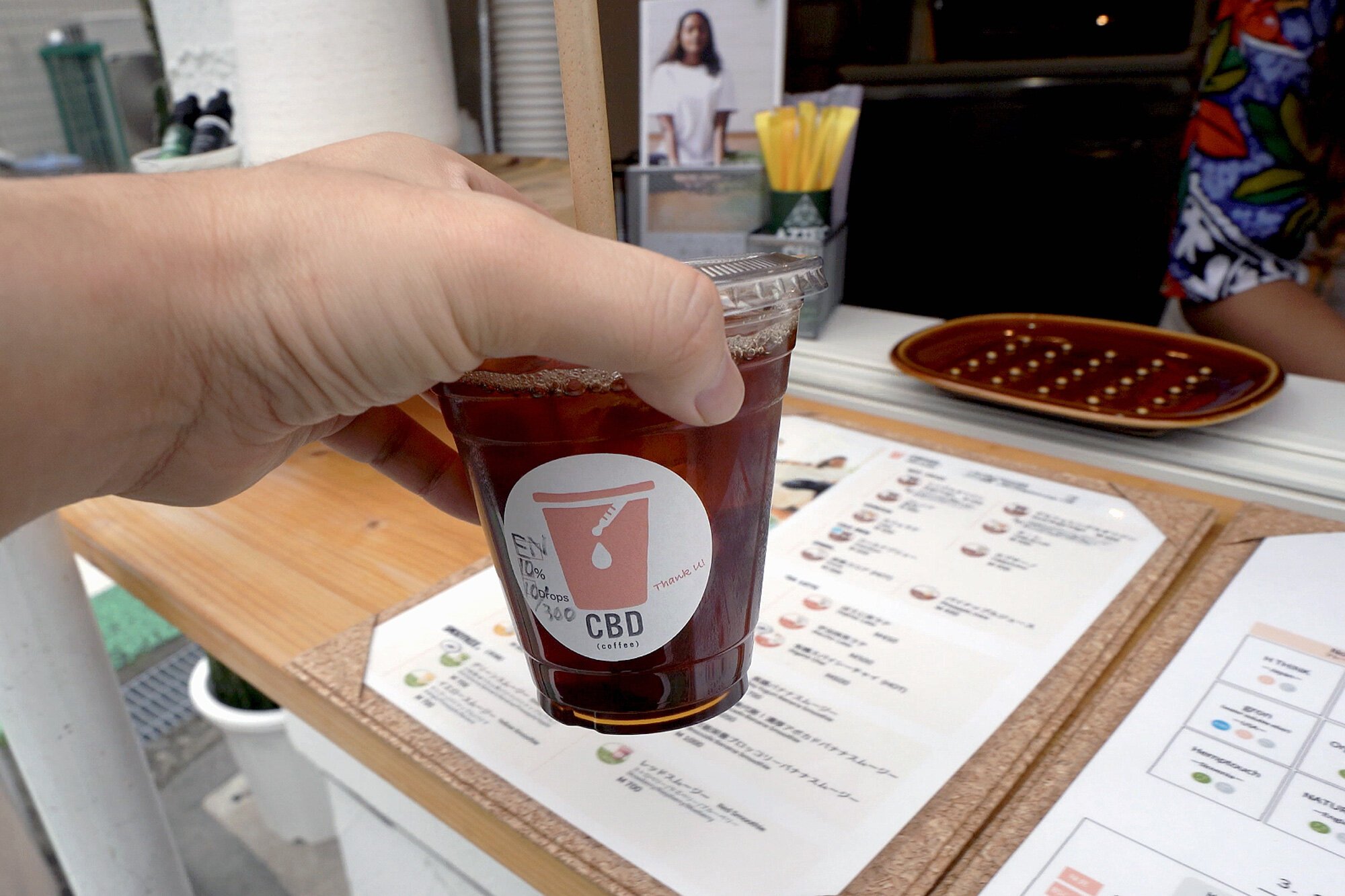
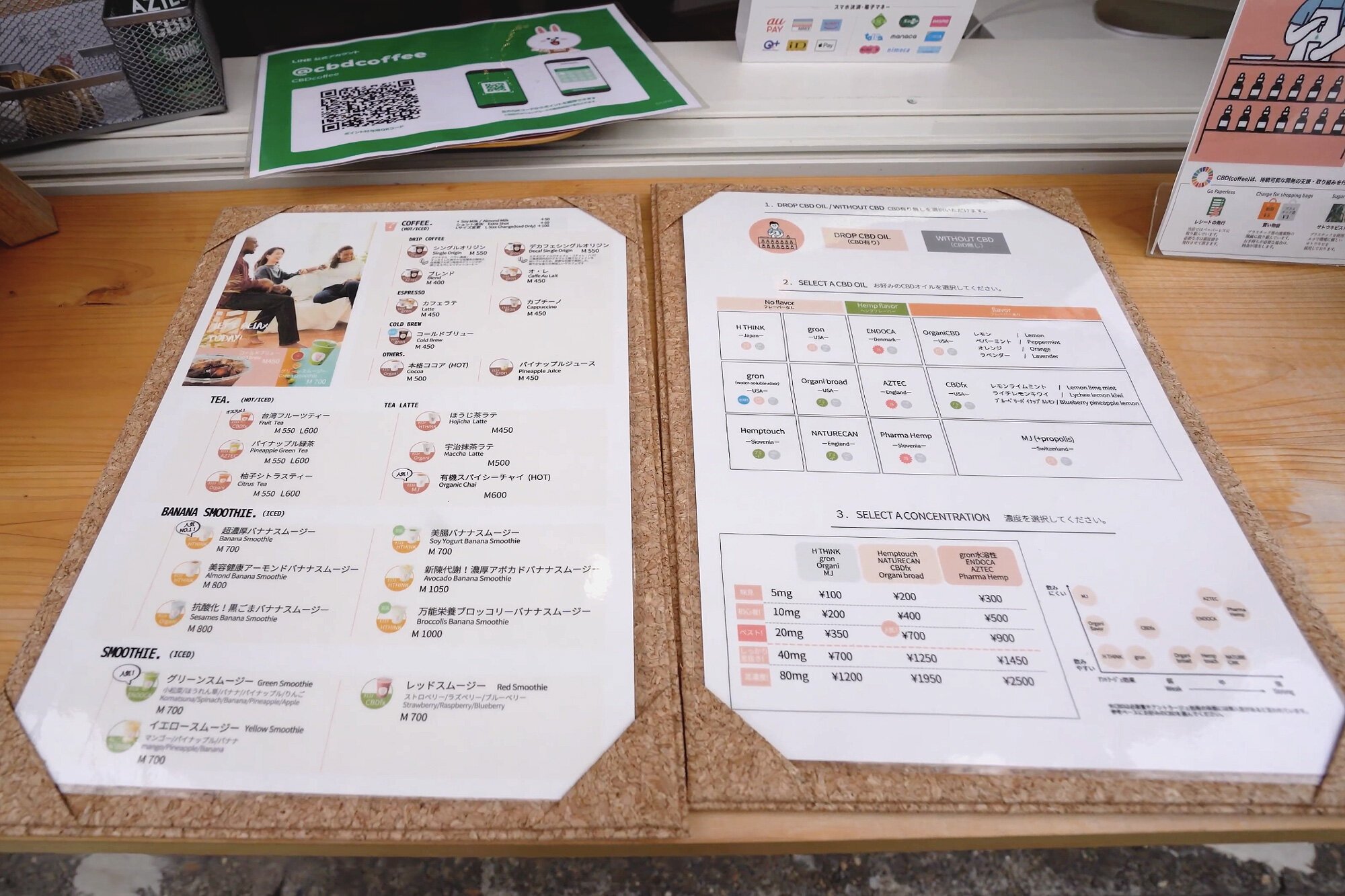
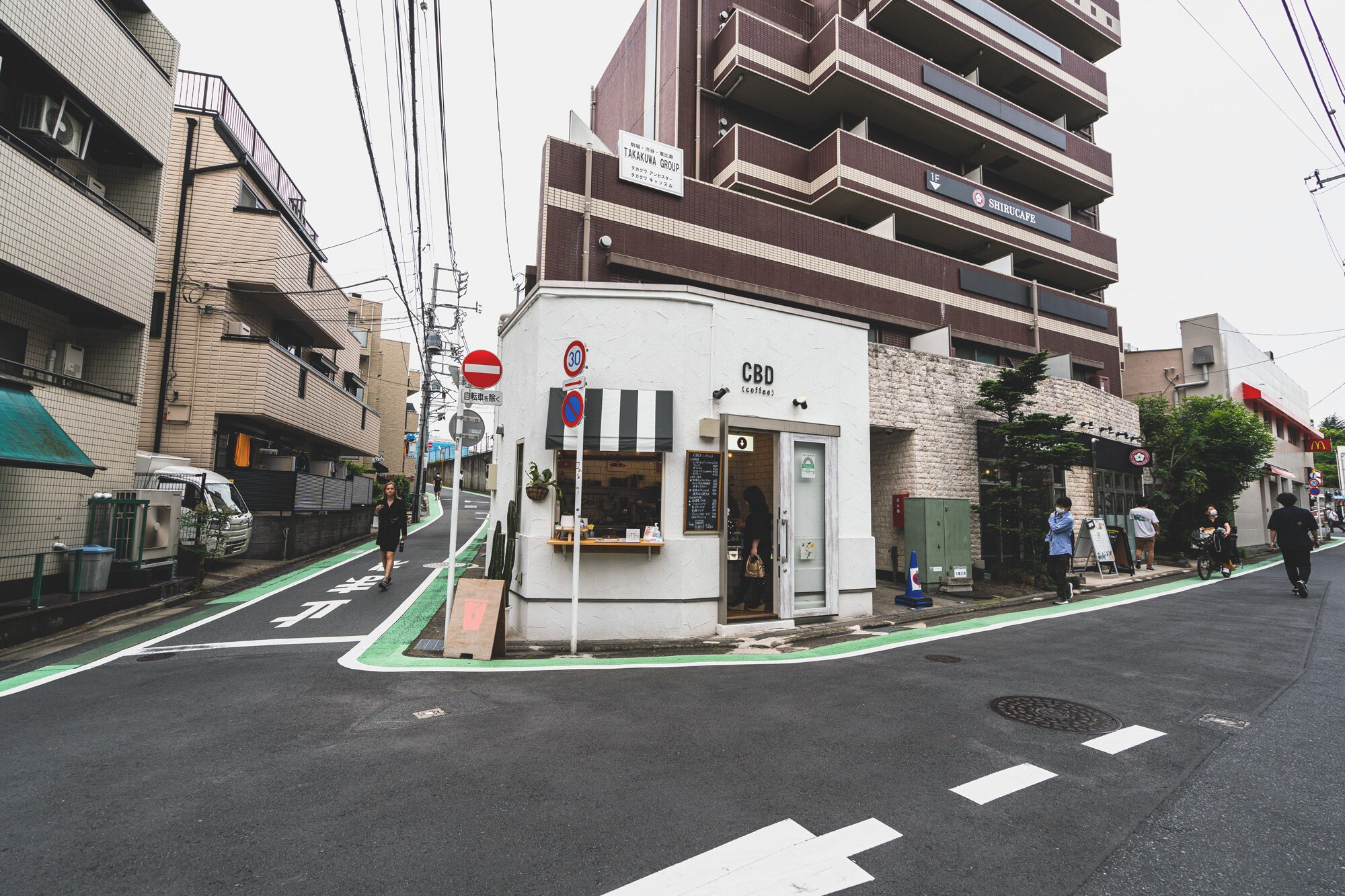
CBD (coffee) is a cute little coffee stand and shop in the Komaba-todaimae neighborhood on the Inokashira line.
It’s take out only, but they have a nice selection of drinks and CBDs. You order your drink, then customize it by choosing which CBD oil you want added, and how much. Drinks are priced according to your customization.
Staff are friendly and willing to provide an education in case you need. You can register as their LINE friend where they send coupons and host their point card.
Healthy TOKYO
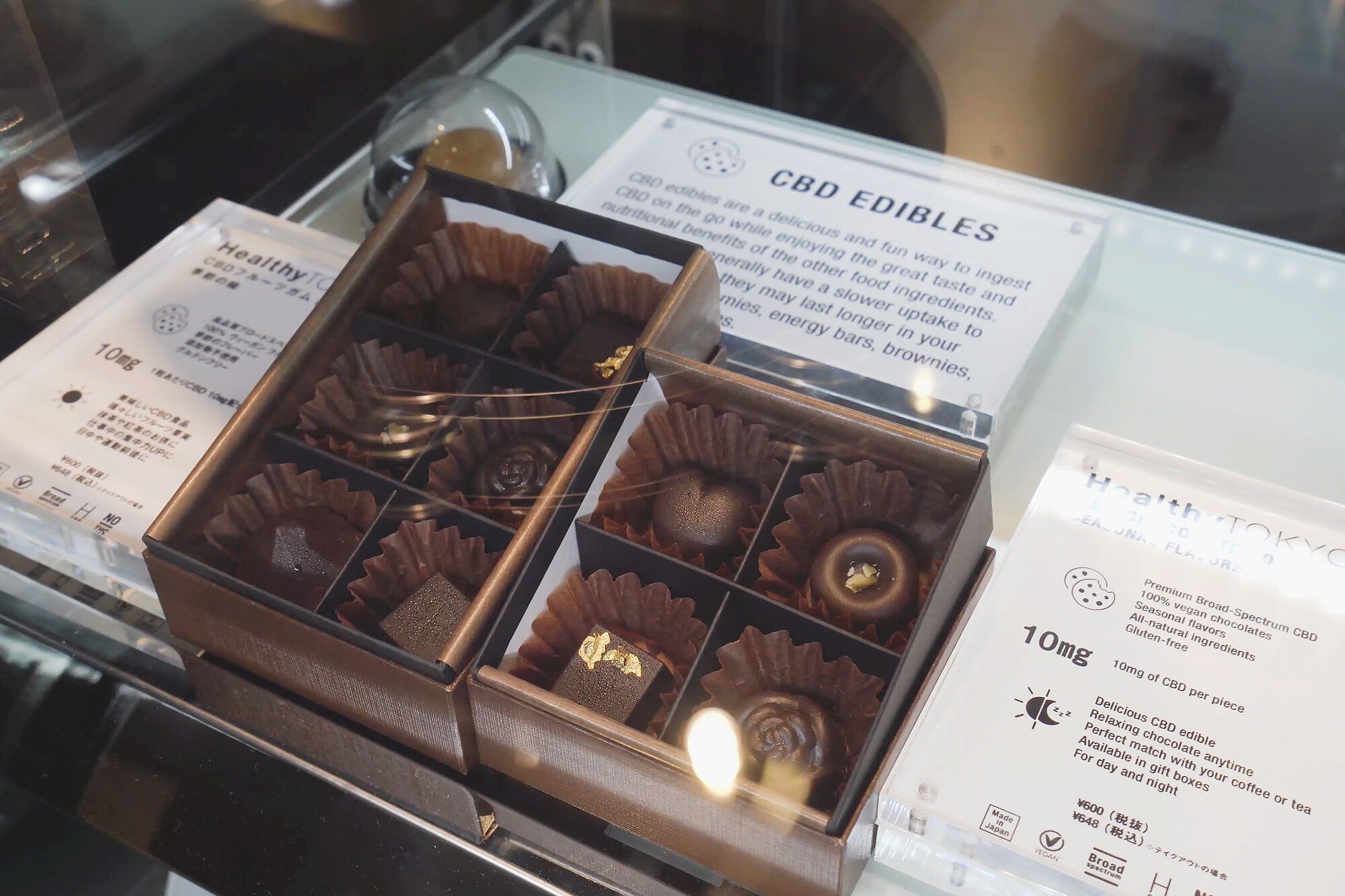
Healthy TOKYO is one of the original and most comprehensive CBD shops in Tokyo. They’re more like a cafe with sit down spaces and full menus.
You can get your coffees and teas here, but you can also order baked goods, sweets, even lasagna. They have their own CBD line and sell a full line up of products, and a lot of their foods are focused on being vegan and organic.
They have a few locations around Tokyo; their original one in Harajuku, another in the Haneda Airport, and the one I visited in Daikanyama.
KEEP IN TOUCH
SHARE:
Ningyocho, Tokyo
A photogenic, old shopping town, Ningyocho has buildings with a lot of history as well as an over 250 year old restaurant serving the original oyakodon.
Ningyōchō is located next to Nihonbashi, Hamacho, and Kayabacho areas
It’s an old entertainment and pleasure town that also saw a lot of trade
Its name means “doll town” and is full of old, photogenic buildings
Translating literally to “doll town”, Ningyōchō has is a historical location in Tokyo.
I’ve been to the area a couple times. It sits right next to Nihonbashi, towards the eastern side of Tokyo and near the Sumida River.
I’ll share my Ningyōchō experience here in case you’re staying nearby or are looking to check it out. If you’re just looking for food recommendations, skip to the bottom.
How to get there
Ningyōchō Station has a couple of subway lines running through: Hibiya Line and Asakusa Line. Taking a long walk from Nihonbashi Station is also an option.
About Ningyocho
Ningyocho is part of the greater Nihonbashi area, which used to be an area for trade. The Ningyocho area specifically was an area for pleasure before relocating to Asakusa.
It later saw the first Kabuki theater set up in 1624 followed by other entertainment businesses, including puppet theaters, doll makers and so on, which influenced the naming of the town later on.
Current day Ningyocho is known for its small shops and historical feel. After all, Tokyo’s first shopping arcade was set up here in 1951. Because of this, it’s a great place to walk as you’ll come across a lot of old, photogenic buildings.
Where we stayed
While we didn’t stay in Ningyōchō itself, it was only a short walk away. We stayed at the Hamacho Hotel, which is in the neighboring Hamacho area.
This hotel is a minimalist hotel and part of the recent wave of concept hotels popping up around Japan. It was completed in 2019 and has a restaurant and chocolate bar (bottom) inside. There’s also markets nearby which is convenient.
We stayed in their Terrace Room, a 40m² room with a small, private terrace area. The bed area is sunken which adds more dimension to the room, the bath was huge and the toilet was modern.
The cost of the room on the night we stayed was about USD $200, which is pretty reasonable. It was a nice hotel to stay at.

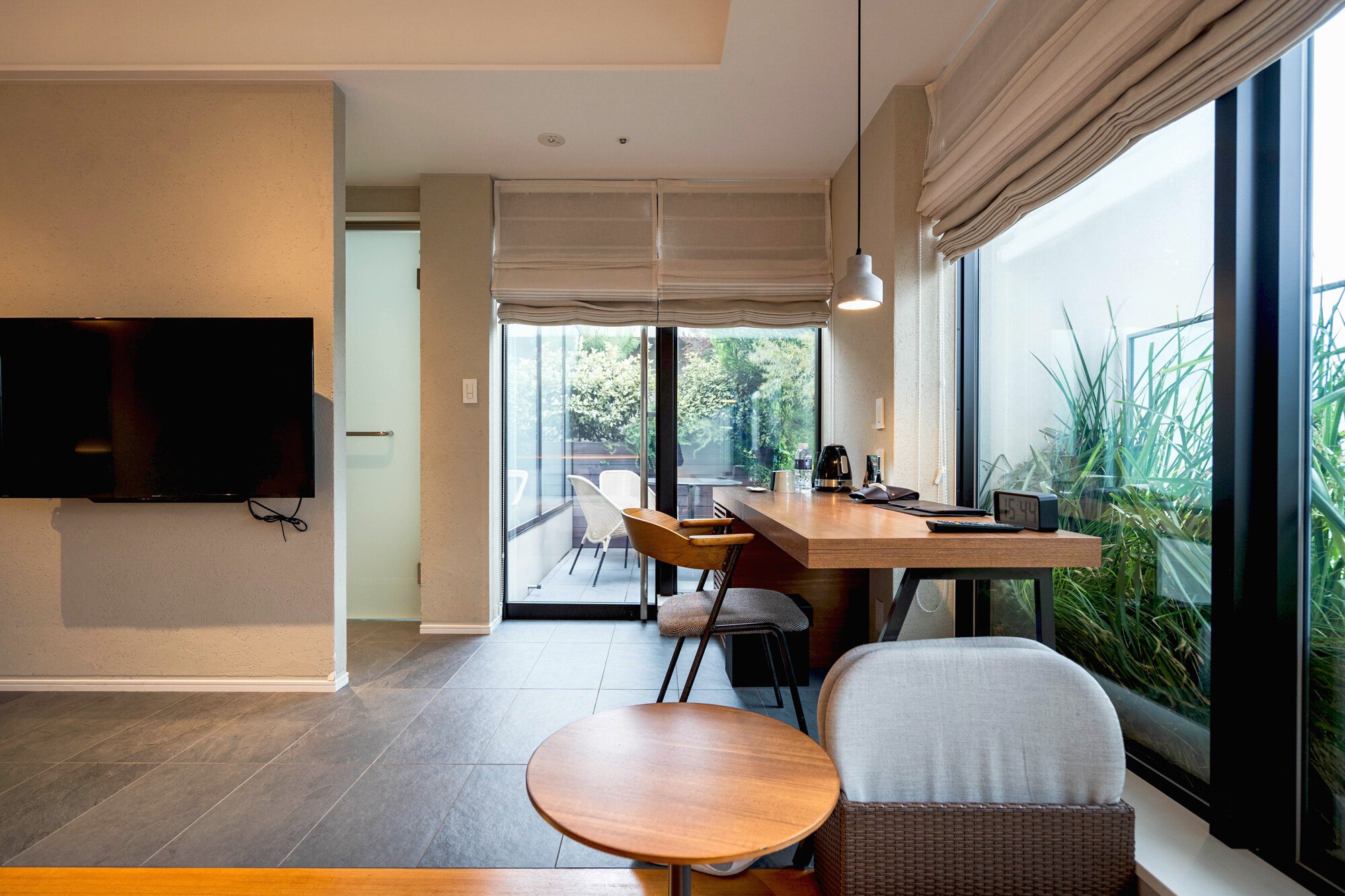
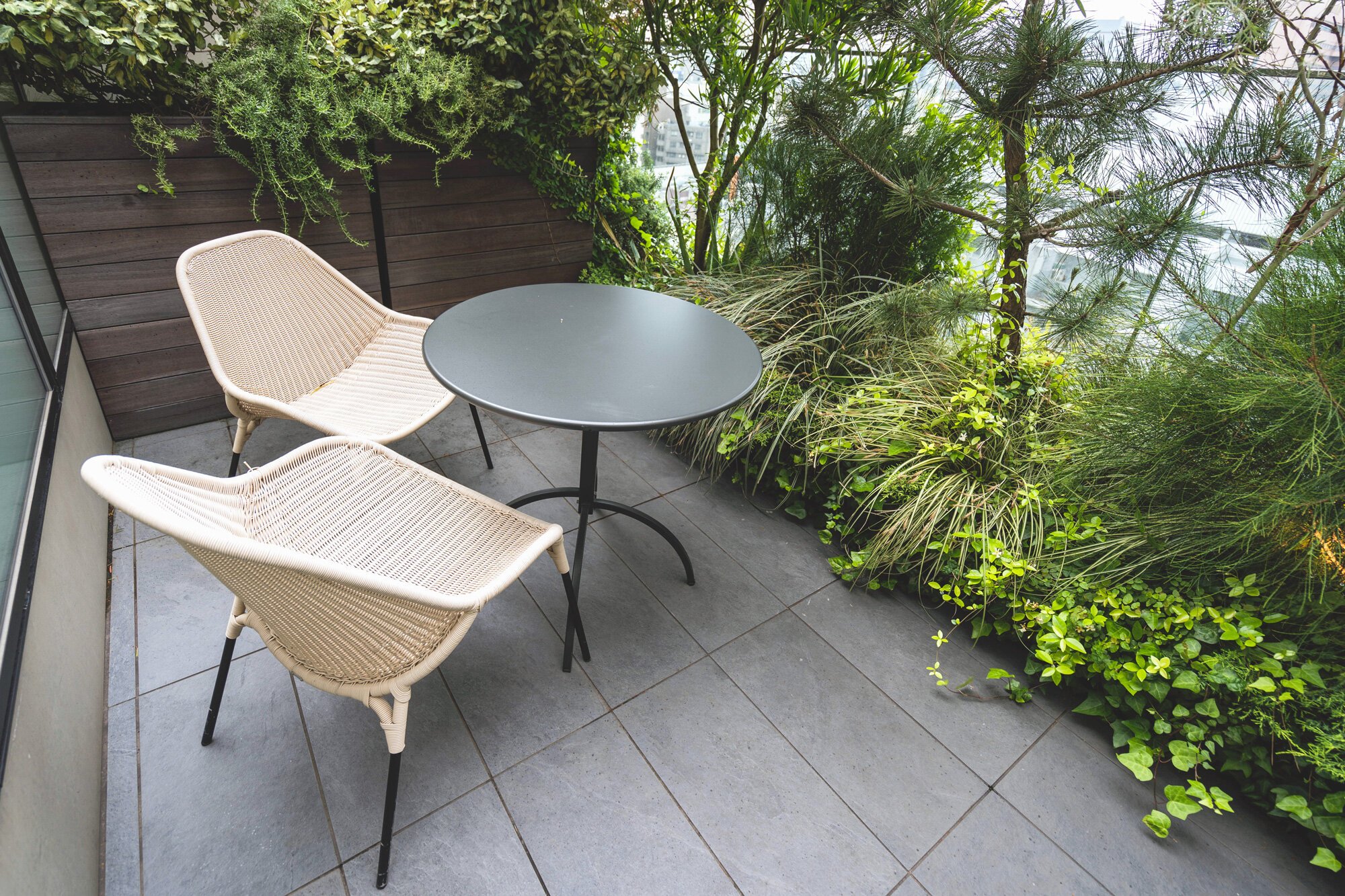

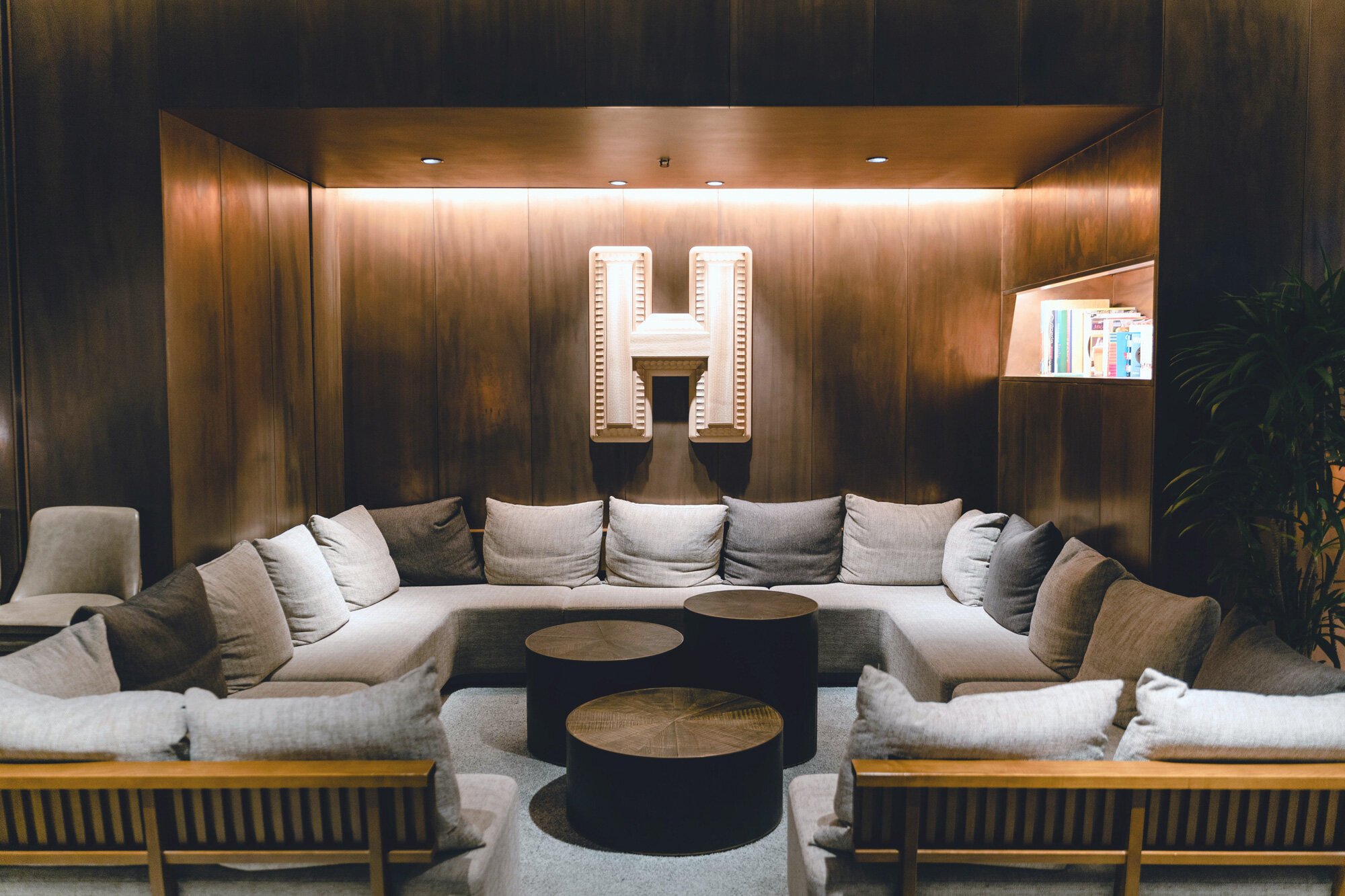
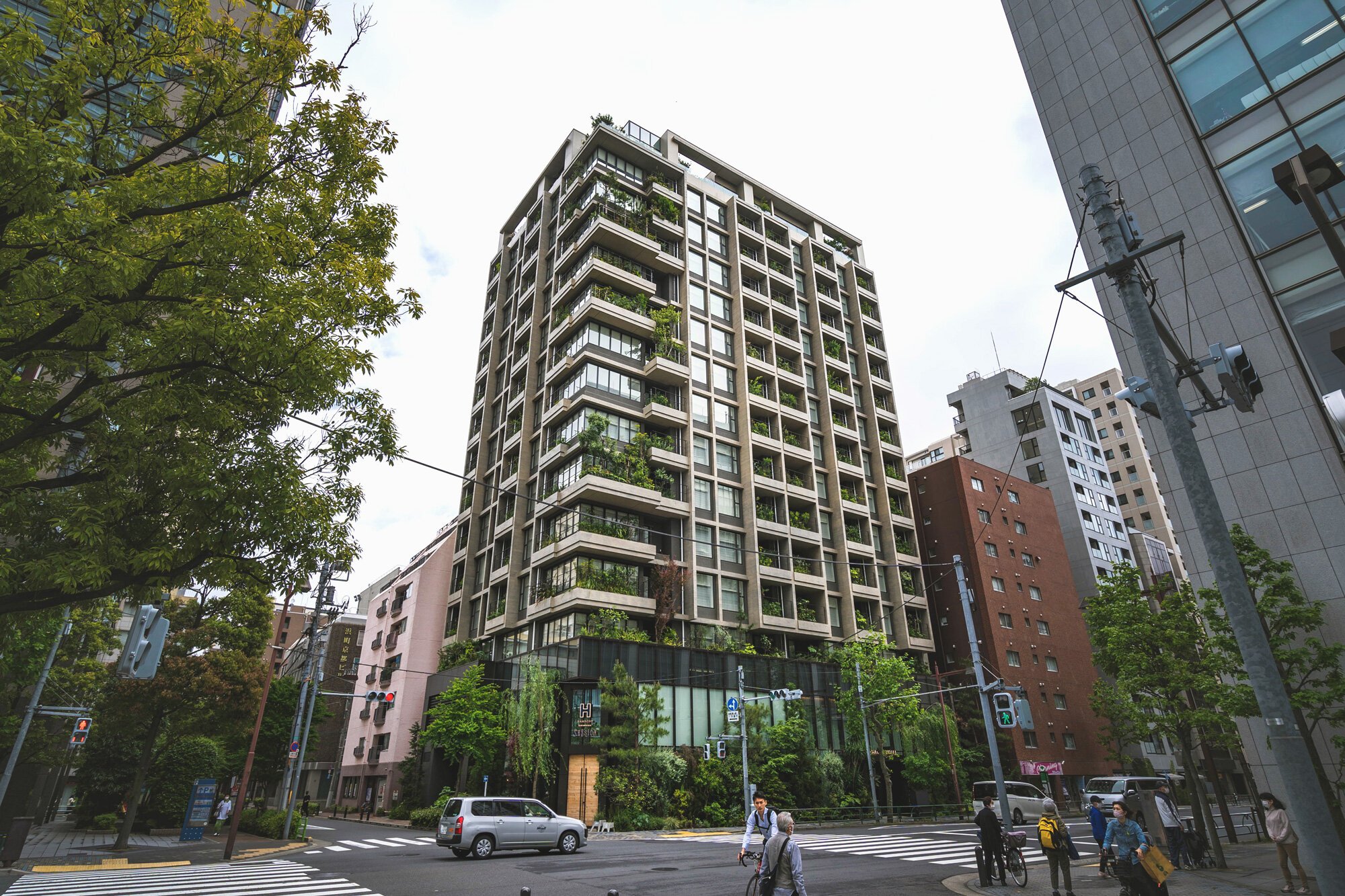
Here’s a video of the hotel and what we did in Ningyocho:
What we did
The times that I’ve visited Ningyocho, there was either no destination or the purpose was to eat at a specific place.
The early spring is a nice time to go because there’s an area called Amazakeyokocho, or “sweet sake alley”. There are shops that serve hot amazake, which is a sweet, rice porridge drink, and it really hits the spot on a cold day while exploring the town.
My recommendation is to pick a place to eat, bring a camera and enjoy the sights of the town while there. Here are some places that I’d recommend.
Where we ate
Tamahide
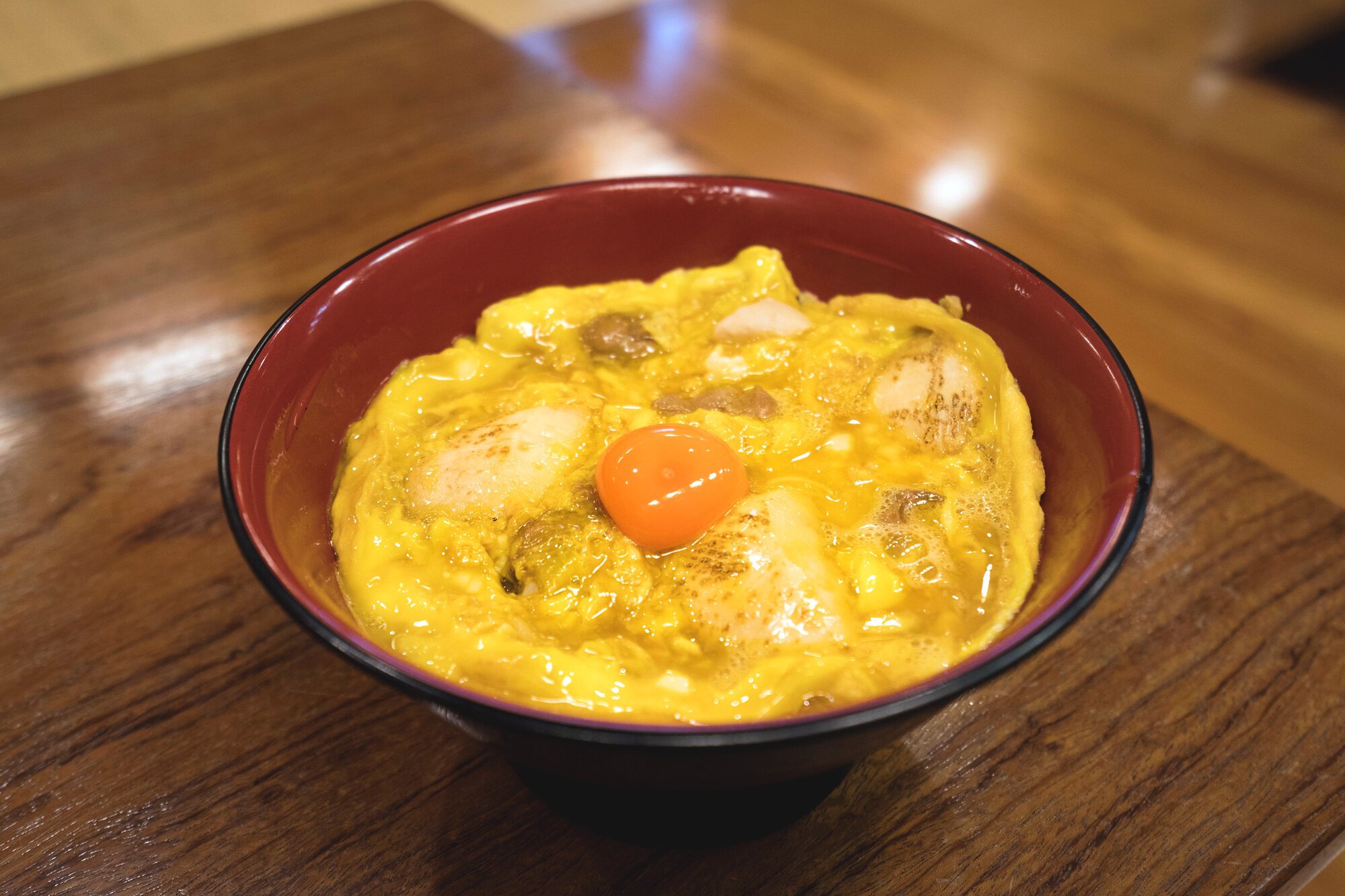

Tamahide is credited as being the original server of oyakodon, which is mainly known to be chicken and egg on rice. They first opened in 1760 which means they’ve been in business for over 250 years.
They originally were a higher end shamo nabe, or gamecock hot pot restaurant. In the late 1800s, they noticed people putting their remaining food on their rice and mixing it up, which is how the idea came about. They tried it, and were originally bashed for it because putting food on top of rice was considered low class and peasant-like. But people secretly enjoyed it and so they’d deliver the meals to them at home.
Fast forward to today and it’s a well known dish. One bowl is 2,800 JPY (~ USD $25.50). Tamahide is usually extremely crowded, so go early. While it wasn’t the best oyakodon I’ve ever eaten, it was great, and it’s quite a privilege to eat at the original spot.
nel
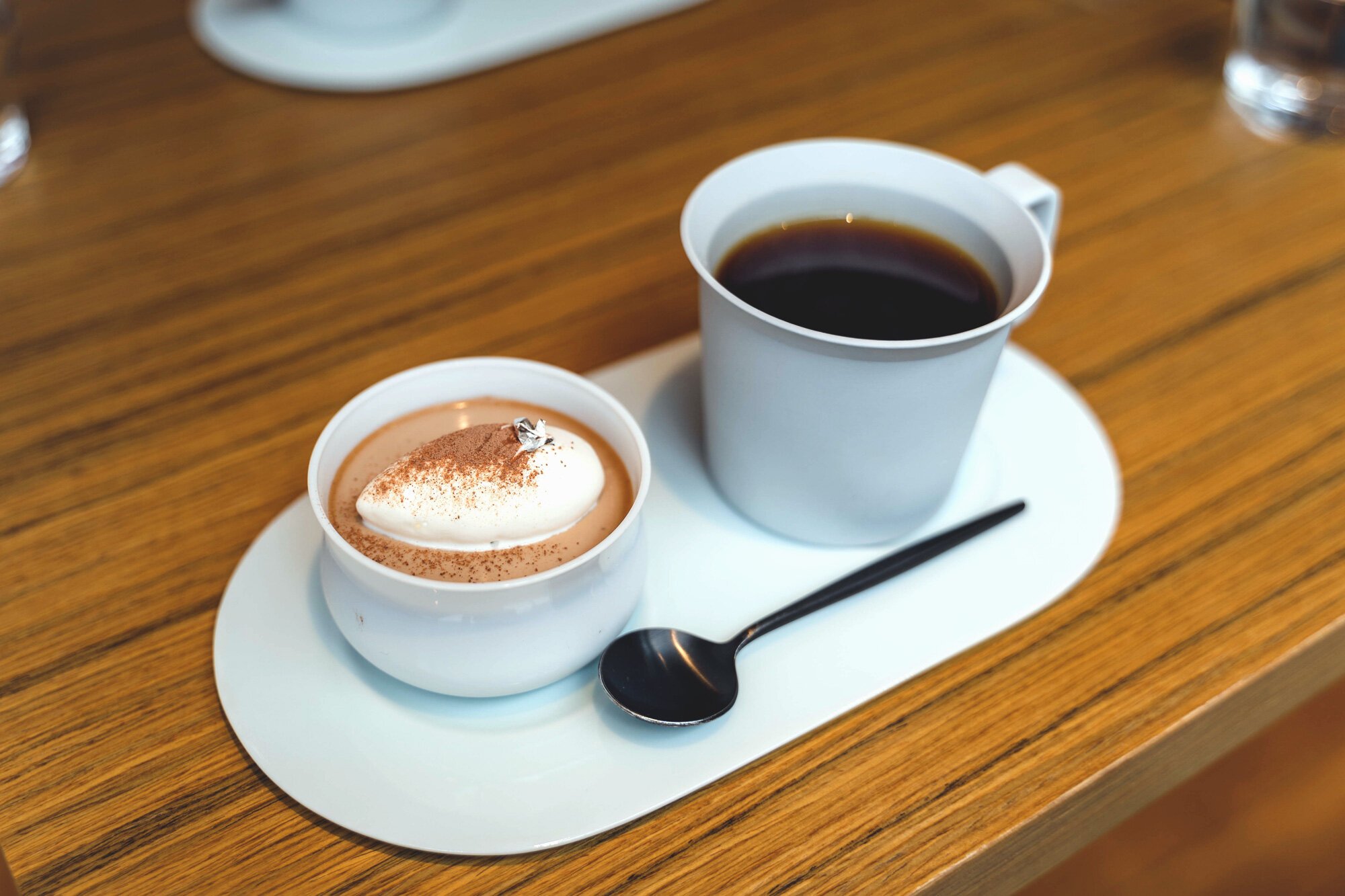
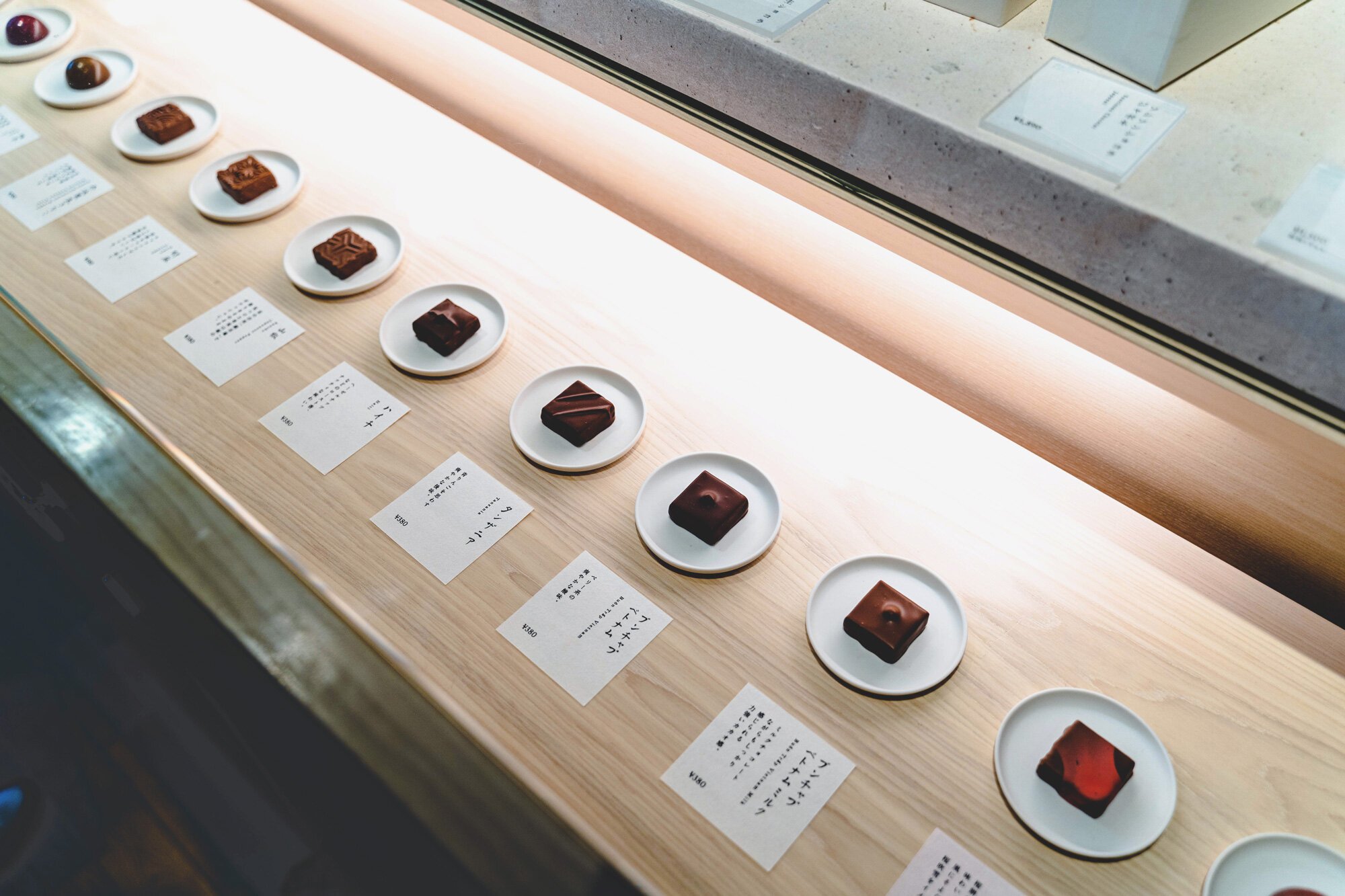

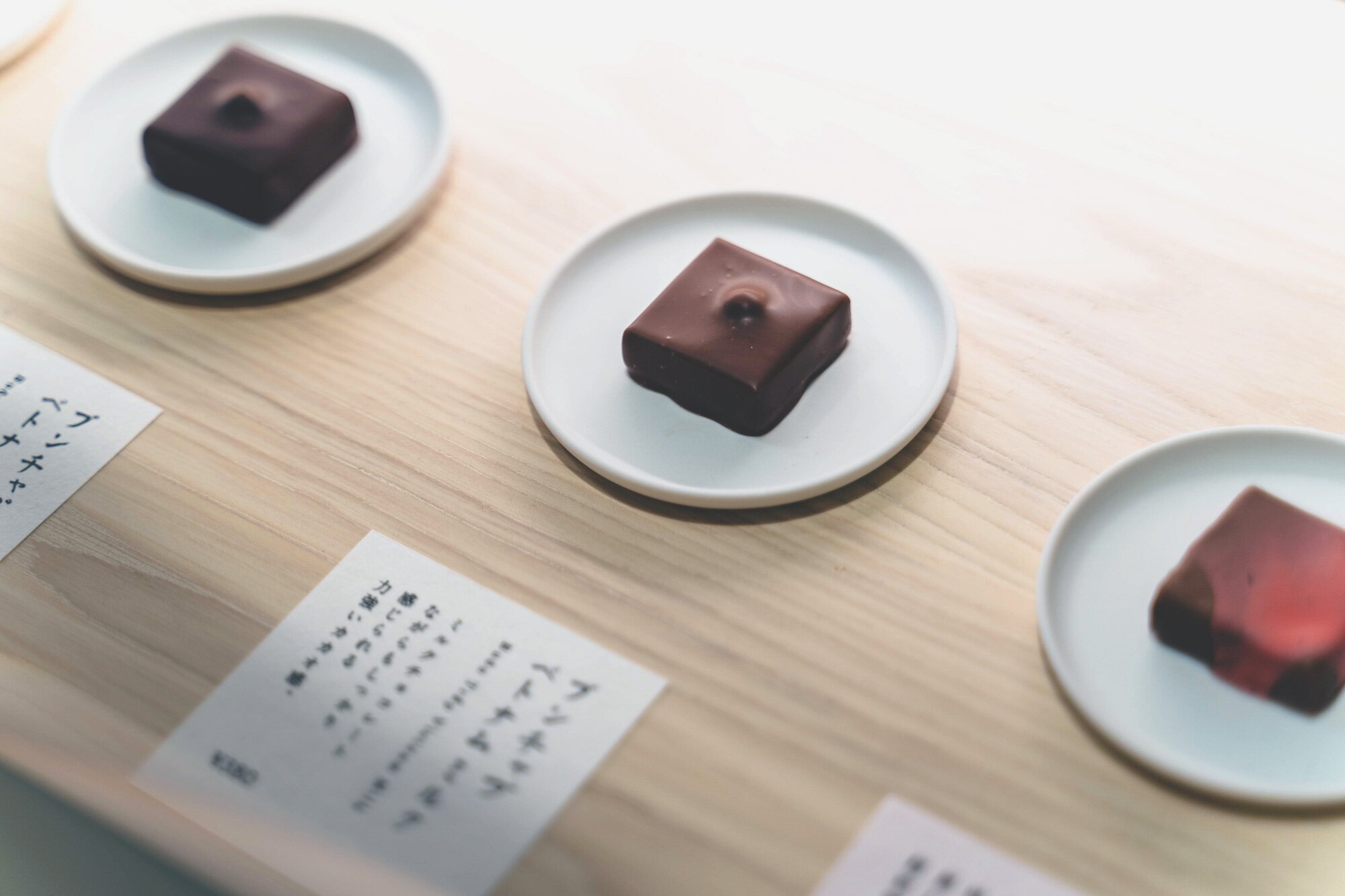
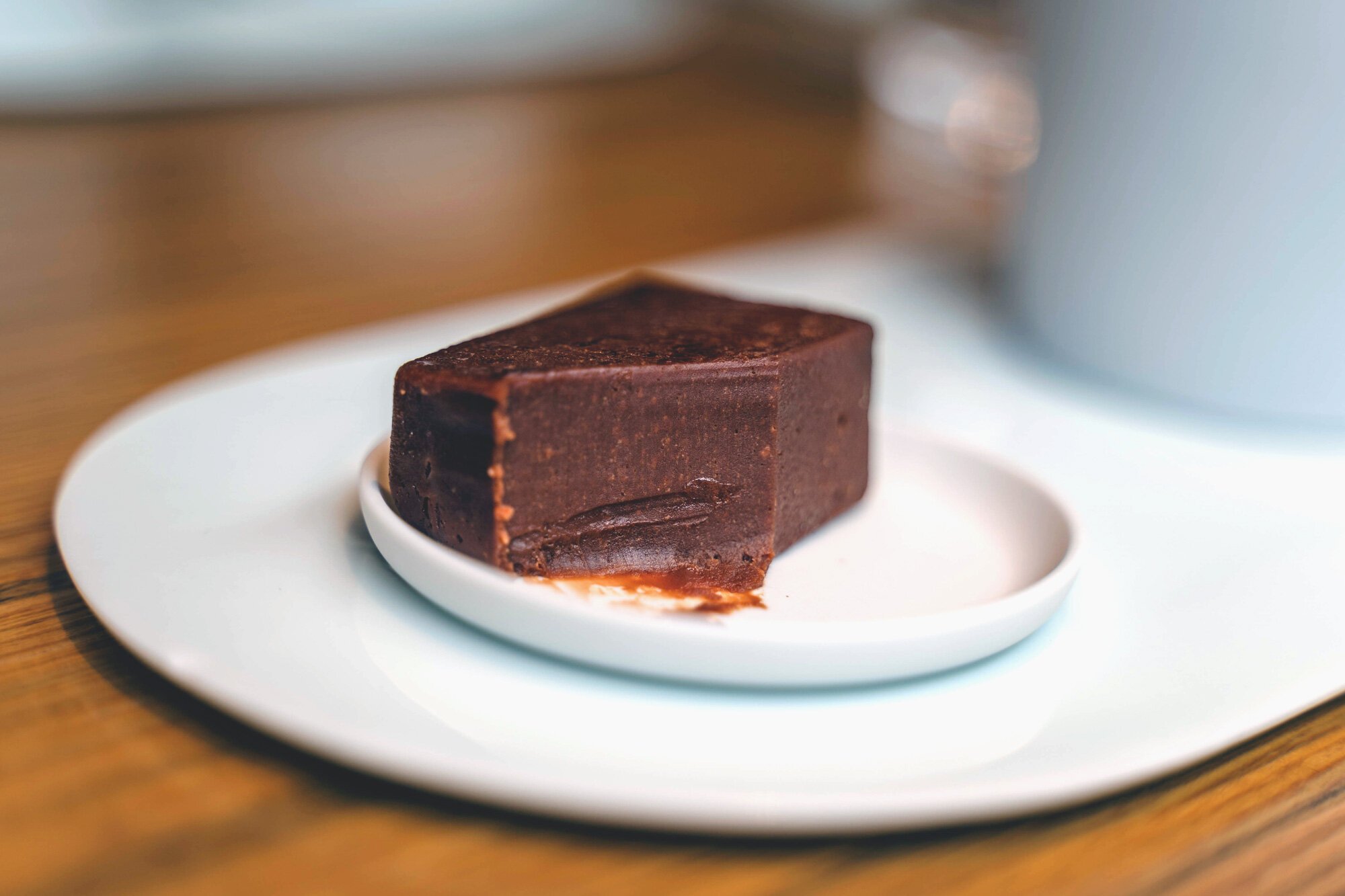
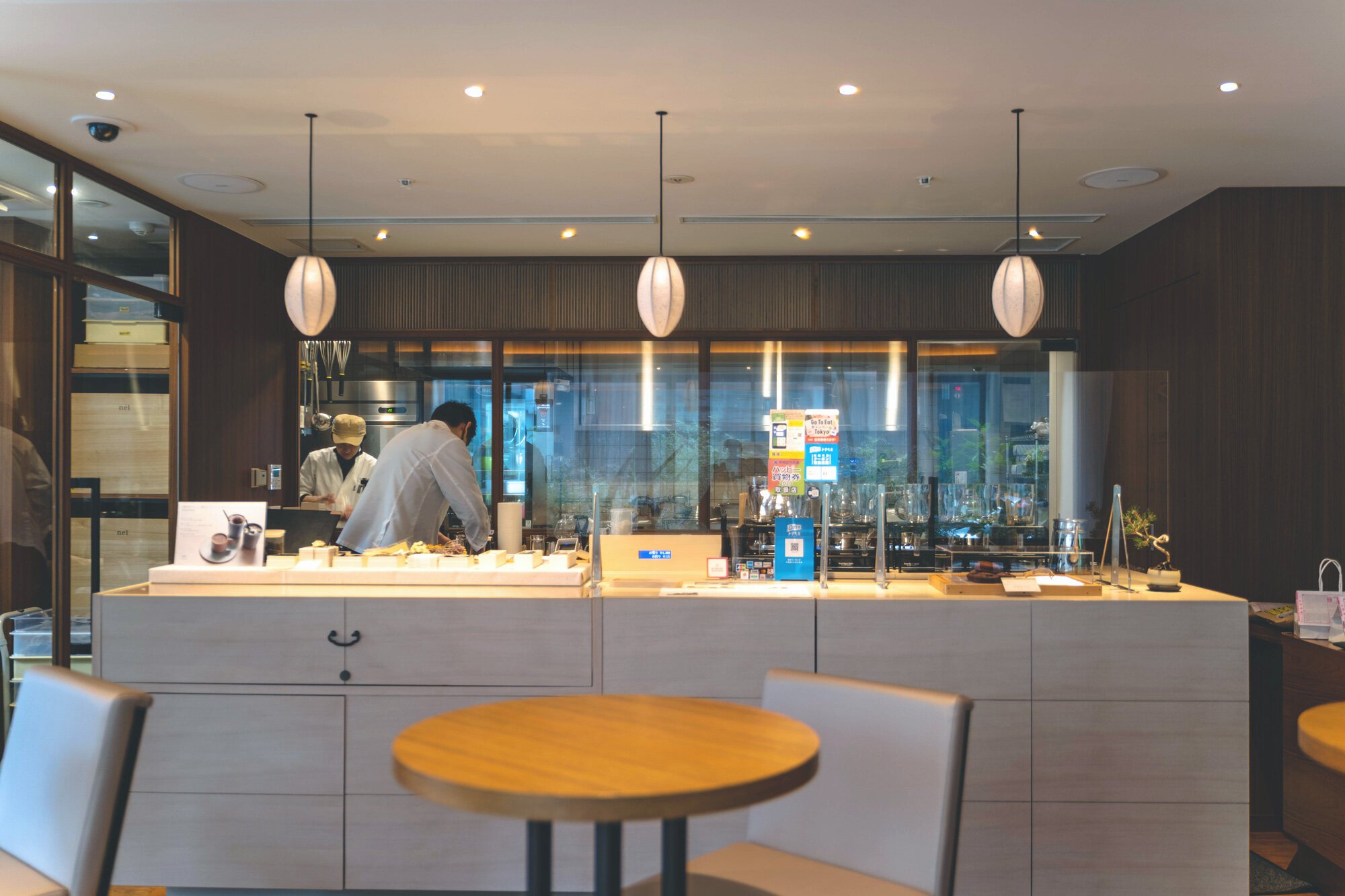
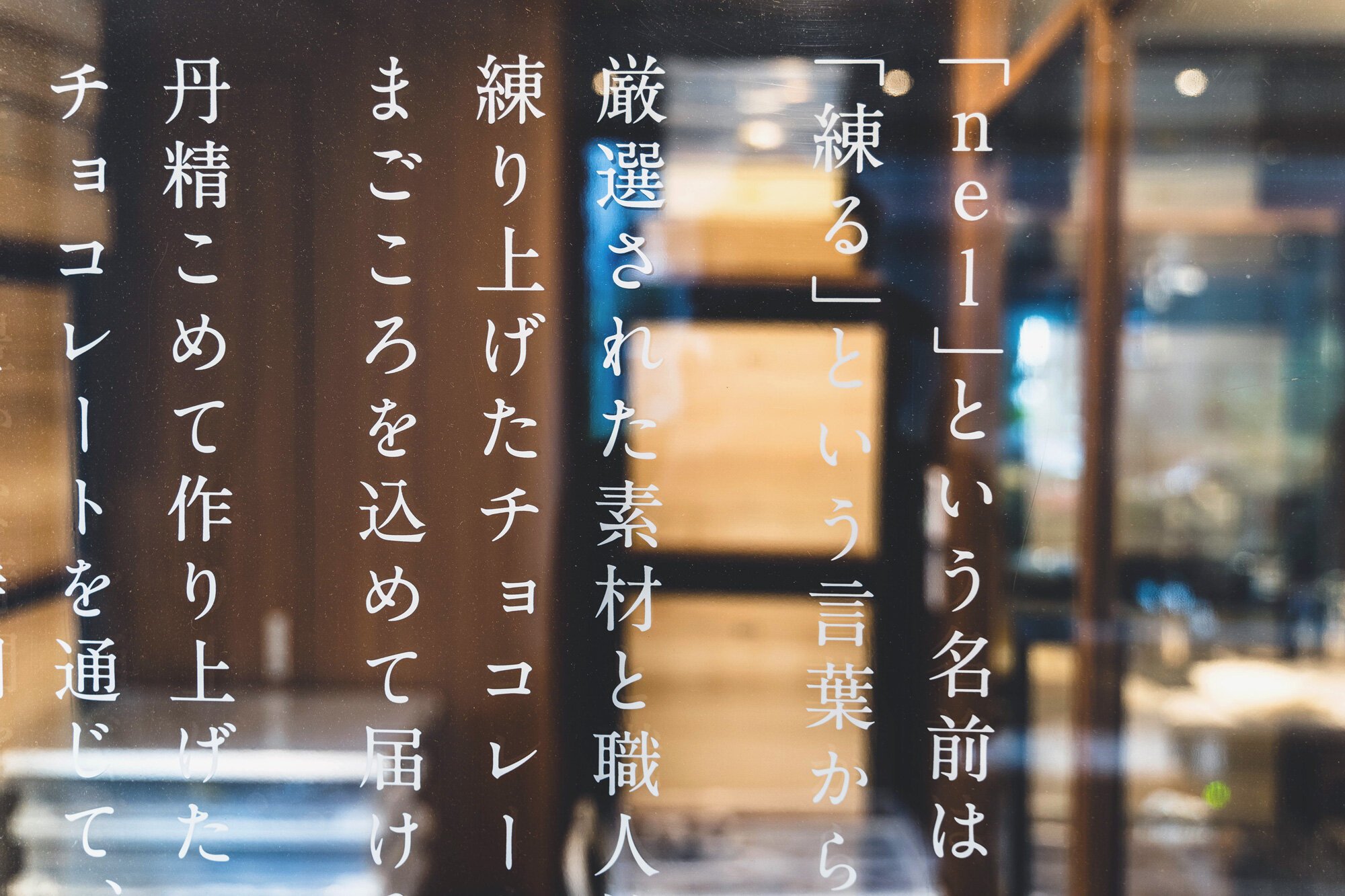
nel is a bean-to-bar, craft chocolate shop located in the Hamacho Hotel. Its name comes from “練る/ neru” in Japanese which is to knead.
The chief chocolatier here has studied under an international award winning chocolatier in Kyoto, worked as a sous-chef, as well as in patisserie in a Luxembourg, France.
They have coffee sets (972 JPY / ~ USD $8.85) and also have a range of different chocolates and chocolate tablets, and their high quality is easy to recognize and taste.
Ningyocho Imahan
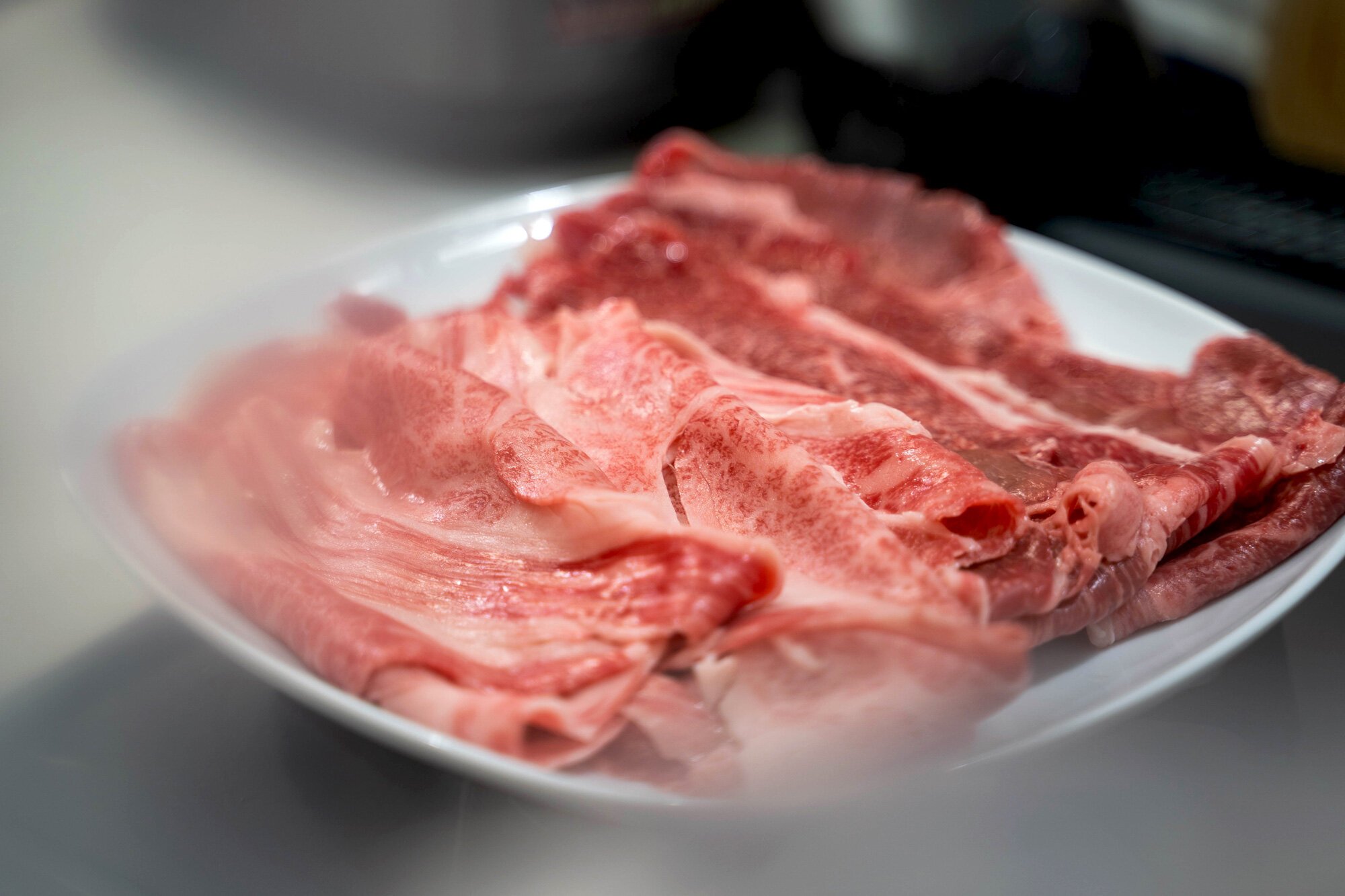
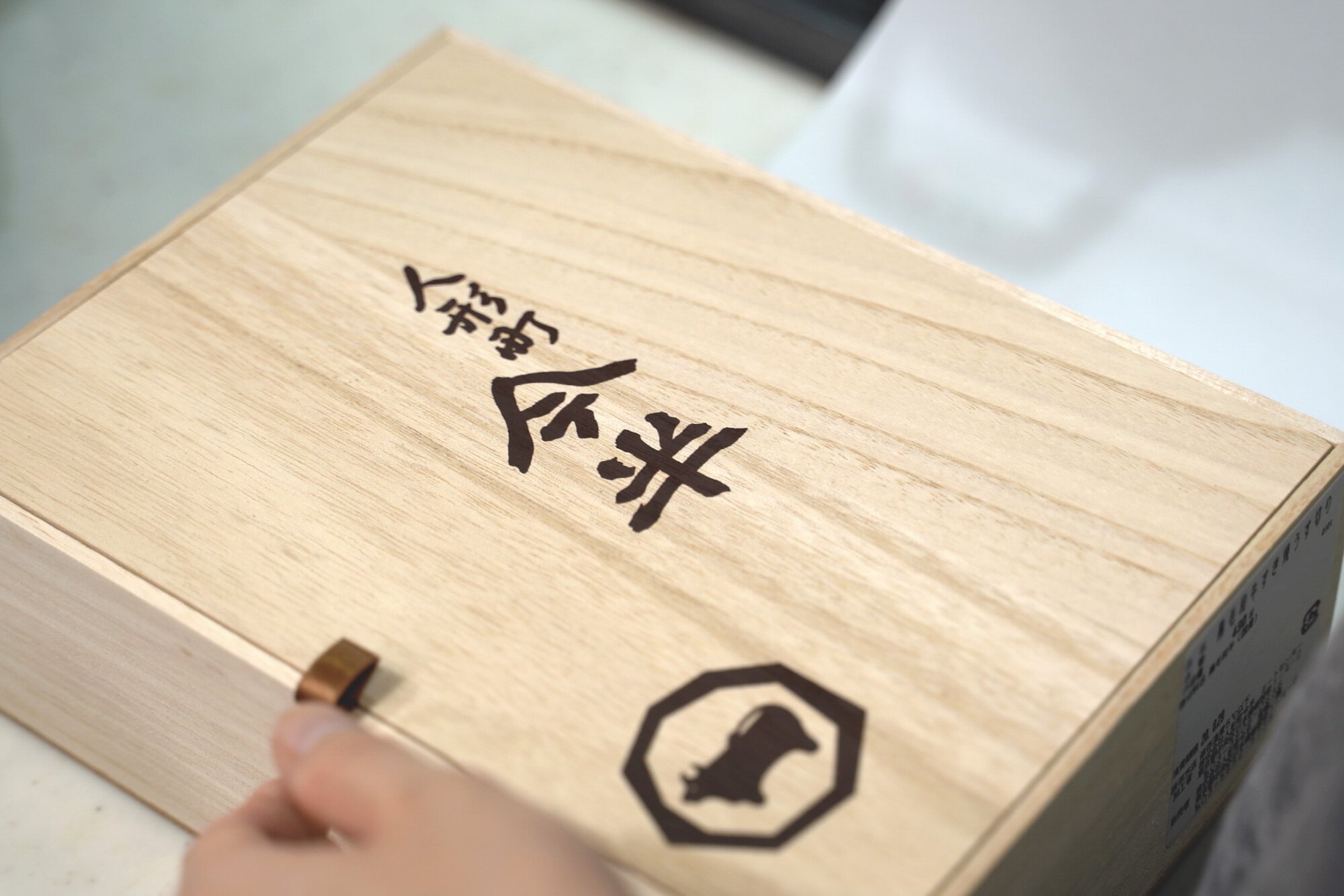
Famous for their Wagyu meals, Imahan dates back to 1895. They specialize in sukiyaki, but also prepare the beef in various different ways.
I can’t comment on actually eating at their restaurant because I haven’t, but they also sell the Wagyu at their meat shop. We were gifted a box and it was nothing short of amazing. We used it to make Kansai-style sukiyaki - here’s a video of that.
Itadaki
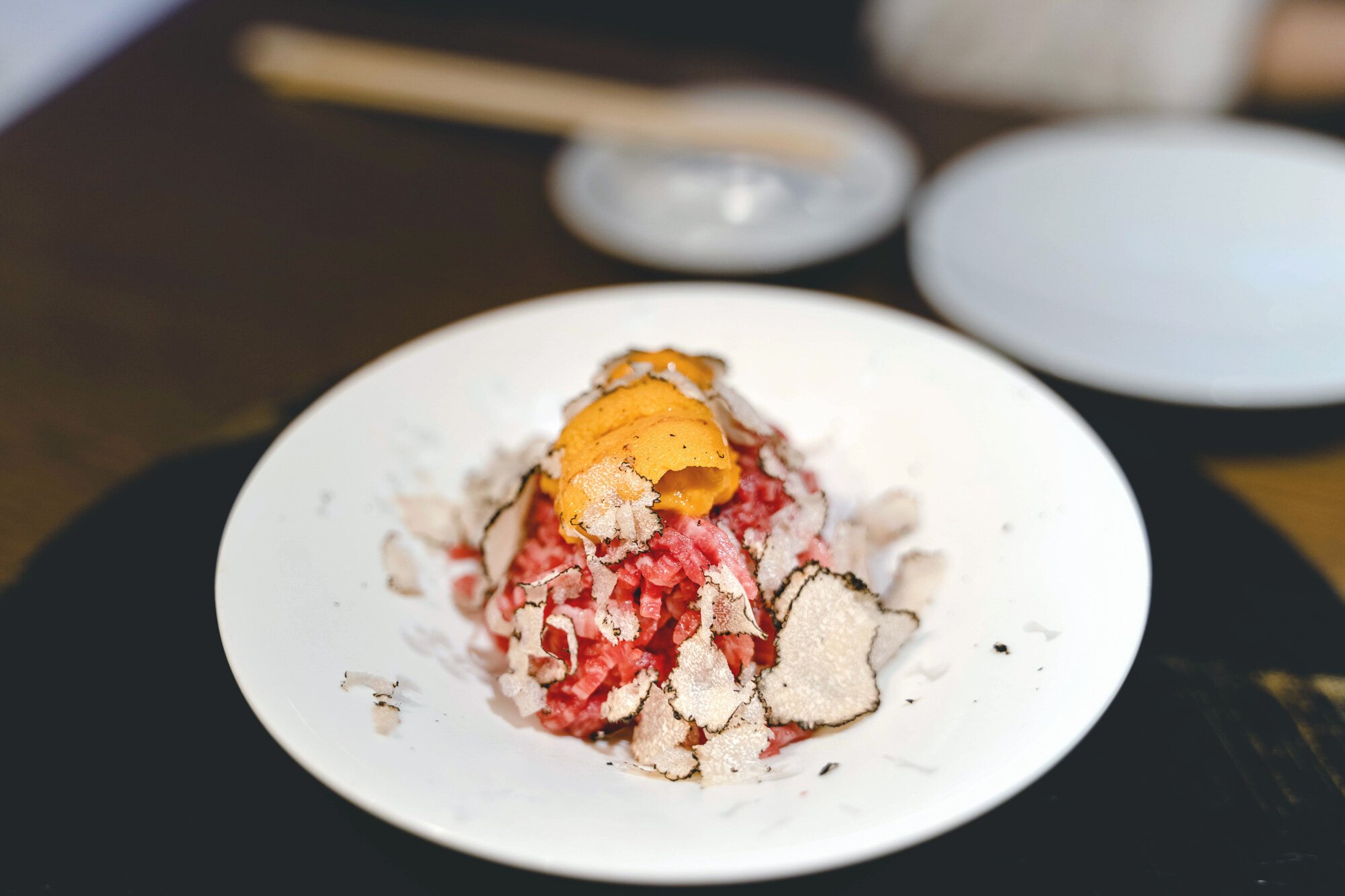
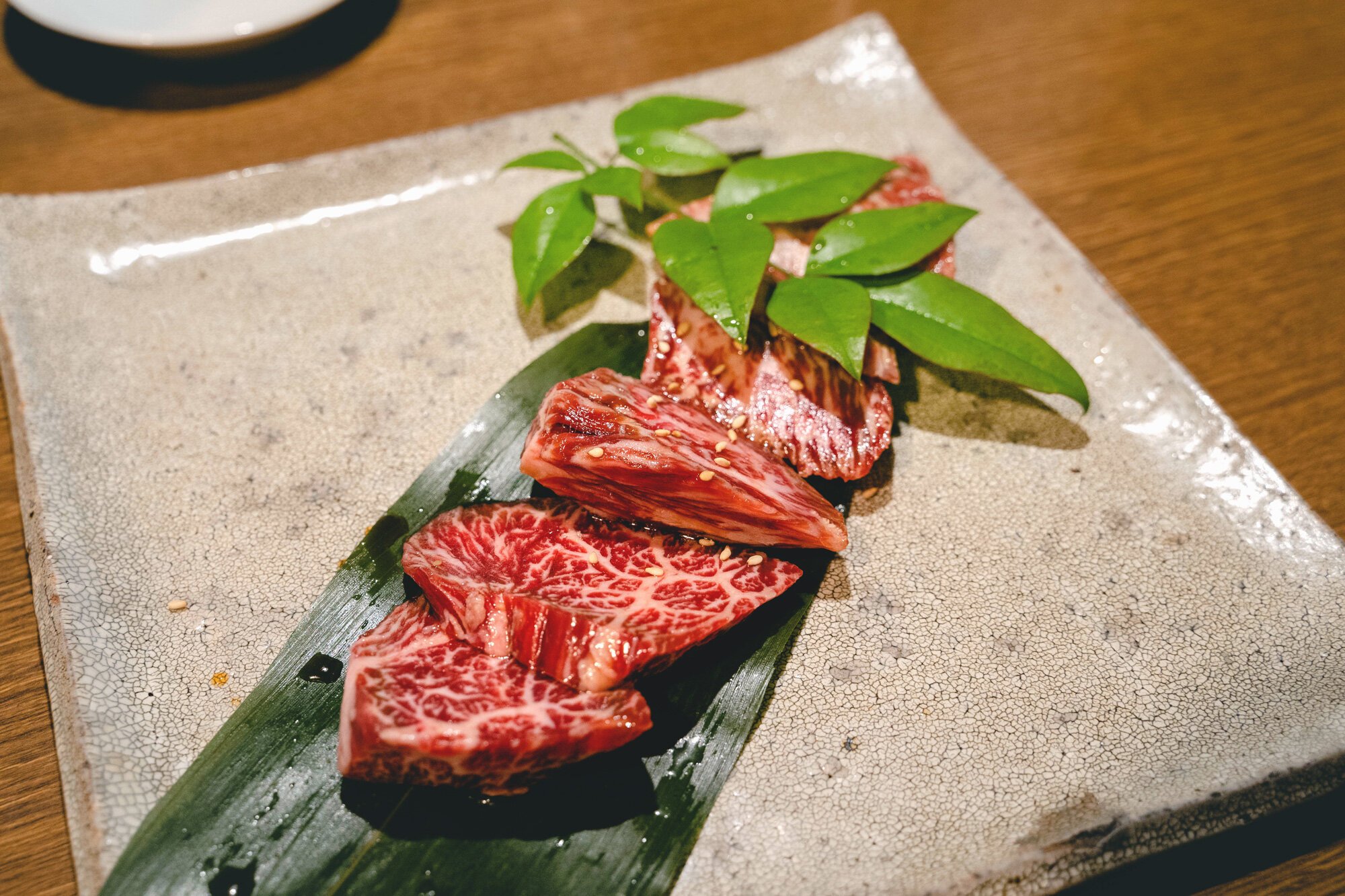
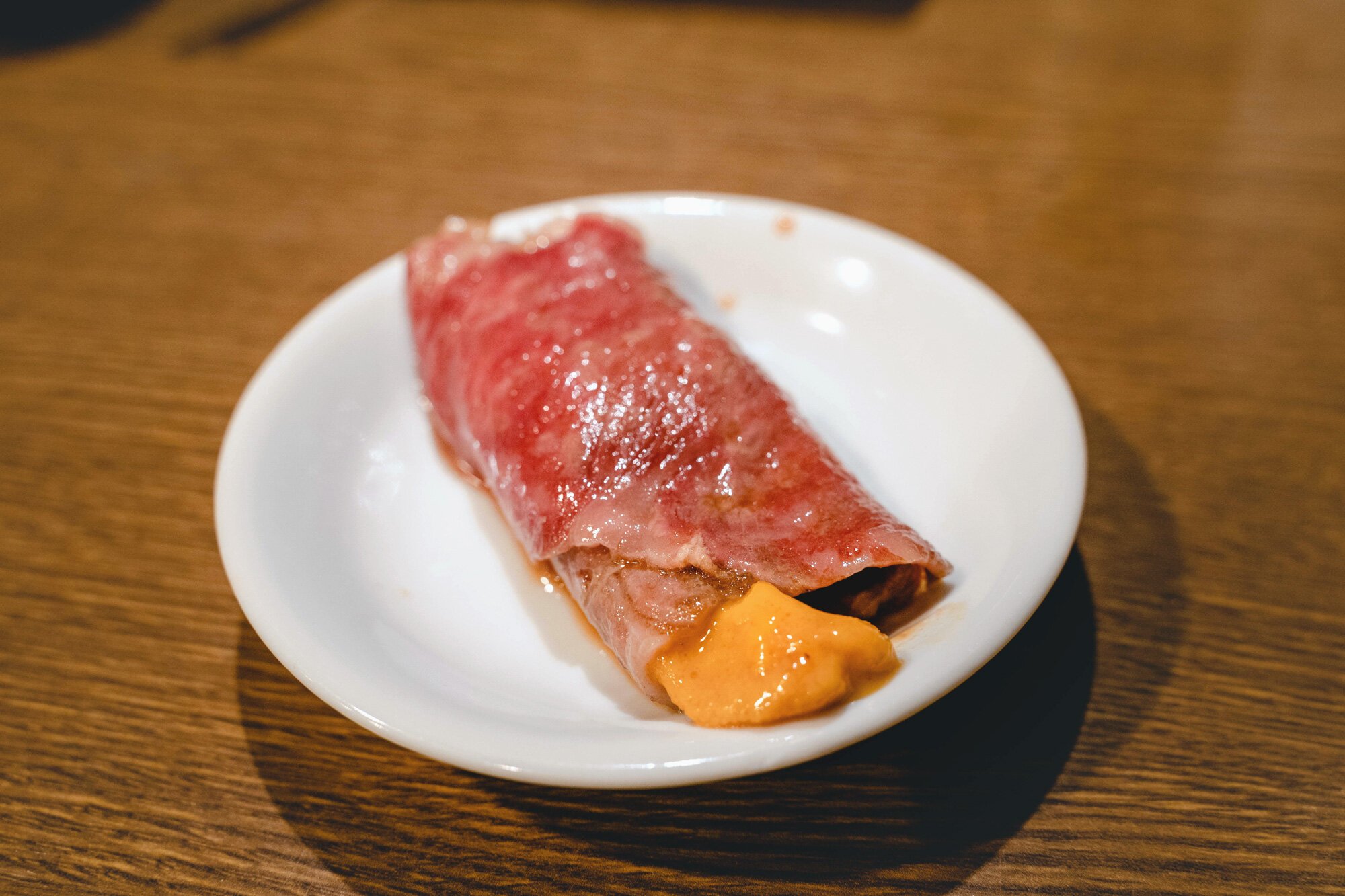
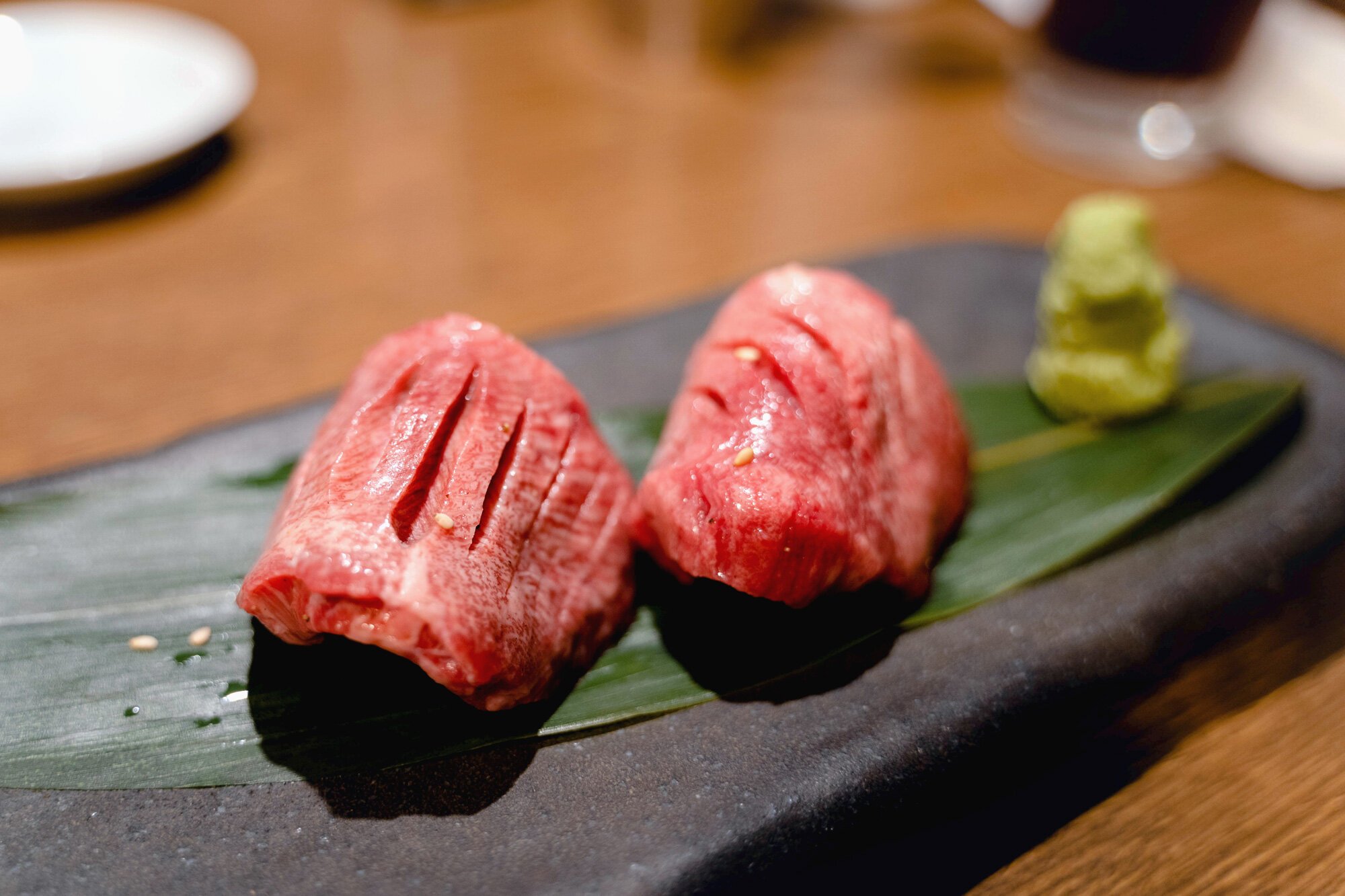
Itadaki is a yakiniku restaurant that specializes in Tajima and Kobe Wagyu beef.
Rated as a very popular yakiniku resturant on Japanese review app Retty, everything here is delicious. The raw beef items may not appeal to everyone, but I highly suggest trying them out as well.
Like most good yakiniku spots, it can get a bit pricey (uni-topped loin is 2,500 JPY / ~ USD $23) but I definitely recommend trying this place out if you’re looking for some good yakiniku in the area.
Unison Tailor
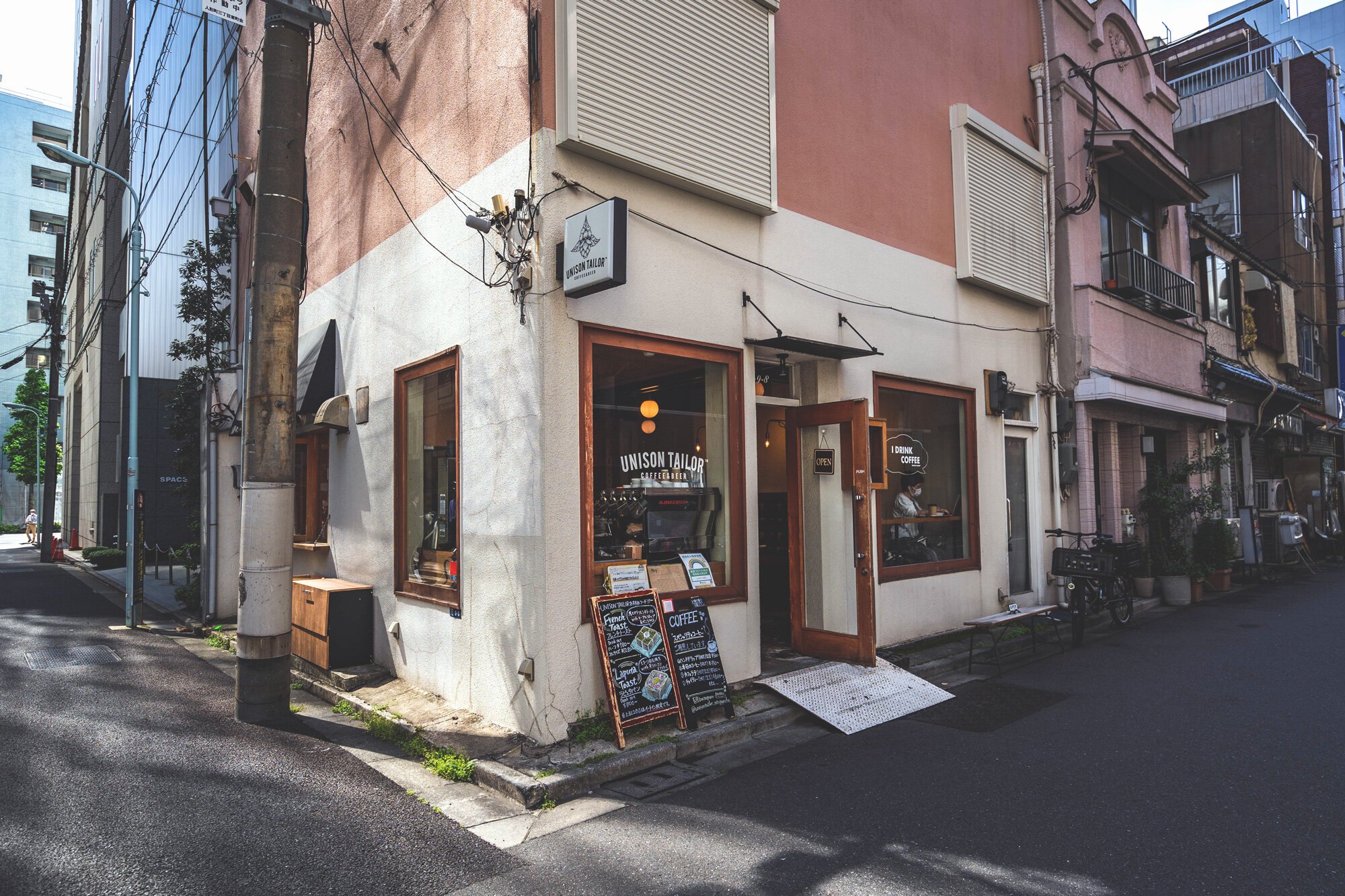
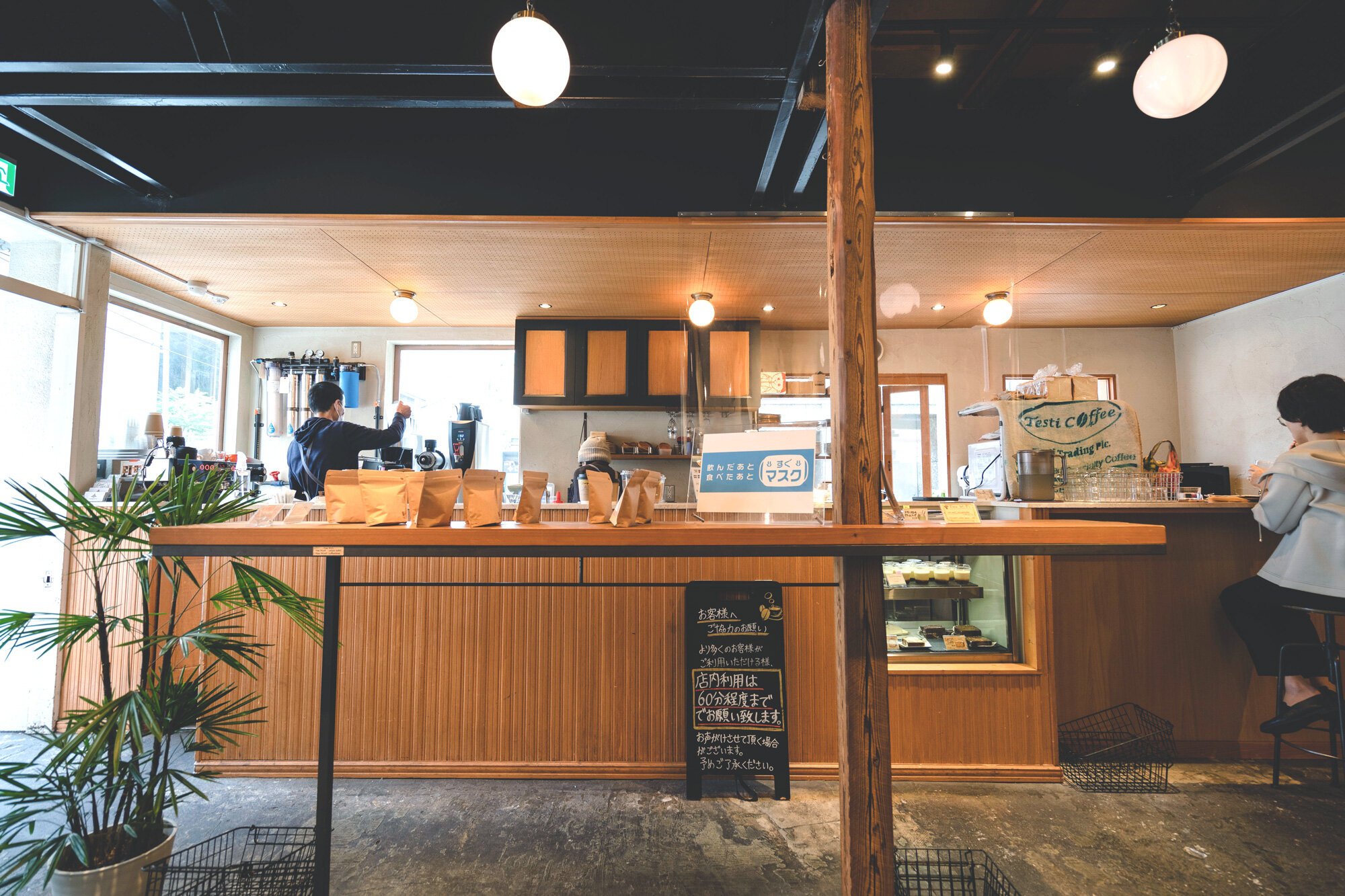
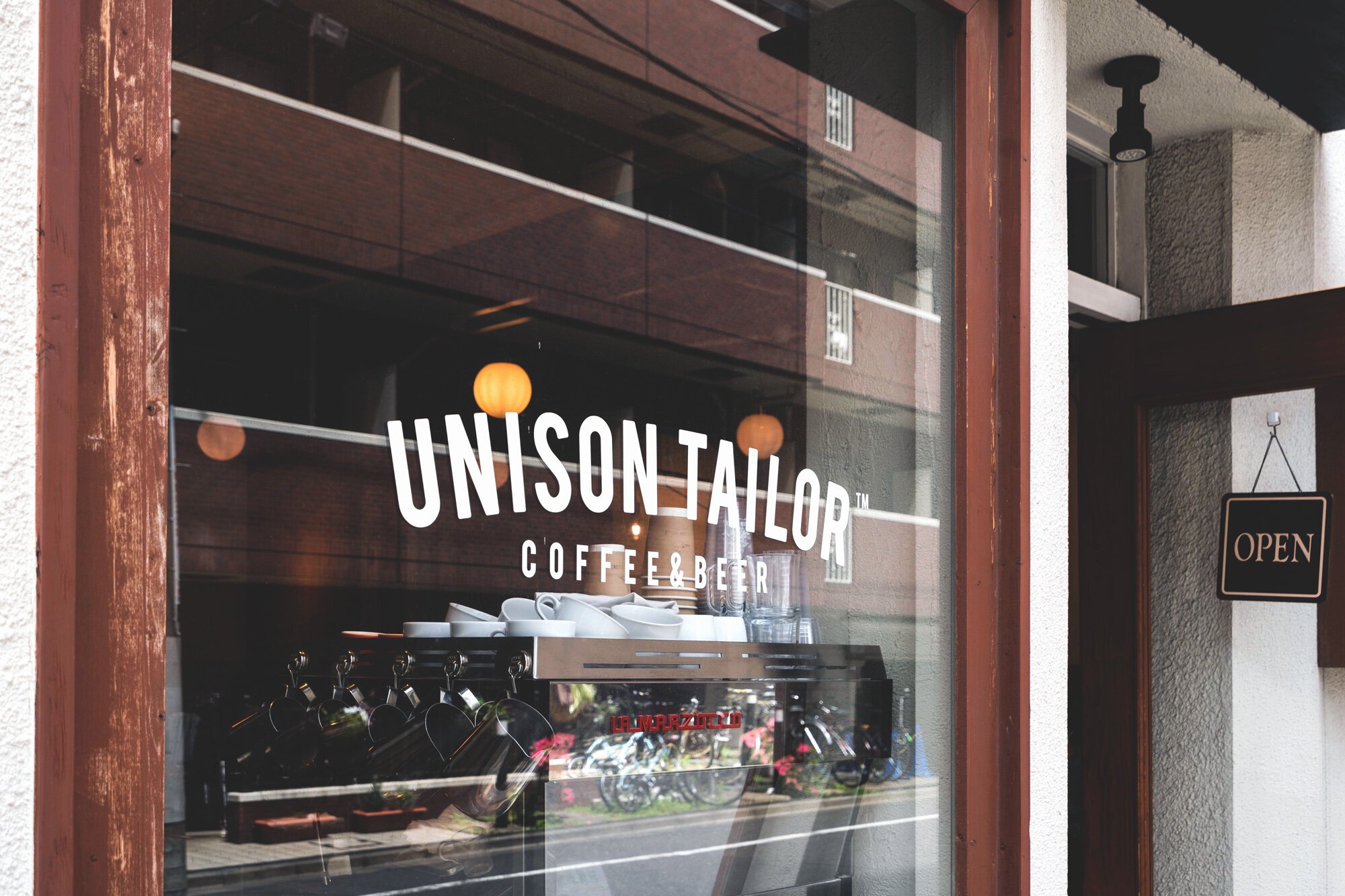
If you’re walking around and exploring the neighborhood, you inevitably will need to take a break. We took ours at Unison Tailor, a small coffee shop.
The shop has a several tables and a small bar counter facing the window. Their menu ranges from baked goods to hot dogs and toast.
We stopped for cups of coffee, which are about 500 JPY (~ USD $4.55), and a flan pudding. Worth hopping in here if you’re looking to take a little break.



















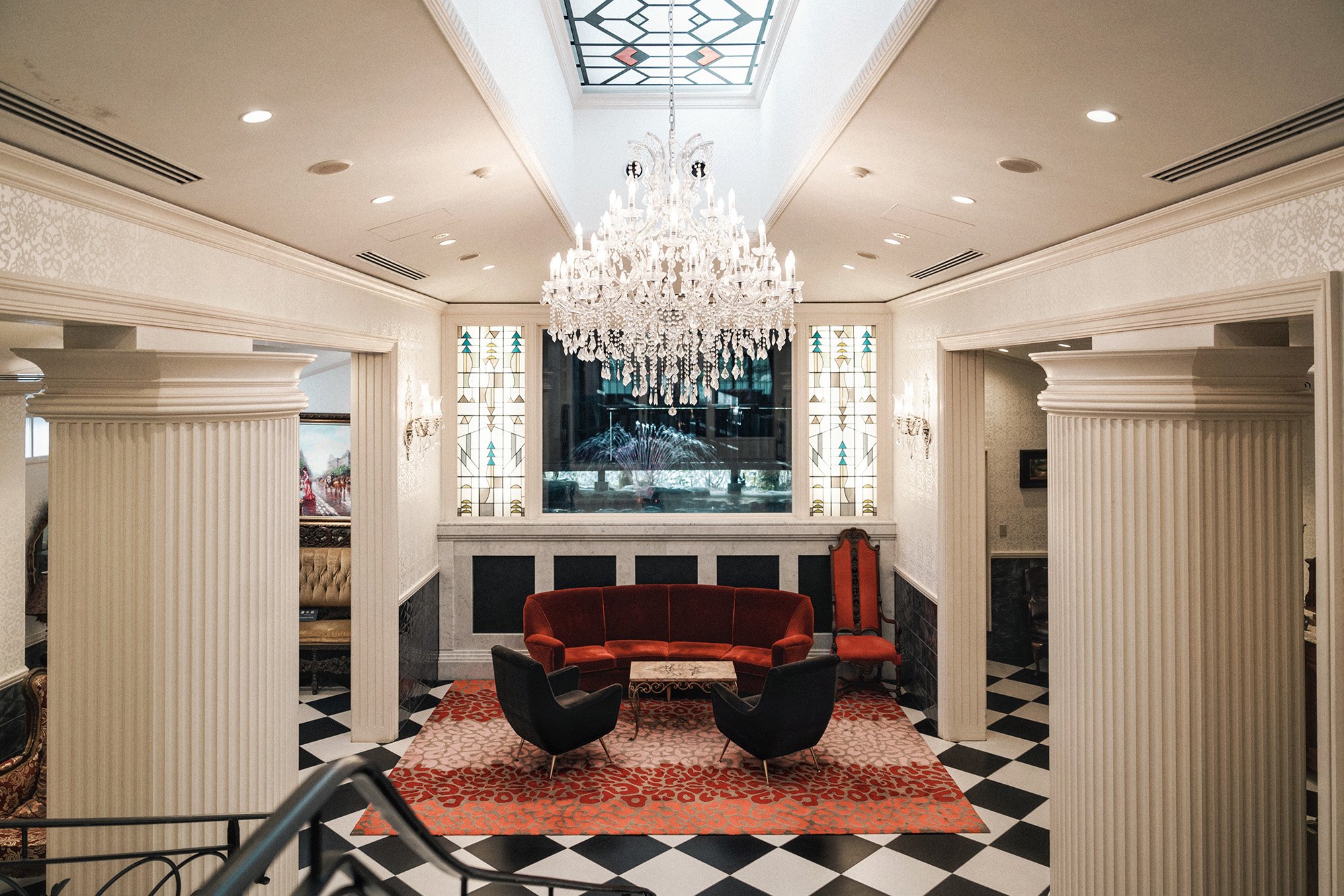























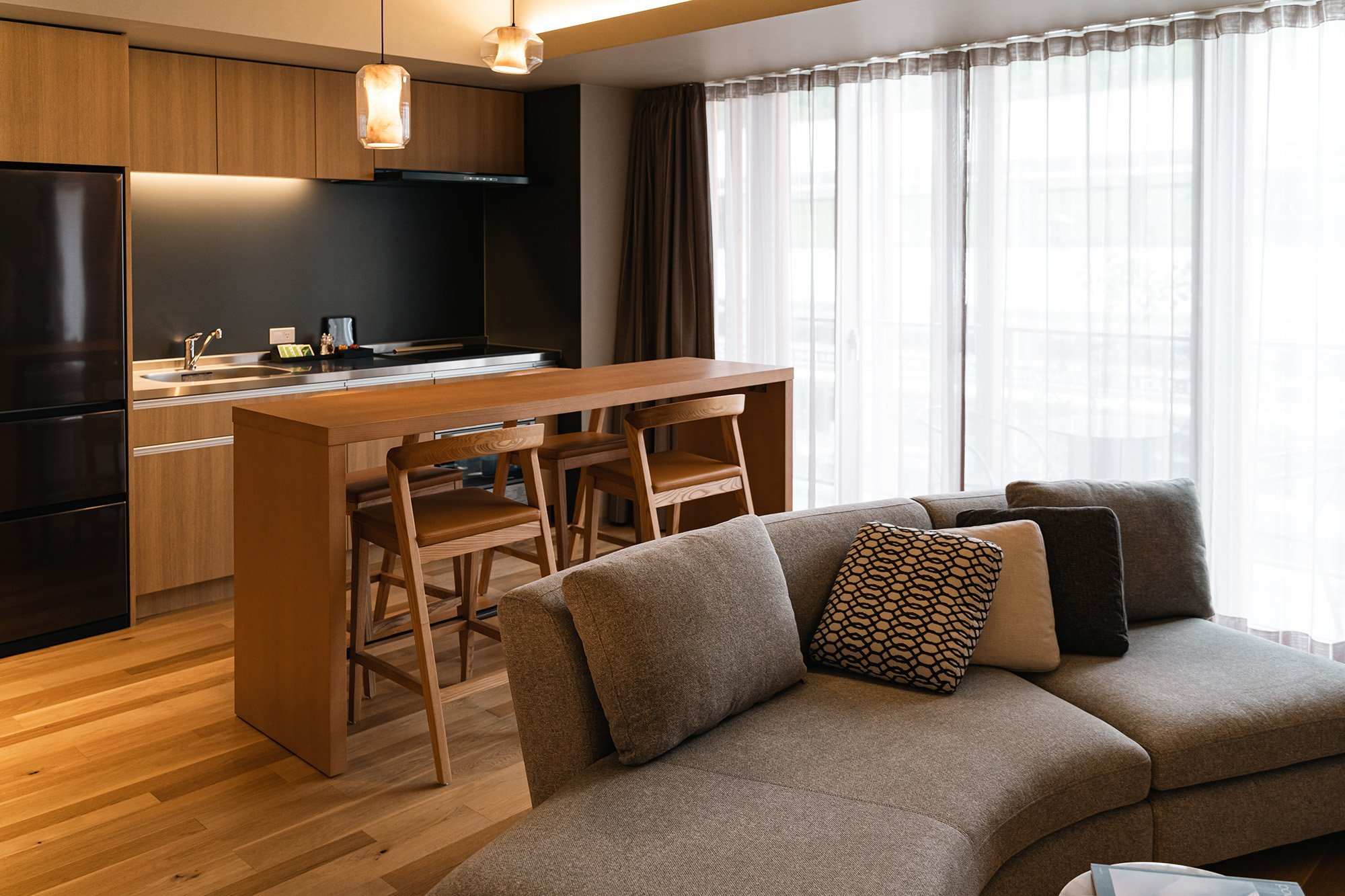
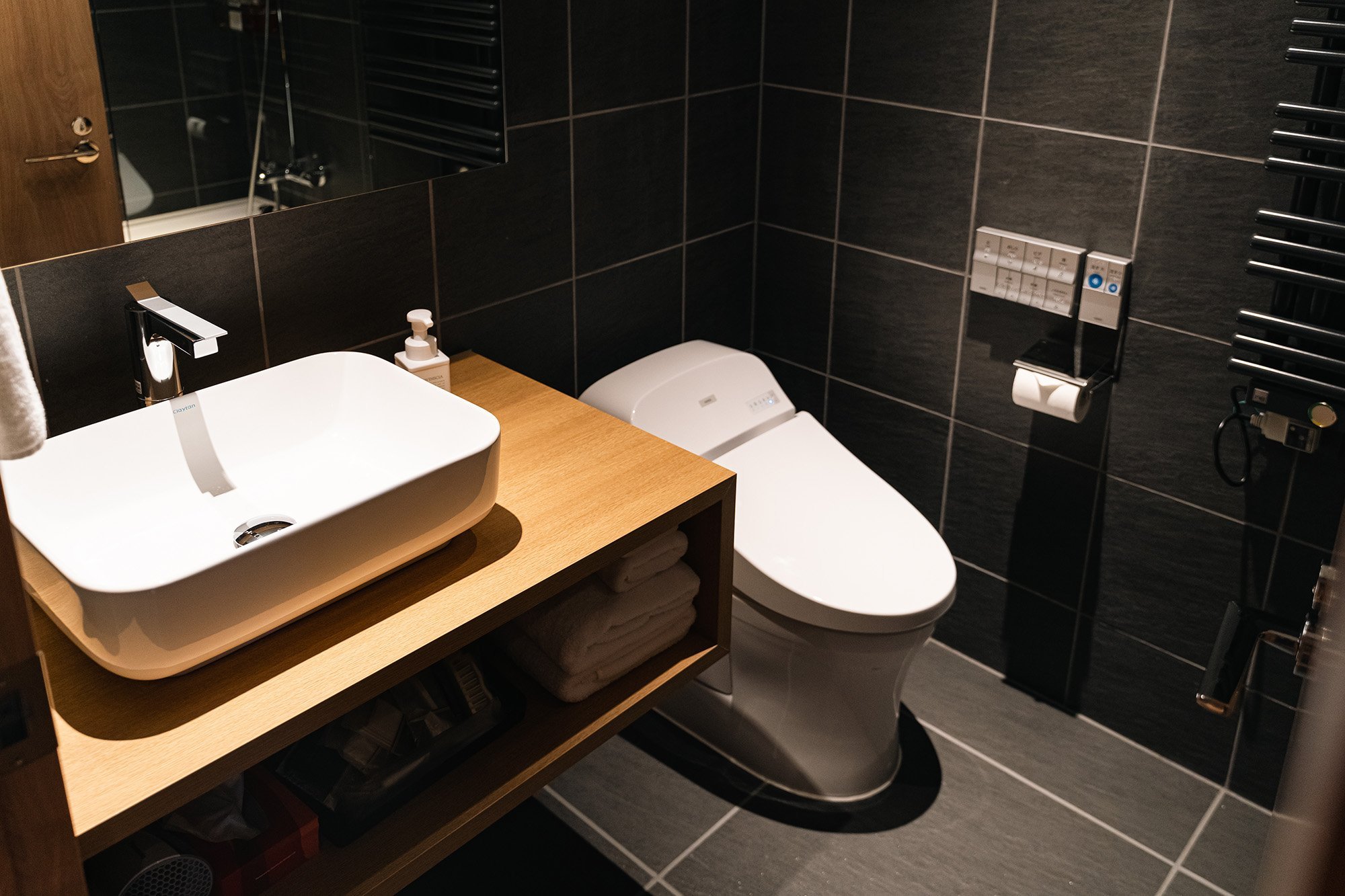
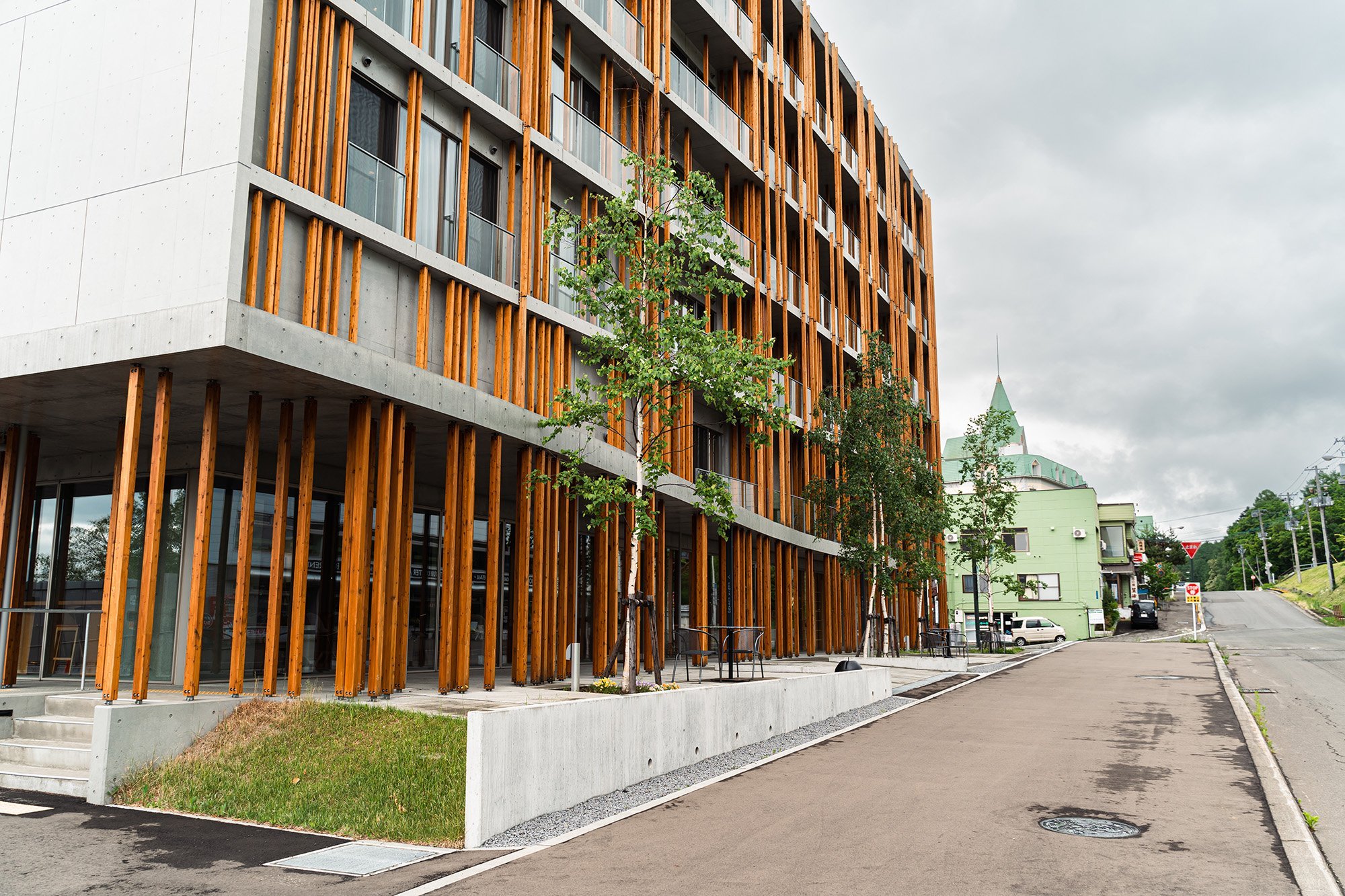


















































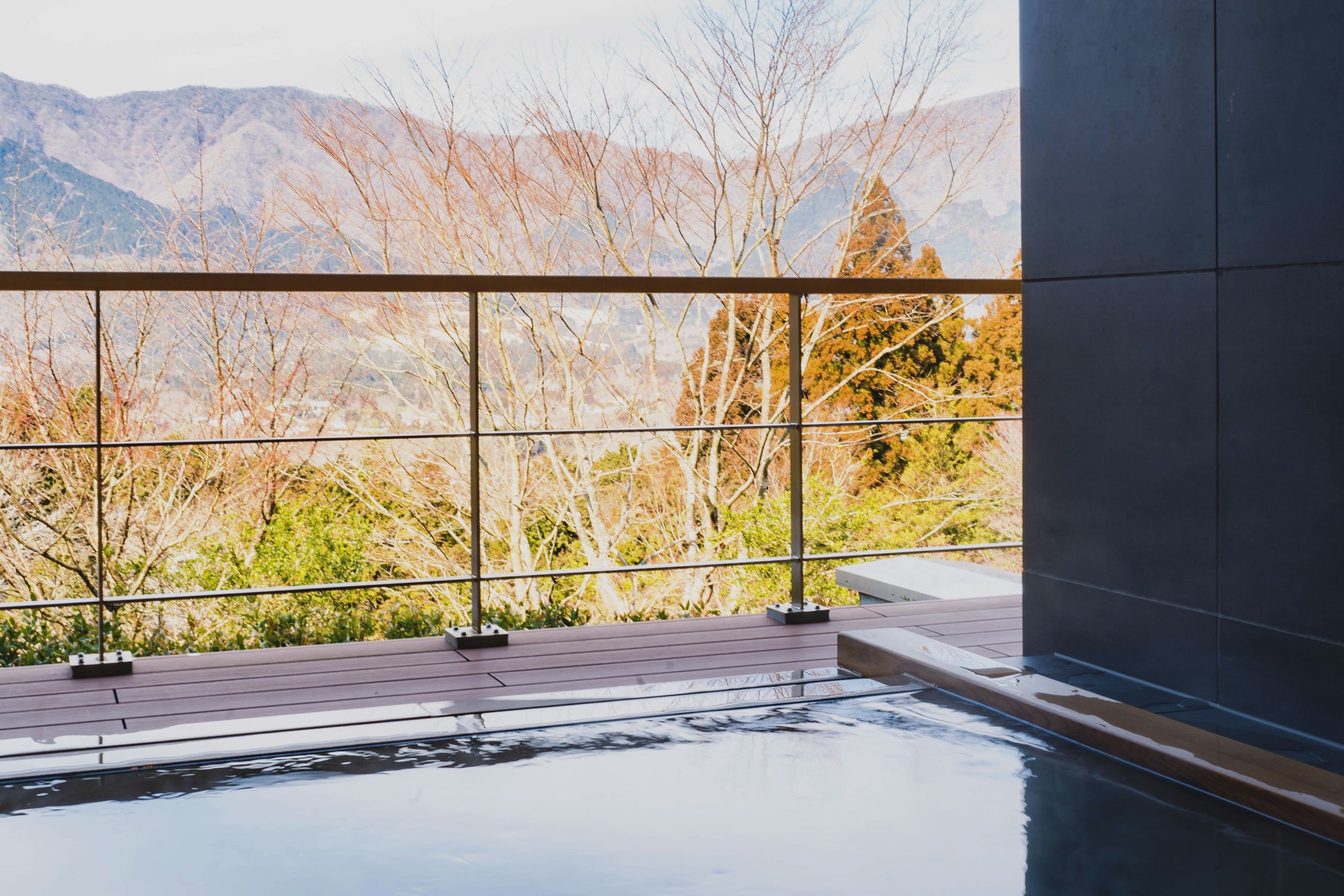


































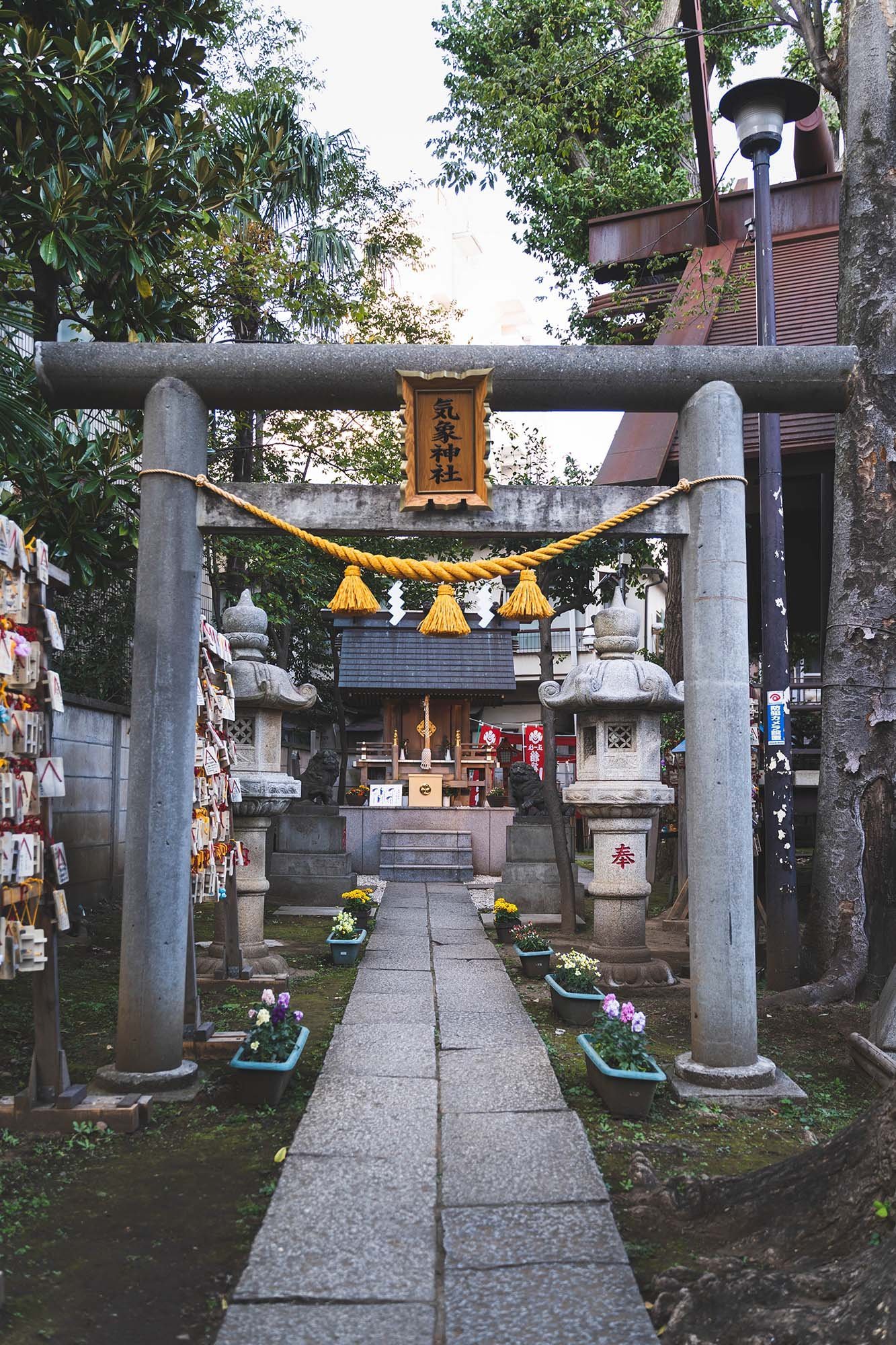
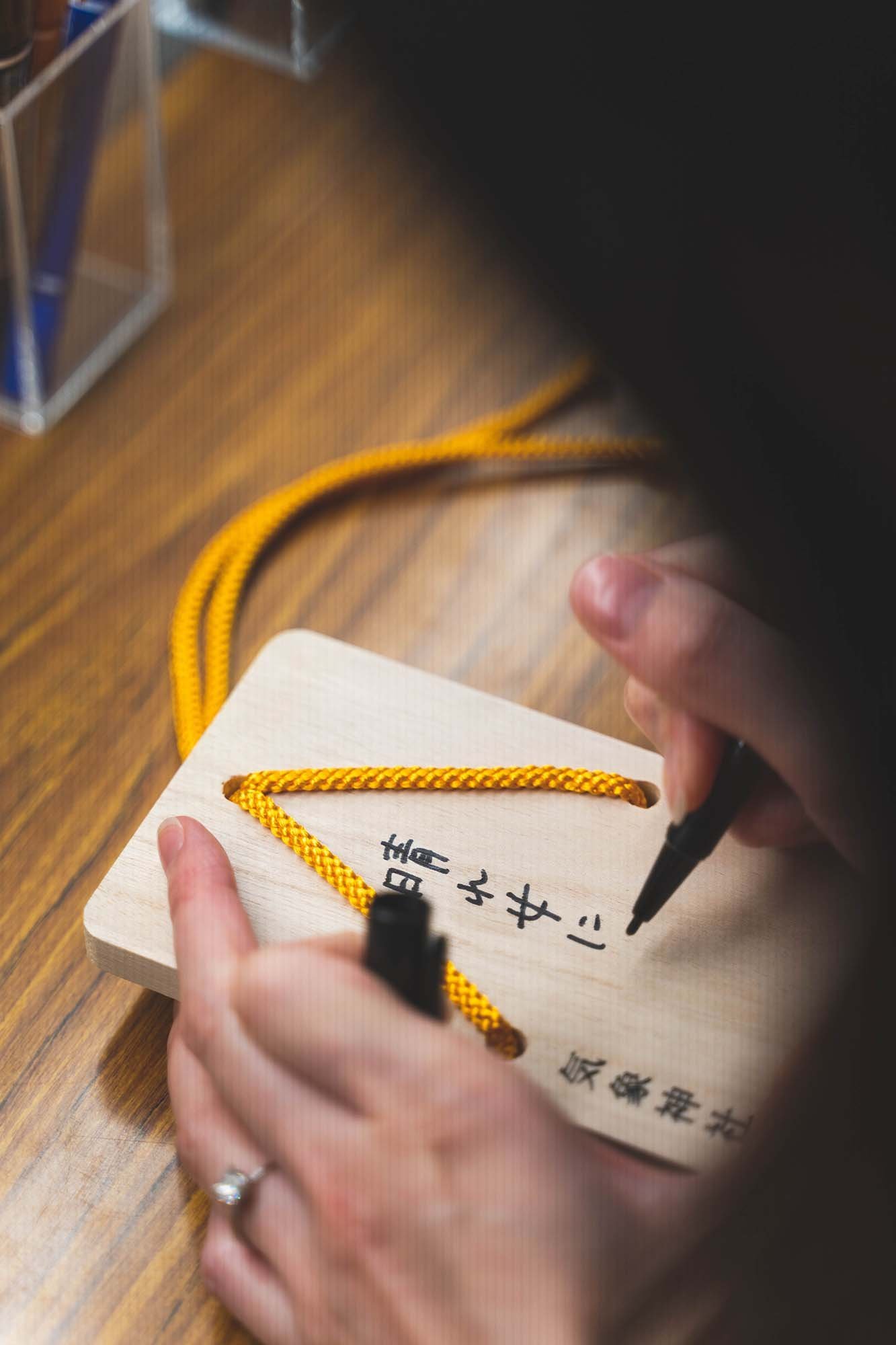









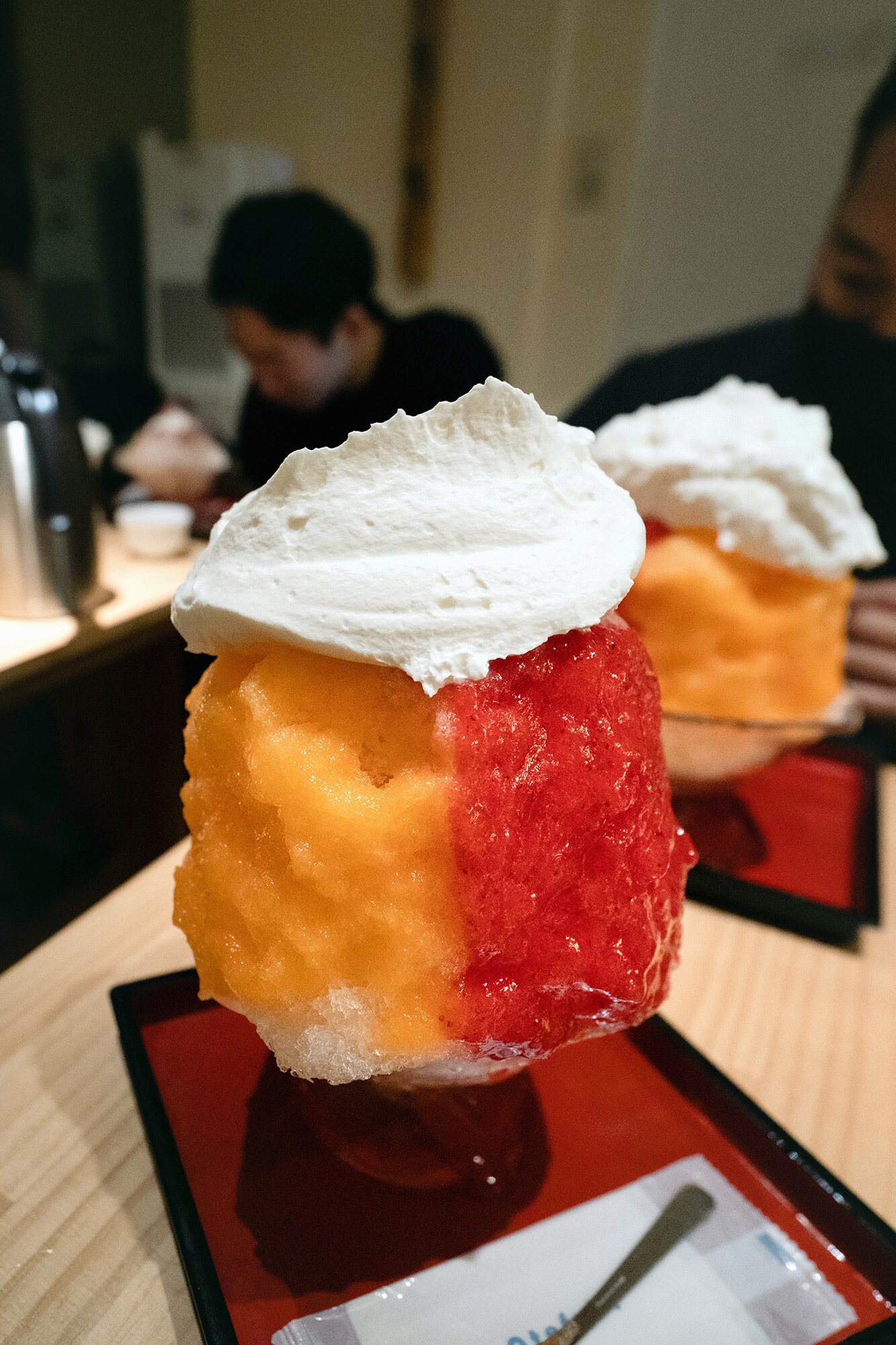
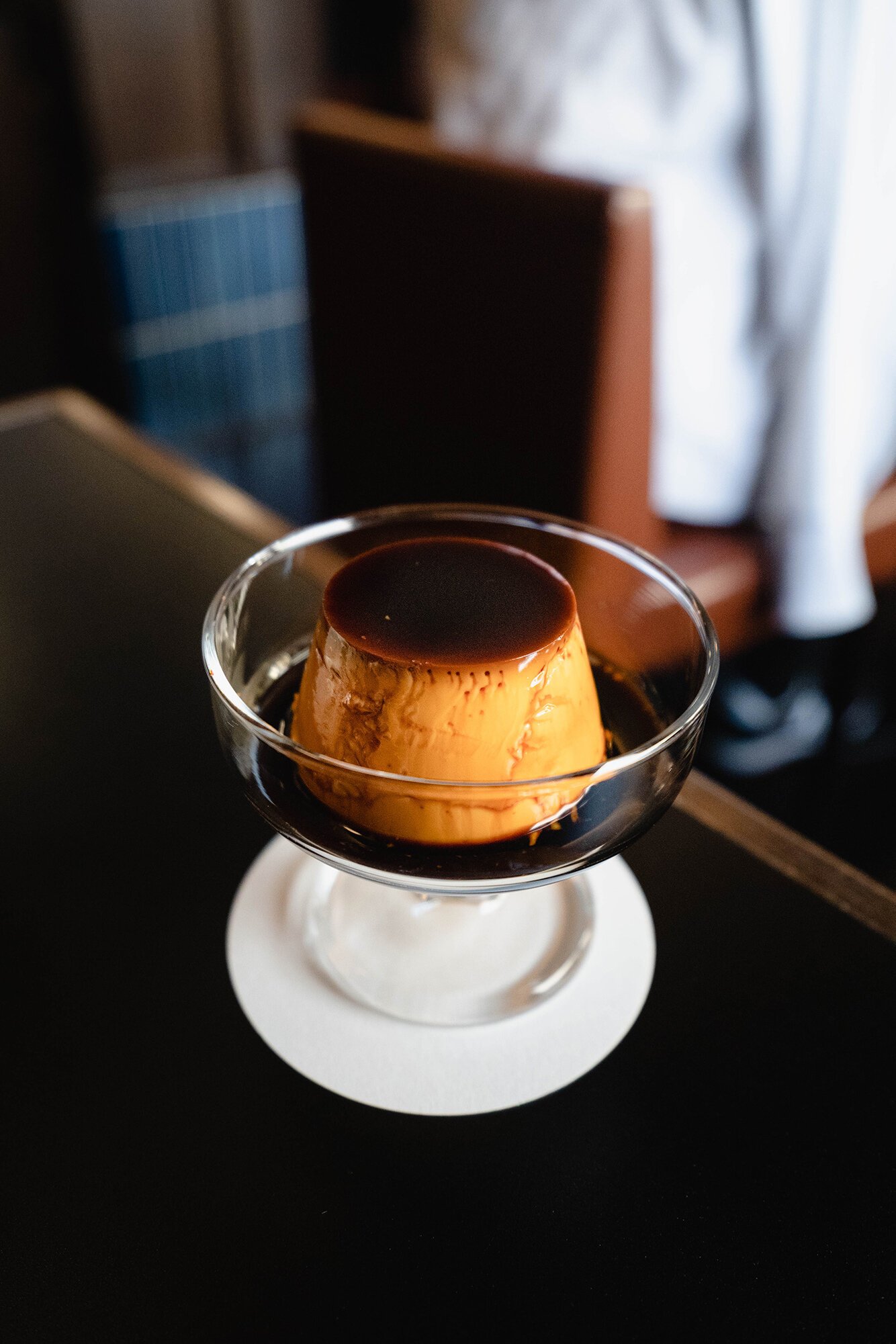






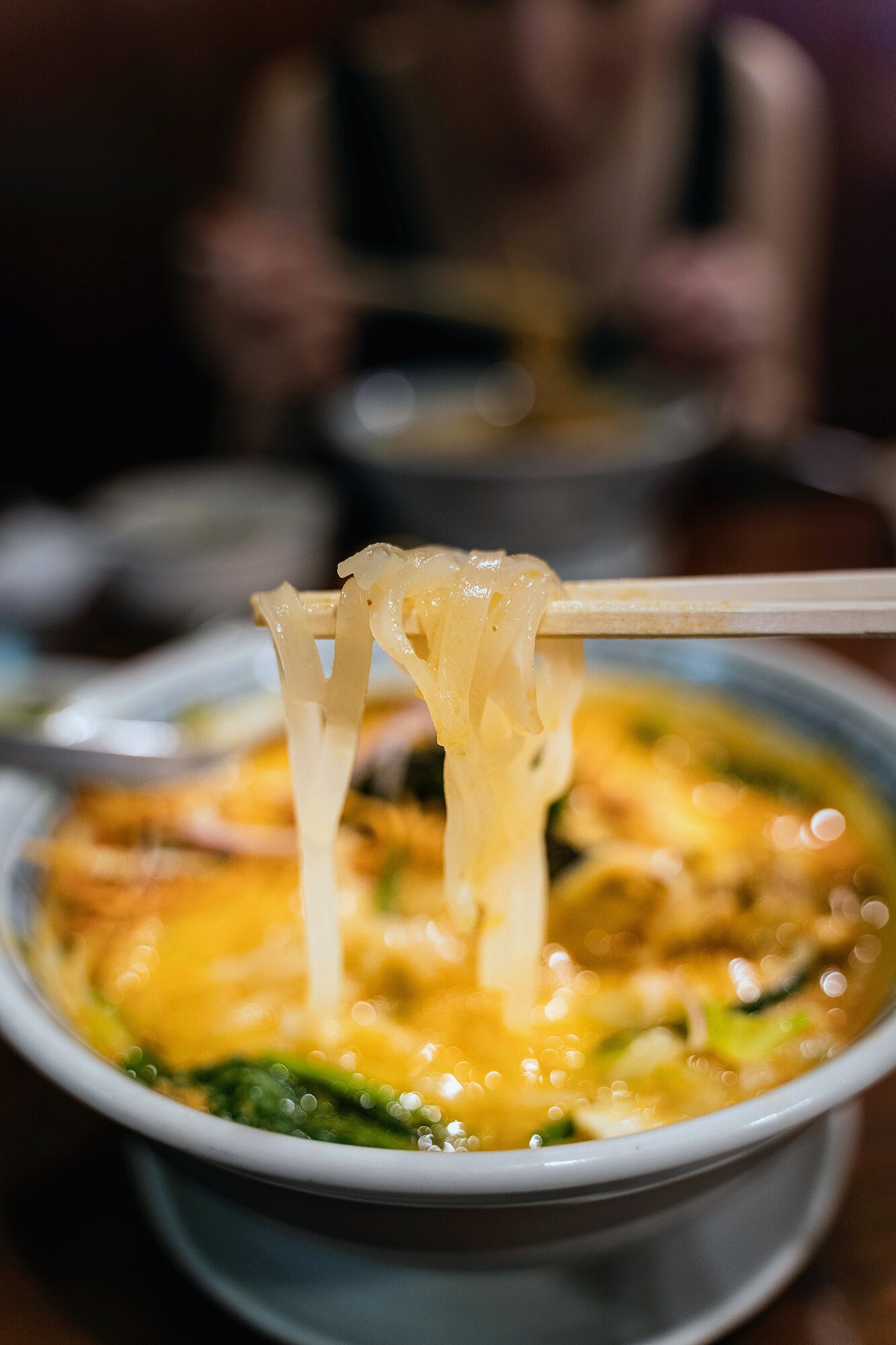








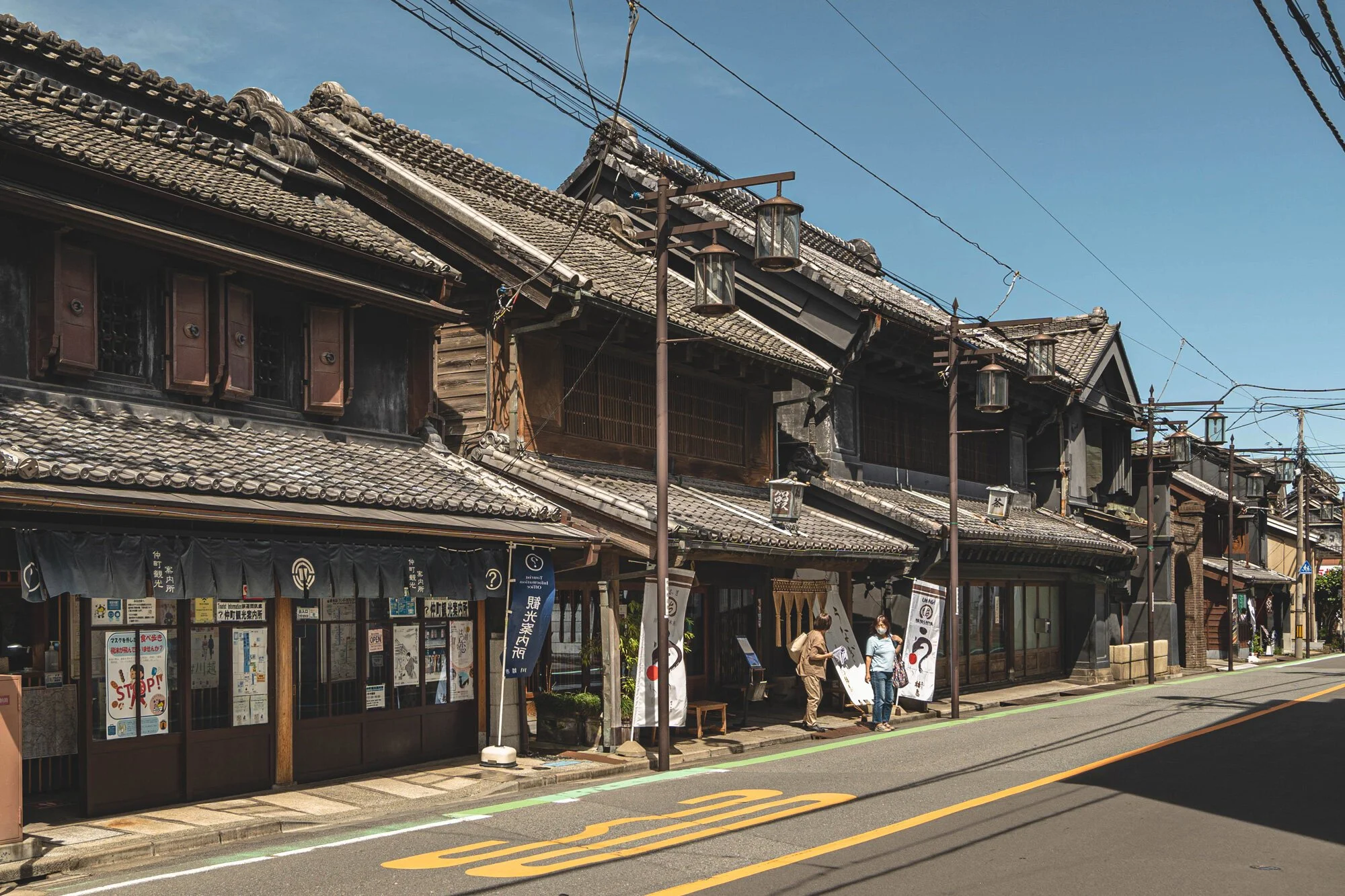

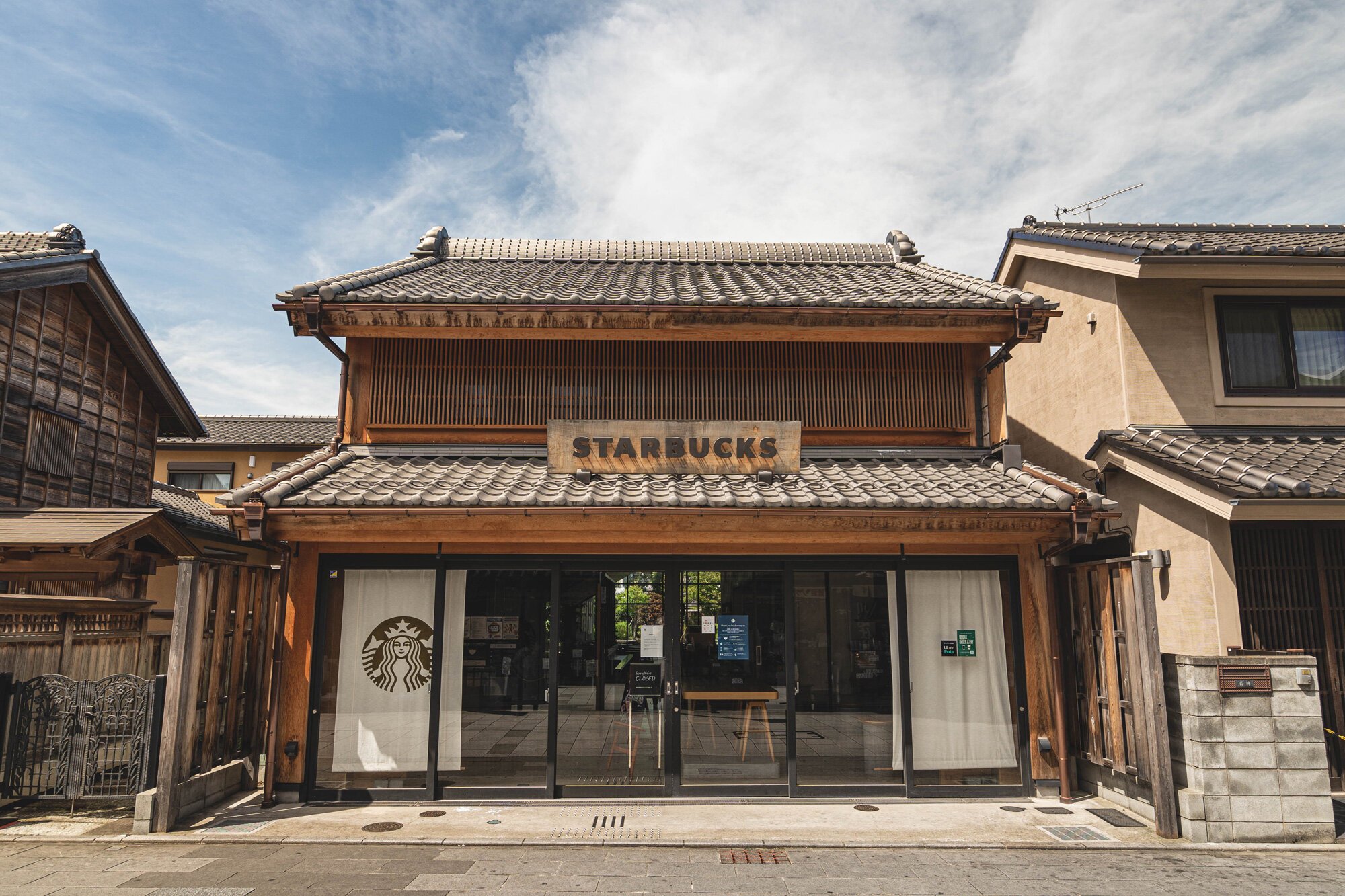






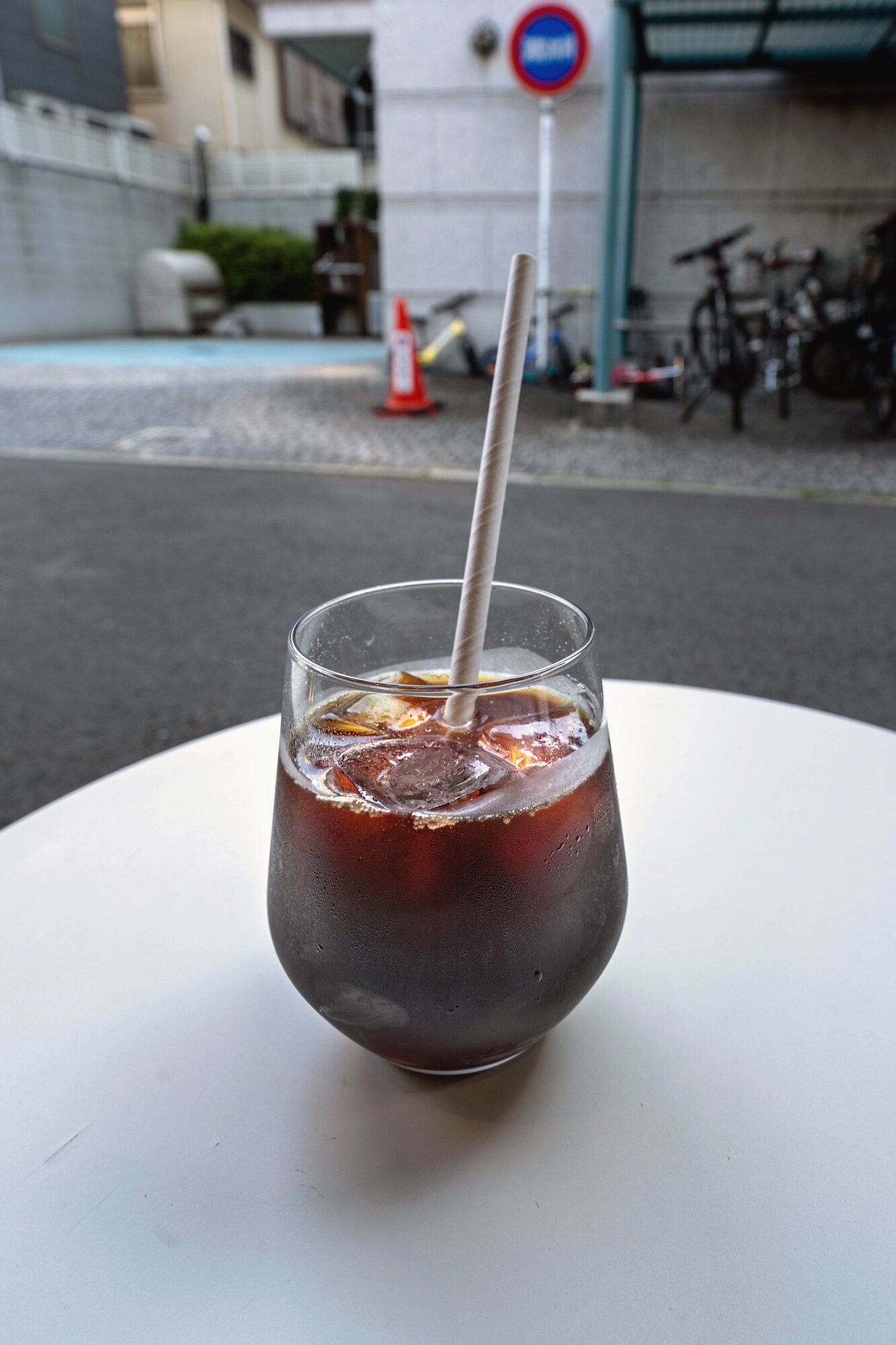
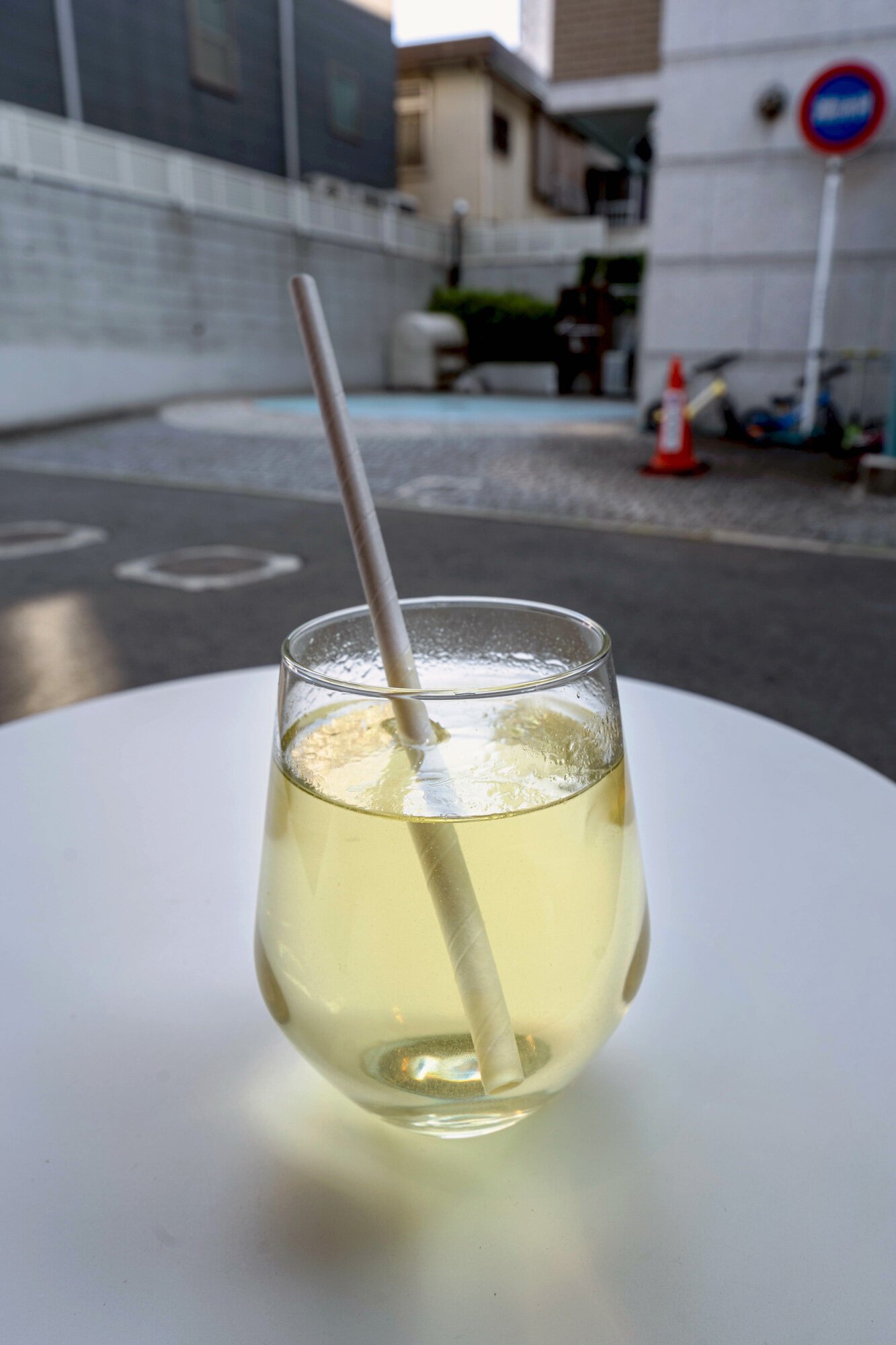

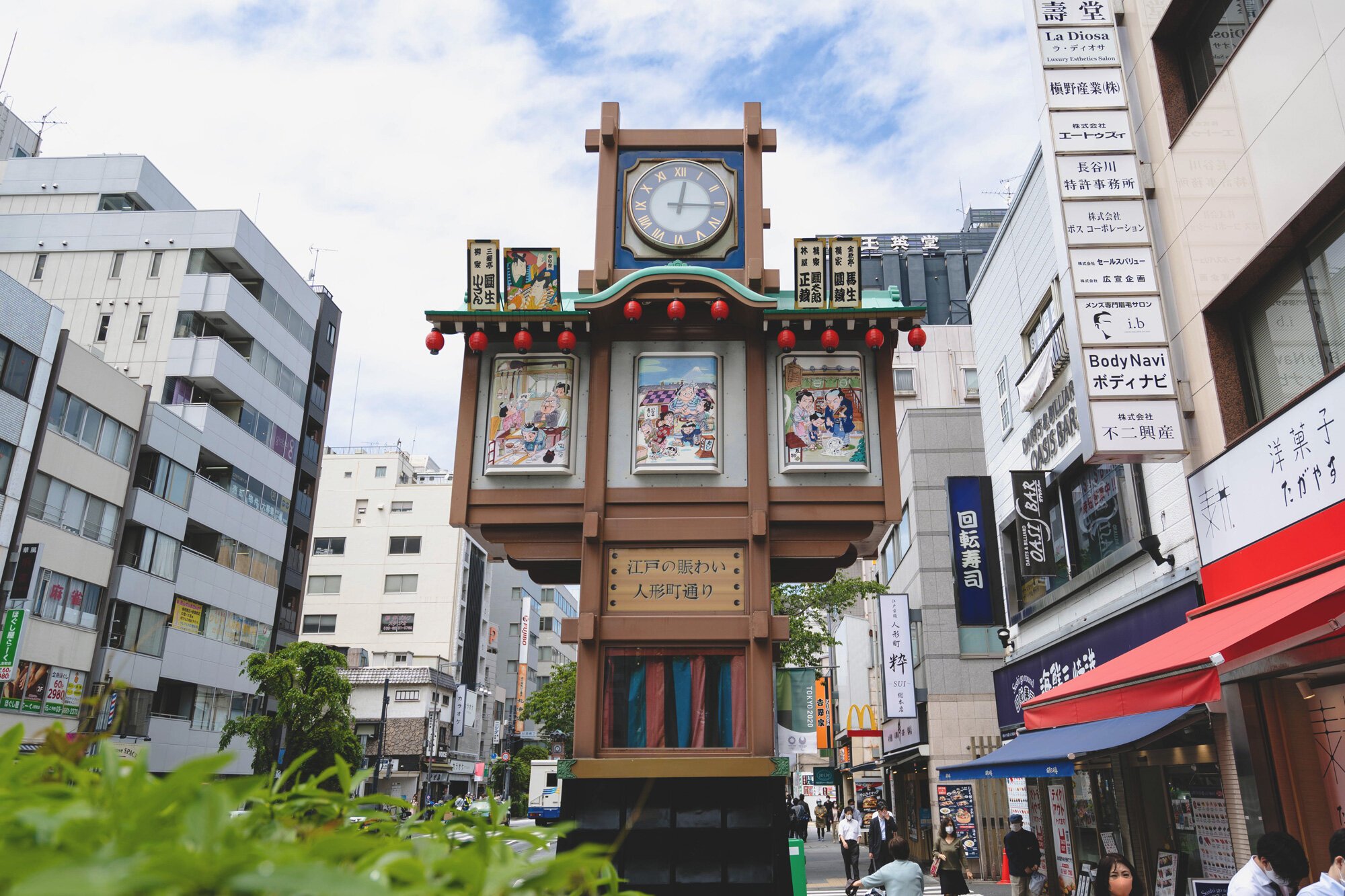


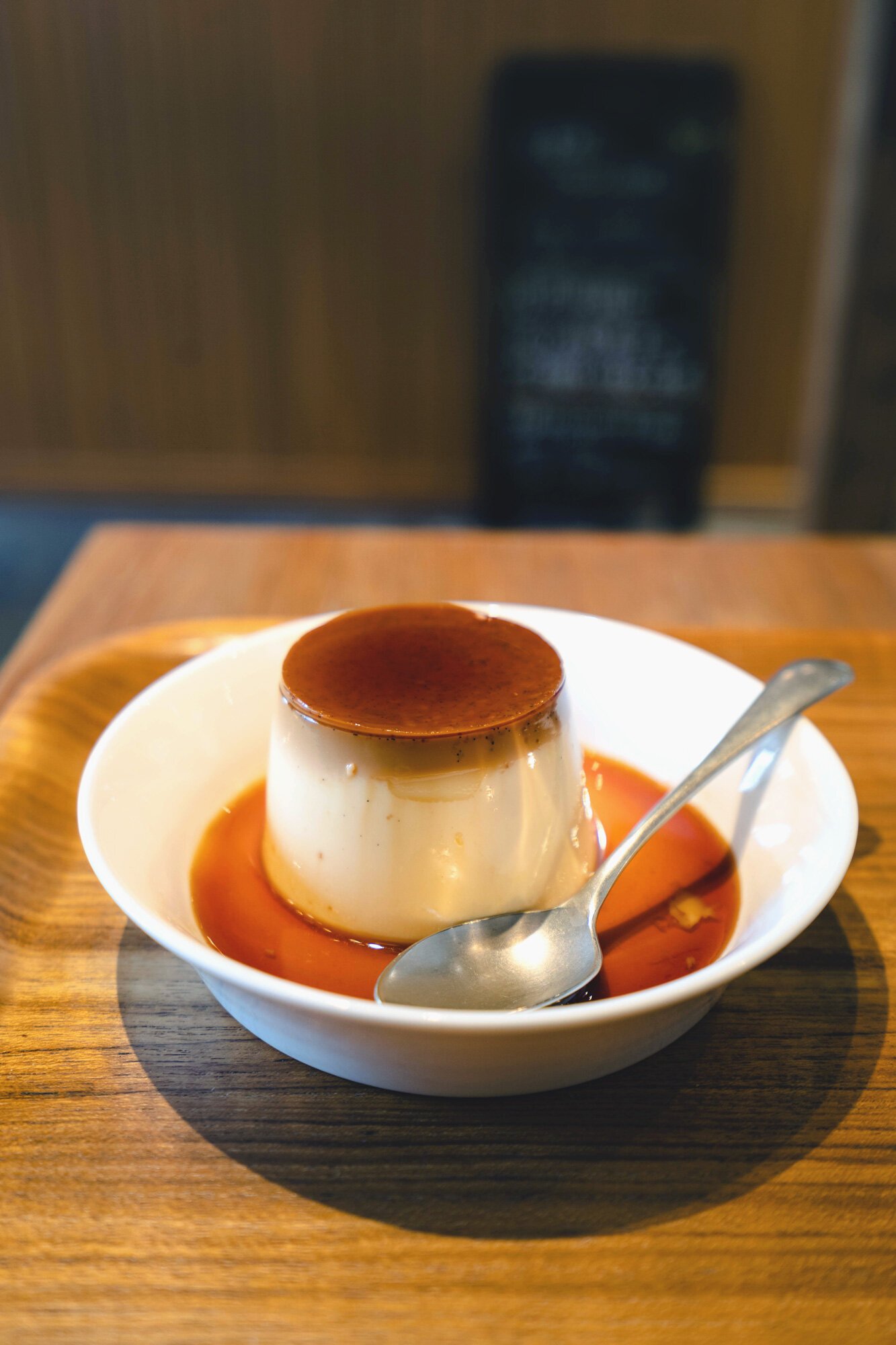
One of Seoul’s most trendy neighborhoods, nicknamed the “Brooklyn of Seoul”.